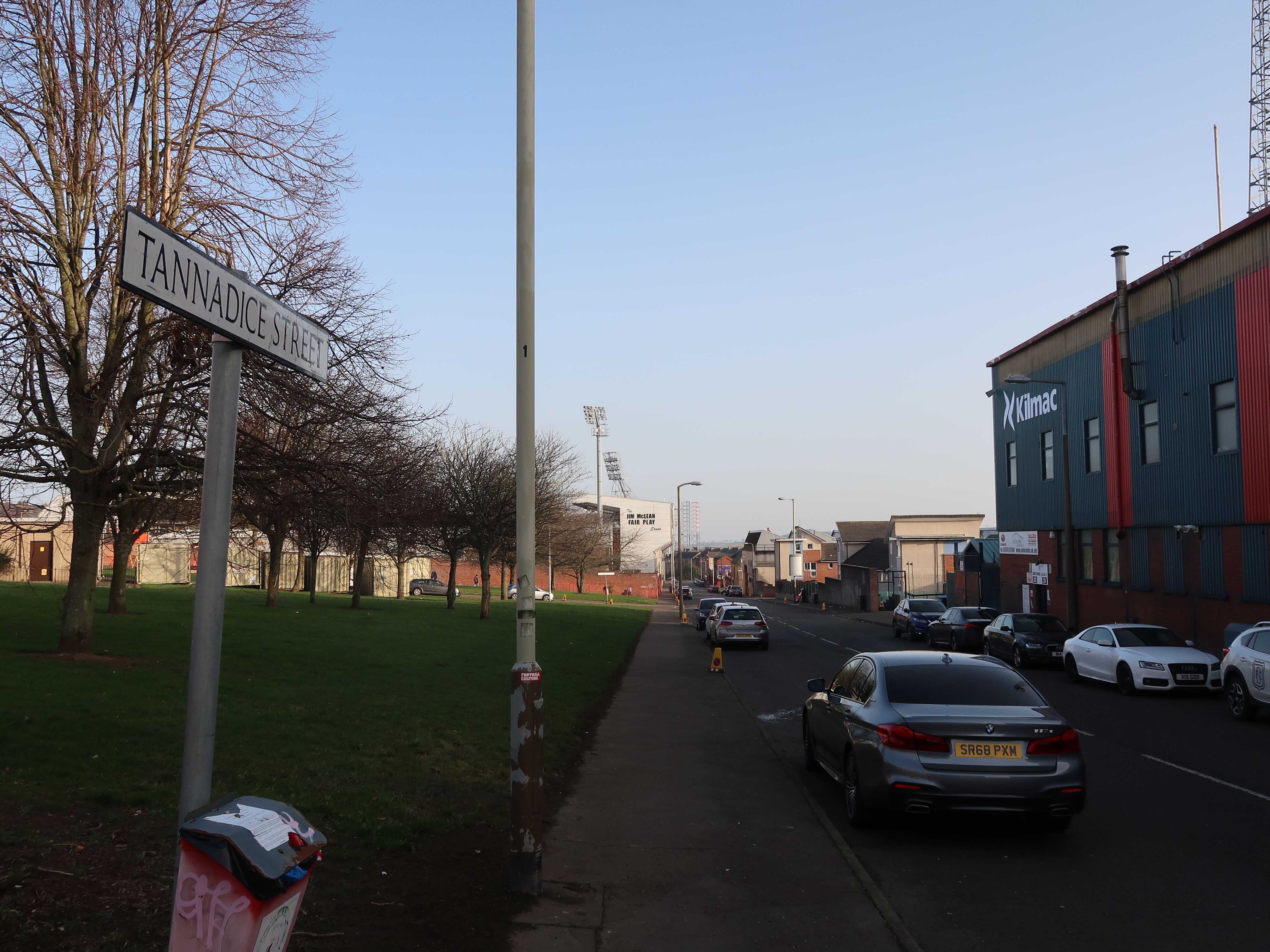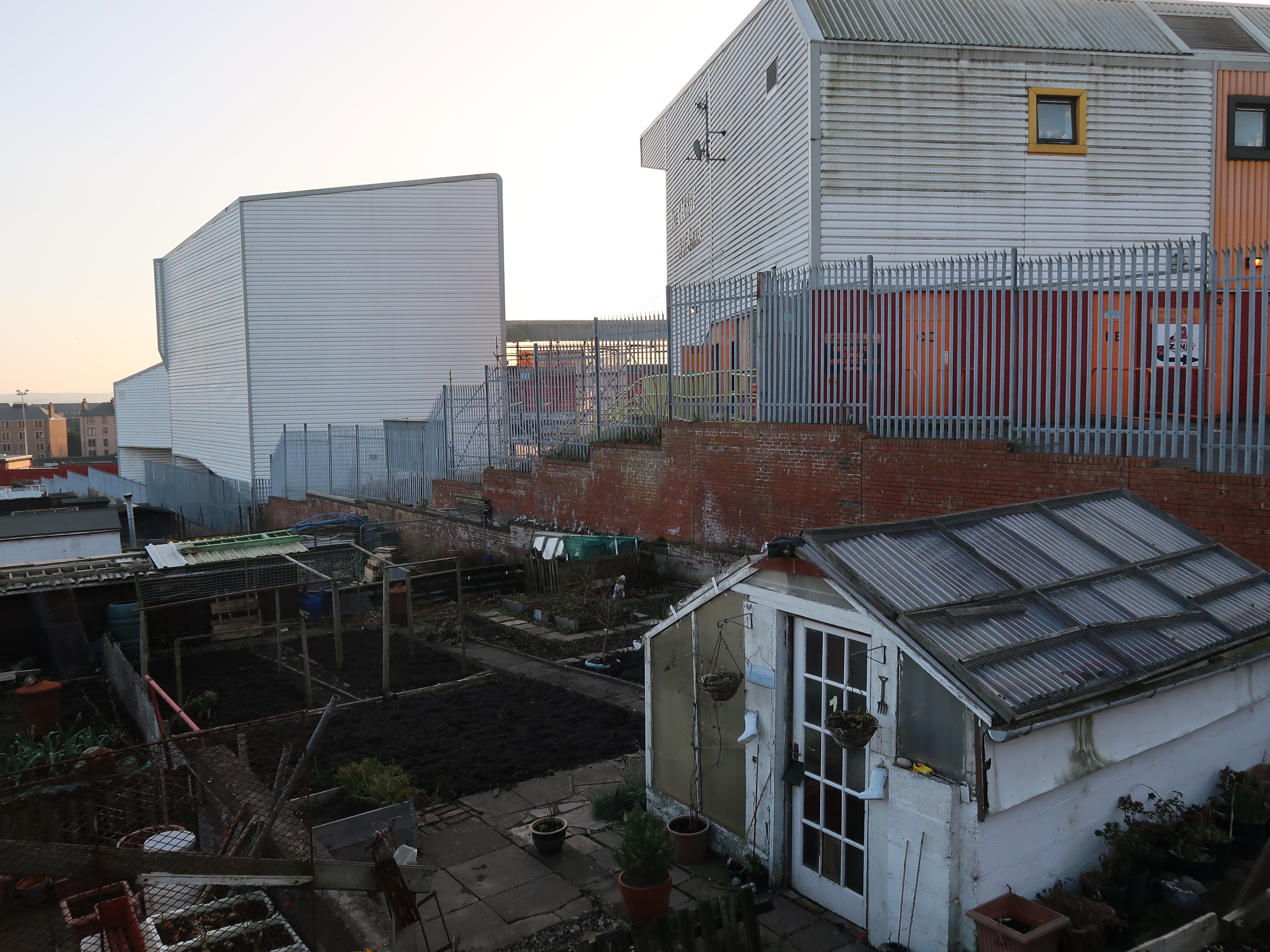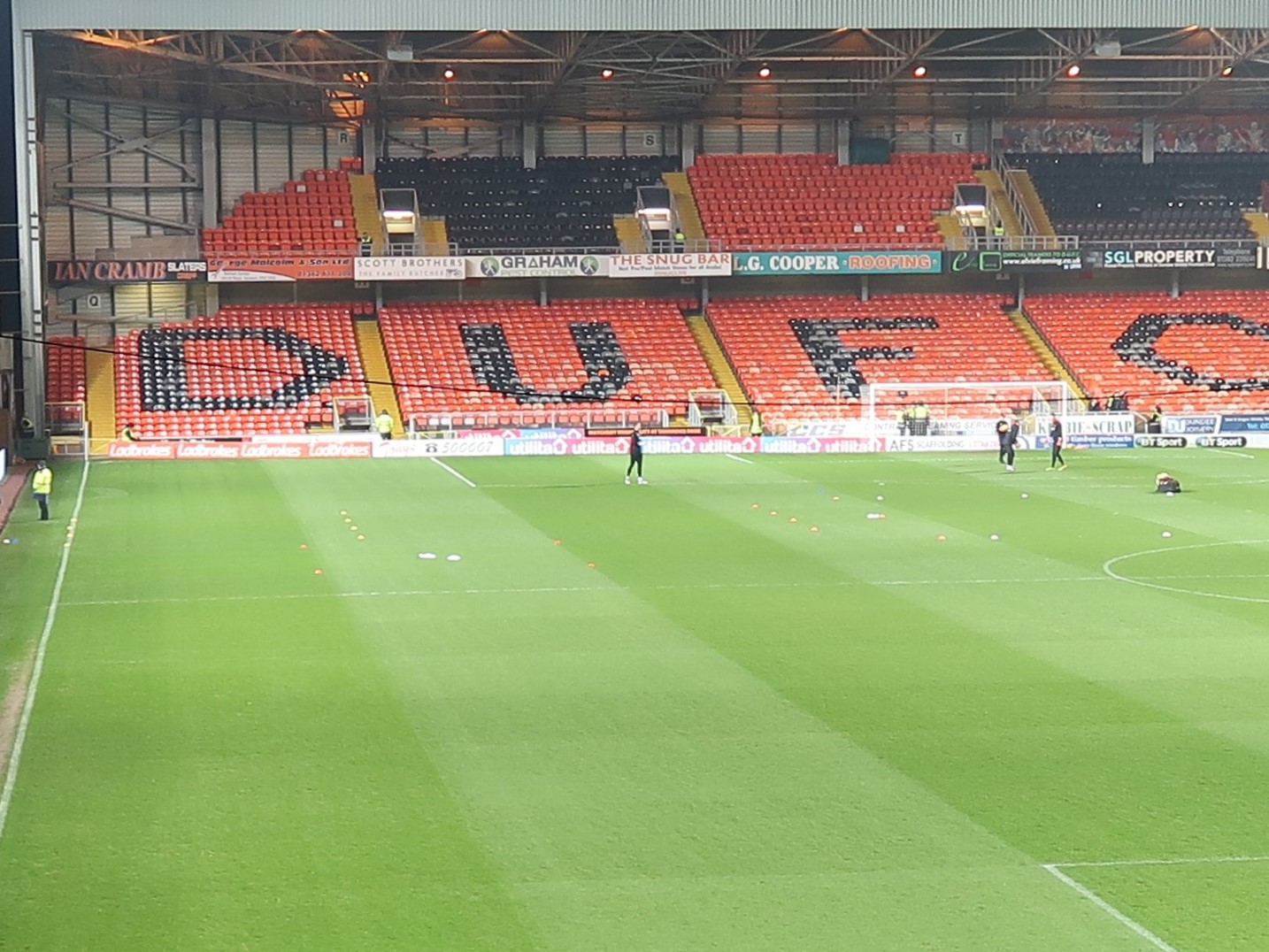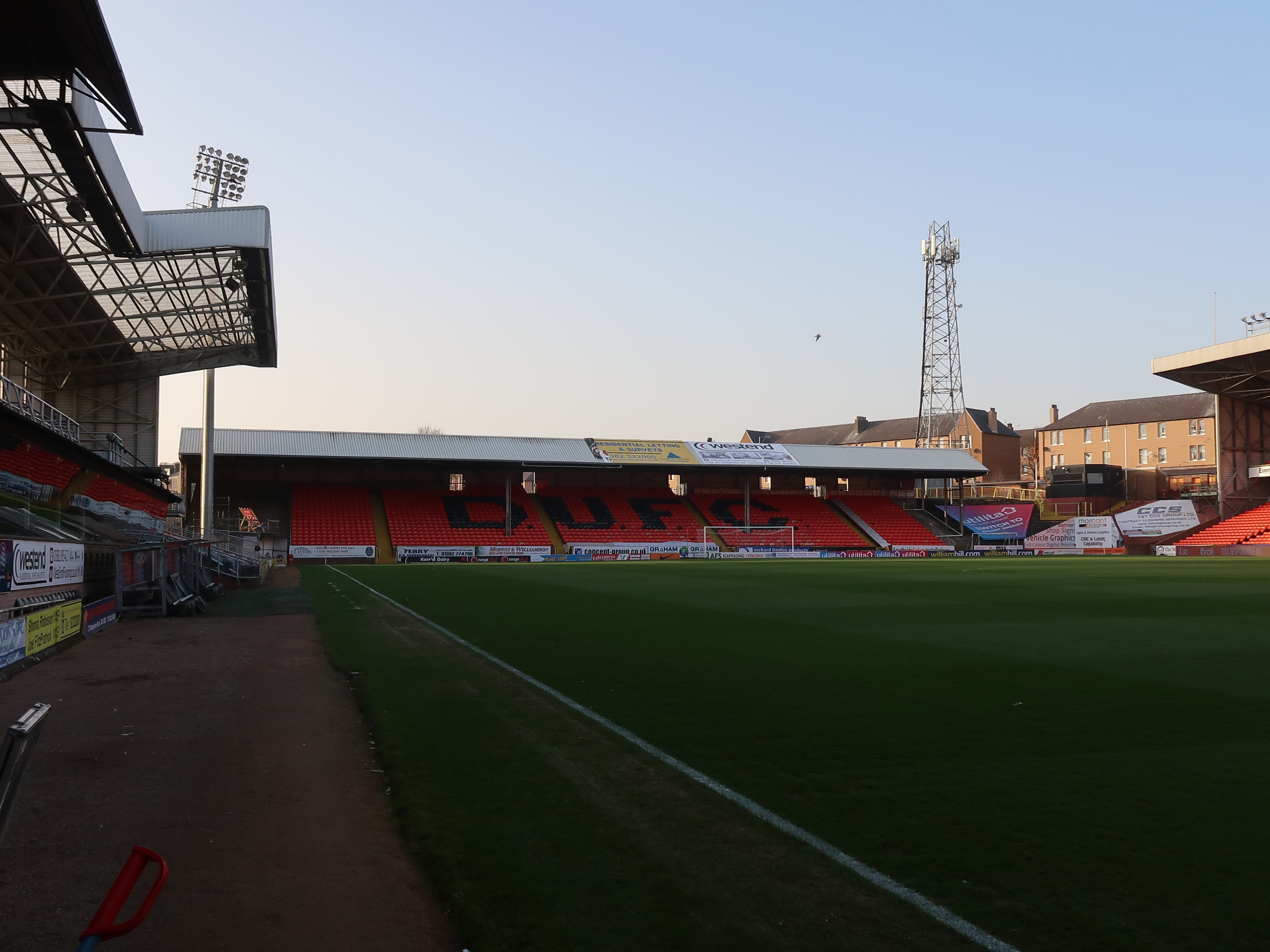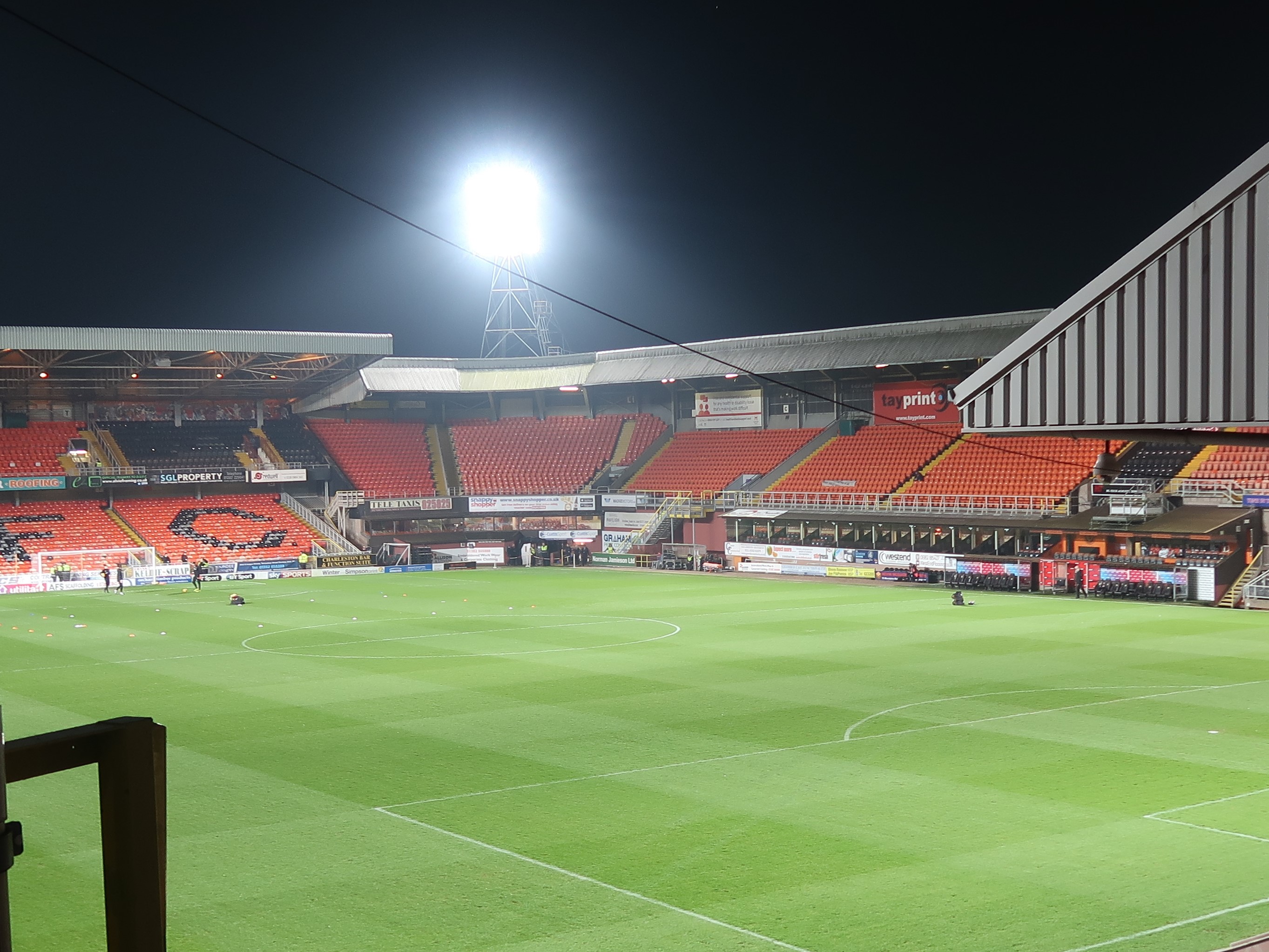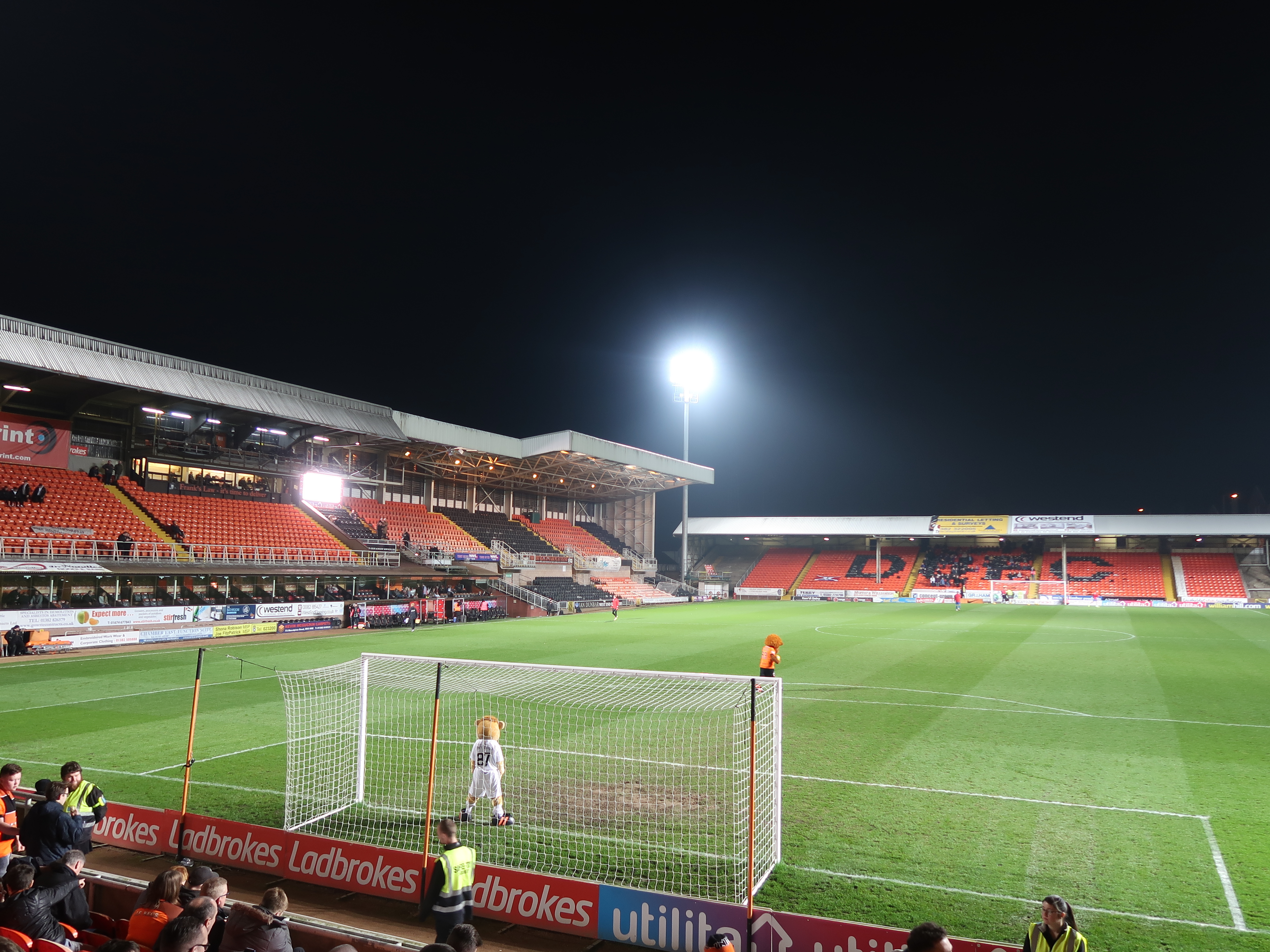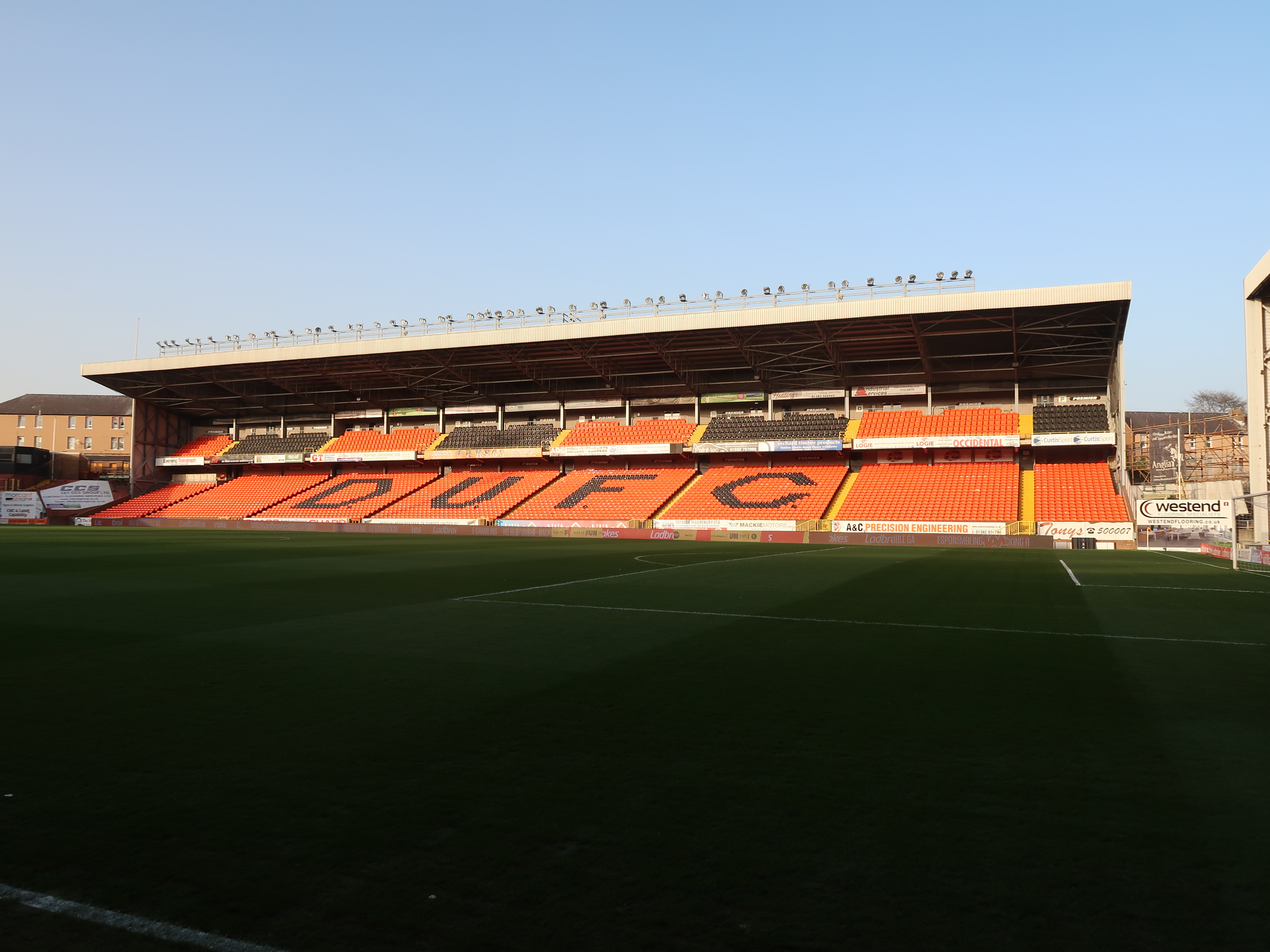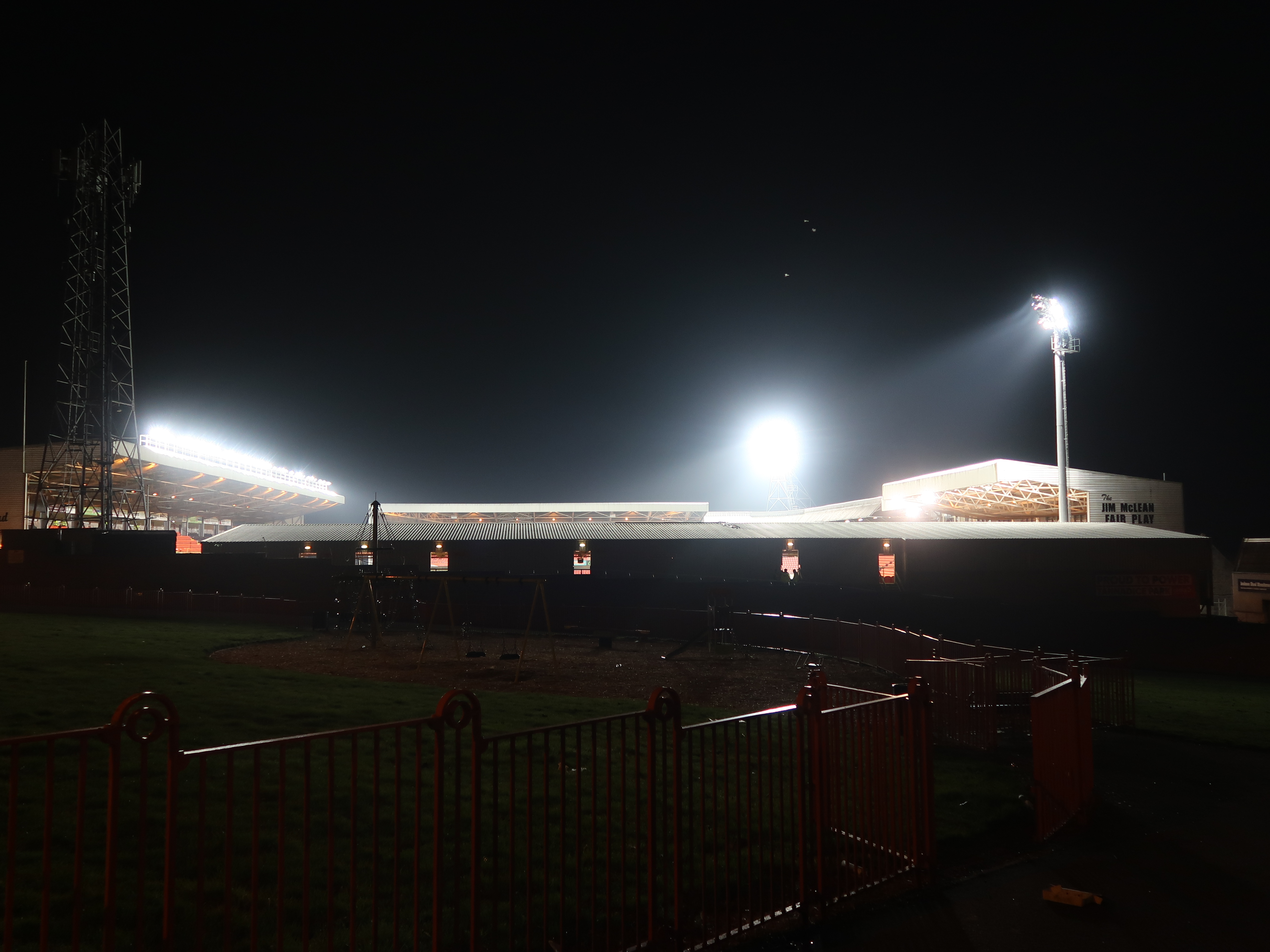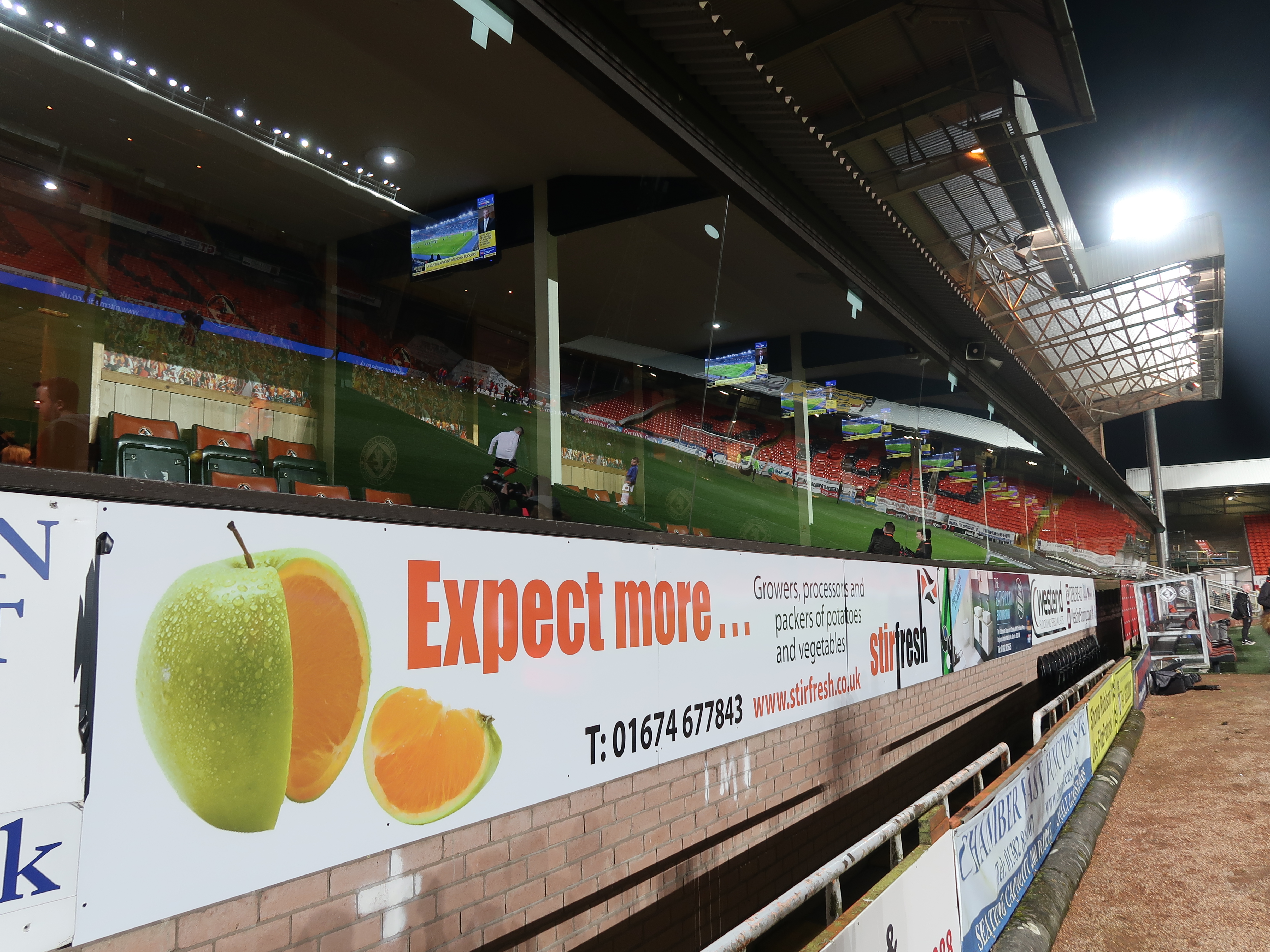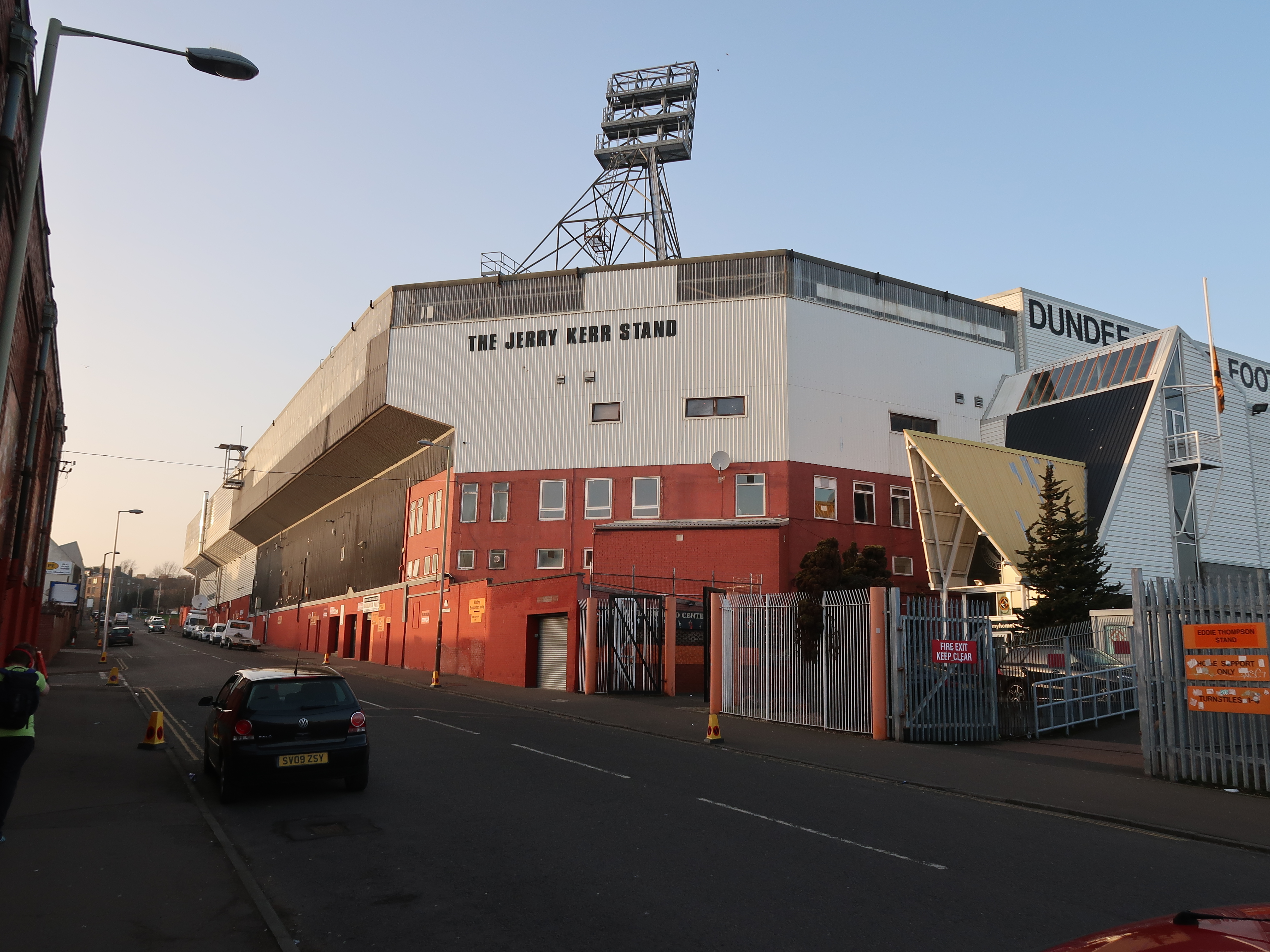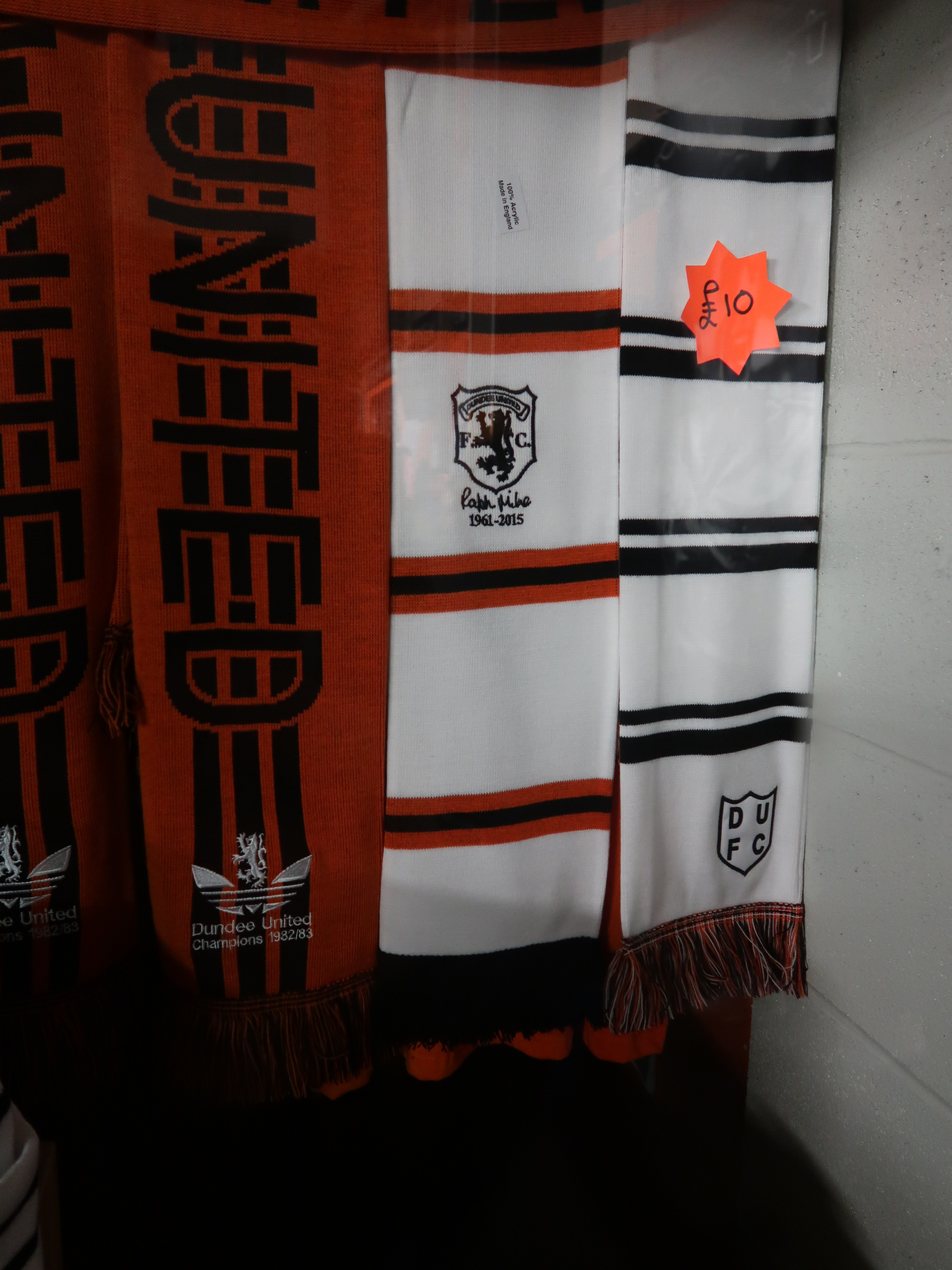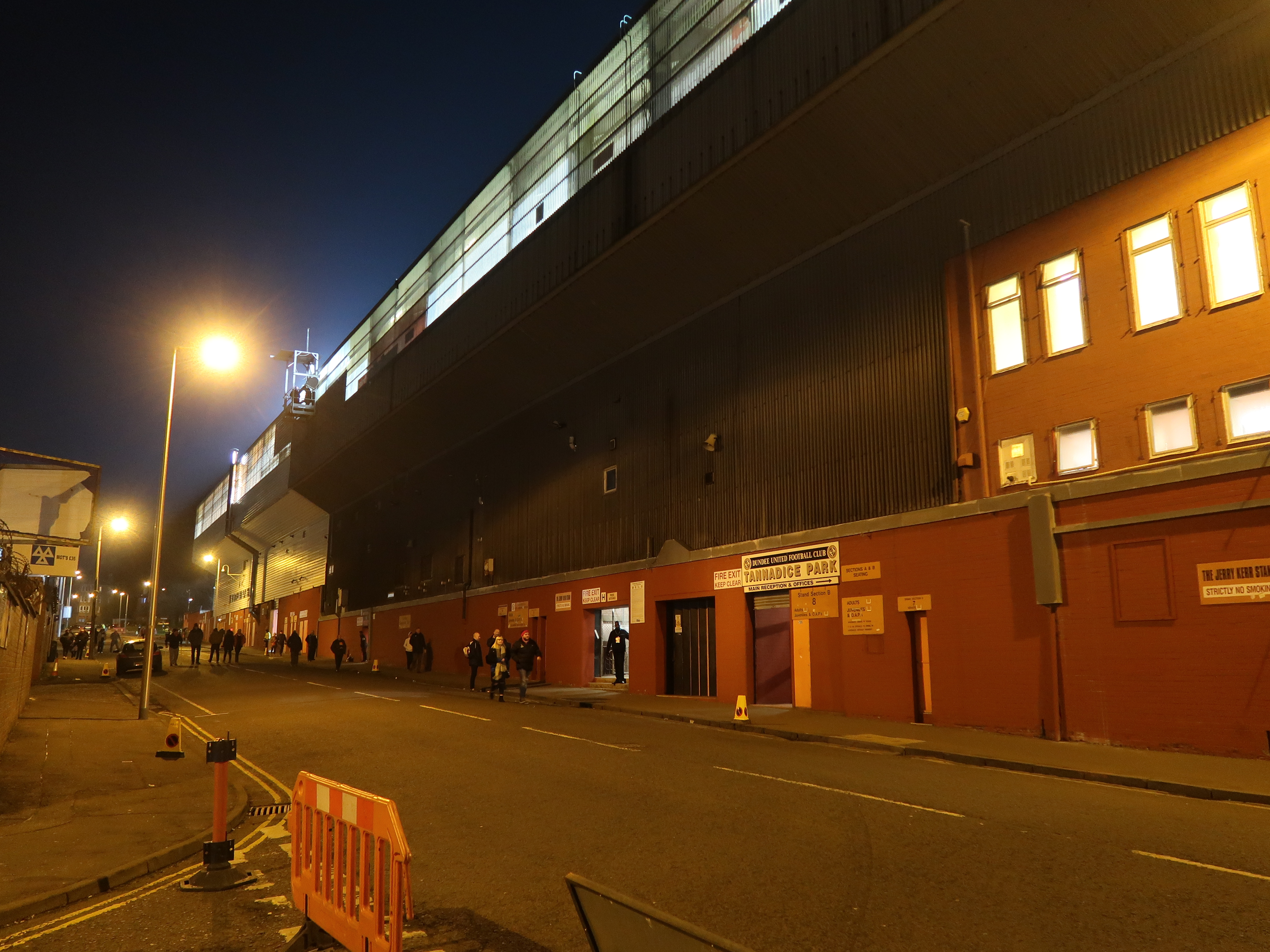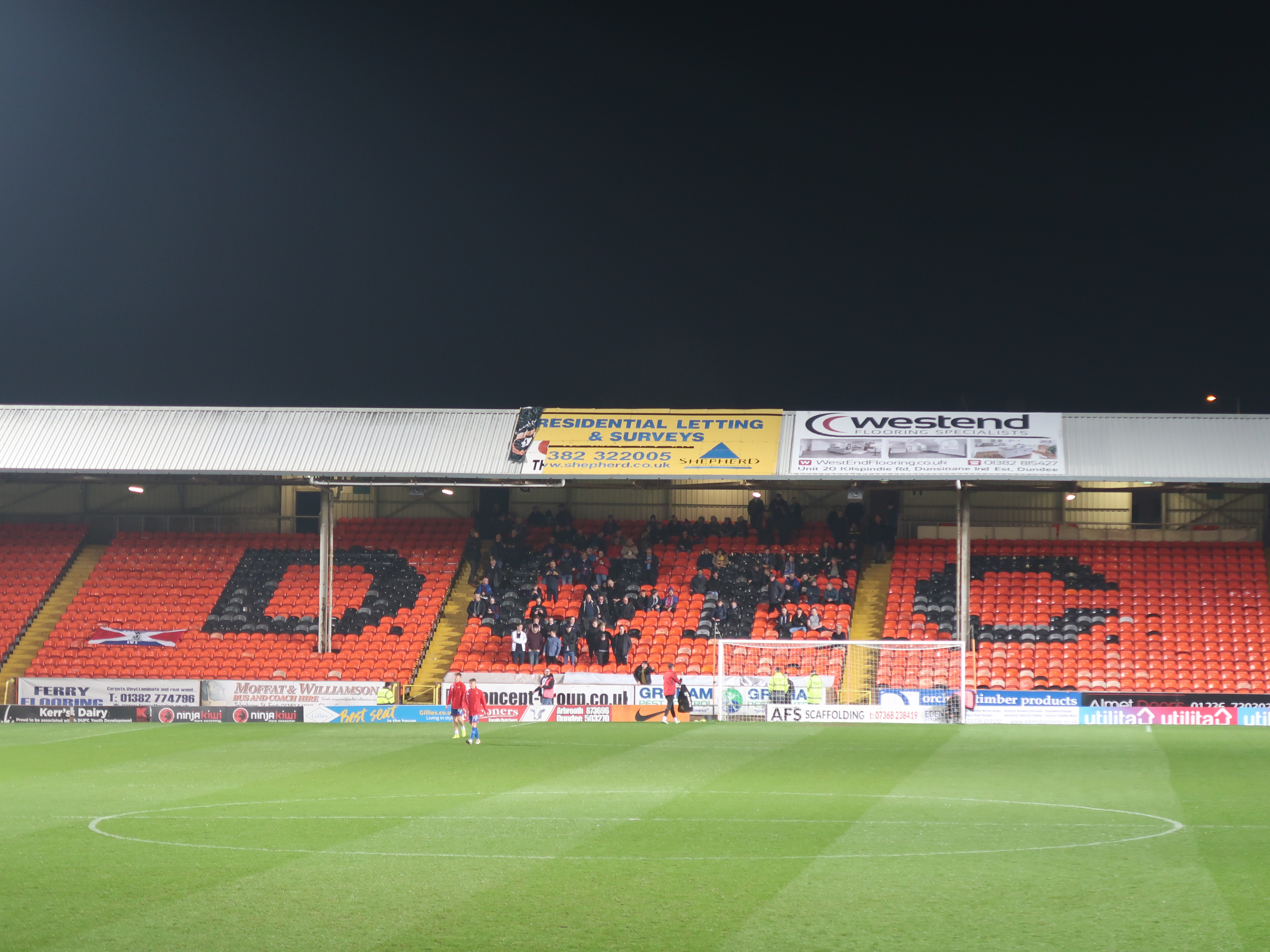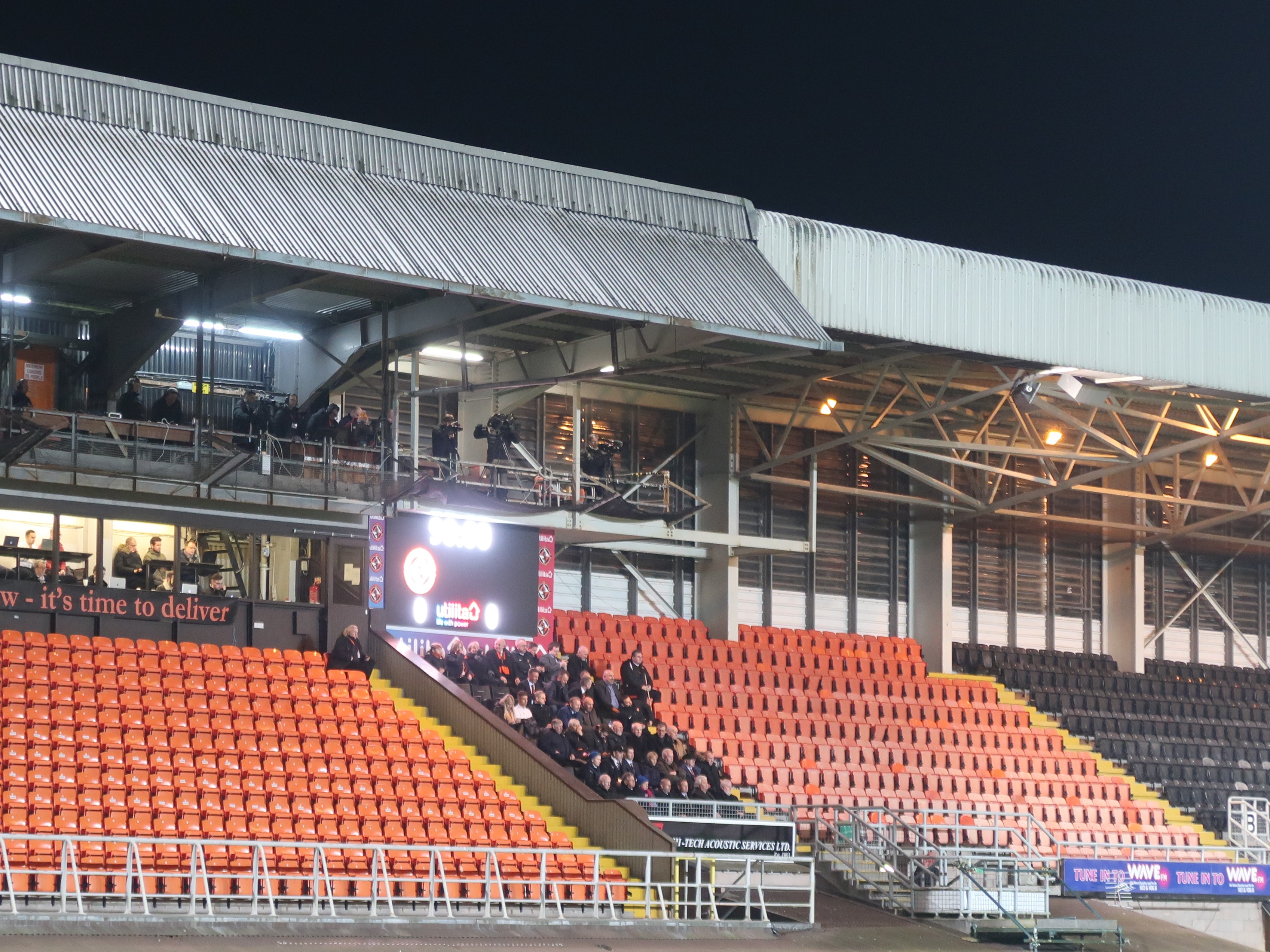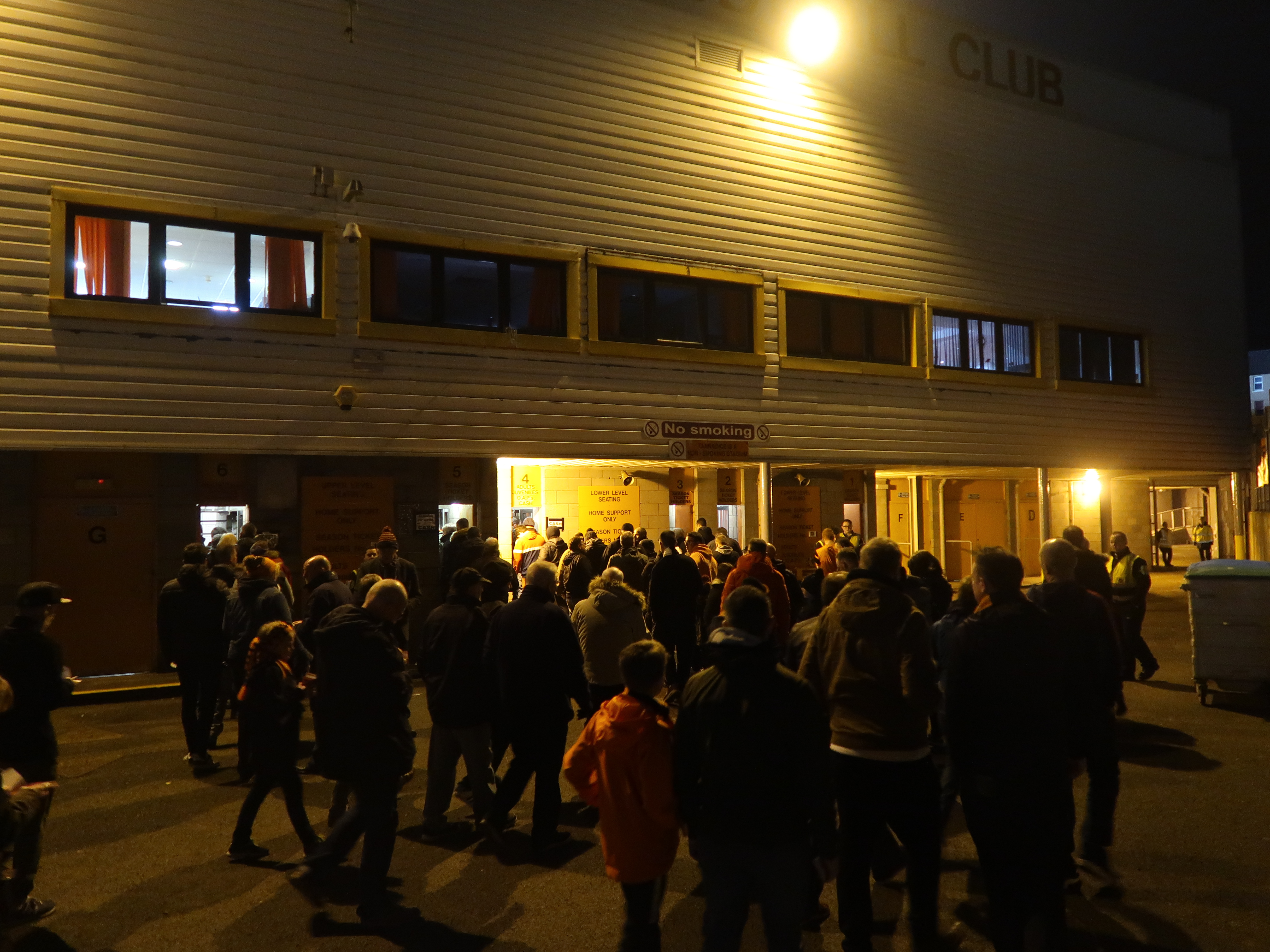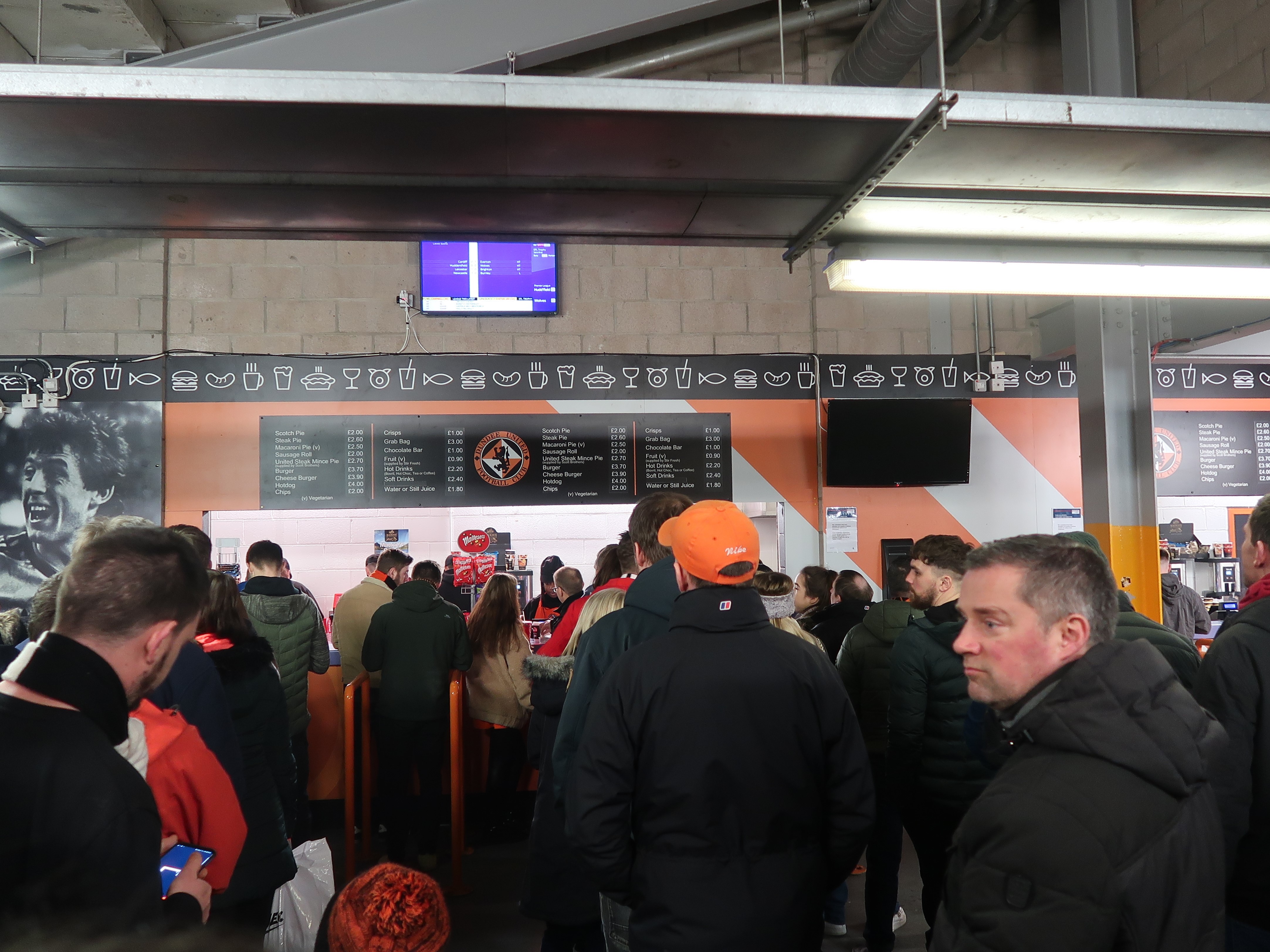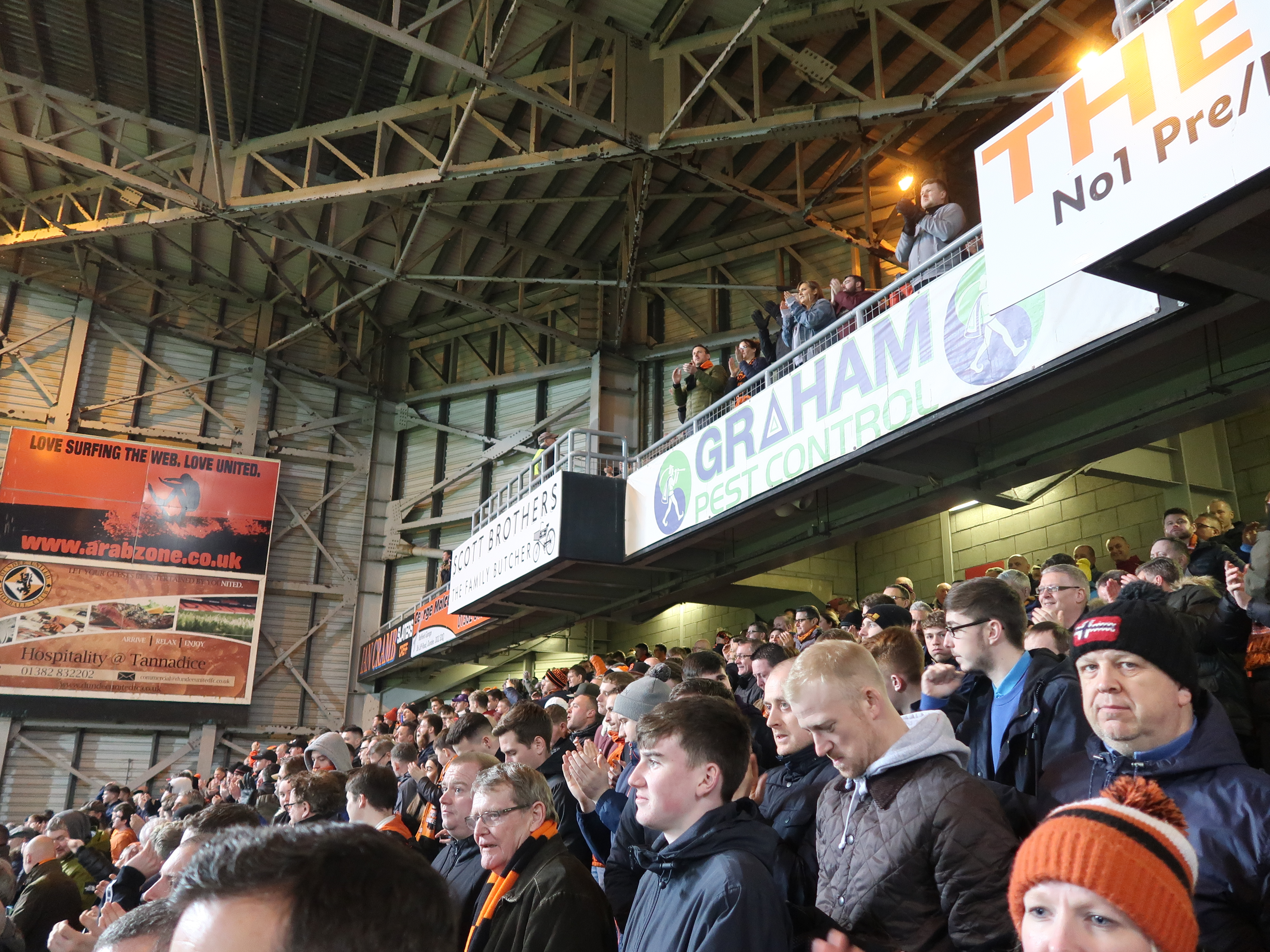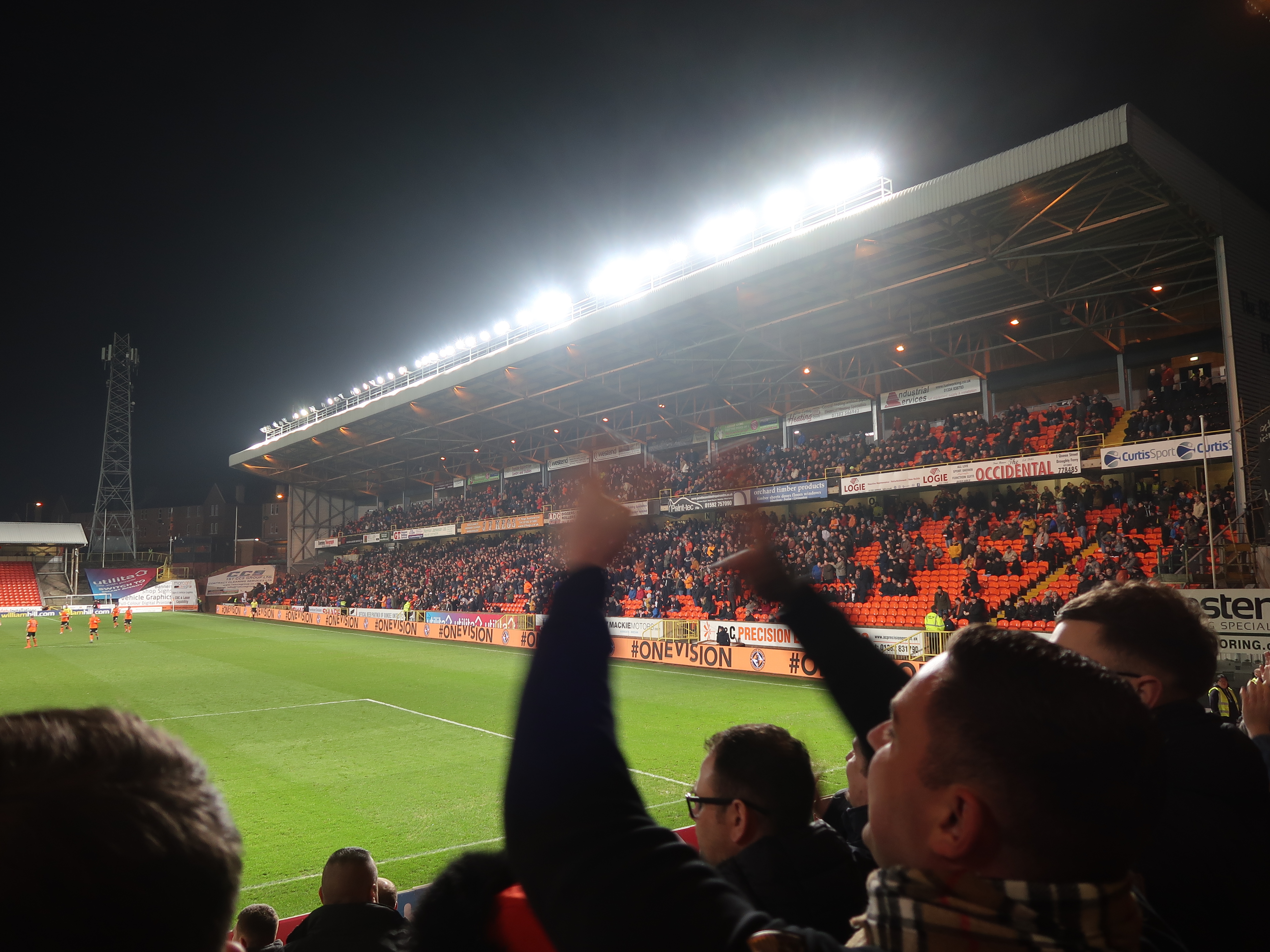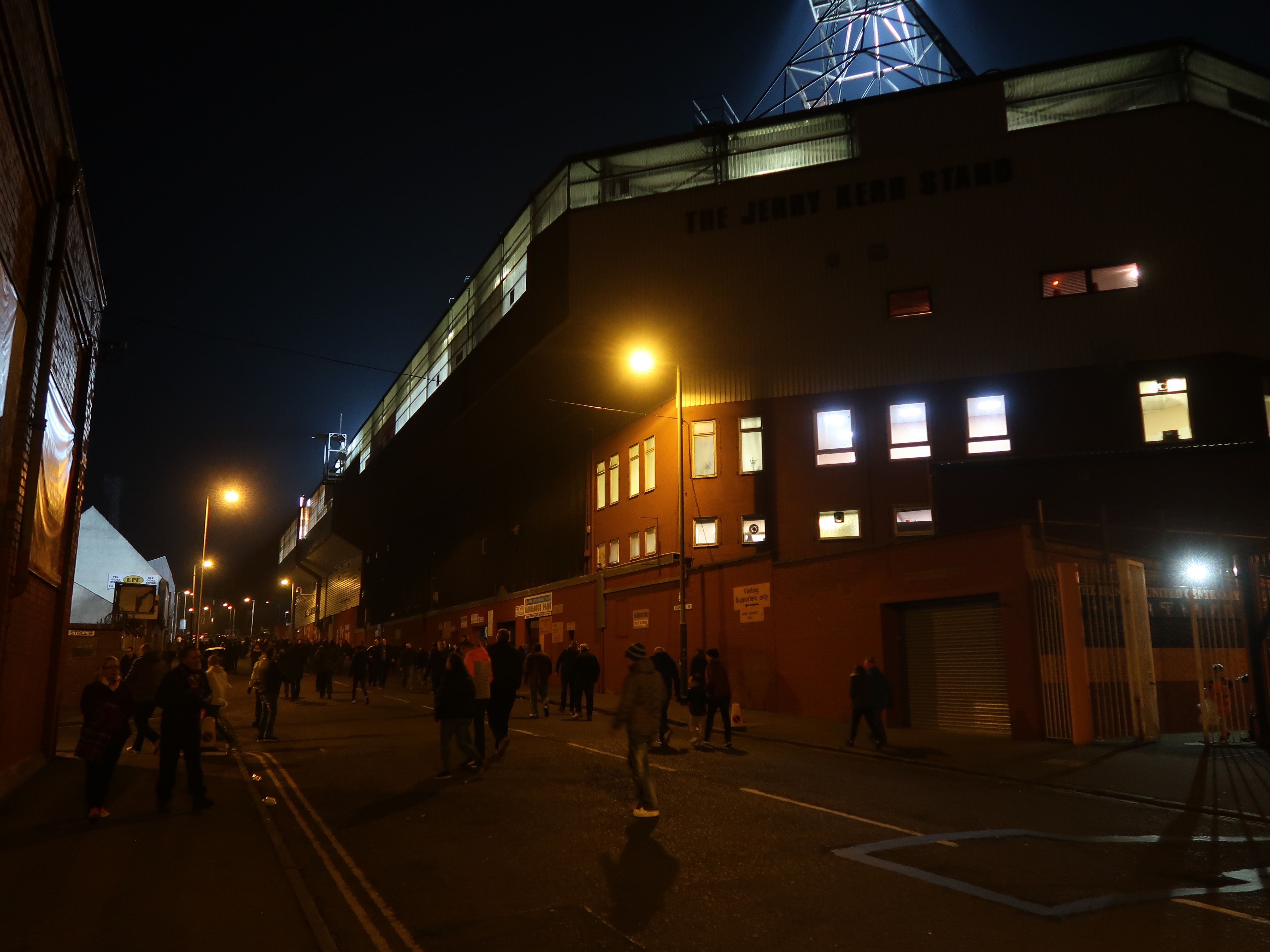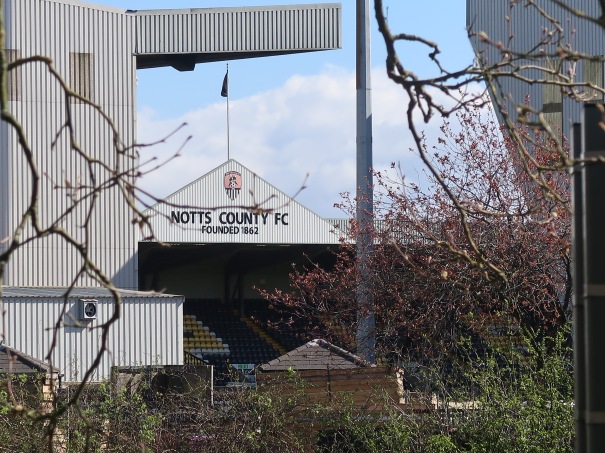
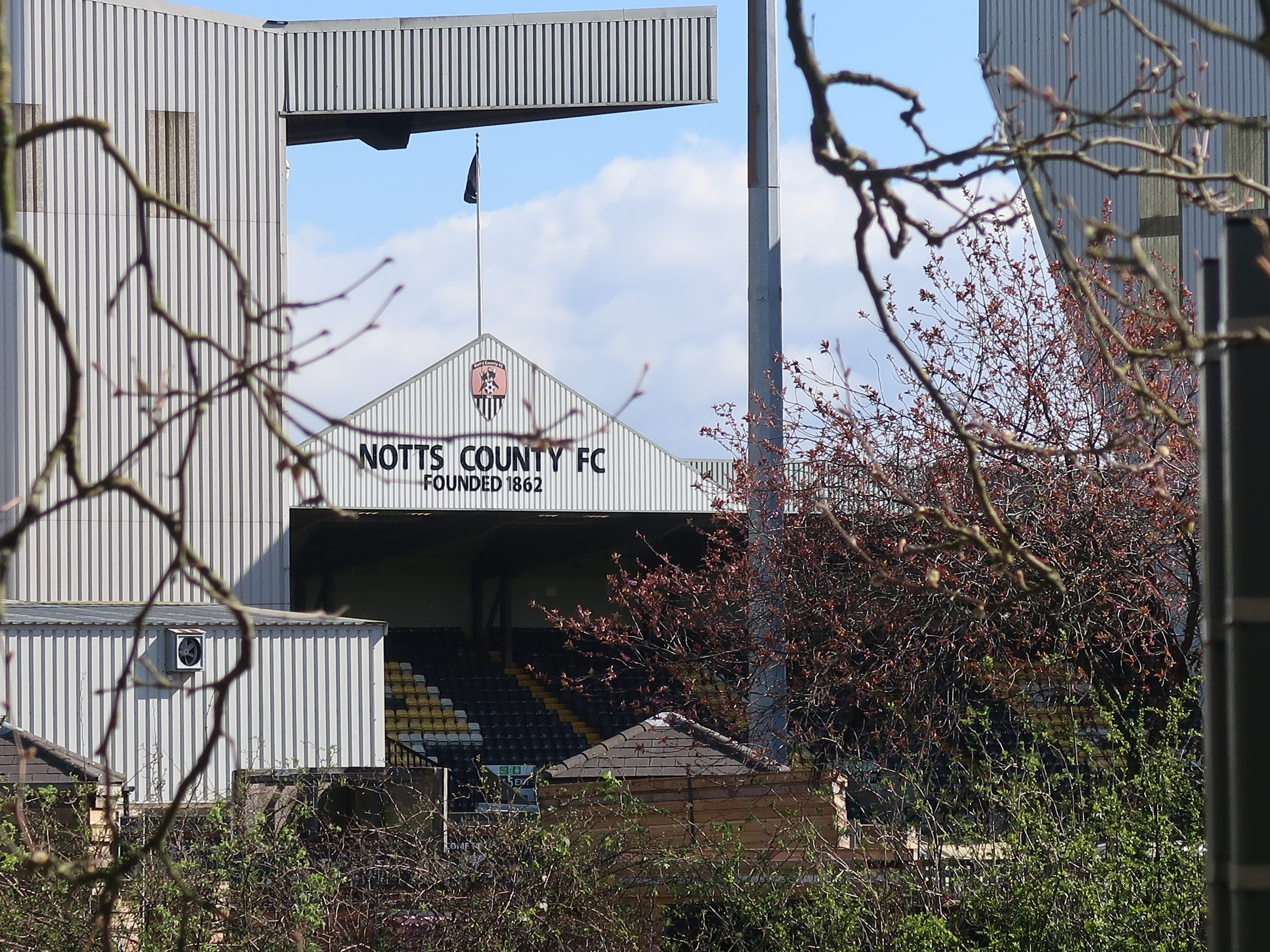
It is about time I get to see a match at Notts County. They are the oldest league club – from 1862. They were the first league club to become a limited company in 1890 (Small Heath, now Birmingham City, had done it in 1888, but they were not a league club at the time). And they are one of the inaugural 12 football league clubs. And probably the main reason for being chosen among the 12, was their football ground.
The league was set up by the leading professional clubs from the Birmingham FA and the Lancashire FA. When you look at the teams invited to join them – Everton, Stoke, Derby County and Notts County – they had all hosted FA Cup semi-finals in the preceding couple of seasons. And the league needed teams that could attract as well as accomodate large crowds.
Notts County were playing at the Trent Bridge cricket ground. It had been chosen as venue for a succesfull 1884 FA cup semifinal, and was therefore chosen again the following season, although this time the Notts County Cricket Club decided to block the planned semi-final between Blackburn Rovers and the Old Carthusians to protect the pitch. This semi-final was moved to the Castle Ground in Nottingham instead, but in 1887 Trent Bridge was chosen again.

The cricket ground had been opened in 1841 by William Clarke, husband of the landlady of the Trent Bridge Inn. In the 1870’s, it was one of several venues in Nottingham used for football matches, but football matches at Trent Bridge were relatively few. It was mainly used for big events such as the visits of clubs like Sheffield Wednesday and Glasgow Rangers. The accounts of the cricket club from January 1882 show an income of £5 from Nottingham Forest for the use of the pavilion, and at this moment in time Forest played their matches at Trent Bridge, whereas Notts County played their at the Castle ground.
But at the end of the season 1882-3, Nottingham Forest found that it was time to establish their own ground. Trent Bridge ”was getting too small for their requirements” and a new ground would be an advantage to the members ”in the matter of practice”. (A couple of years later, newspaper articles claimed that it was against Forest’s wishes, but the report on Forest’s annual meeting 1883 tells a slightly different story). And in September 1883, Forest announced that they were moving to a new ground in Lenton, whereas Notts County moved from the Castle ground to take over from Forest at Trent Bridge.
In the next couple of years, Trent Bridge saw major developments after the Cricket Club purchased the ground in 1884. A new boundary wall on Gainston Road side with a permanent stand in 1884, a new Trent Bridge Inn in 1885, a new pavilion (in the ”Queen Anne’s style”) in 1886. Also in 1886, the Notts County Football Club erected a covered stand along the eastern boundary wall for their matches. And in this way the ground had developed into a state-of-the-art ground in 1888, when the founding fathers of the league assessed potential new members.
Therefore, I find it appropriate to begin my visit at the Trent Bridge. I start with a walk around the ground. The football pitch bordered up to Fox Road and Hound Road, and I recognize a lot of the houses in these streets from the background in old photos of football at the Bridge.

A groundsman allows me inside the ground to have a look around. Of course, Notts County’s stands have been replaced, but the new inn from 1885 and the new pavilion from 1886 are still there. Alas, they have builders working on refurbishment inside the pavilion, so I can’t get inside it. Still, I get enough of an impression to understand why the facilities at Trent Bridge impressed the league founders.

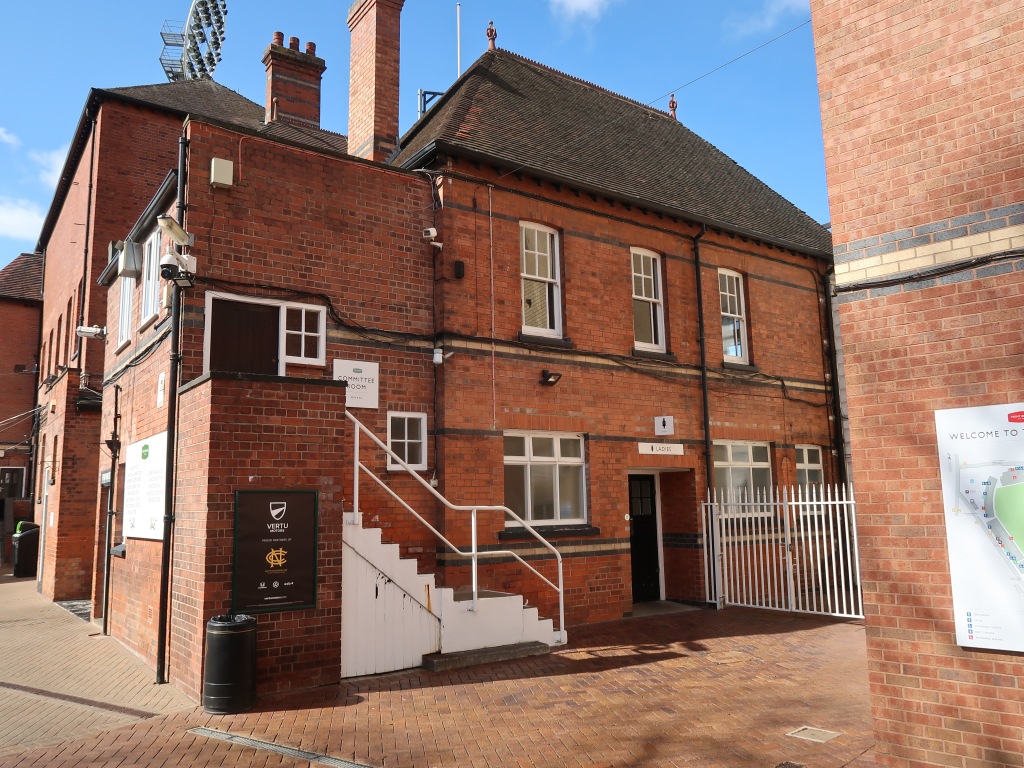
The weather is a mix of sunshine and showers, but suddenly it starts to hail, and I seek shelter – and lunch – inside the Trent Bridge Inn. A fish ‘n chips at this historic site seems a proper way to prepare for my visit to Notts County.
From the Inn, I walk to Nottingham Forest’s City ground on the other side of the street. Forest must have regretted their decision to move in 1883. After a couple of seasons at their new ground in Lenton, they moved to another close by – while Notts County at the Trent Bridge were chosen as inaugural members of the league ahead of Forest. Then – in 1890 – Forest decided to move back to the area, to the Meadows near the Trent. The move probably helped them get elected to the Football league in 1892.
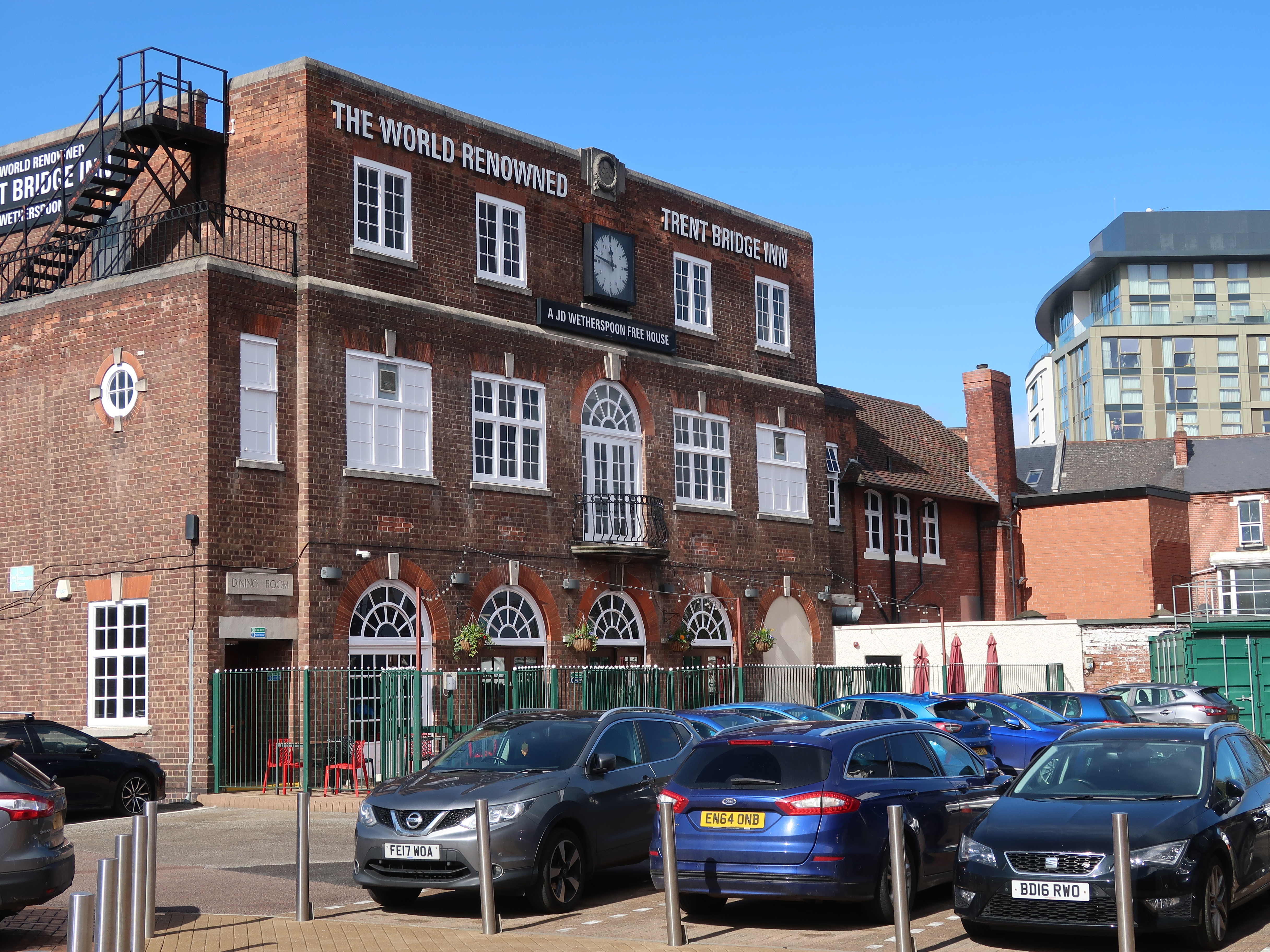
Still, the Meadows was not large enough for the expansion necessary to keep up with rival clubs, and in 1898 Forest moved back across the Trent, leased a ground from the corporation and built the City ground, less than 200 metres from Trent Bridge – almost as short a distance as the one between Dens Park and Tannadice in Dundee.
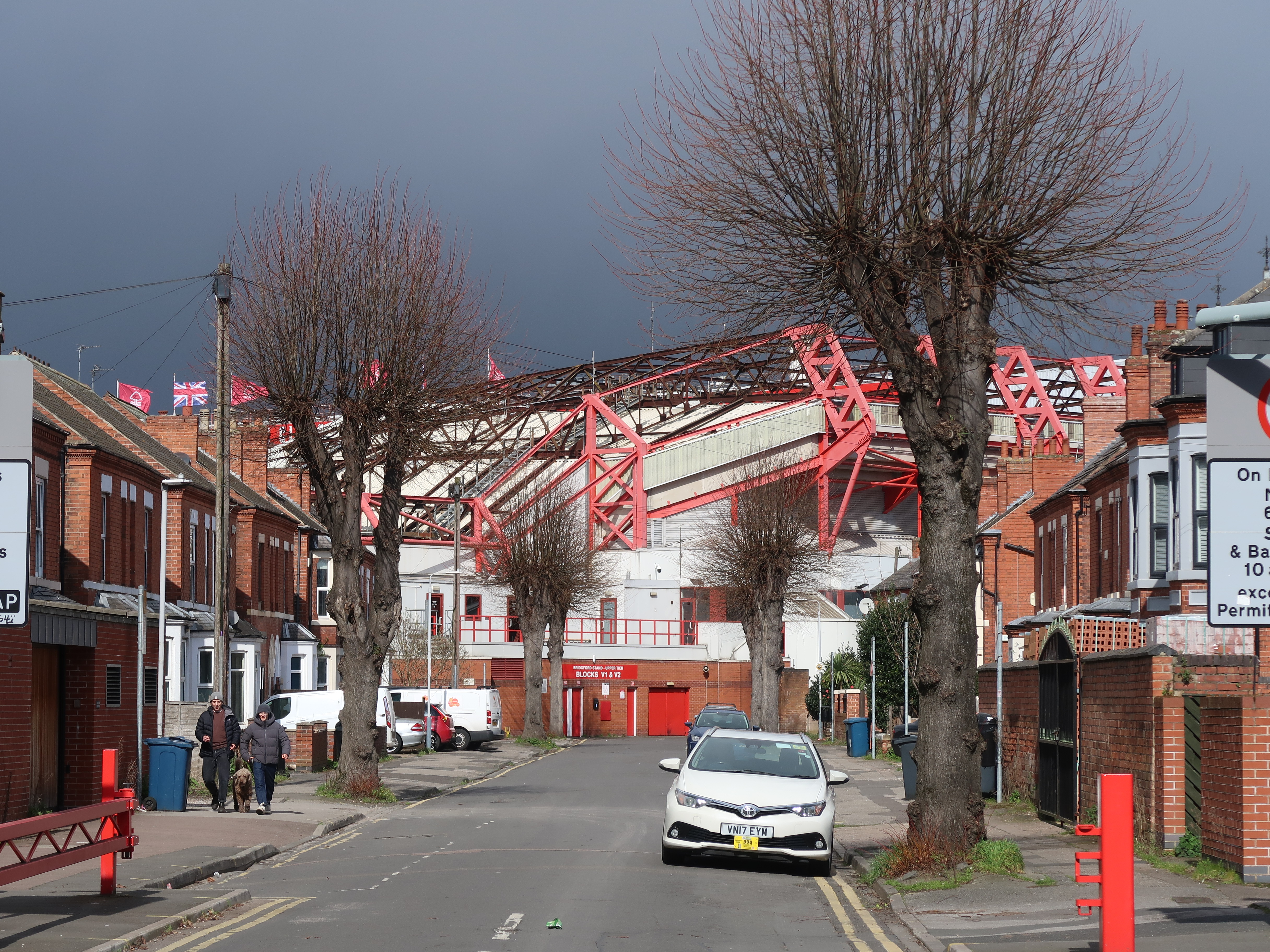
I take a walk around the Forest ground – or rather as much of it as I can, because the car park behind the Brian Clough Stand is locked off. Well, if they have to lock off one side of the ground, they have chosen the right one. It is almost brutalist in style. From the outside it does not have many redeeming features. But the Trent End with the river giving it a beautiful setting, and the Bridgford stand and main stand surrounded by terraced housing, look really good. It is probably my last sight of the old main stand, as it is about to be replaced – although only the previous day, I heard something on the news about the negotiations between club and council having stalled, with the possibility of a ground move lurking.

But back to Notts County and their move from Trent Bridge. Whereas quite a lot of football grounds started out as cricket grounds with first rugby and then football as the winter sport, making the football season run from September till April, most clubs found it too troublesome and either moved out or took over the ground during the 1880’s – with Blackburn Rovers (1881) the first to move out, and Preston North End the first to stop the cricket (1883). Notts County and Sheffield United were the only league clubs in 1910 to use the same field for cricket and football (Bradford Park Avenue had a stand from where you could watch the cricket to one side and the football to the other – and Glossop North End also seems to have the football and cricket field next to each other. Northampton Town was not yet a league club.)
However, with the league being expanded and the number of fixtures increasing, clashes between football and cricket fixtures became more frequent. In such cases, Notts County applied to the Football League for permission to play their match at Nottingham Forest’s ground, but in January 1904, the permission to move a match against West Bromwich Albion on 16th April was declined. It was said to be unfair to other clubs; and that such permissions would not be granted in the future. Notts County had to fit in the fixture on a cold and dark winter day. In the following seasons County did manage to get permission to play at Forest; but they could no longer take such permissions for granted. In 1908, two years before the lease expired, neither cricket club nor football club were interested in a renewal, and Notts County began to explore other possibilities. And somehow ironically, with Forest having recently moved from the Meadows over the Trent, County some twelve years later moved in the opposite direction. The club had set its eyes on the recreation ground for the employees of a local firm in Meadow Lane, combined with the neighbouring ground used by the council for the tipping of snow.
The decade after the turn of the 20th century is just as revolutionary in terms of football ground development as the last couple of decades in the wake of Hillsborough, The Taylor Report and financial boom of football. Back then, it was the Ibrox disaster 1902 and the subsequent focus on ground safety that heavily influenced developments. The Ibrox stand had been constructed, so that it could be taken down and moved, as Glasgow Rangers were on a short-term lease. It didn’t make sense to invest heavily in a stand that you would have to leave behind, when the lease expired. That was one reason why many clubs purchased the freehold or secured long-term leases in the aftermath of this disaster. Notts County wanted a 21-year lease, but the Health and the Works and Ways Committee of the council found that “with due regard to the public interest it would be unwise to tie up the land for 21 years”. This was in October 1909, and with their lease of the Trent Bridge about to run out, Notts County decided to settle for 10 years. In fact, the Corporation had the power to terminate the lease at any time, but they would have to pay a compensation of up to £2.000 and allow the club to take all buildings and materials with them.
Apart from accepting a short-term lease, Notts County deviated from the trend of the decade by not selecting Archibald Leitch as their architect. In 1908 Everton replaced the architect in charge of the development of Goodison Park with Archibald Leitch, and for the following six years – until the outbreak of the First World War put ground development at halt – Leitch was chosen for just about every major stand built at league grounds (currently, I think that one of the stands normally credited to Leitch may have had another architect – but I will have to do some further research before being able to claim it for sure). Except Meadow Lane.

Instead of Leitch, County chose the local architectural firm W., R. & F. Booker, probably because their main architect William Shephard used to be on the Notts County board. The many years at the cricket ground were probably the reason why the proposed main stand was called a ‘pavilion’, 130 yards long and 10 yards deep with 14 rows of seats allowing a capacity of 3,400. Newspaper reports called it “substantially built”, “imposing in its proportions”, and “graceful in its lines” with a solid foundation of red bricks and a high-pitched roof. The roof of the ‘pavilion’ also covered half the 6.500 spectators standing on the 11 yards deep terraced ‘bank’ raised in front of the stand.
Notts County brought the stand behind the goal at Trent Bridge towards the Hound-Road with them and erected it at the Meadow Lane end. 2,100 could watch the games under cover from there, and a further 4,300 could watch it from an embankment similar to the one in front of the new ‘pavilion’.
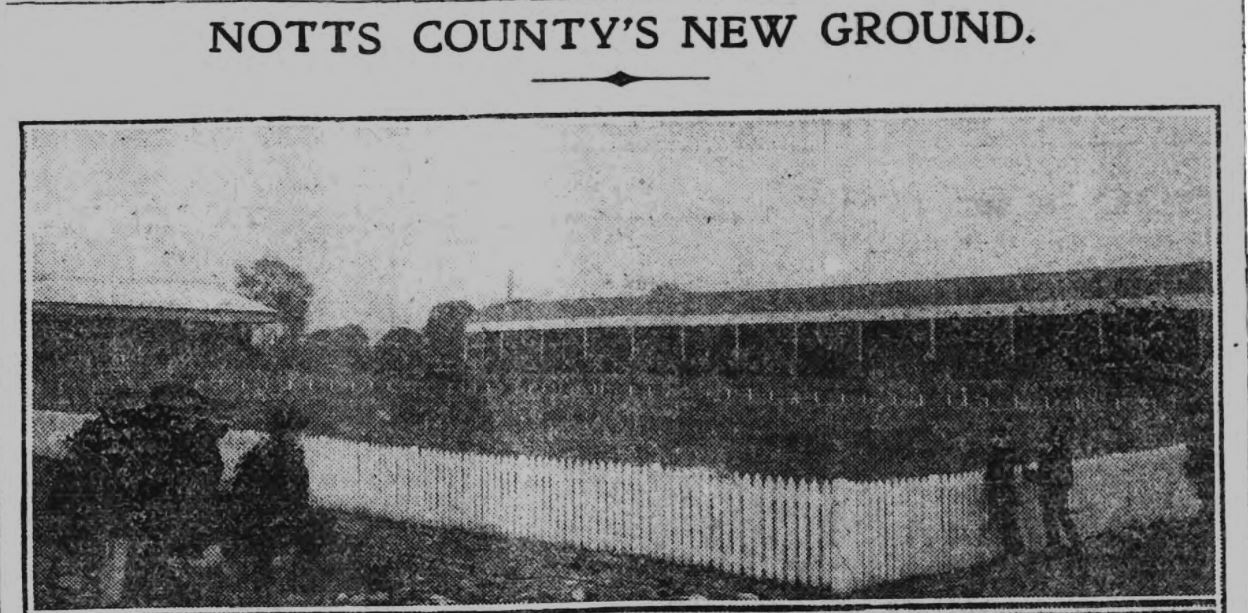
Also, the stand along the Fox Road at Trent Bridge was taken down, and “the timber and some of the uprights are incorporated” in new, terraced “structure” for the sixpenny spectators – along the current County Road where Tinker’s Brook used to flow. But in future, most sixpenny spectators would be accommodated at the Spion Kop, which was banked up at the Cattle Market End – “an essential in modern football grounds”. It was 80 yards long, 25 yards deep, and 30 feet high with room for 9,500 – although it apparently was not quite ready for the opening of the ground. The club advertised for 6,000 cubic yards of fillings, but a lot of it was swallowed by the laying of the pitch. The pitch itself, 116 by 75 yards was the same size as at Trent Bridge, but there were three to five yards from the pitch to the fencing, ensuring that players tackling near the touchline would not “make the abrupt acquaintance of a rail or post”.

The original estimate of the cost was between £3,000 and £ 4,000, although it ended up well over £6,000 – and that may explain why Archibald Leitch was not asked; at the time, he used to work on much bigger budgets, and still the costs of his projects frequently ended up costing double of the estimated price. To raise that money, the club issued 500 debentures of £10 each at 5% interest. A similar underestimation of costs occurred fifteen years later, when Notts County decided to replace the ramshackle sixpenny structure on the County Road side with a proper wooden, terraced stand with a roof gable featuring the club name. It was estimated to cost £3.200, but apparently ended up costing close to £10.000.
Apart from the installation of floodlights, there were not many changes to the ground before the 1970’s. Notts County sank to the fourth tier of league football in the 1960’s, but when Jimmy Sirrell took over as manager in 1969, he slowly but surely brought them back to the top-flight, winning promotion to the first division in 1981 (had it not been for Sirrel trying his luck at Sheffield United for a couple of seasons, it might have happened before.
During Sirrel’s spell, however, the Ibrox disaster in 1971 and the subsequent Green Guide to Safety at Sports Grounds in 1973 and The Safety of Sports Grounds Act of 1975 made it clear that Meadow Lane was not up to modern safety standard. The old Meadow Lane stand that had been brought along from Trent Bridge was beyond repair, as the steel of the base was corroded. It was demolished and replaced by a sports complex. The following years, there was no stand at this end – just the bare outer walls of the sports complex with a row of windows at the top, where executive boxes were installed. Television footage from matches from the 1980’s show a packed Spion Kop behind one goal – a bare wall behind the other. Quite extraordinary. Also, several of the terraces and the ground around the embankment had to be concreted, some of it because fans gather edstones from the lose earth and use it as missiles.
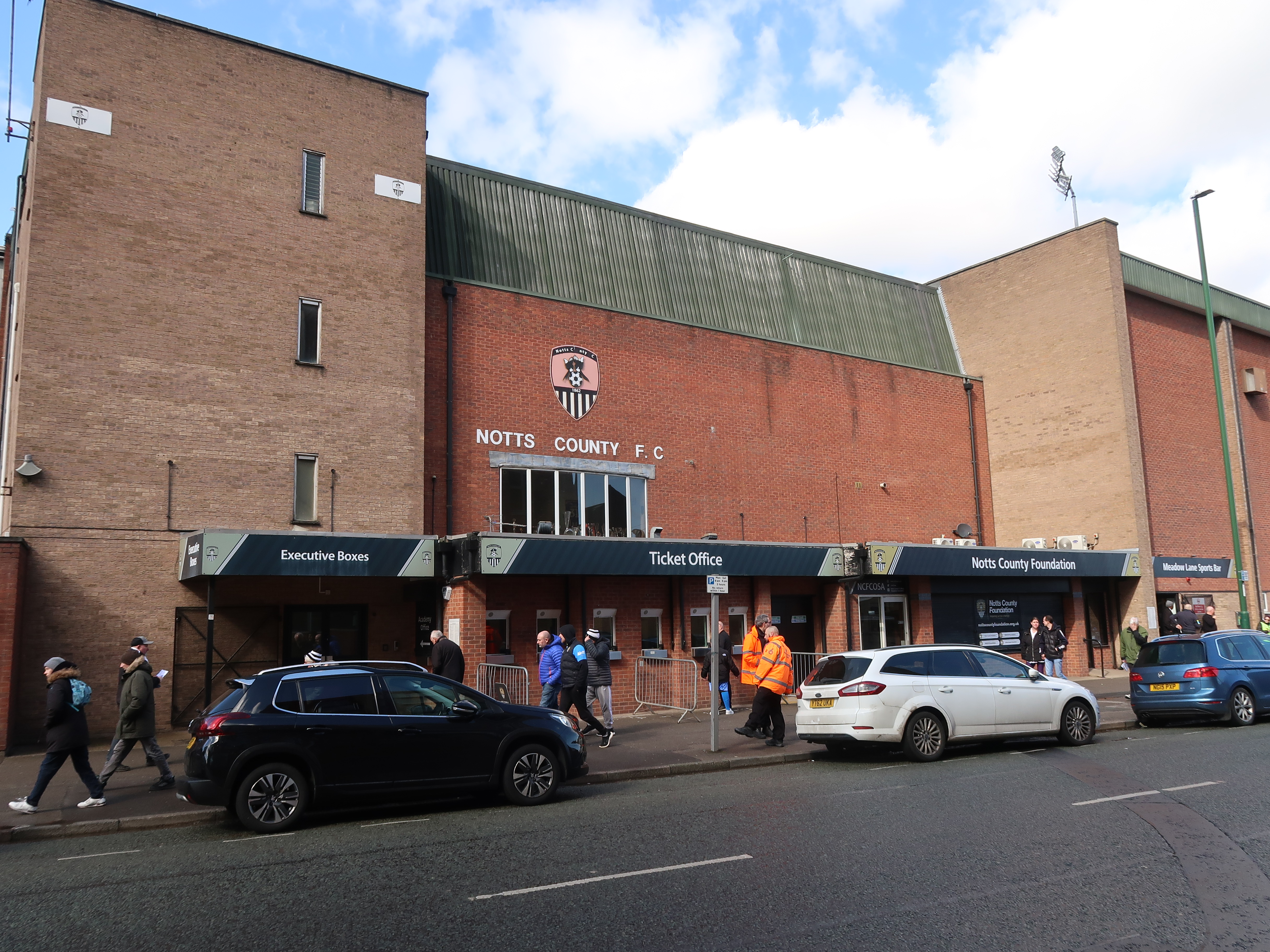
Notts County’s stay in the first division lasted only three seasons. Sirrel had withdrawn to “general manager” after the first season in division one, but when the club under Larry Lloyd suffered successive relegations in 1984 and 1985 and finances went from bad to worse, Sirrel took over team responsibilities again for a couple of seasons to steady the ship.
A couple of seasons after Sirrel’s final farewell to Notts County, former Nottingham Forest director Derek Pavis took over the club and invested heavily in it. And in two seasons, Notts County were back in the First Division in 1991. A blessing in disguise, because the Meadow Lane could not live up to the new standard for first division clubs set out in the Taylor Report.
Pavis appointed contractors Mowlem to build three new stands during the close season. It was not unusual to build a single new stand during the close season in the age of Archibald Leitch – but to virtually transform a modern ground over the summer is a rare feat. But the contractors succeeded – according to Simon Inglis’ Football Grounds in Britain at a cost of just over £3m. The fourth and final stand – the pavilion from 1910 – had to wait for the close season 1994. And then it cost a little over £4m, more than the other three stands together.
In this way, Meadow Lane perhaps more than any ground reflect the impact of the Taylor Report on the football ground landscape. It has been built before television and sponsorship money flowed into the game. Notts County had to rely on Pavis, The Football Trust and the sale of a couple of key players to raise the £8m needed. In the age of billion pound grounds being built, it sounds unbelievable.

As I approach the ground, the first thing I see is a couple of statues – of Jimmy Sirrel and Jack Wheeler (who served Notts County for almost thirty years as a coach, trainer etc.) sitting on a bench. Statues are now quite common at football grounds, but it makes me reflect that I didn’t see any at the Forest ground. But then there is a statue of Brian Clough in the town centre.
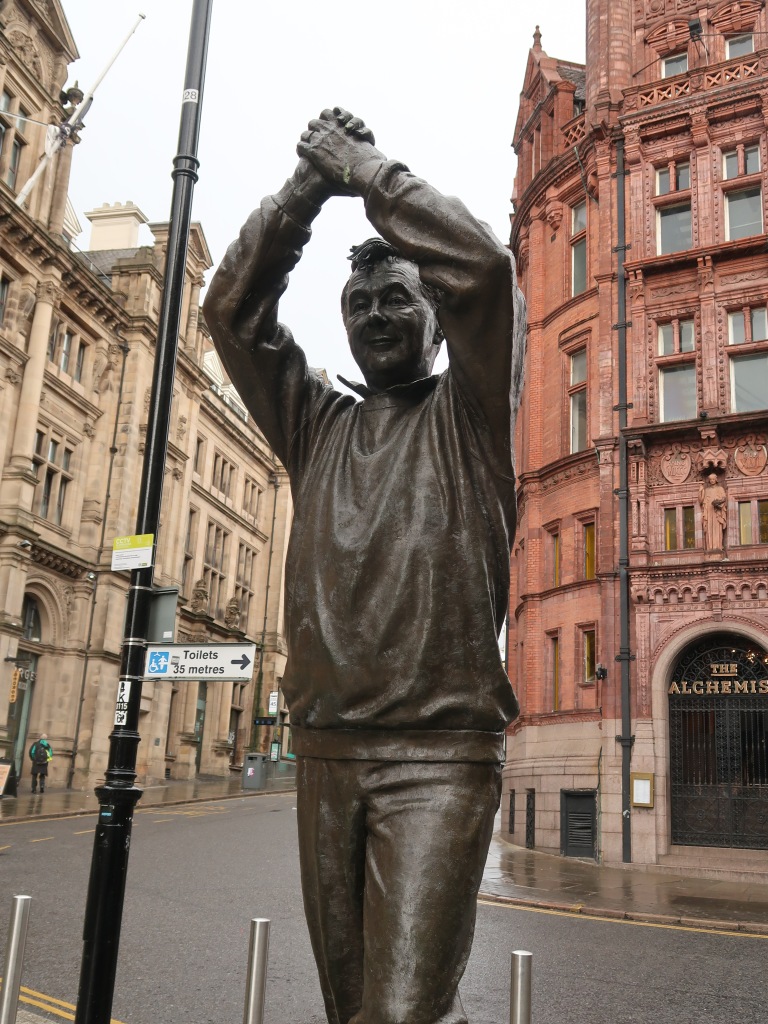
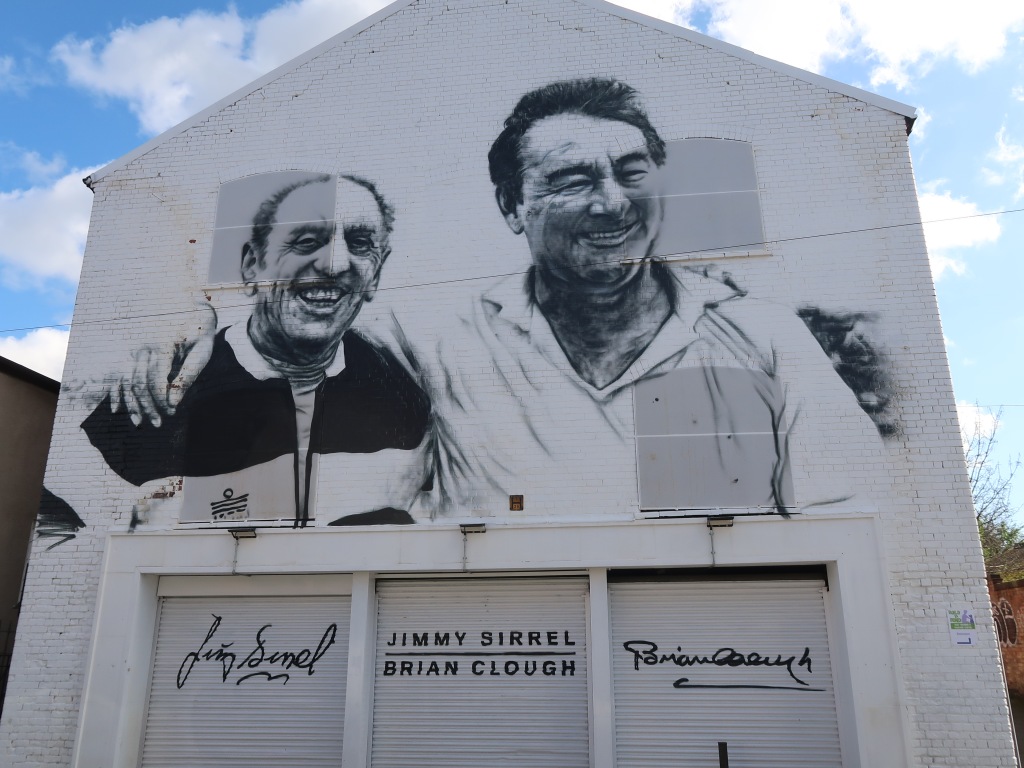
In fact, very close by, there is a mural of Clough and Sirrel together – the two men who really put Nottingham back on the football map around 1980 – with Forest winning the European Cup twice and County rising to the first division.
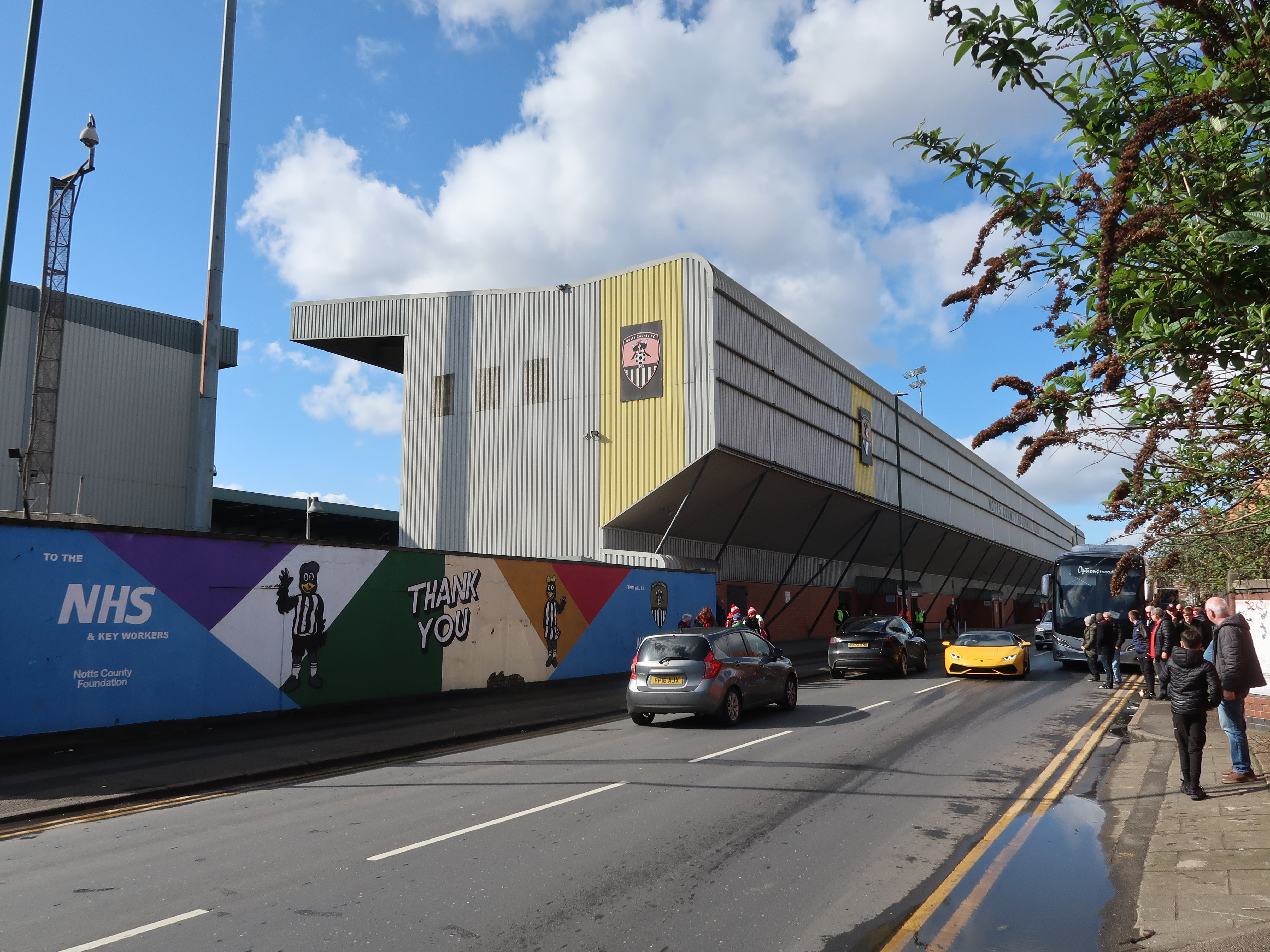
Generally, I prefer old school stands to modern bowl-shaped grounds. There are not many left and they are quickly disappearing. The Meadow Lane stands do not have the same character as stands from the 1950’s or older. Particularly the Jimmy Sirrel stand in the County Road looks rather dull from the outside. It has a fake roof gable at the top, so that it from a distance has some resemblance with the 1925 stand.
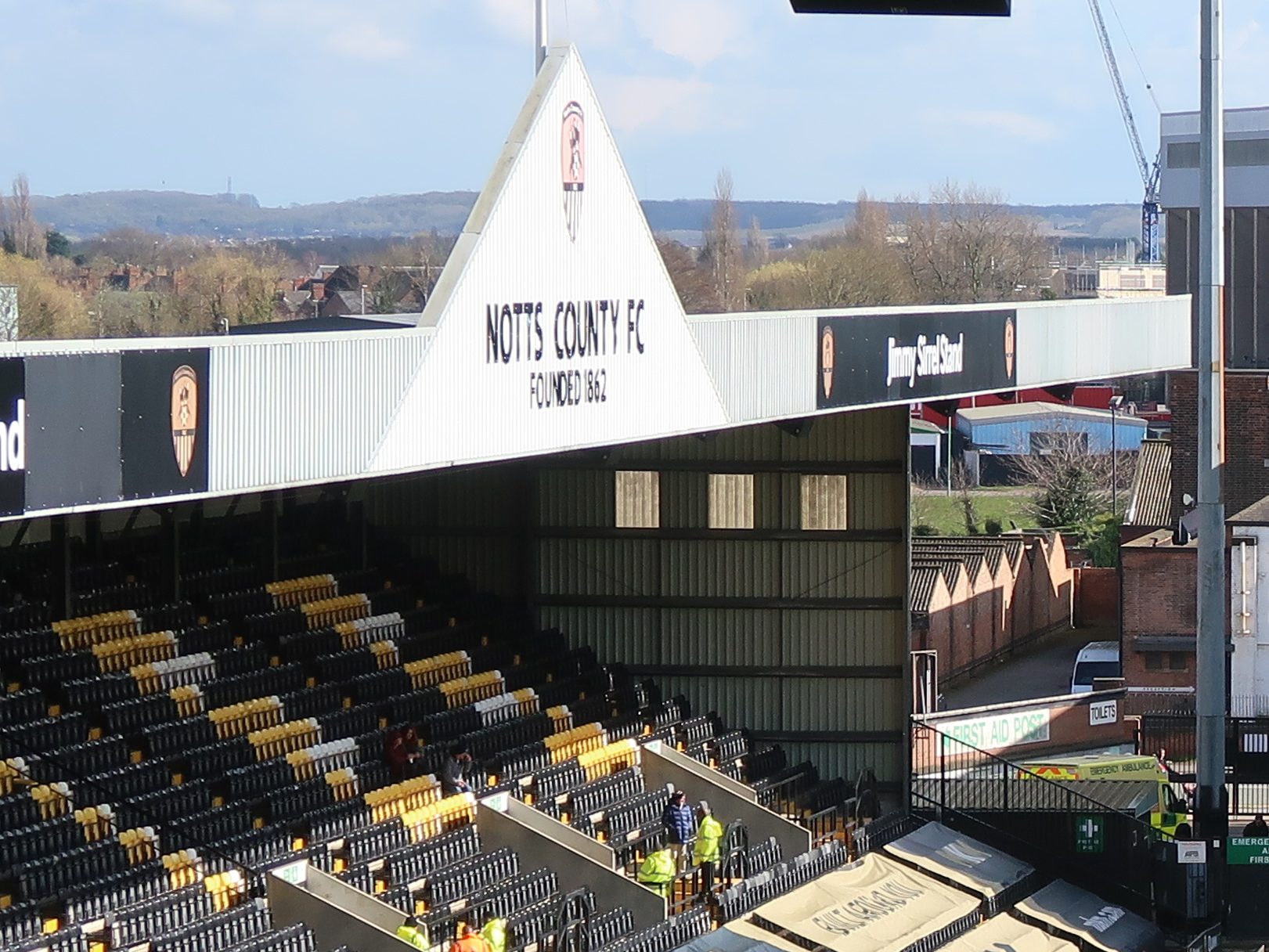
At first, I just think “it is fake!”, but the more I reflect, it is a way of recognizing the history of the ground – and I find myself taking photos of it, because it makes the stand distinct. And as there was no way, the old stand could have survived after the Taylor report, I guess it is nice way of linking to heritage.
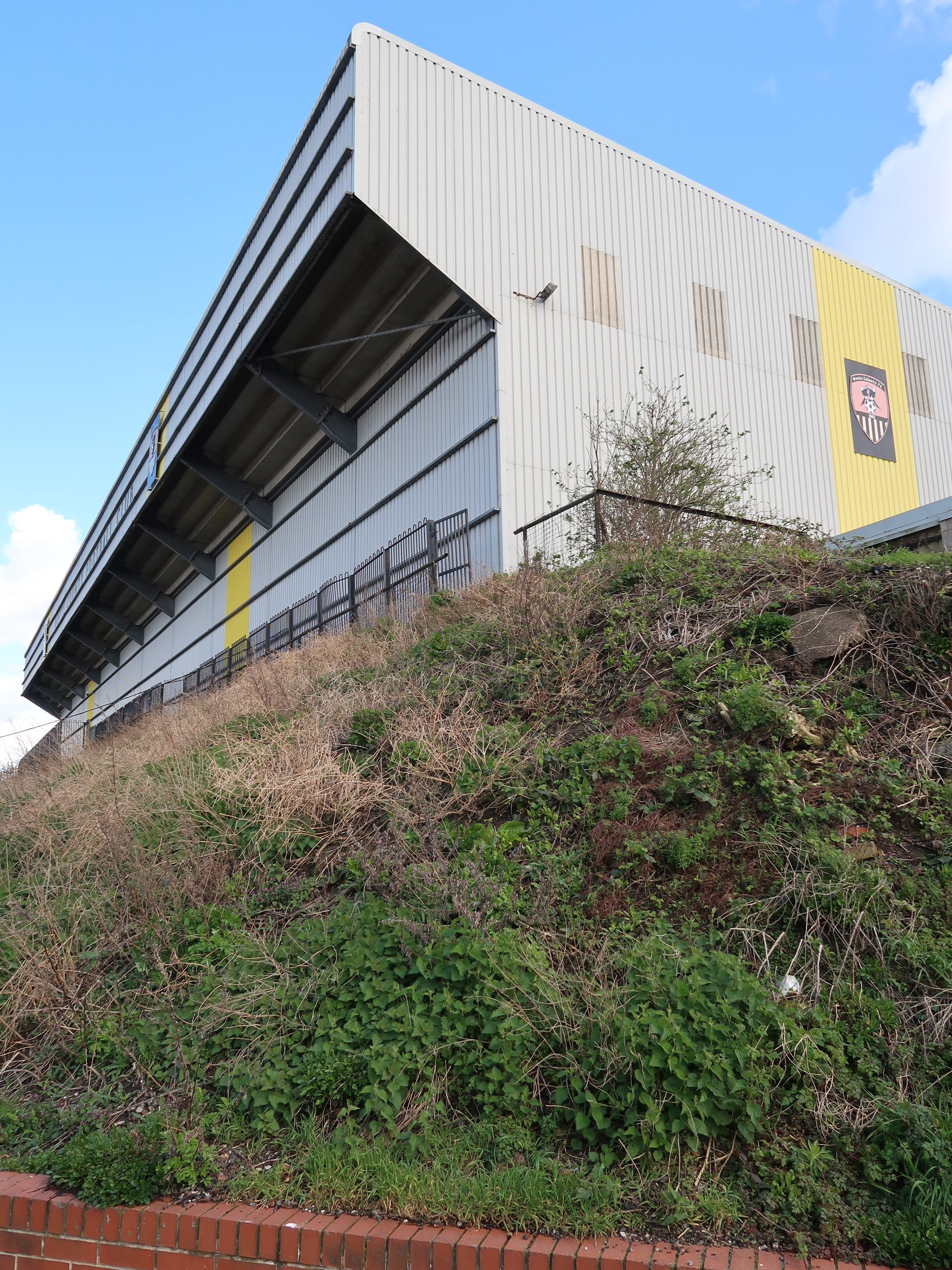
Whereas the Jimmy Sirrel stand may look dull, I like the Spion Kop. With the exception of the Sheffield clubs, I think all league clubs have replaced their kops with stands. The Meadow Lane Spion Kop has preserved a lot of its Kop origin by being built on top of the old embankment, giving it a distinct Kop appearance. There is not a big concourse underneath but rather a passage through it from where you can access your section of the stand – and the toilets. Refreshment boots are placed at the end of the passage at one end and outside it at the other, so most people stand outside at halftime, queuing for drinks and drinking out before getting back to their seats.
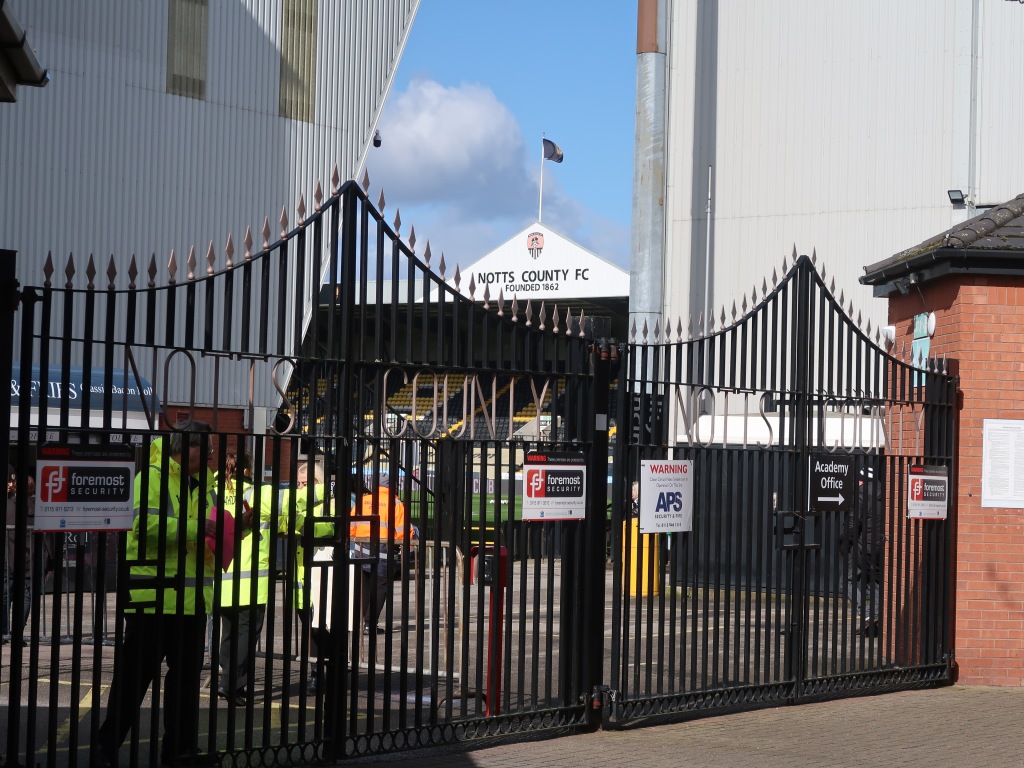
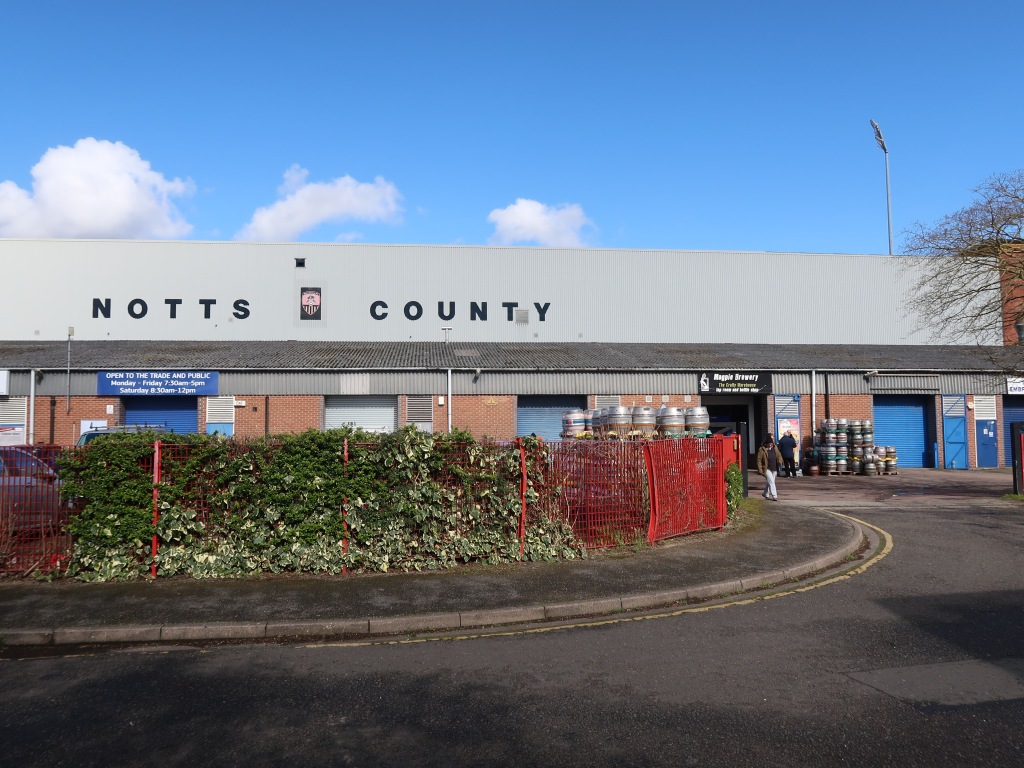
The main stand is somewhere in between the Jimmy Sirrel stand and the Spion Kop. Two tower-like corners in red bricks and the name of the club on big letters across the grey sheeting between them give it a more distinct look than the Jimmy Sirrel stand; and the gates with the club’s name add to it. As I walk around the ground, I go down Ashling Street behind the main stand. There is a number of old garages and workshops along the stand, one of them with the Magpie Brewery offering supporters a taste of their products. Seen from here, the garages give the main stand a touch of ‘old school ground’.
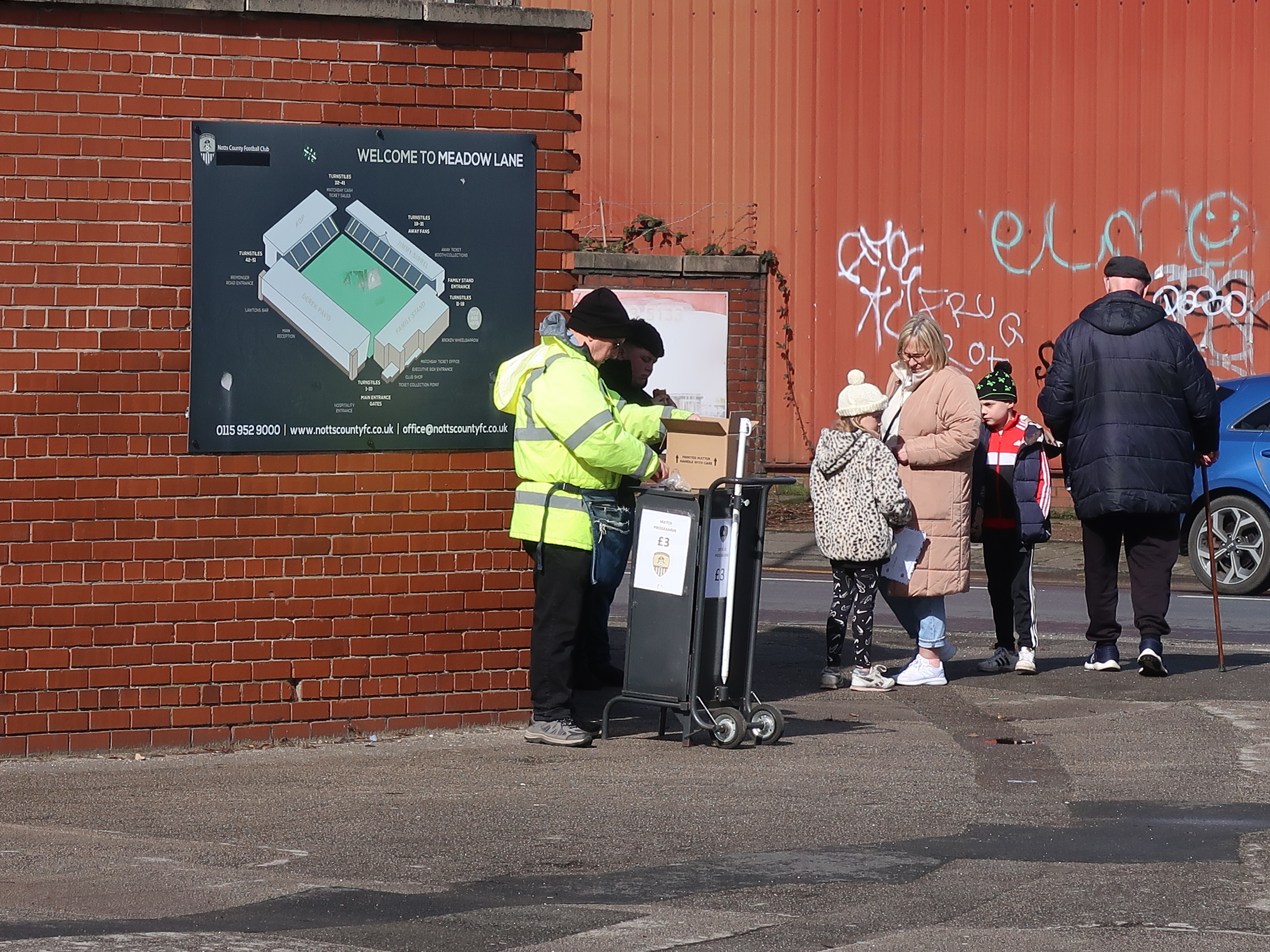
Before entering the ground, I see the welcome sight of a programme seller. Now that print-at-home tickets have replaced proper tickets, printed programmes will probably be the next thing to disappear. At the rugby union match at Leicester last night, there were no programmes any longer. I really dread that day. I have a collection of programmes from the matches, I have attended, only missing one (an FC United match – I can’t remember whether there were no programmes on sale or whether I have just mislaid it). I had been wondering whether to add a rugby union programme to my collection. Well, it turned out for no reason. I think the Notts County programme is the first British programme in my collection that has not been printed on glossy paper.
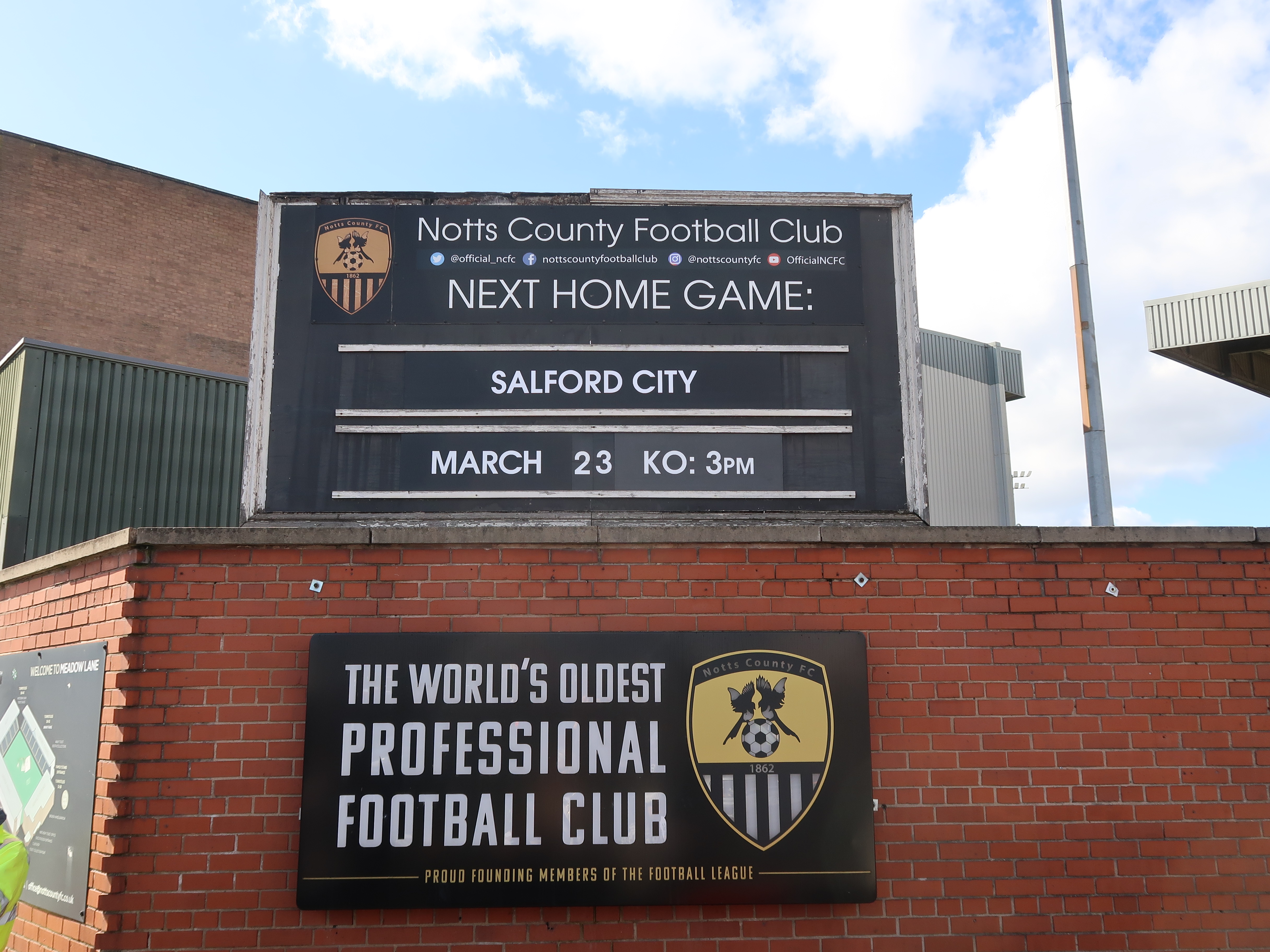
I have bought a ticket for the Spion Kop, hoping to be able to take a photo of the ground with Nottingham Forest’s City ground in the background. I discover, however, that the roof of the stand obstructs the view of the City ground. I try out several rows in the almost empty stand for the best view and try to find the best position for a photo. A steward, noticing my walking down one row after the other, comes over to me and asks me, what I am doing. “Looking for the best angle for a photo to my blog”, I answer. “Your blog?” “Yeah, I am writing a blog on football grounds”. He has apparently reported it to the supervisor, because when I pass him, he says “I hear you are writing a blog? You should check out this site” and he shows me the “Nottingham Way Back Then” facebook wall .
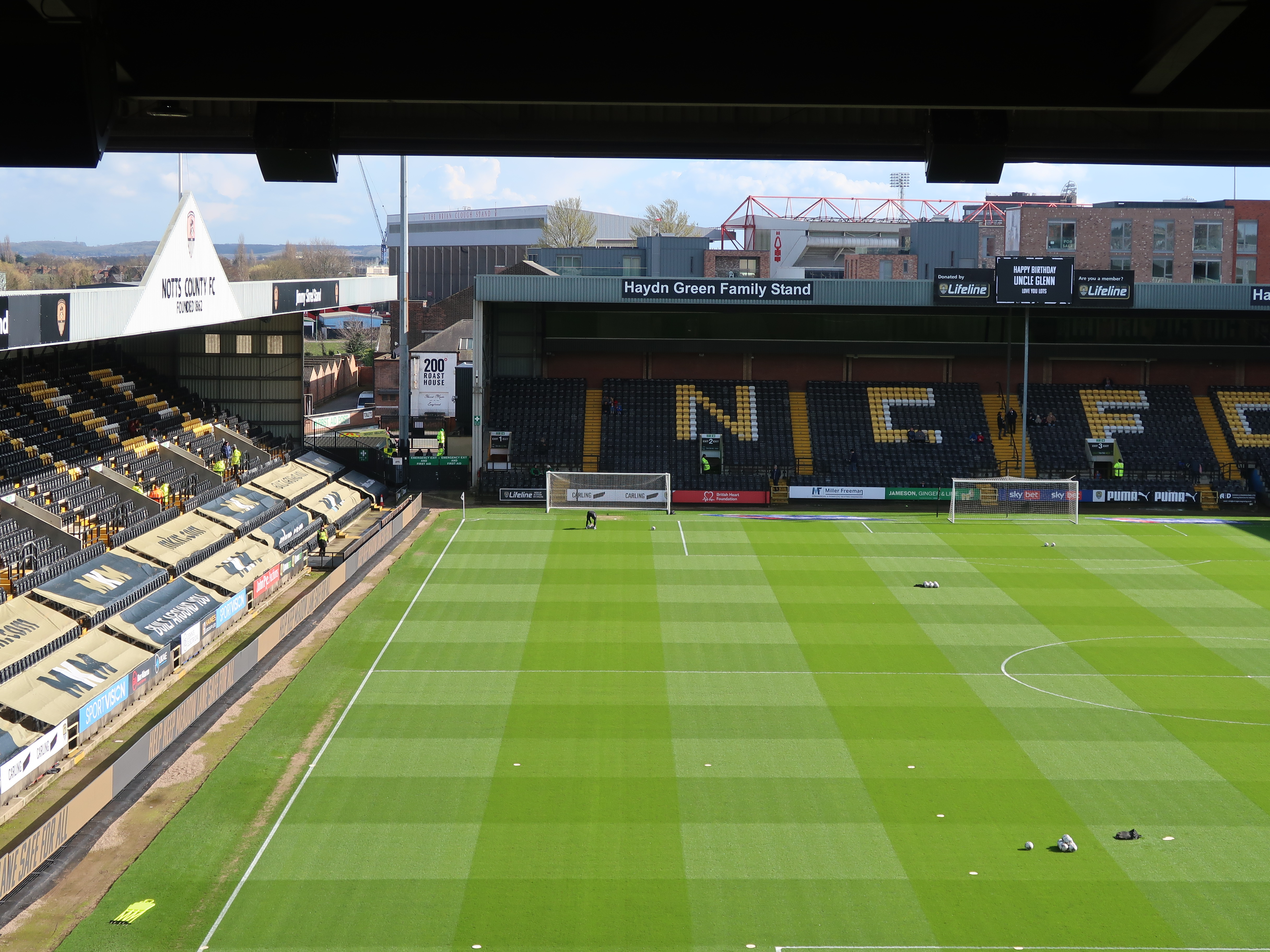
I get chatting with him and one of the stewards. About Notts County’s move from Trent Bridge to Meadow Lane, about Nottingham football, football grounds, former players etc. They tell me that Ryan Giggs is attending the match somewhere, as he is a sporting director at todays’ opponents from Salford City. I have entered the ground at 1.30 – and suddenly discover that the players have finished their warm-up and are leaving the pitch. Just time for me to get to the toilets before kick-off. Before leaving, the supervisor tells me to stay behind after the match. He may just be able to get me inside the main stand to see the trophies.
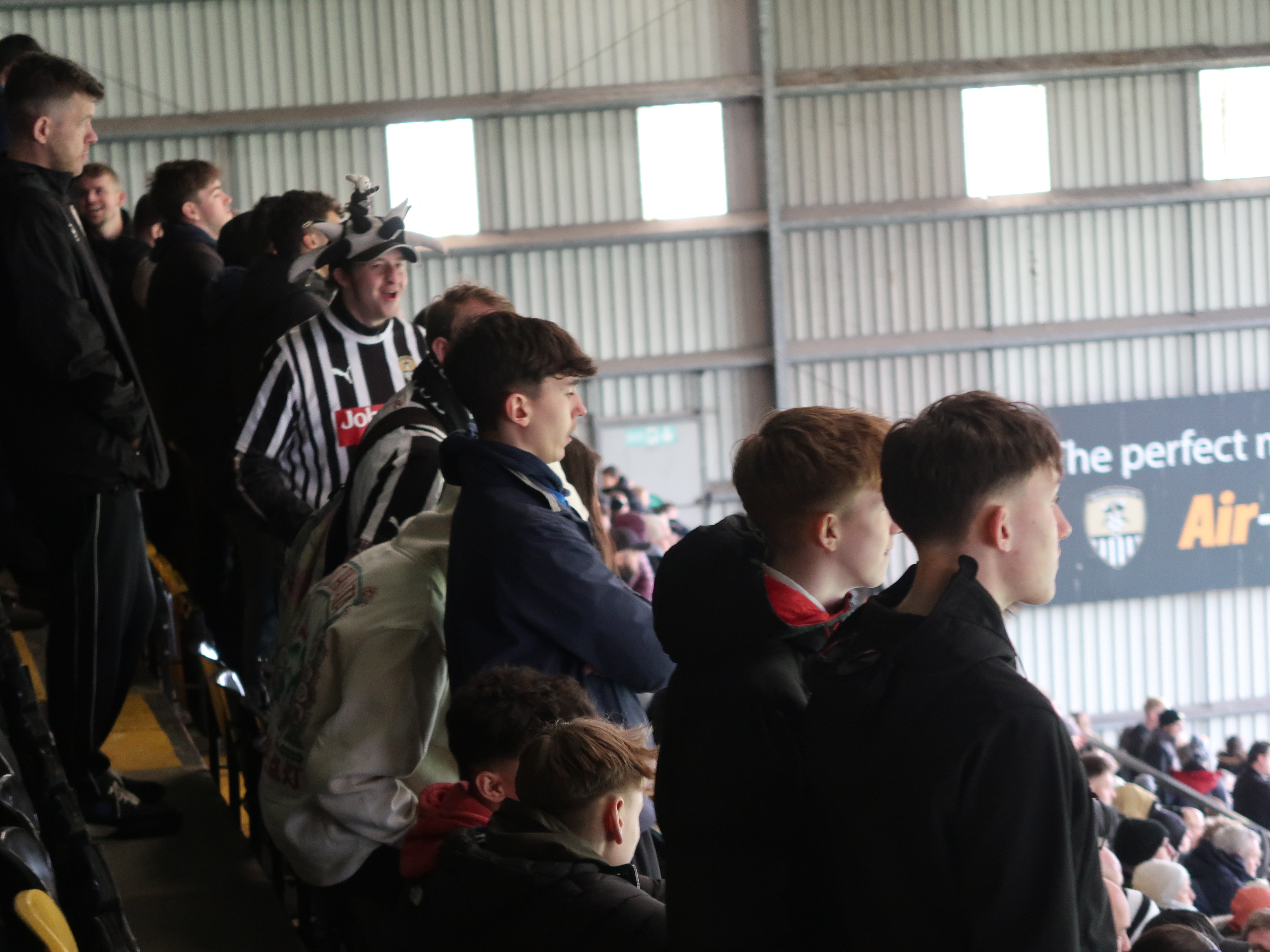
The other steward asks me for my seat number. “Oh no, you are almost next to the drummer! If it becomes too much, just ask me – I will try to find you another seat”. A couple of years ago, I was really annoyed whenever I got near a drummer. But recently, it has been okay. Maybe because the drummers have not been as persistent as the ones that made me dread it. Maybe I have got used to it. Or maybe I am getting old and can’t hear that much any longer. And I am quite okay with the Notts County drummer. He seems to accompany the chanting of the fans around him, rather than trying to build up an atmosphere that is missing from the crowd. Sometimes it is even hard to hear the drumming above the chanting of the surrounding fans.
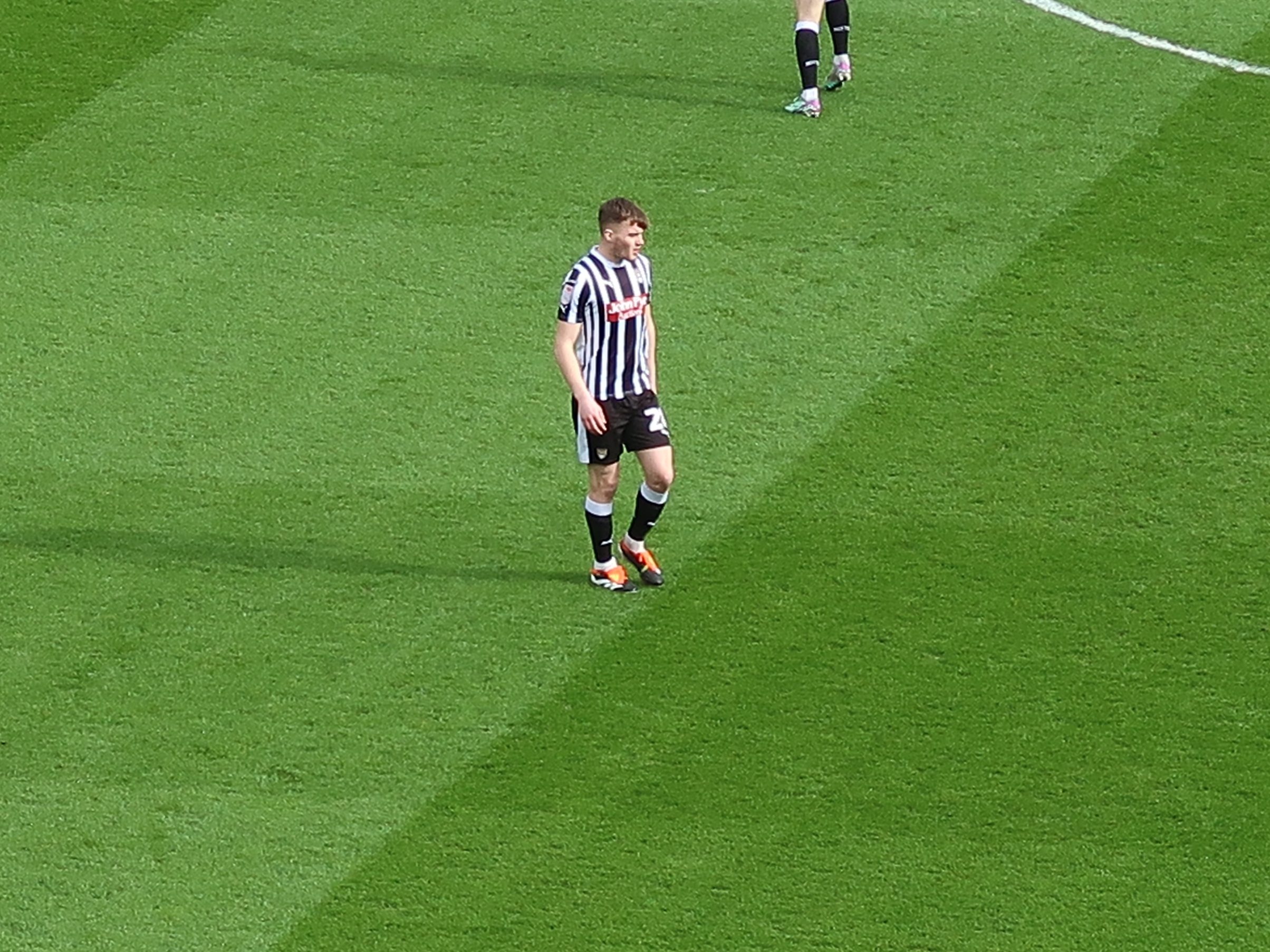
I am very much looking forward to seeing one of the Notts County players in particular. 22-year-old Lewis Macari, grandchild of one of my absolute favourite players Lou Macari. He plays at left back, and his defending is really good and proactive. I do wonder, if he has been instructed not to go forward. He does not try any overlaps, even though he looks technically gifted and sharp. Perhaps Notts County – on a bad run with only one win in six or seven games – are focusing on not giving anything away at the back.

Despite their bad run, Notts County seem determined to stick to their passing game from the back, rather than just clearing their lines and pushing up, with their keeper very much involved in their play-out from the back. The look technically good and assured, just lacking in belief and ideas when they get to the final third. But then, after half an hour, they lose the ball playing out for the first time, and they are immediately punished and go one goal down. That seems to knock the confidence out of them. They become more hesitant, lose the ball frequently.
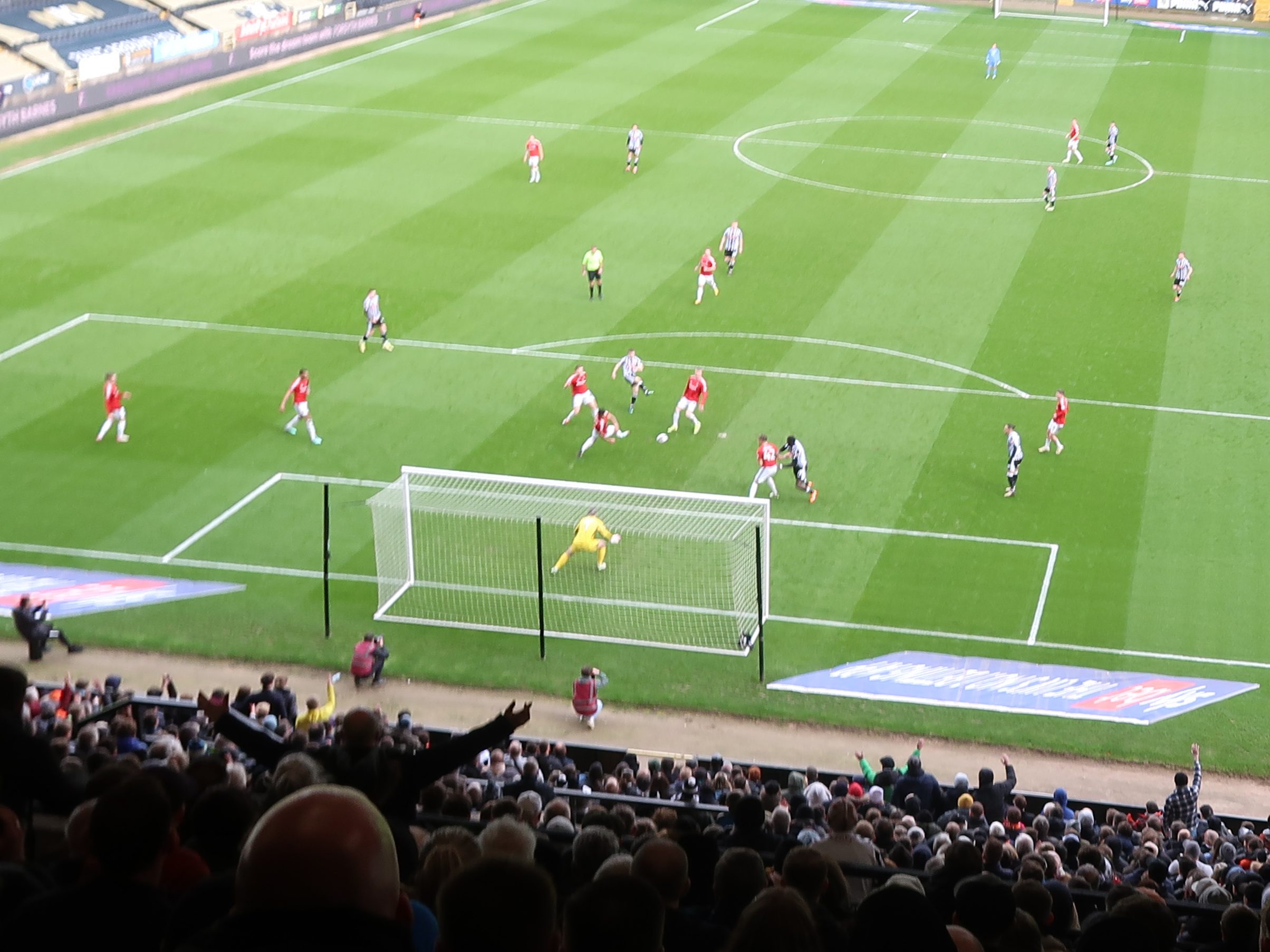
Ten minutes into the second half, though, Salford City fail to clear their lines, and Crowley pounces on the lose ball inside the area. 1-1 – and that injects some belief into the County players. But as County chase a winner, Salford start to find space behind them. And three minutes from the end, a clearance from the Salford defence is headed on, and their striker McAleny – who also got their first goal – gets in behind to slot home the winner for Salford. A County performance typical of a team short of confidence. Most and arguably also the best of the play. But little end product up-front, and very vulnerable at the back.
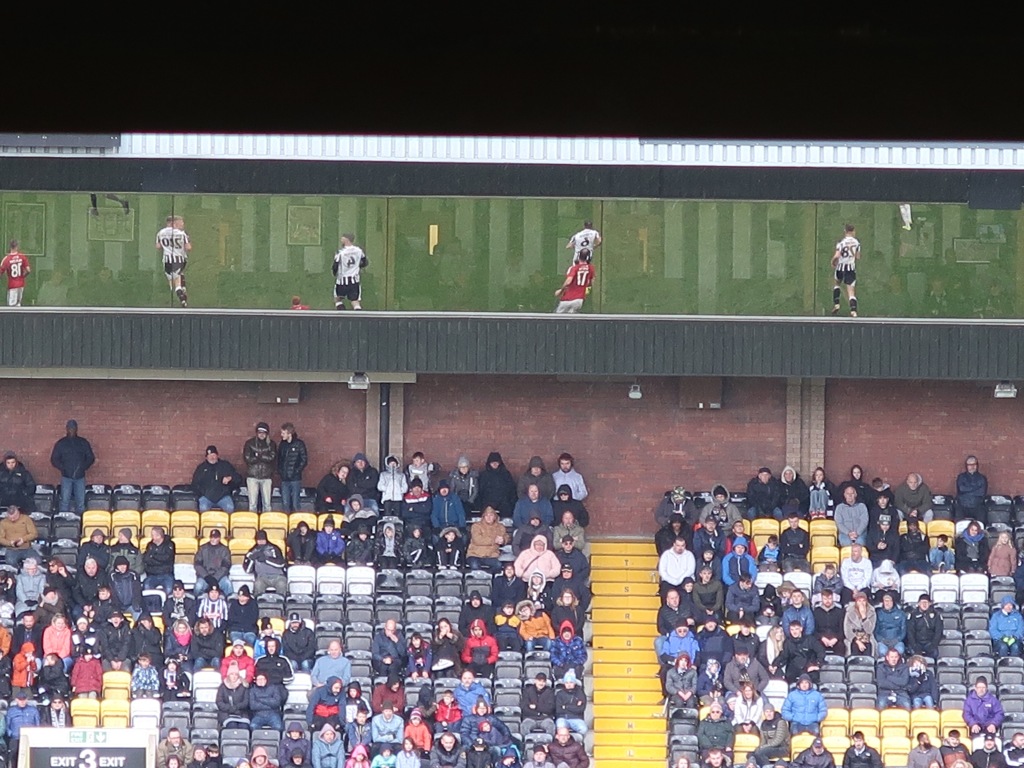
I stay behind after the final whistle, while the stewards check all the seats. The supervisor takes me to the main stand. He goes inside and asks, if I can be allowed a look around. I don’t know if he had hoped to take me upstairs, but I am just allowed inside the reception to see a trophy and the blue plaque commemorating County being an inaugural member of the league. As I leave the reception, there is a small crowd outside waiting for autographs. I just have time to think that maybe there is a reason why the matchday programme is matte, writable paper, and why the supervisor has taken me to the main stand. I turn around – and there is Ryan Giggs leaving it just behind me. After all those years waiting for him in vain after matches at Old Trafford, of course I had to get his autograph here in Nottingham – in the triangle of historic sports grounds.
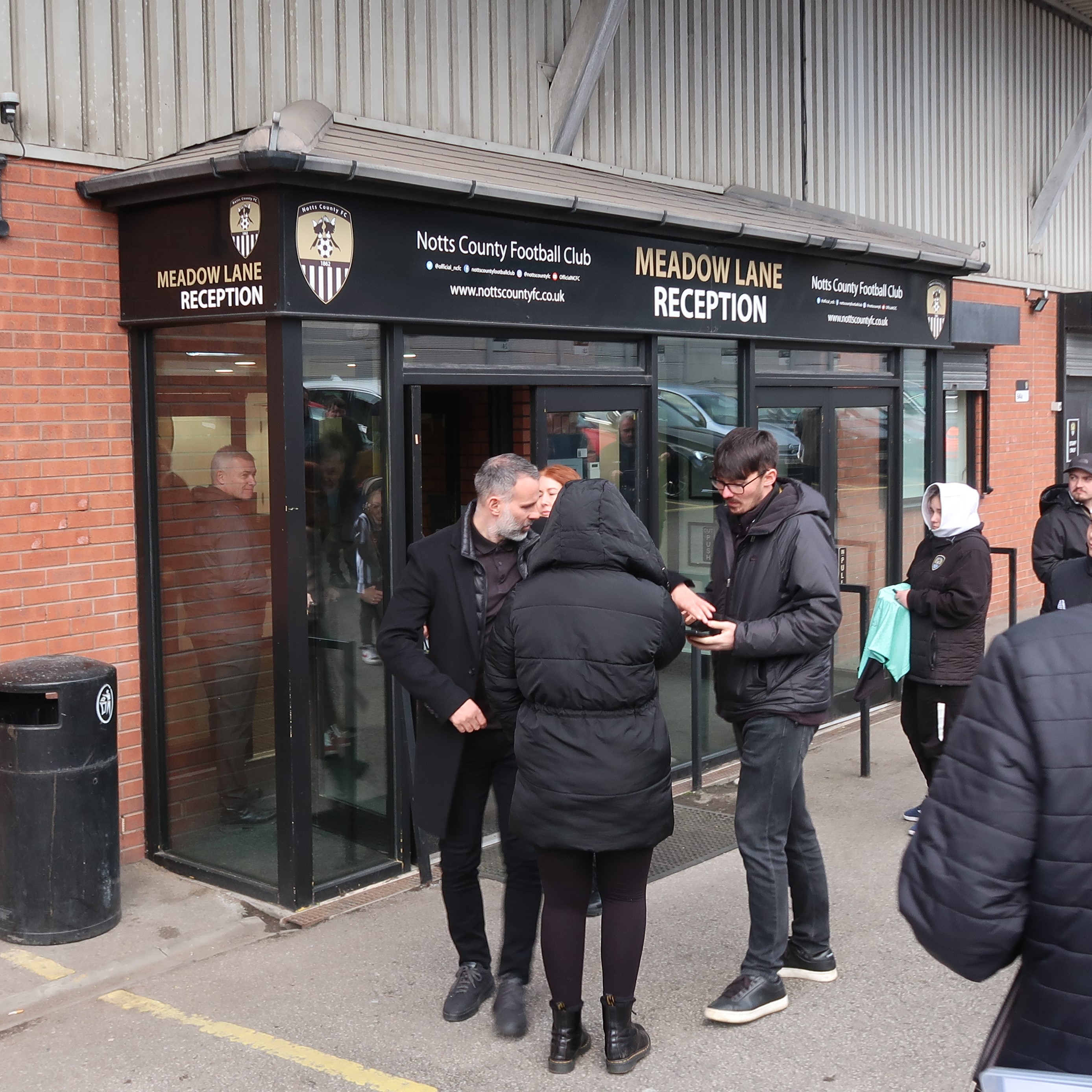
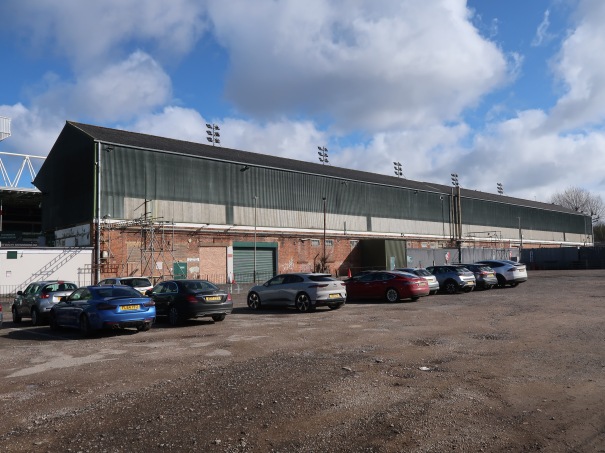
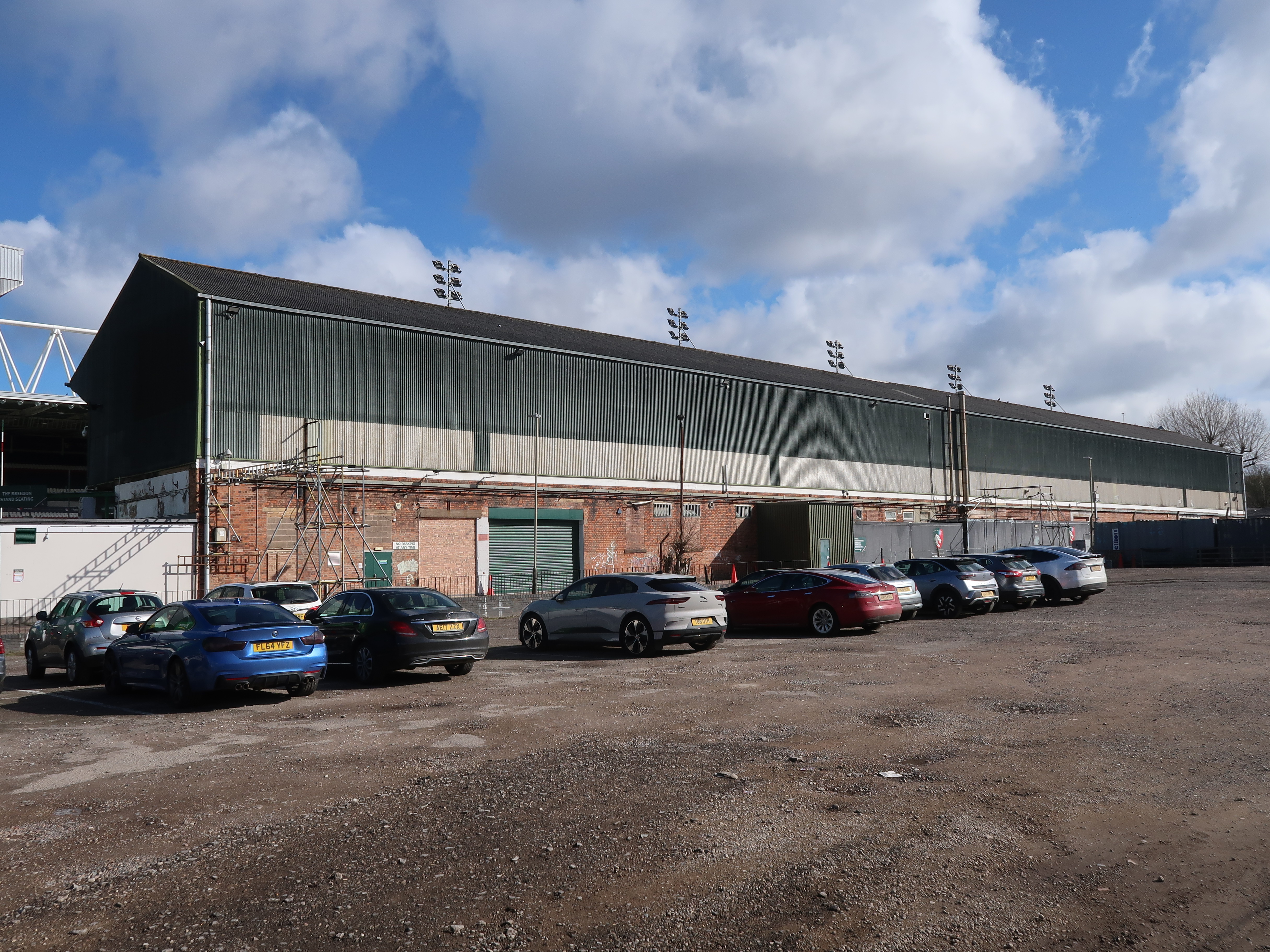
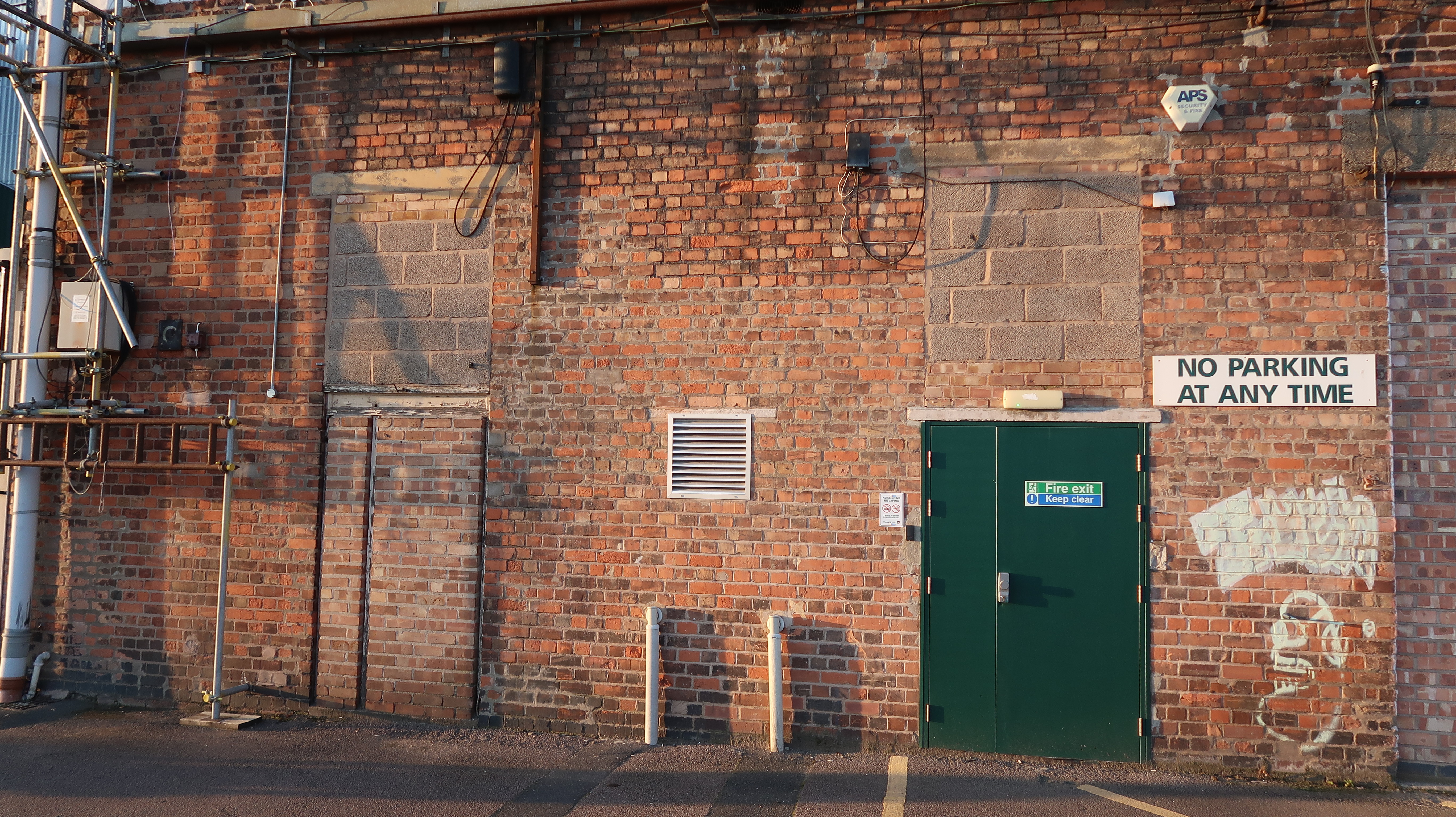
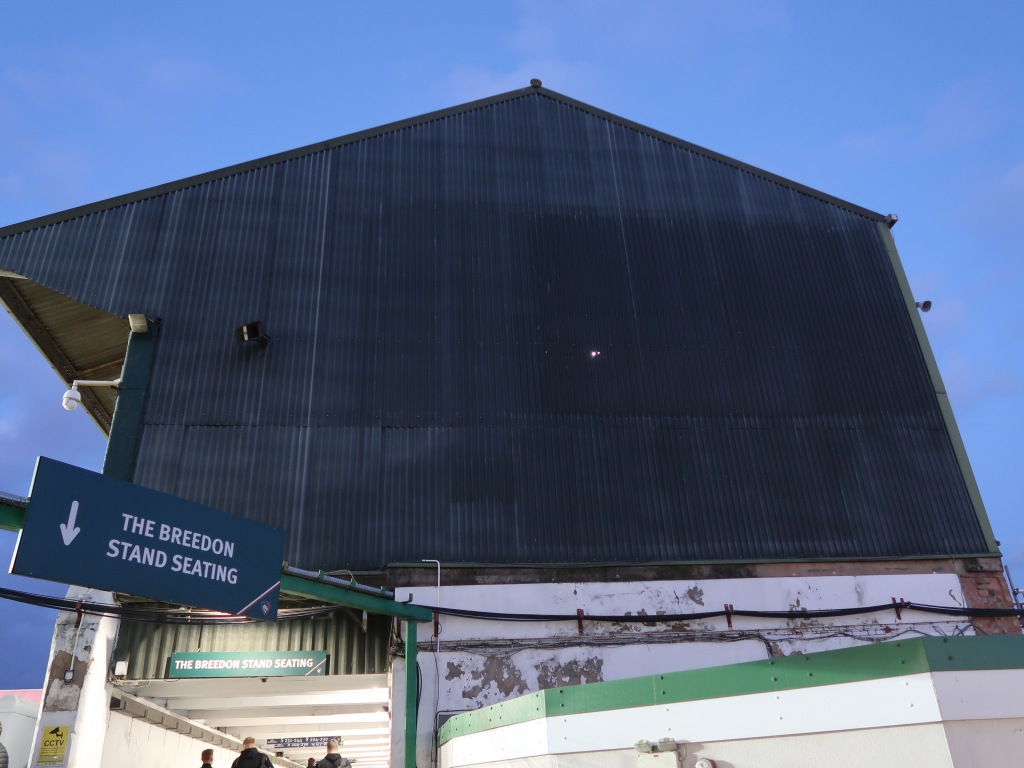
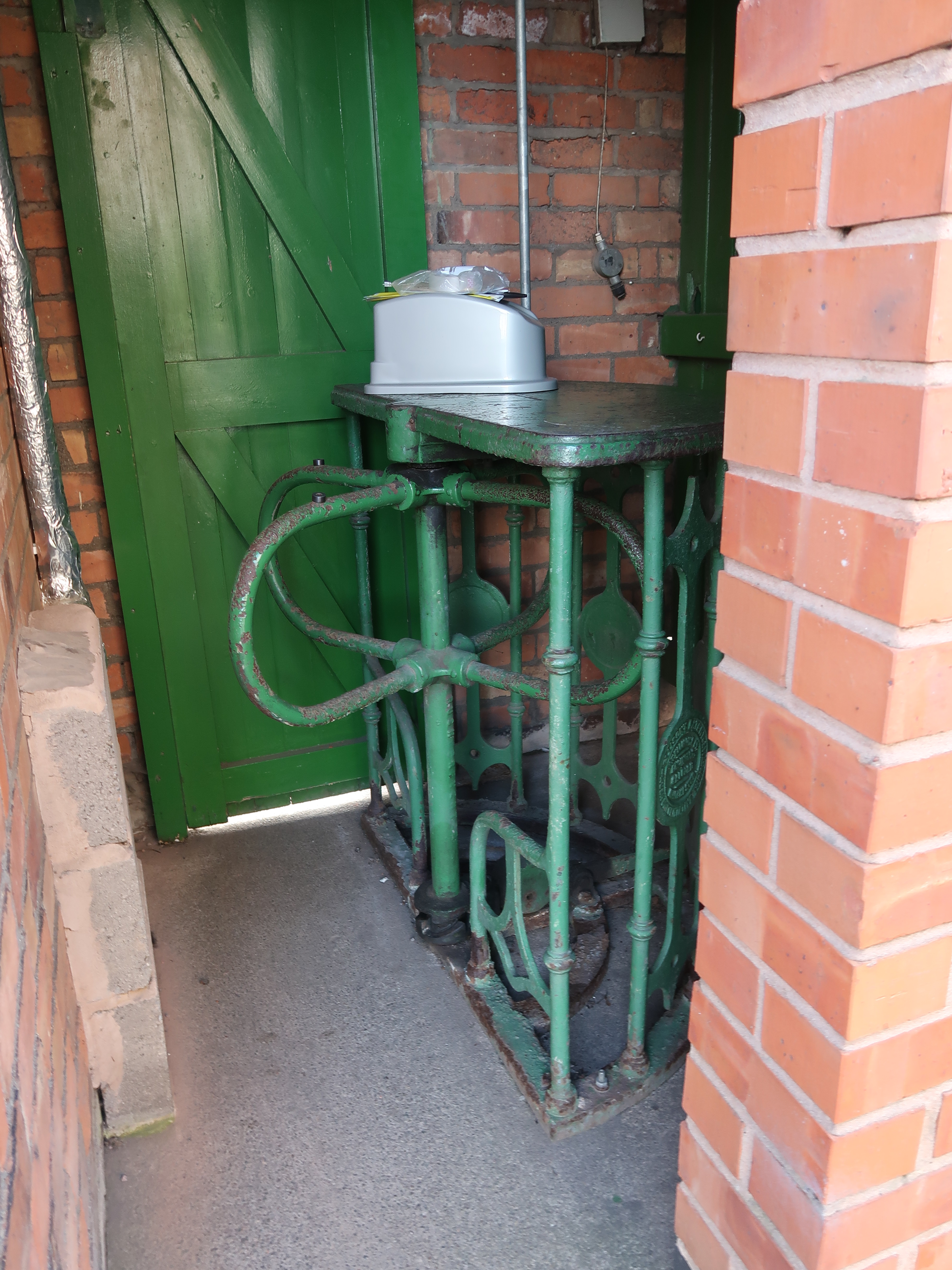
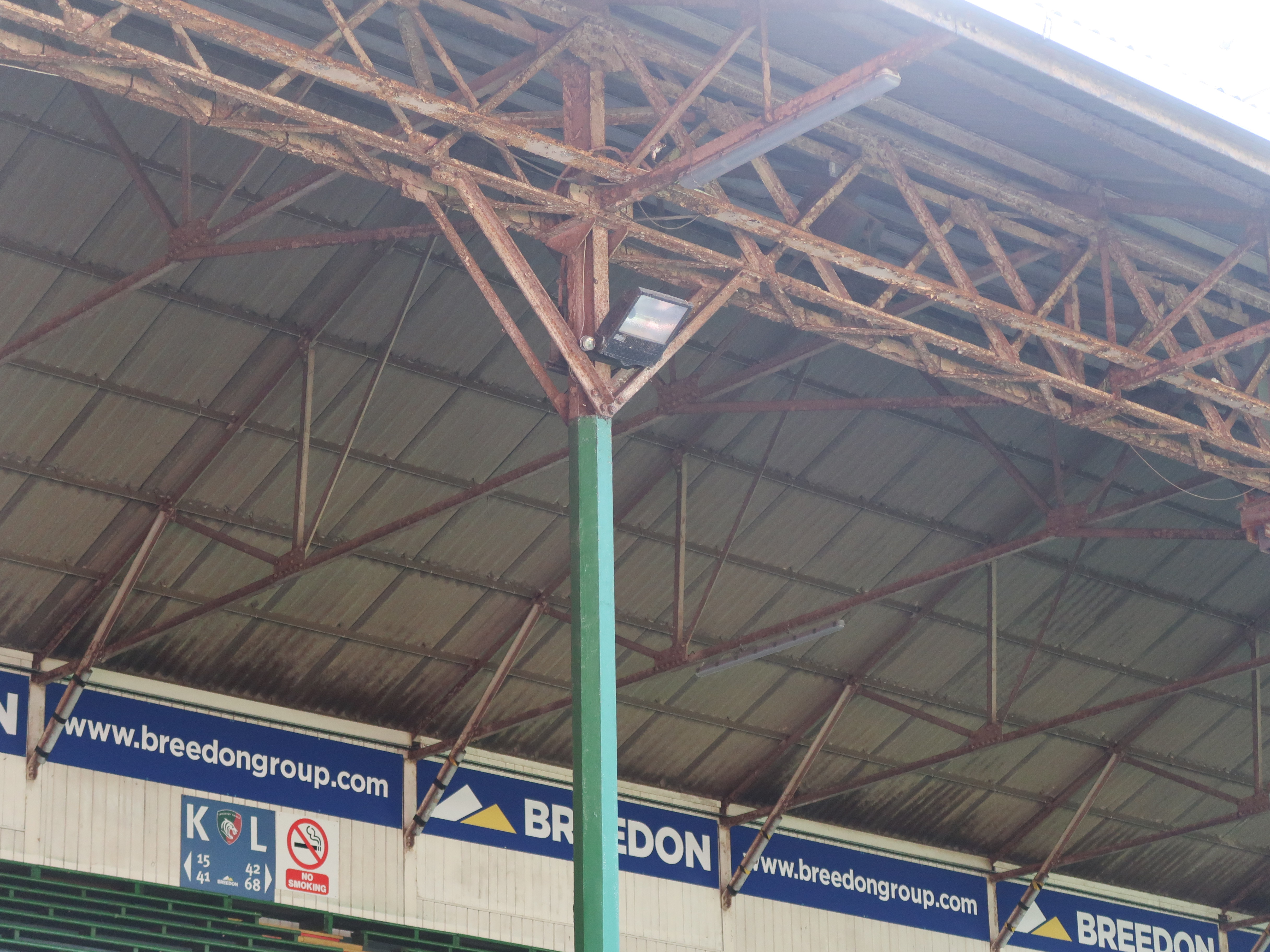
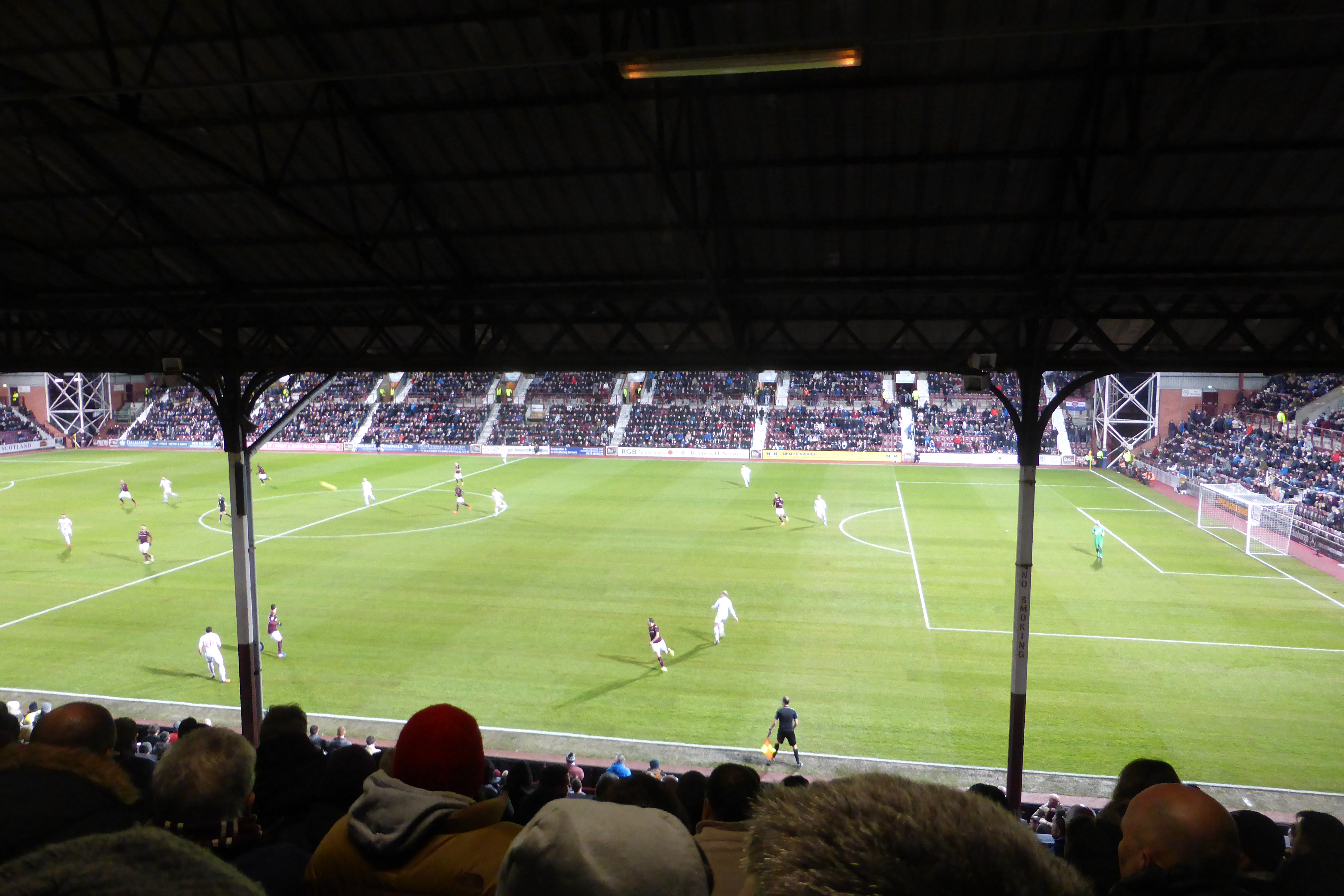
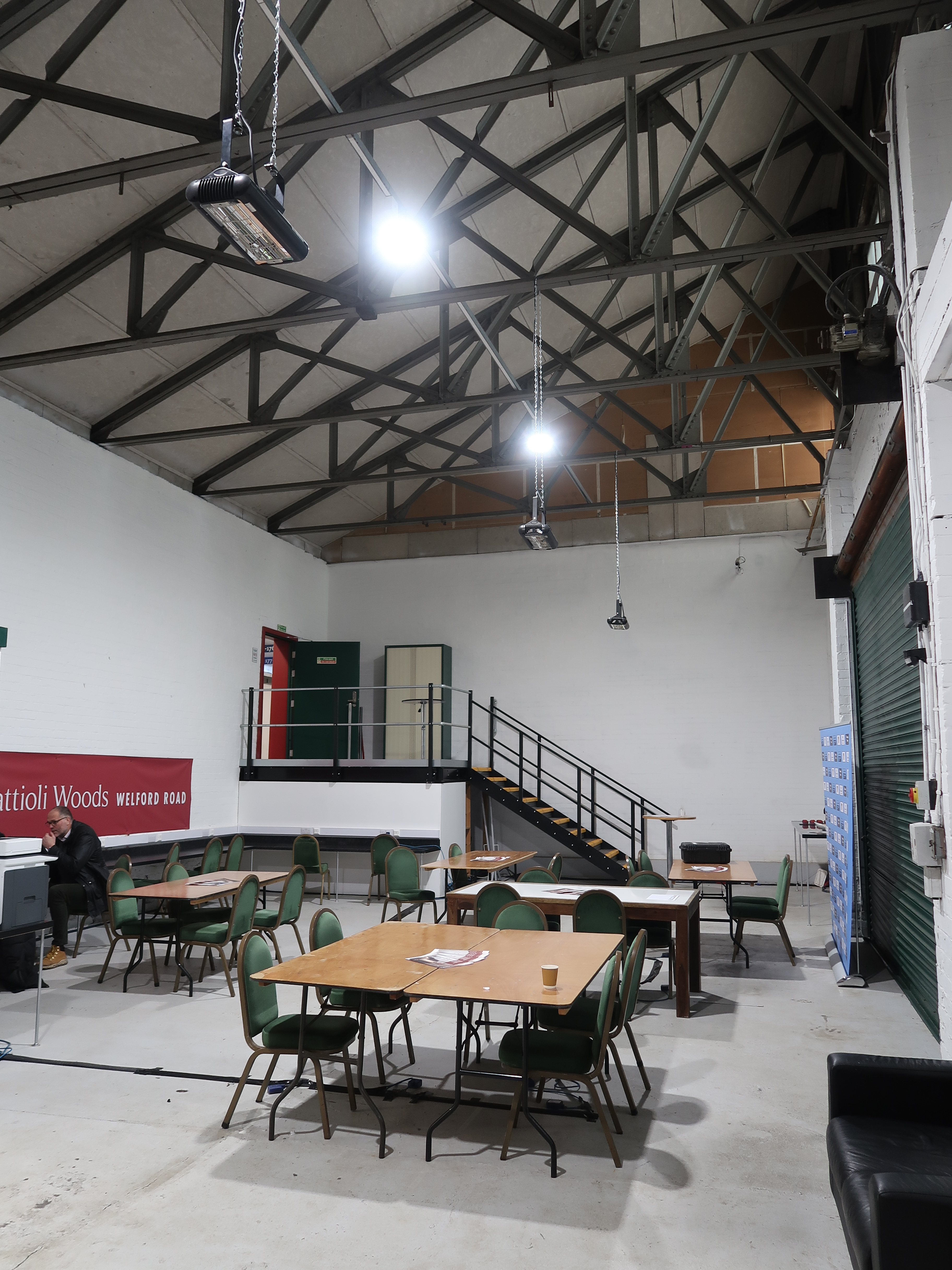
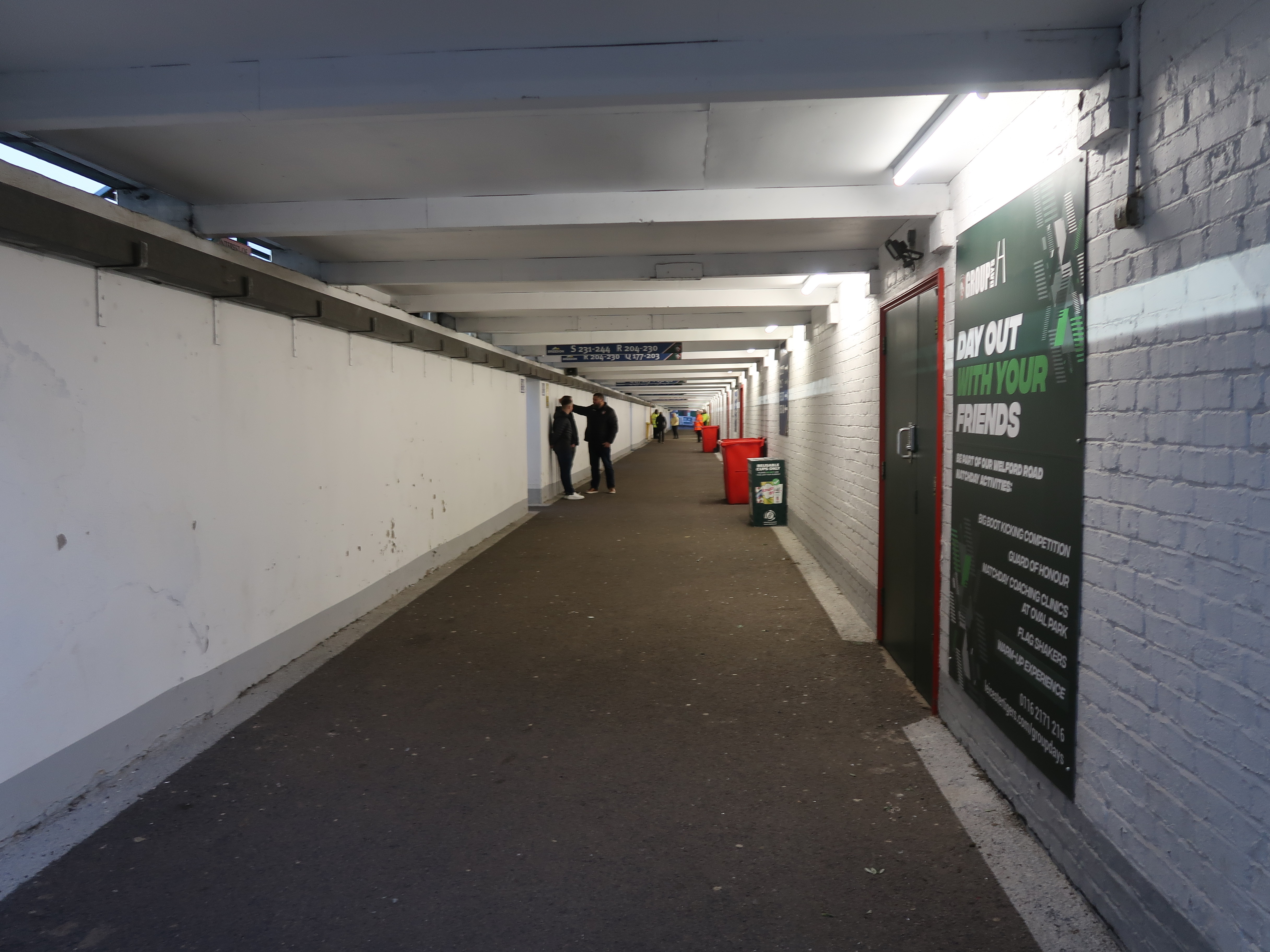
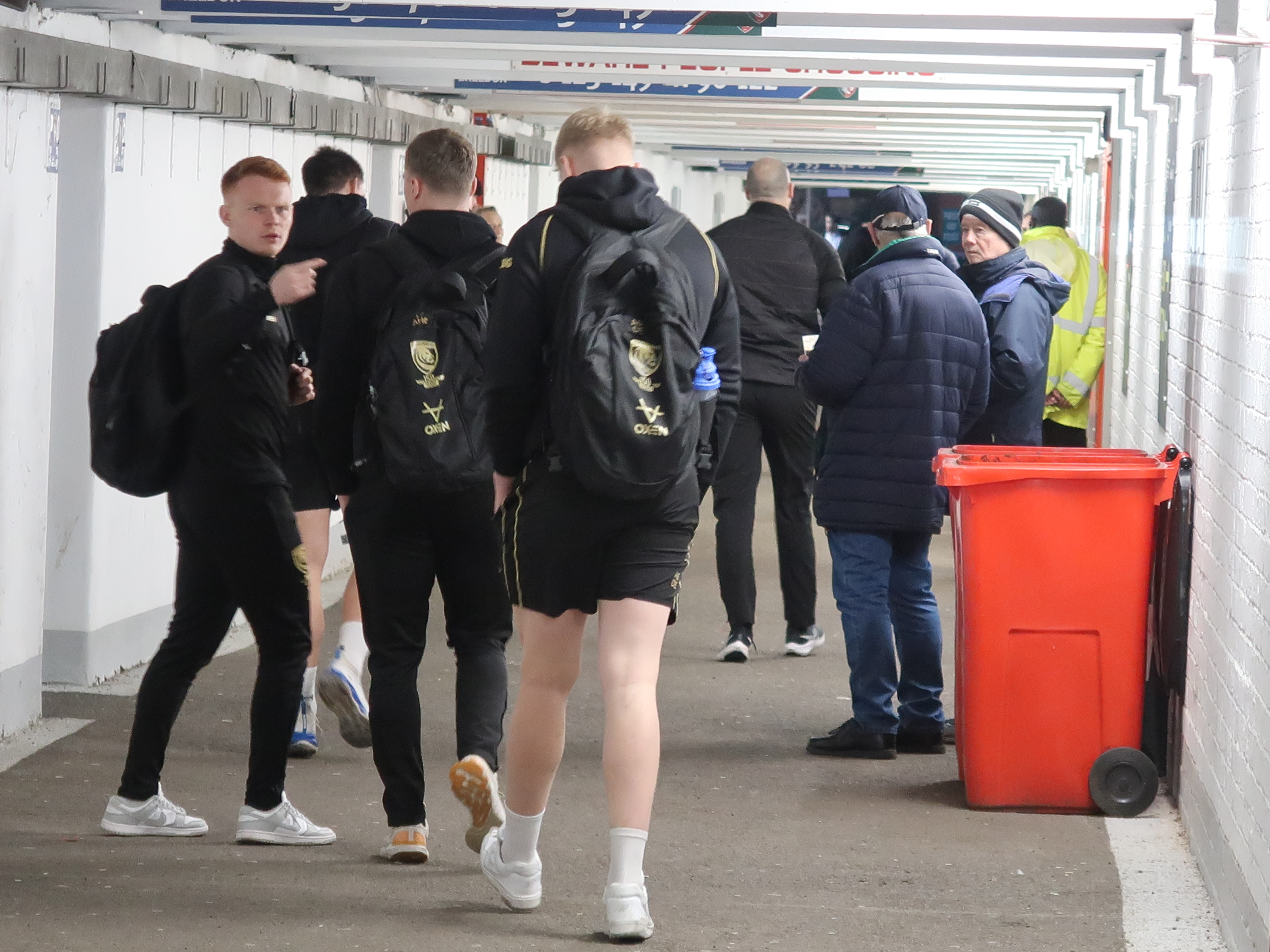
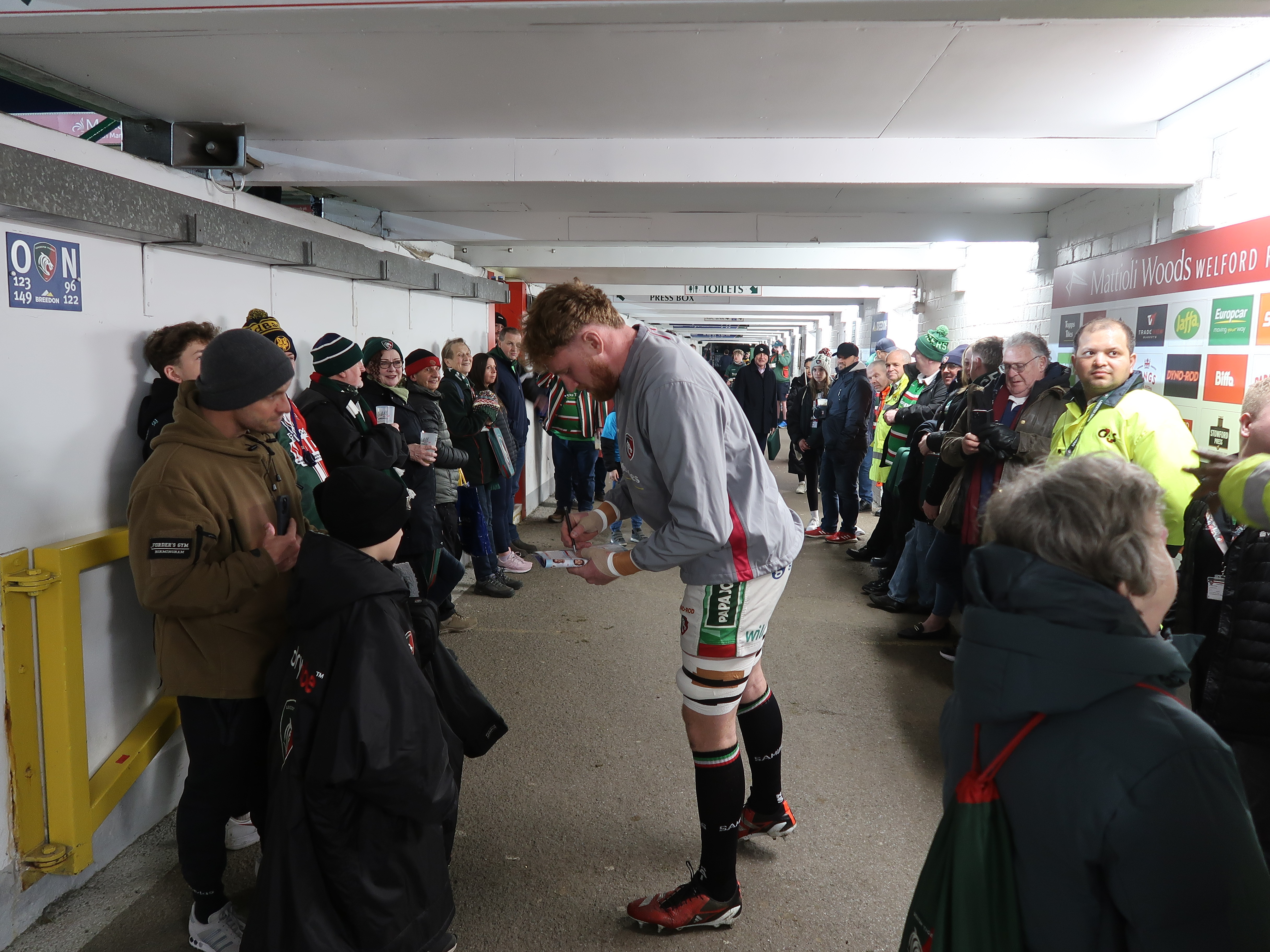


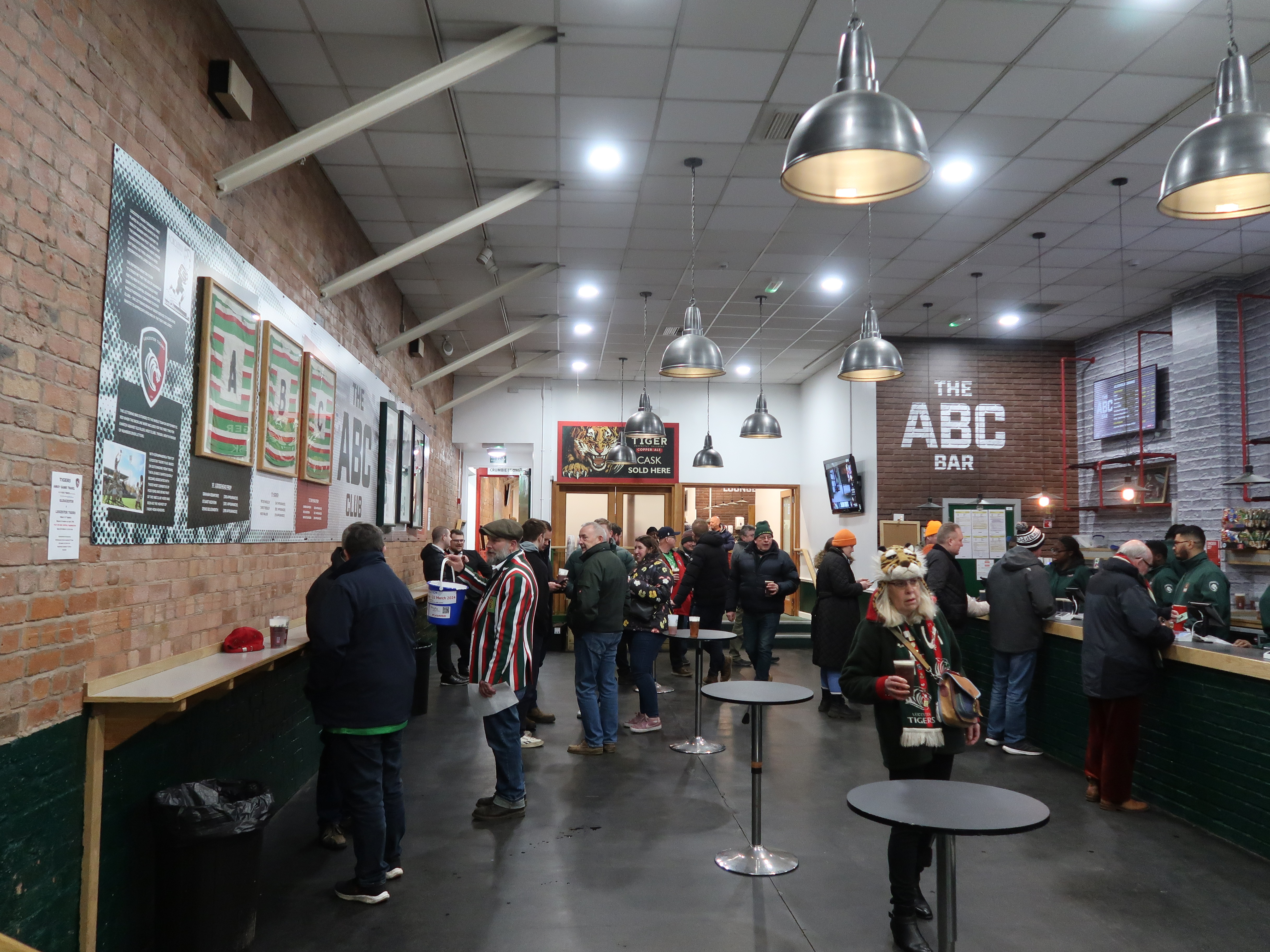
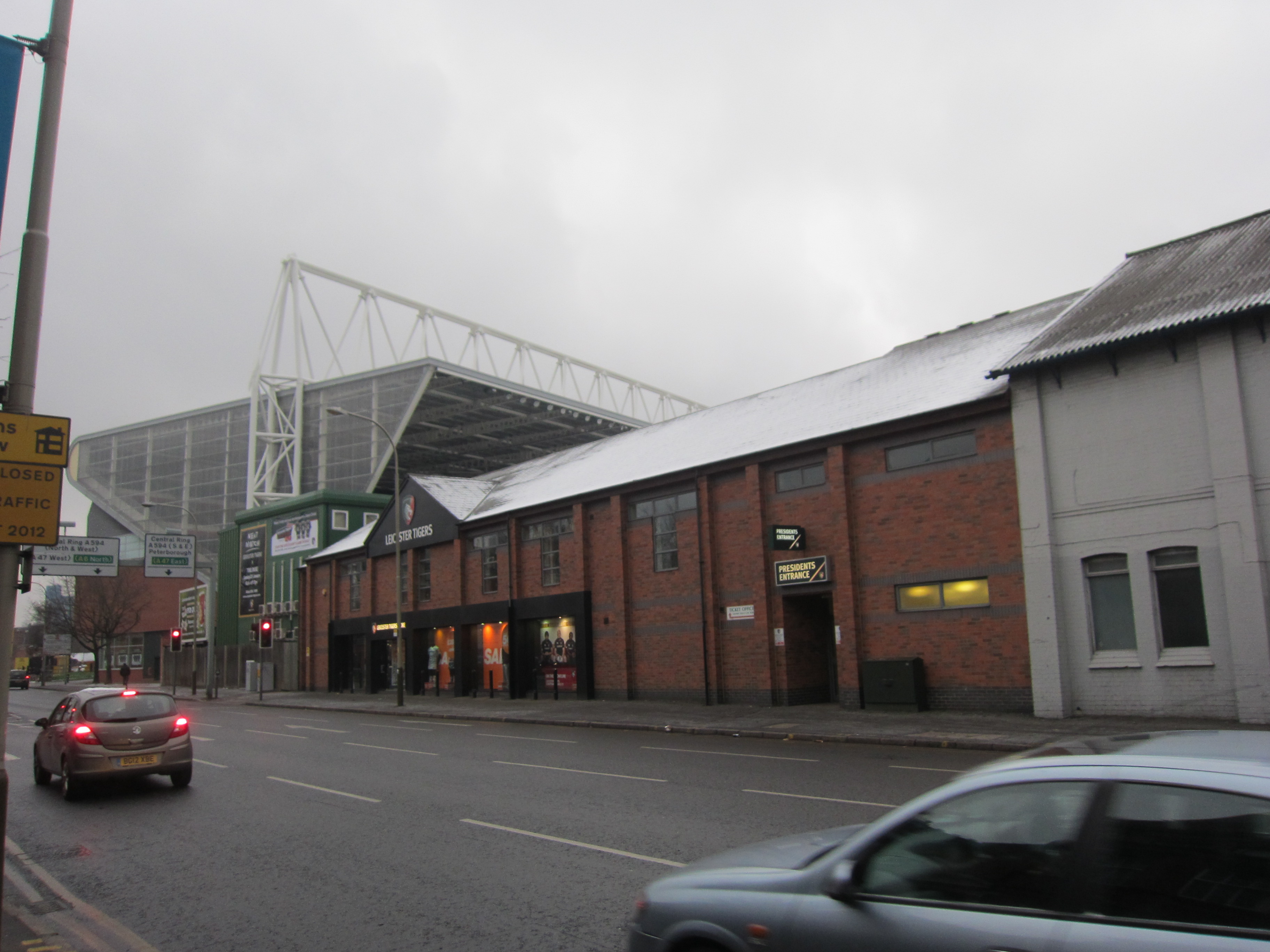
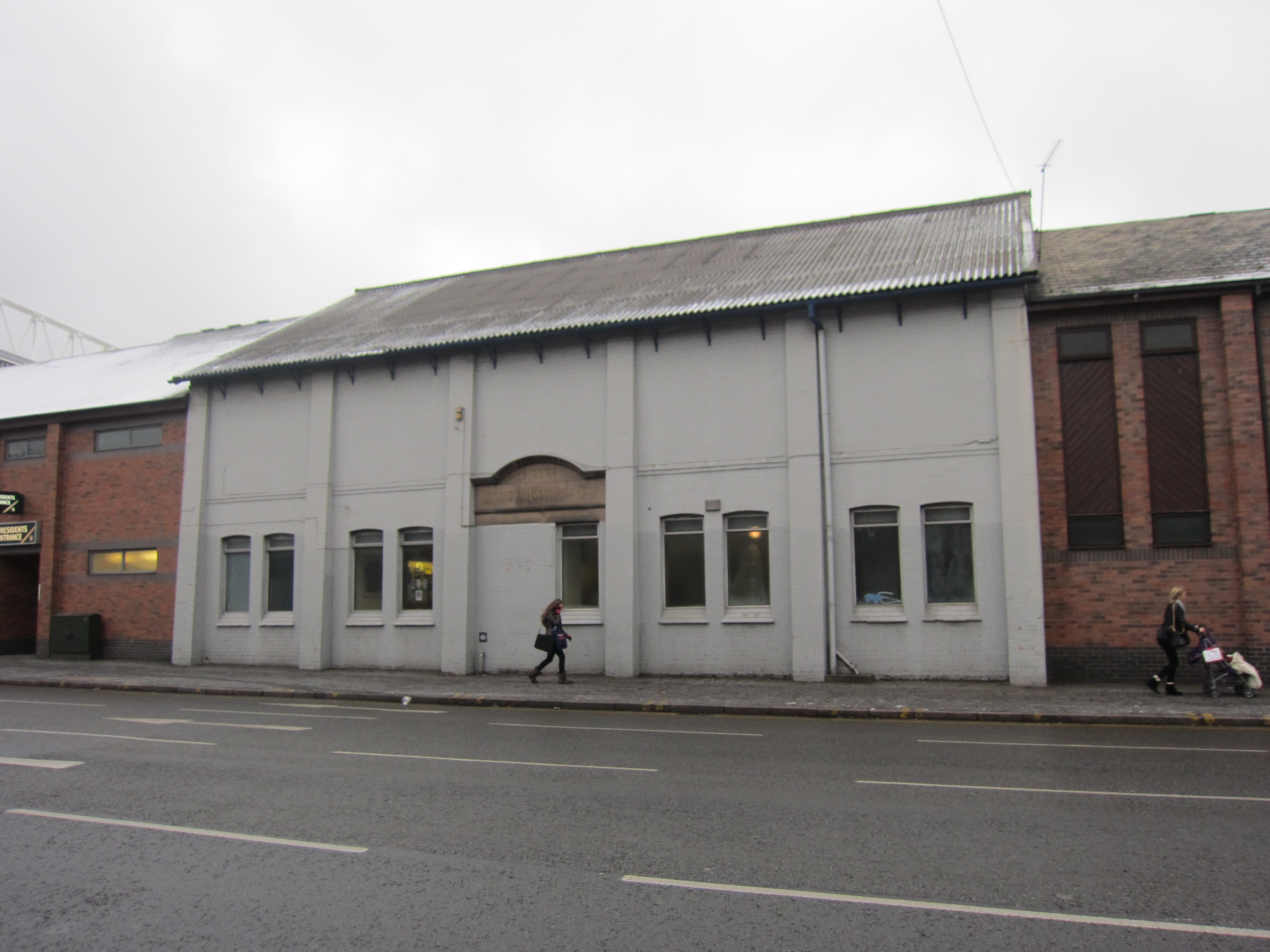
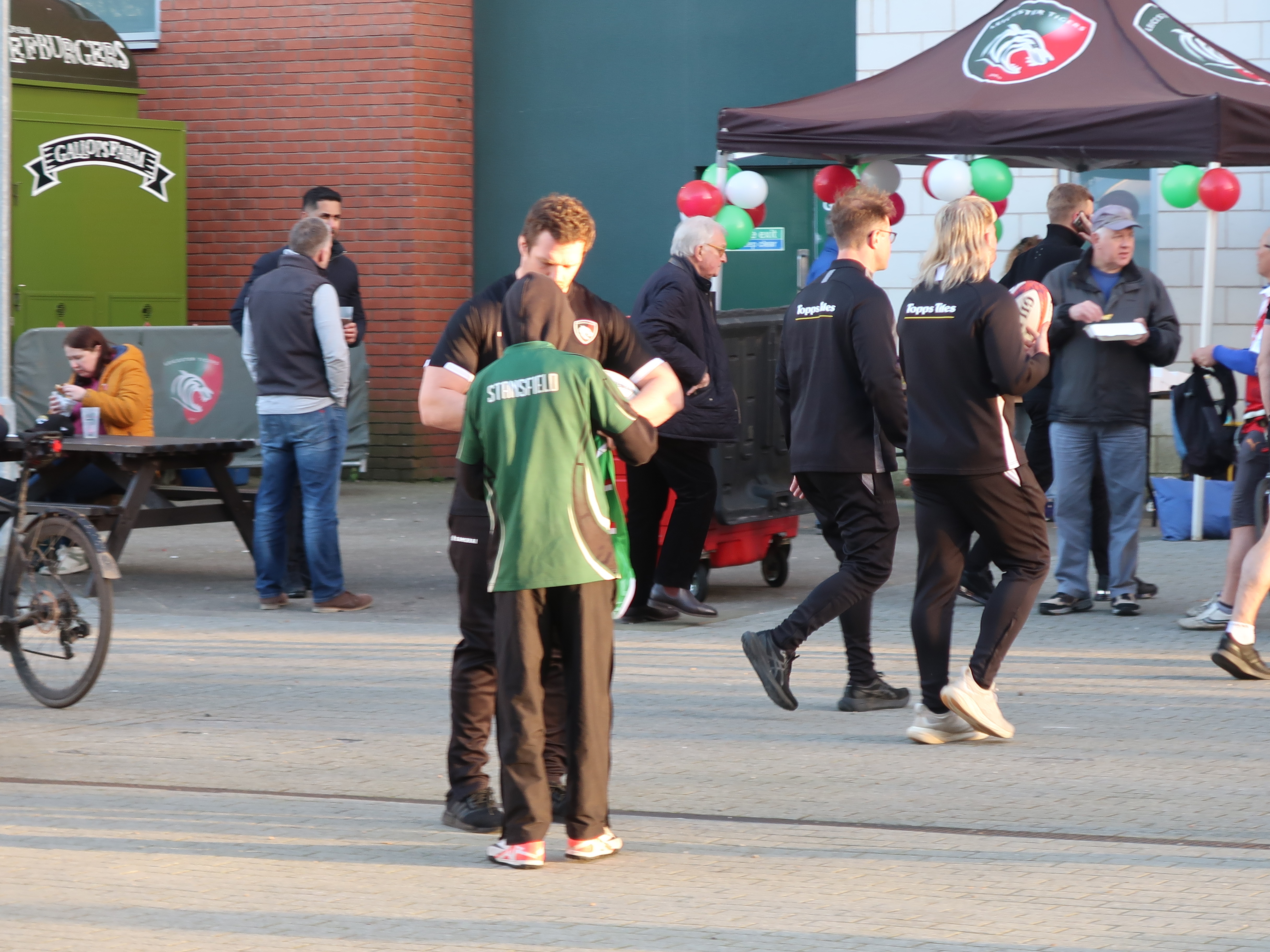
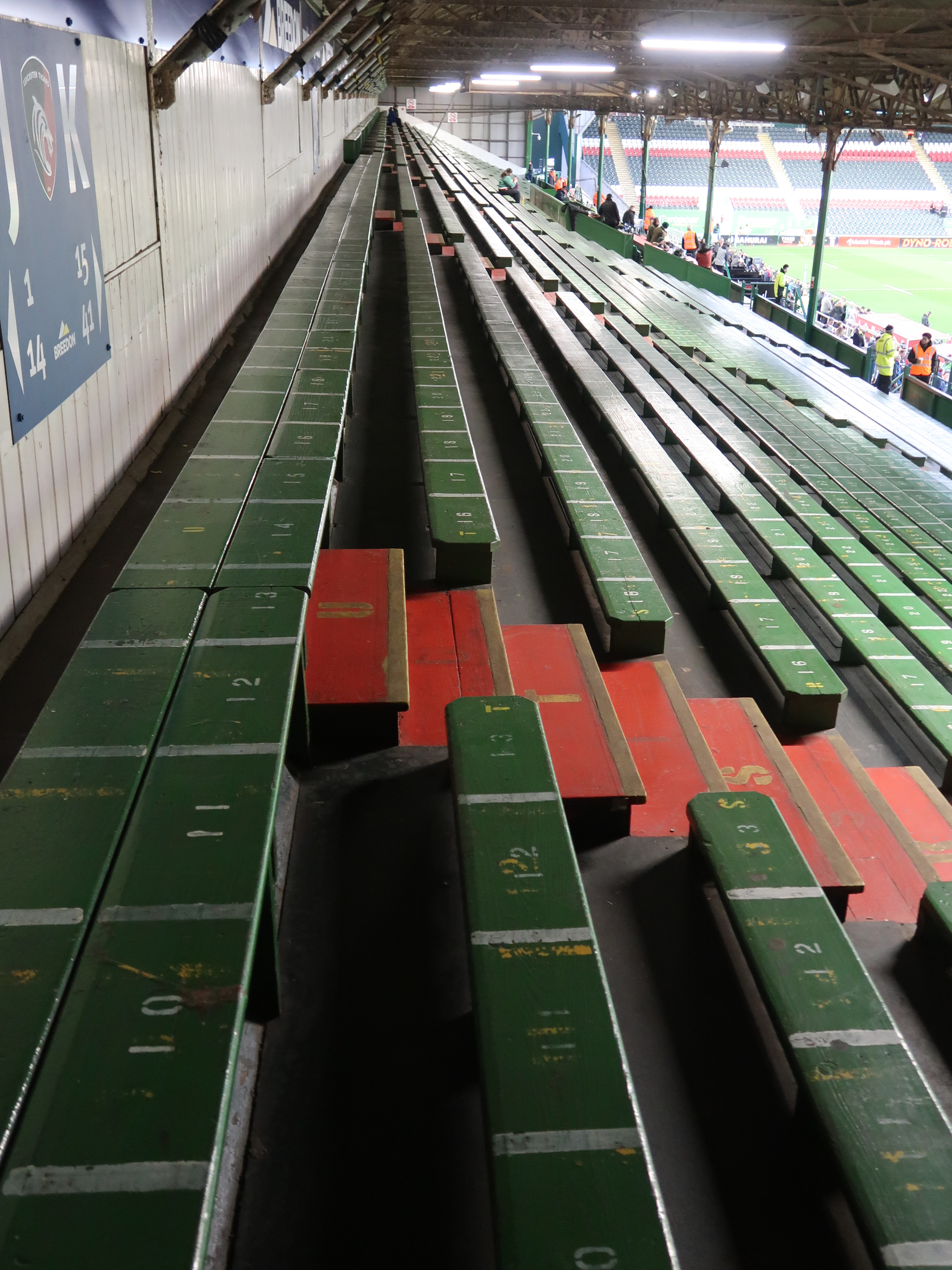
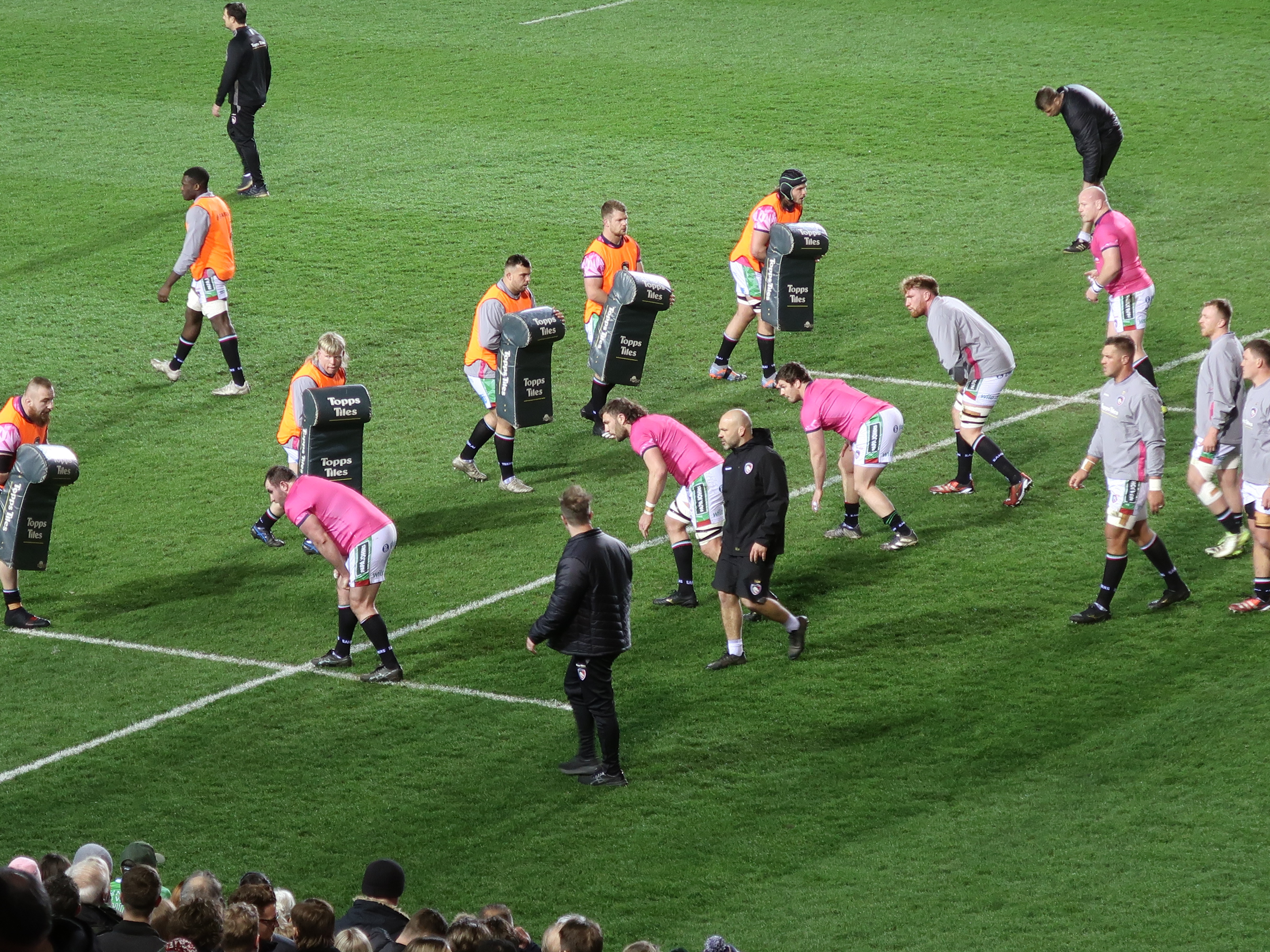
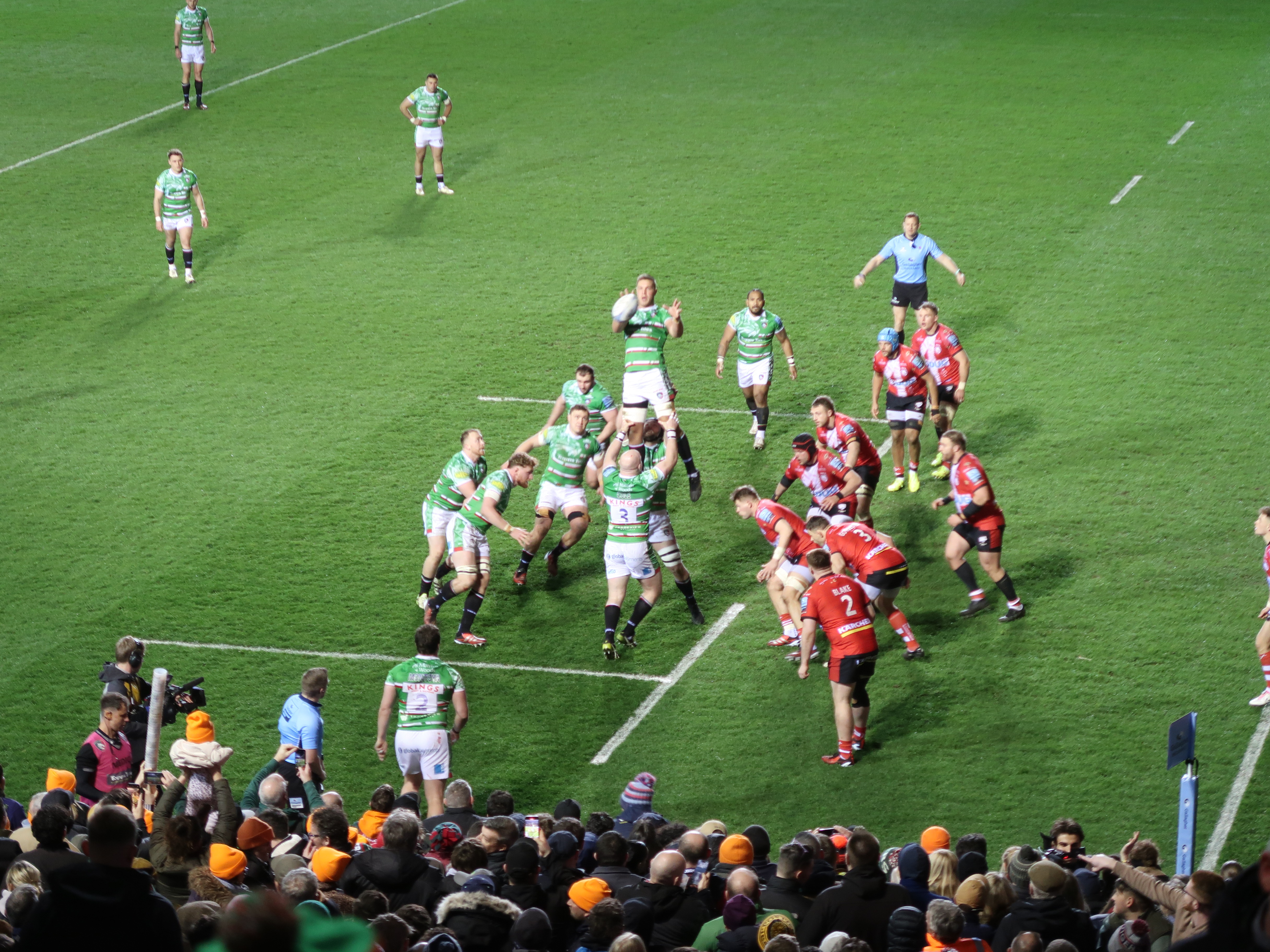
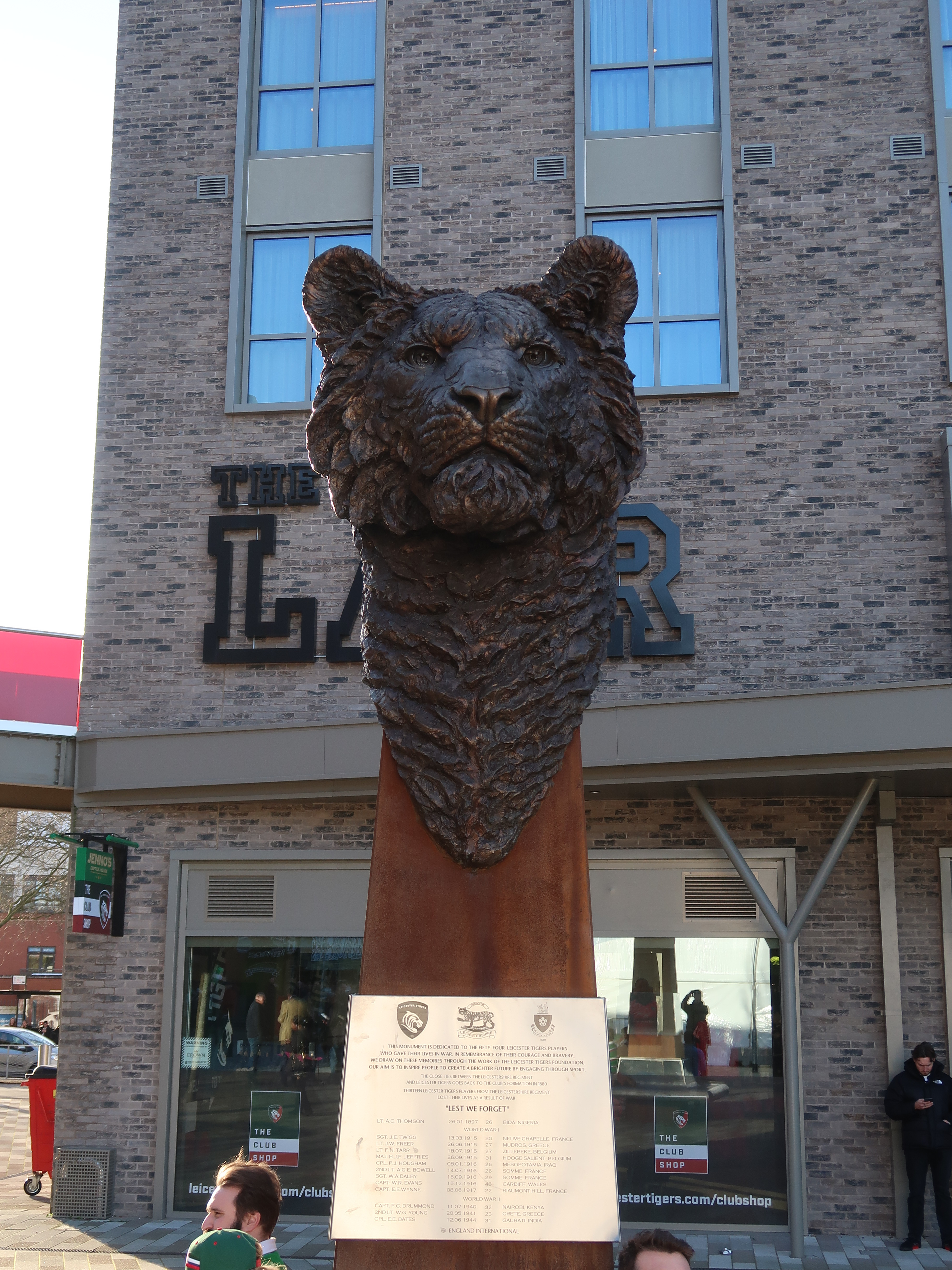
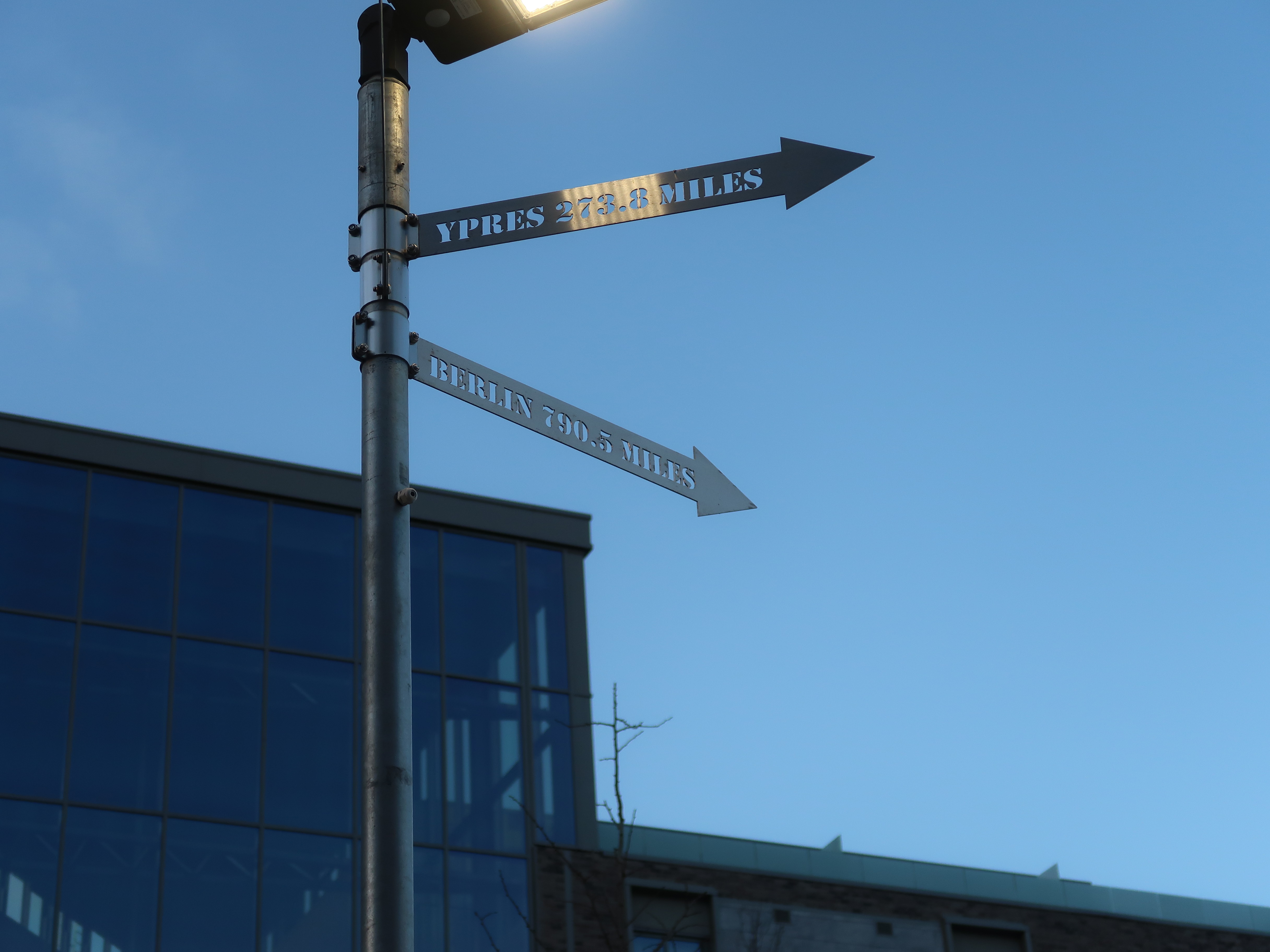

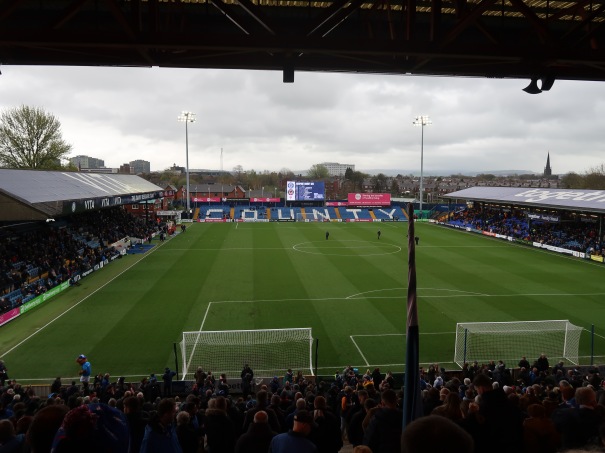
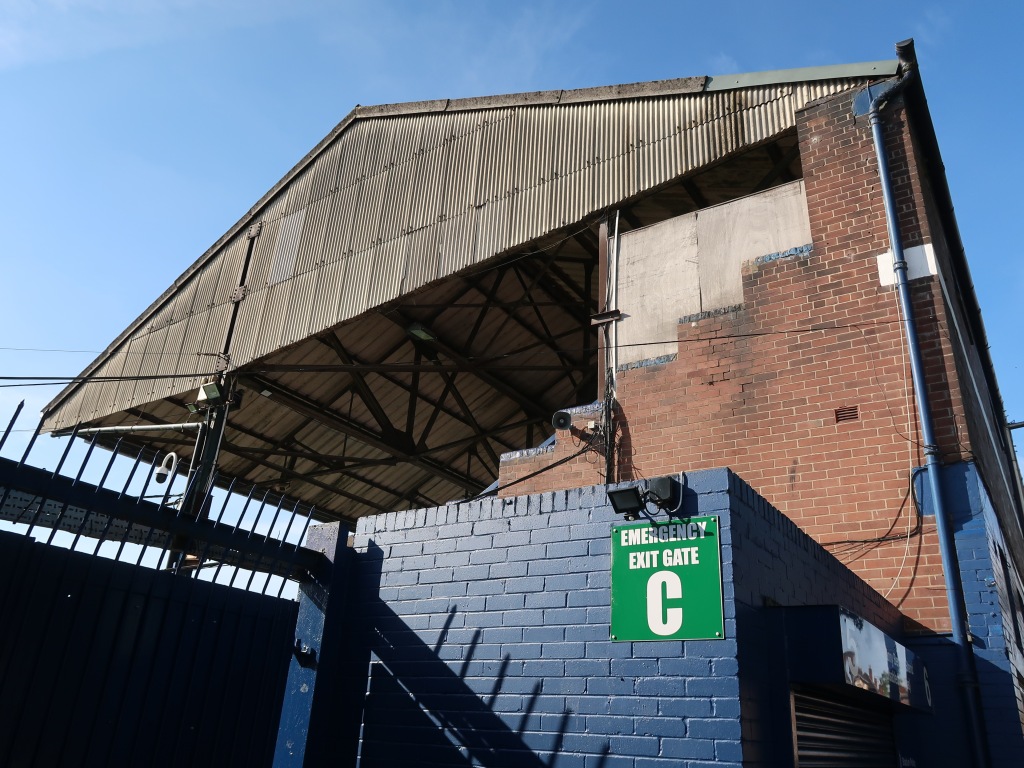
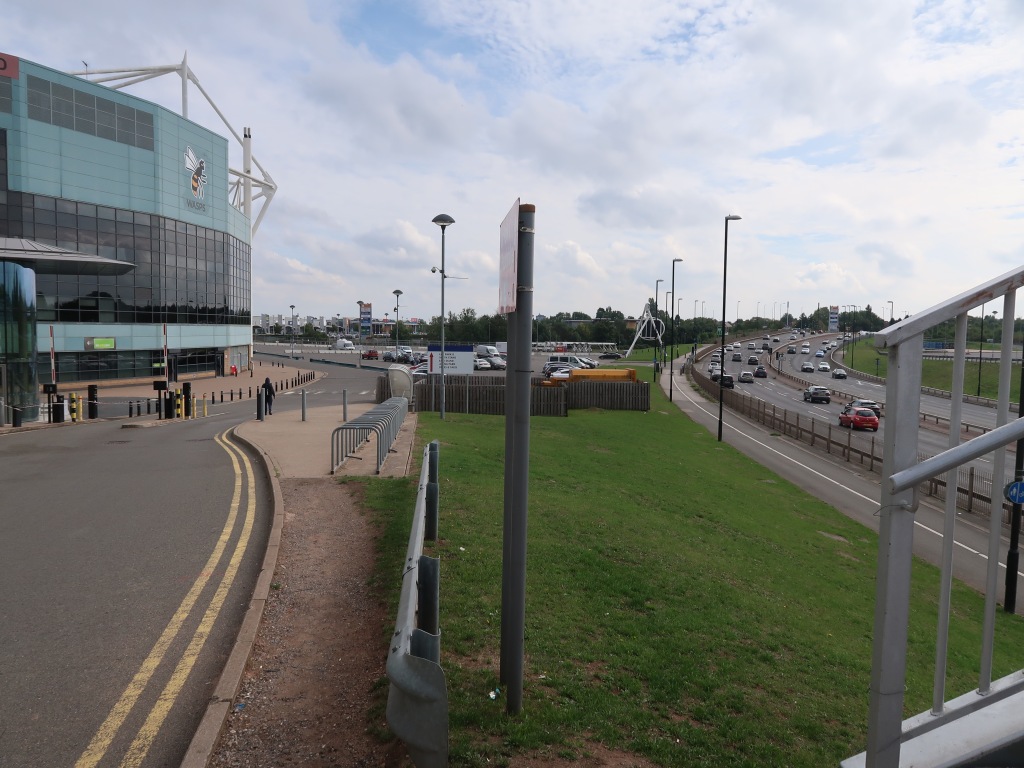
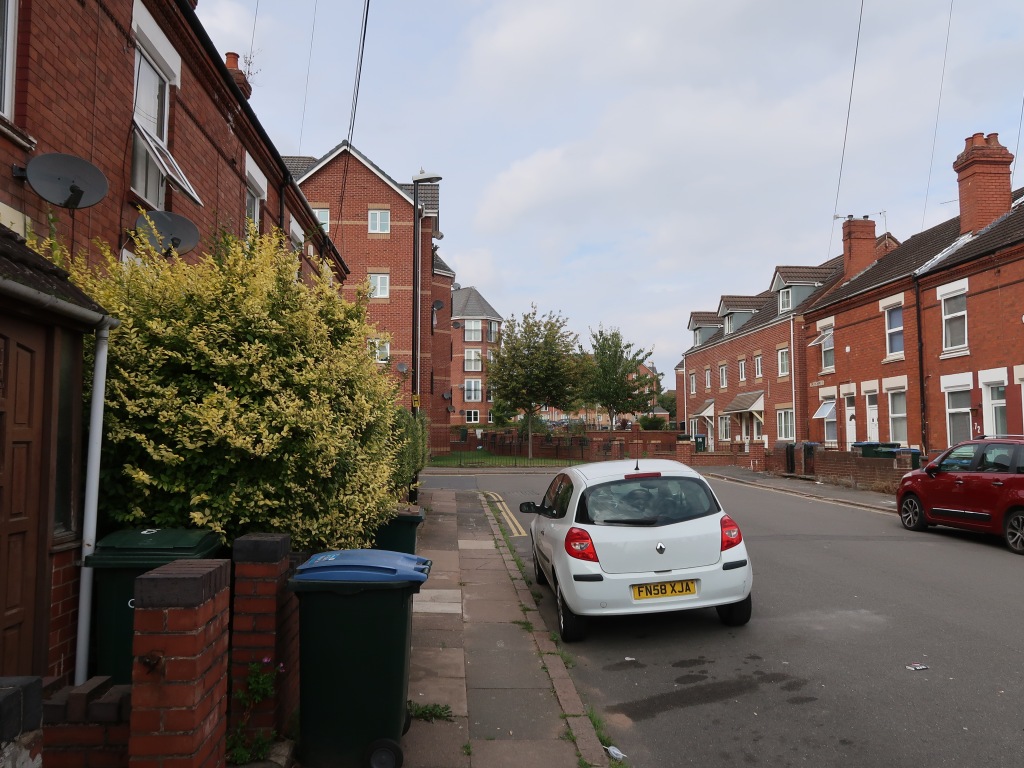
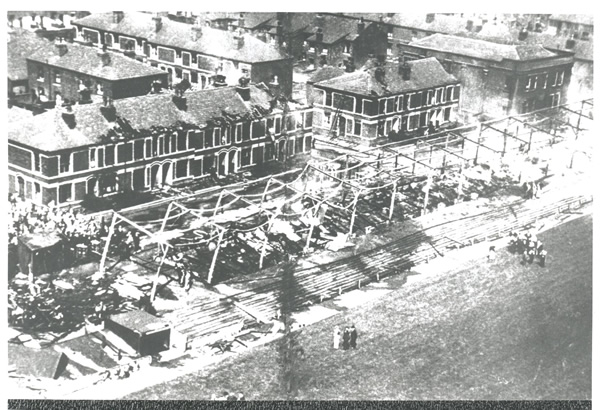
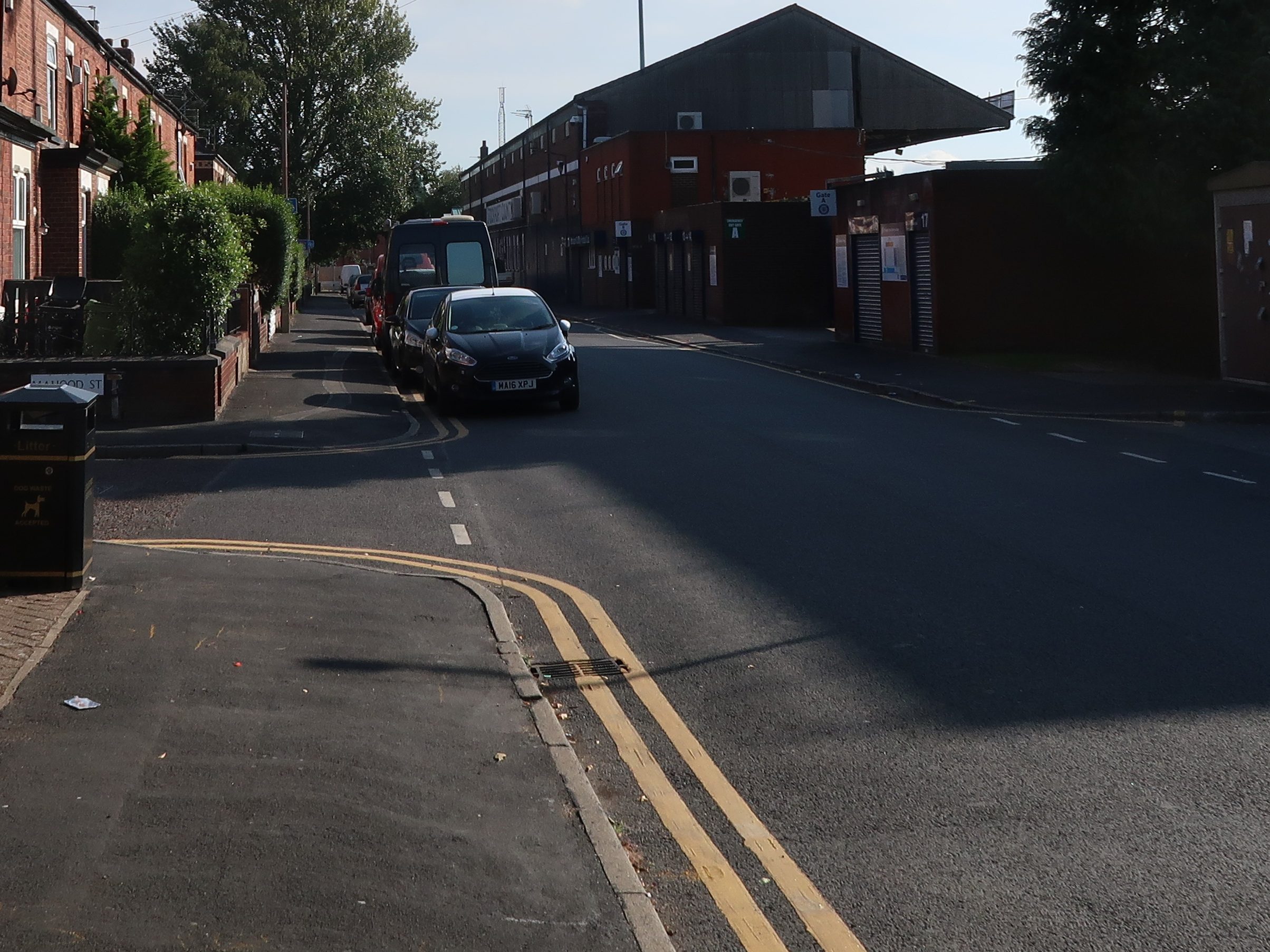

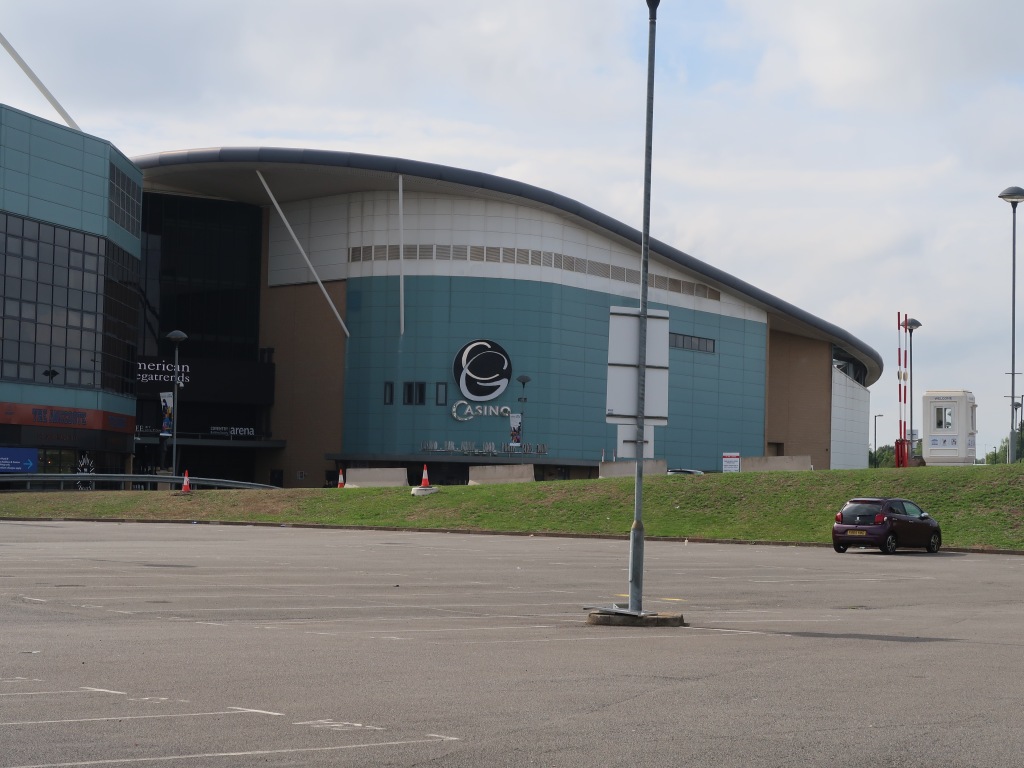
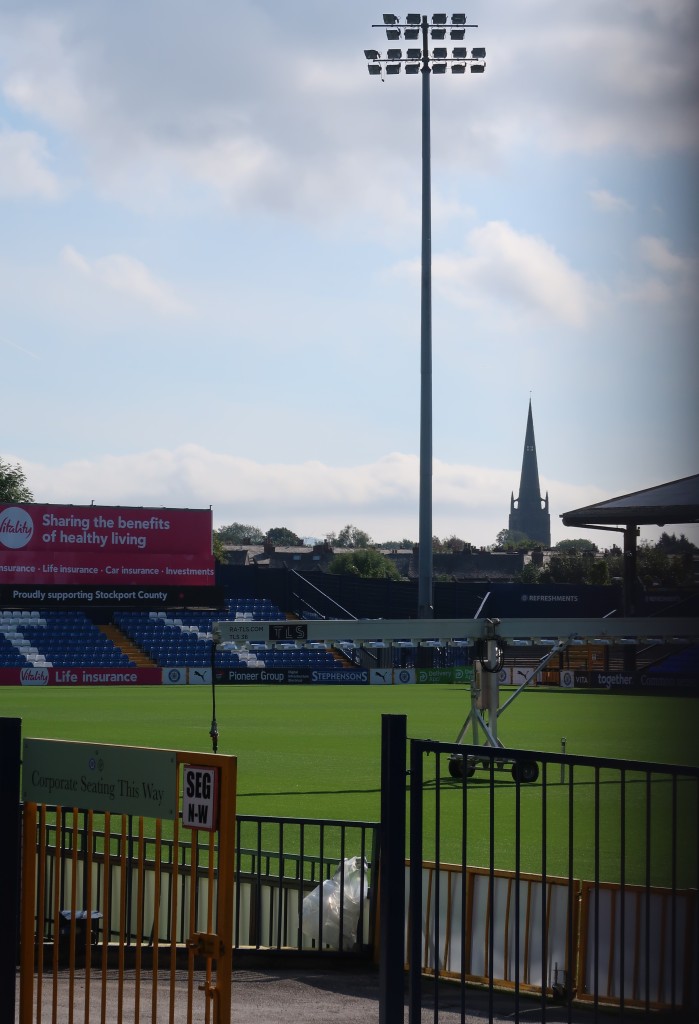

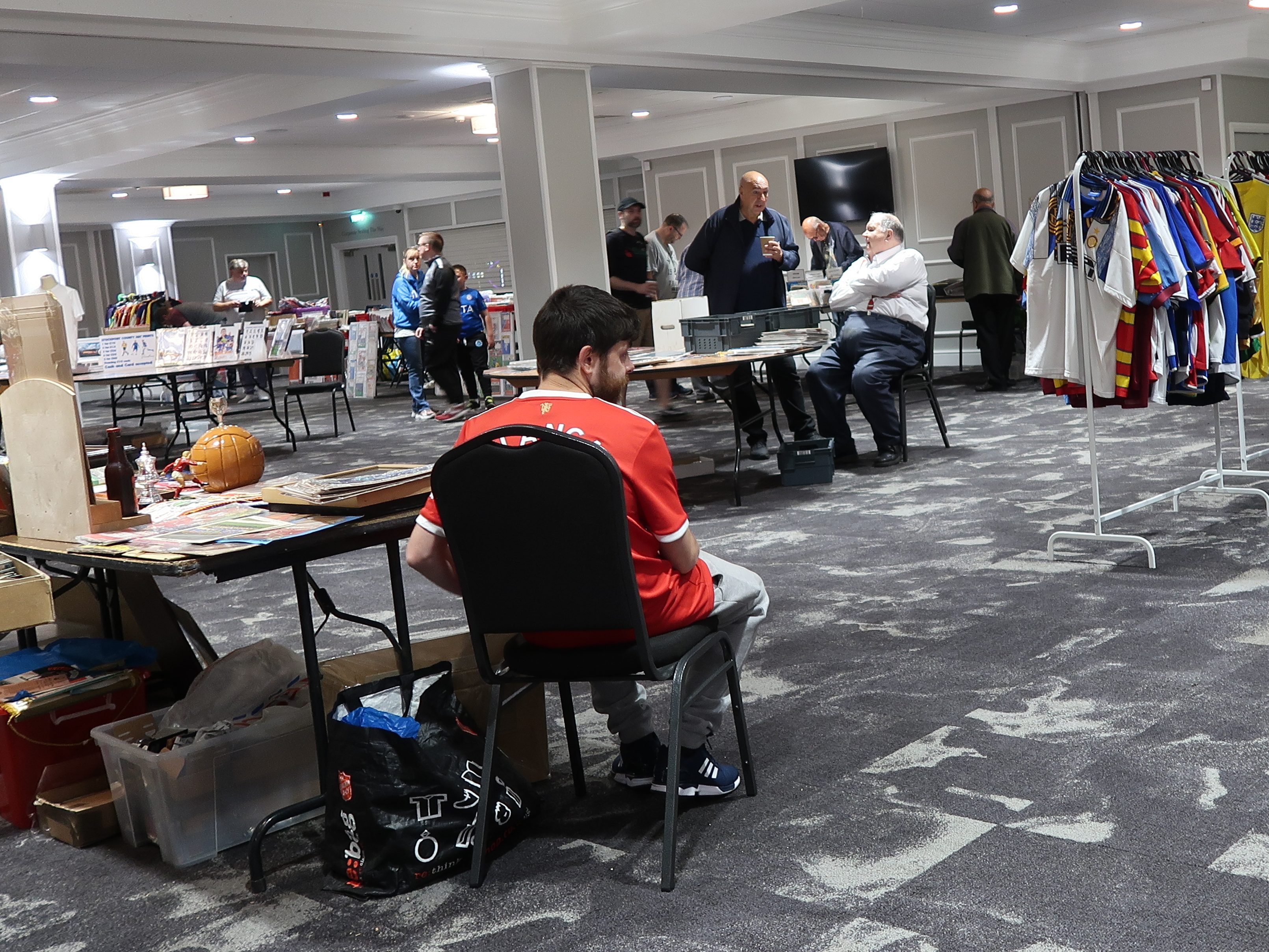
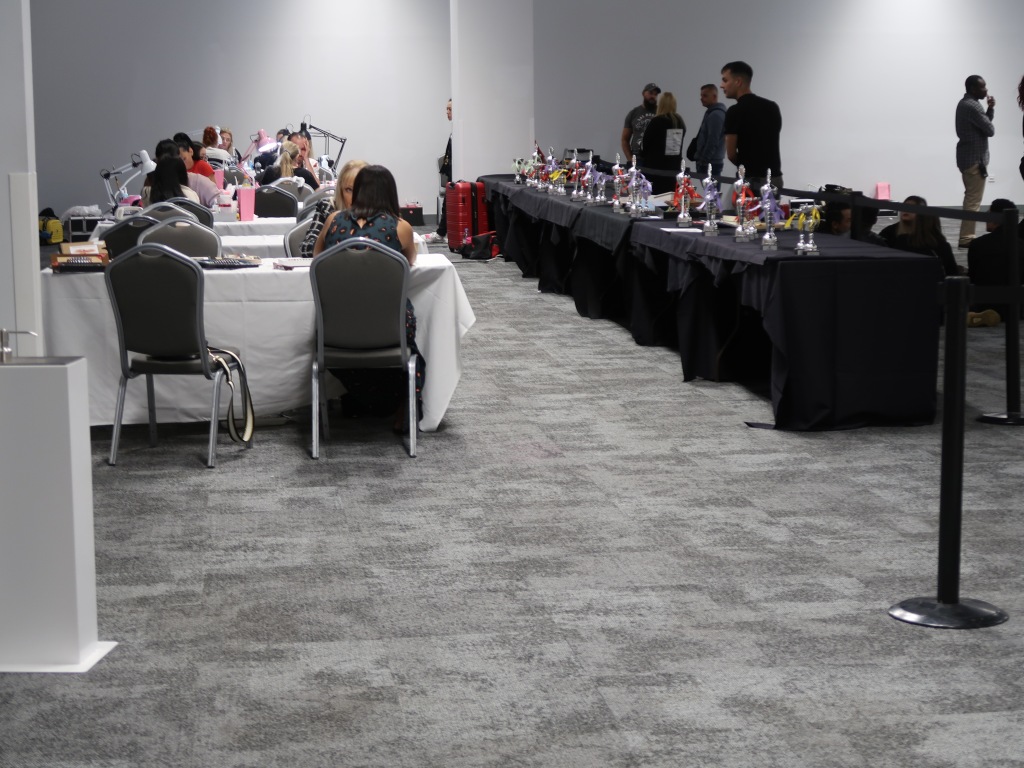
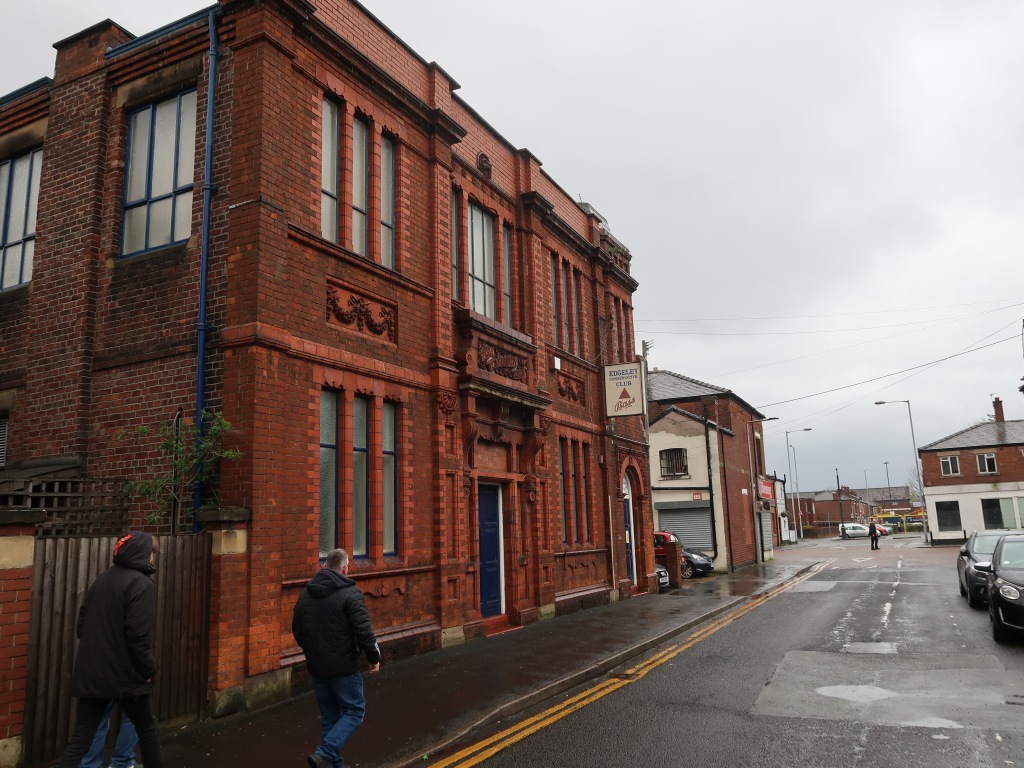

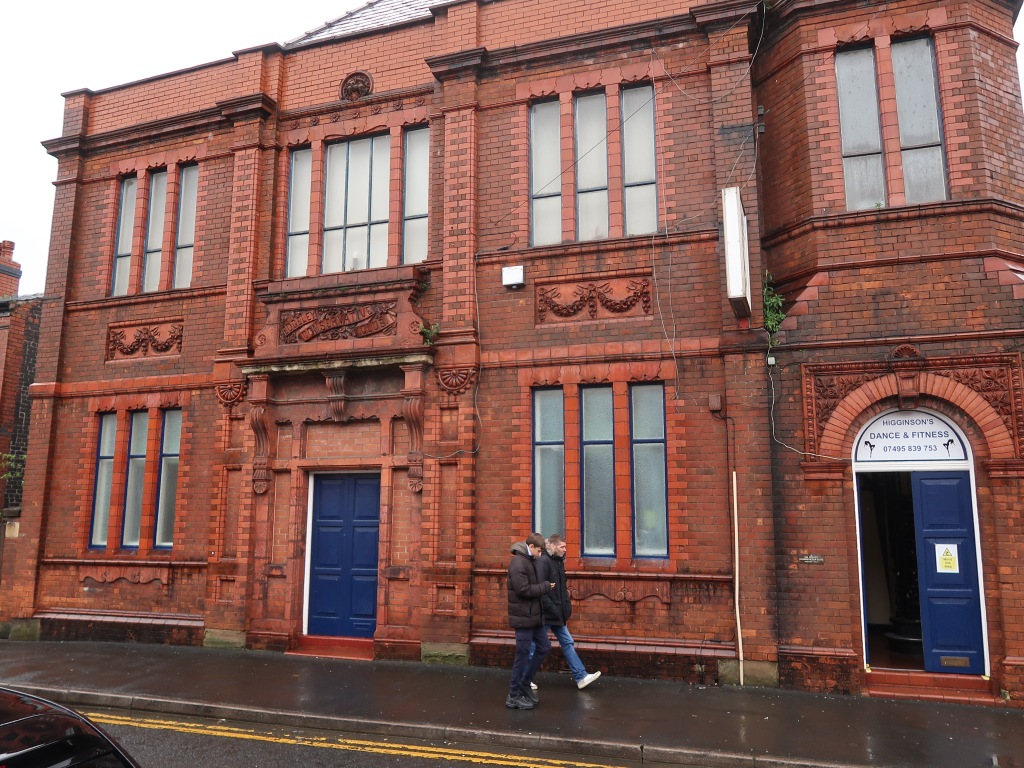
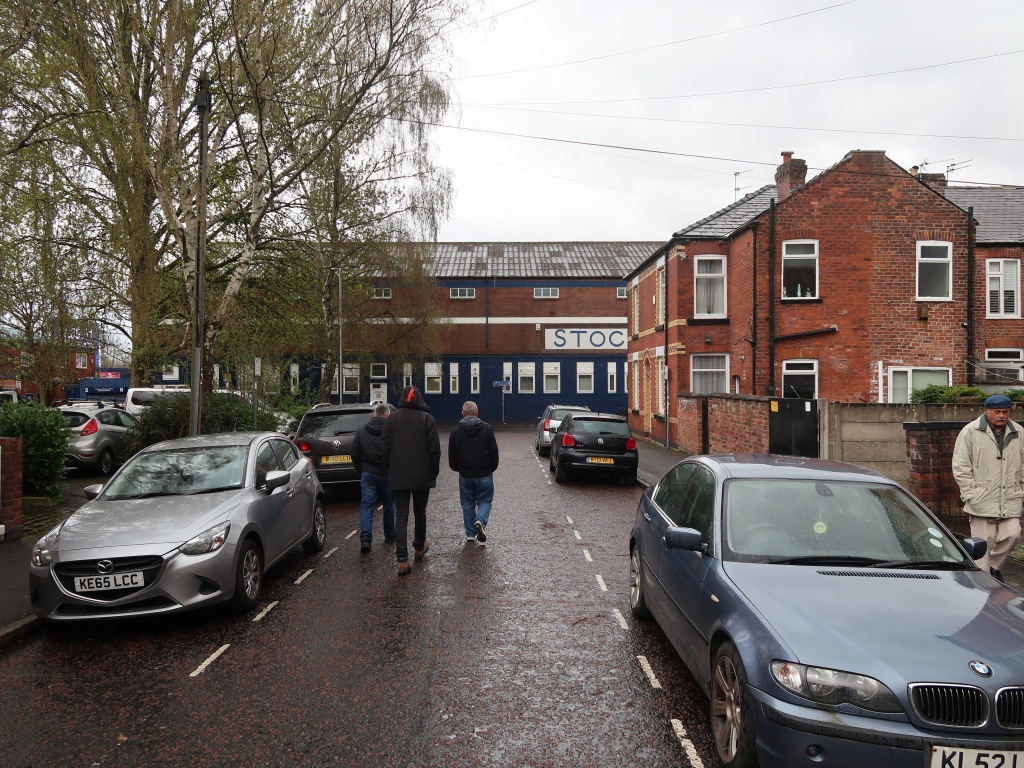
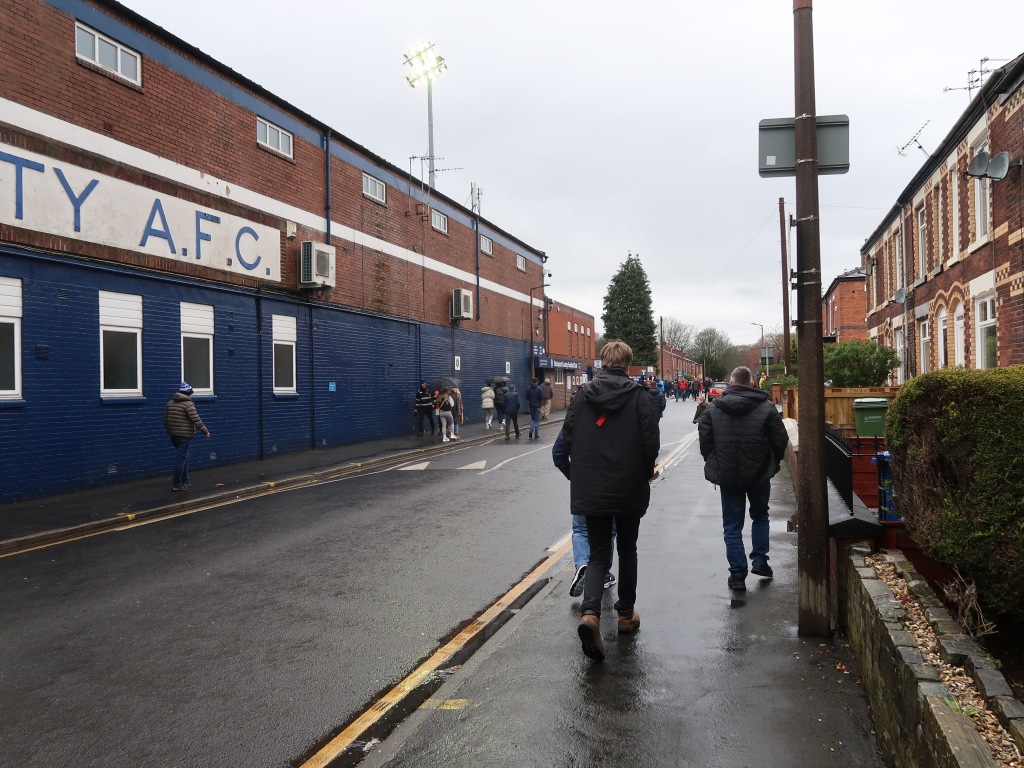
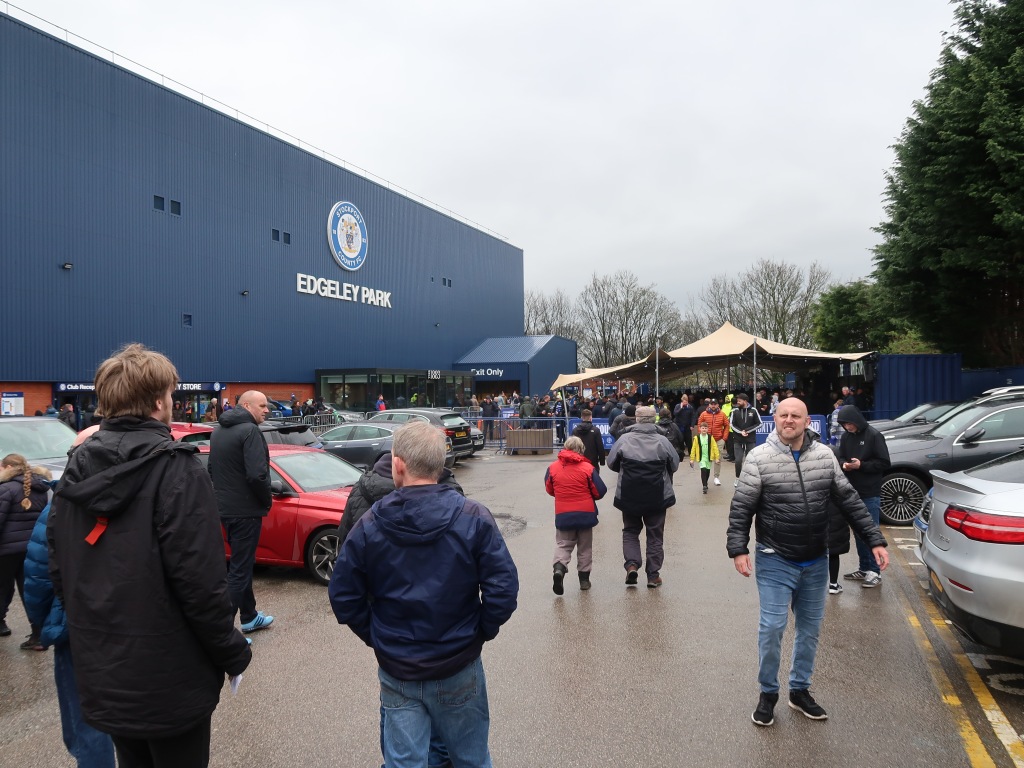
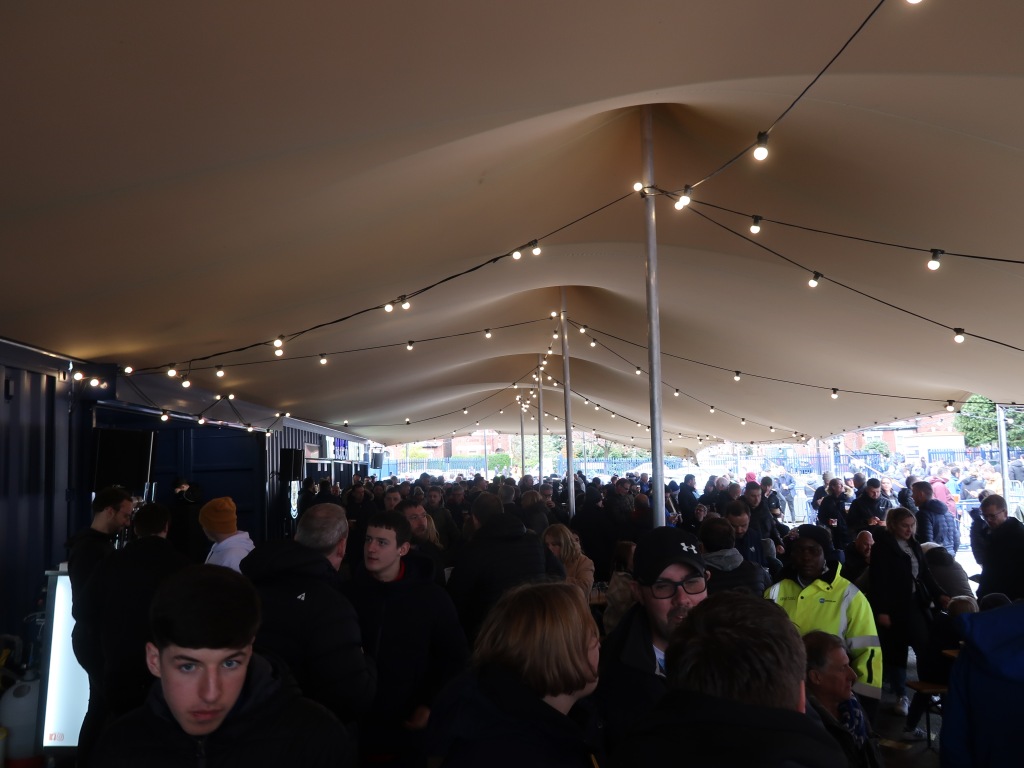


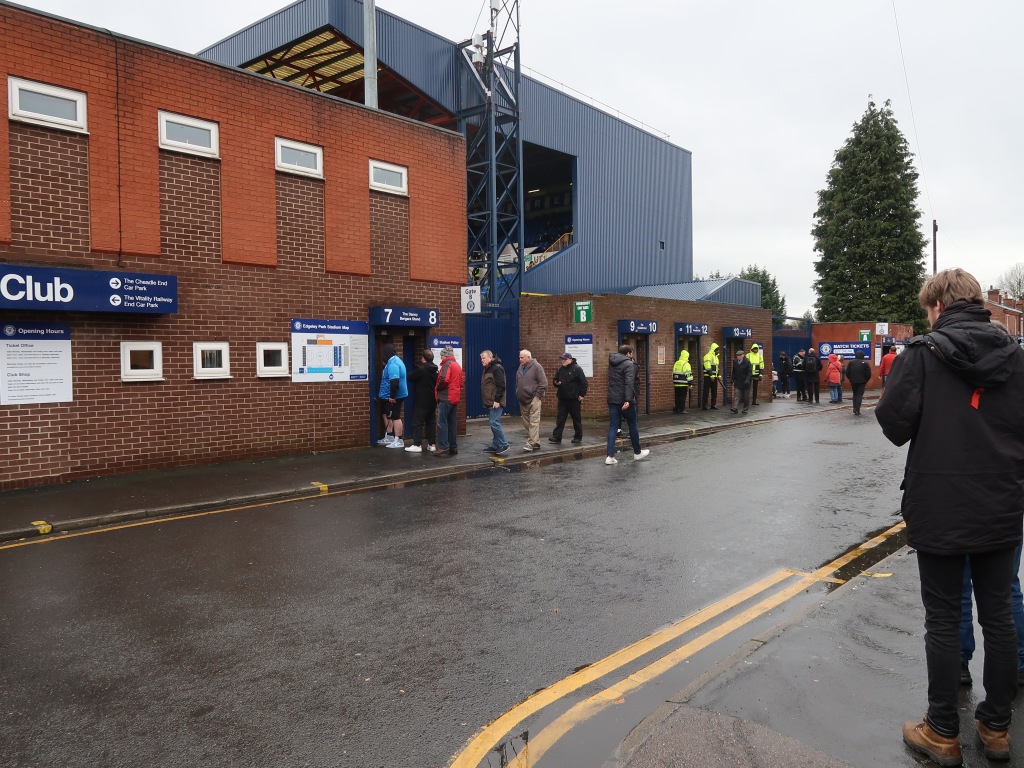
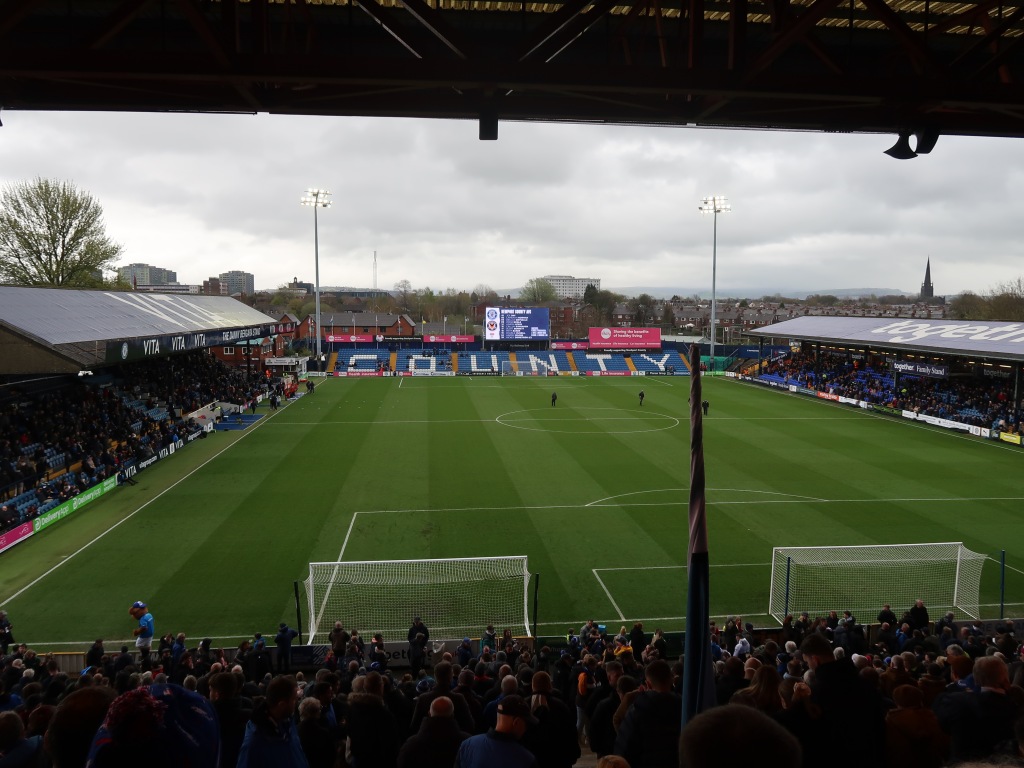
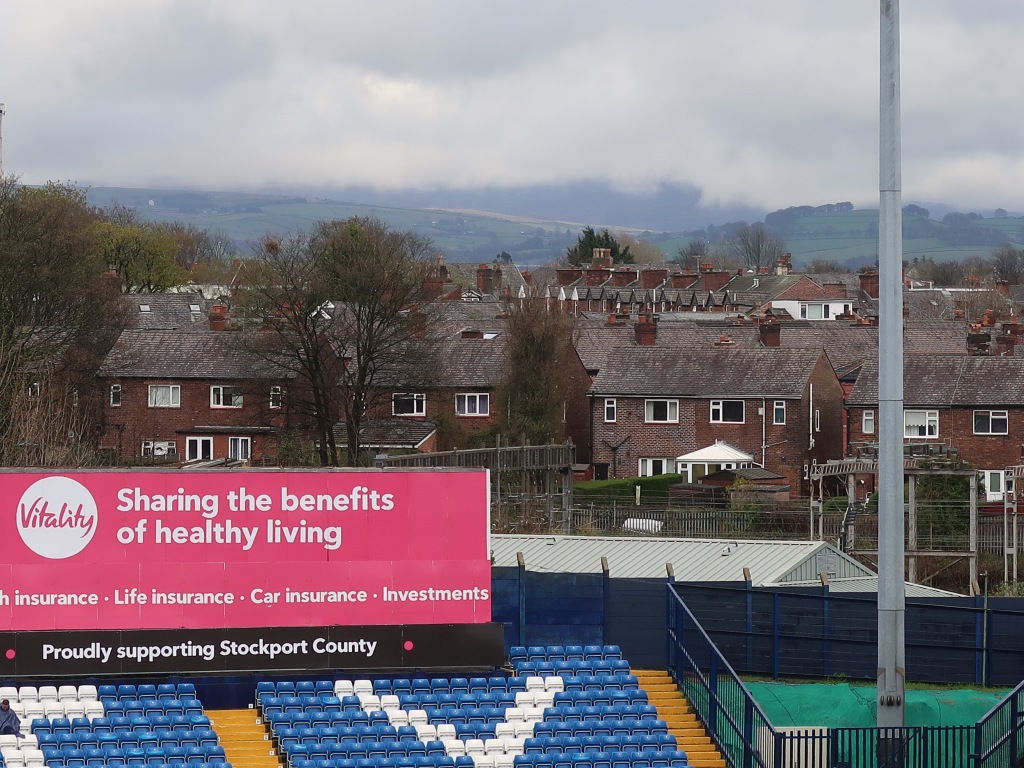
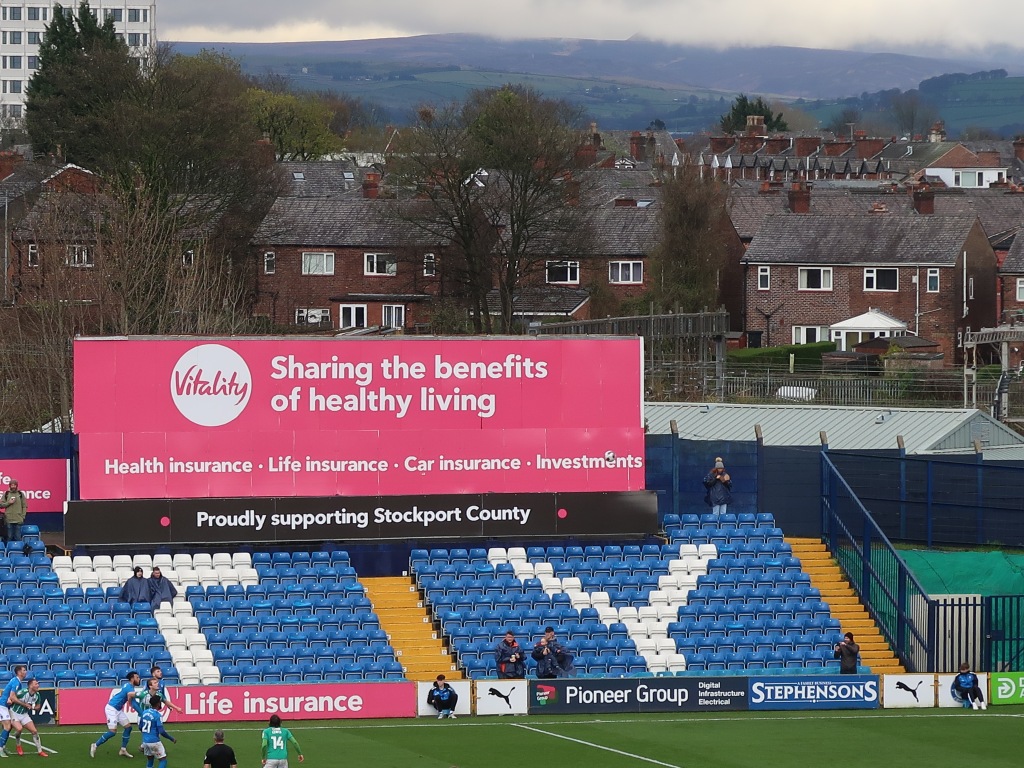
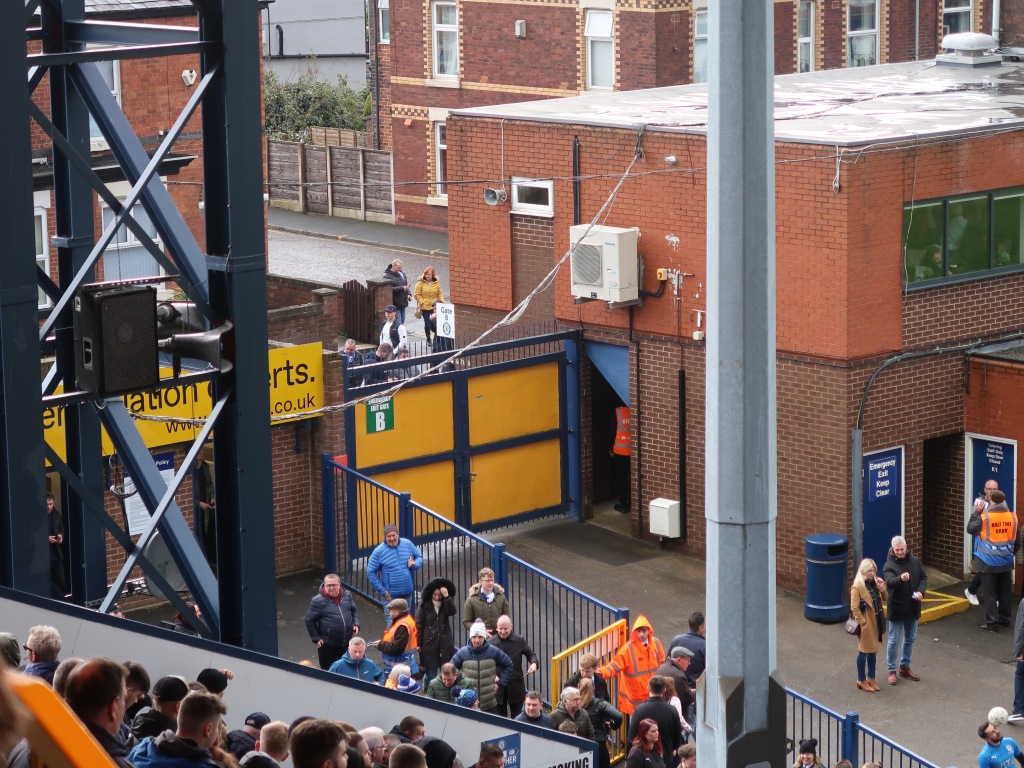

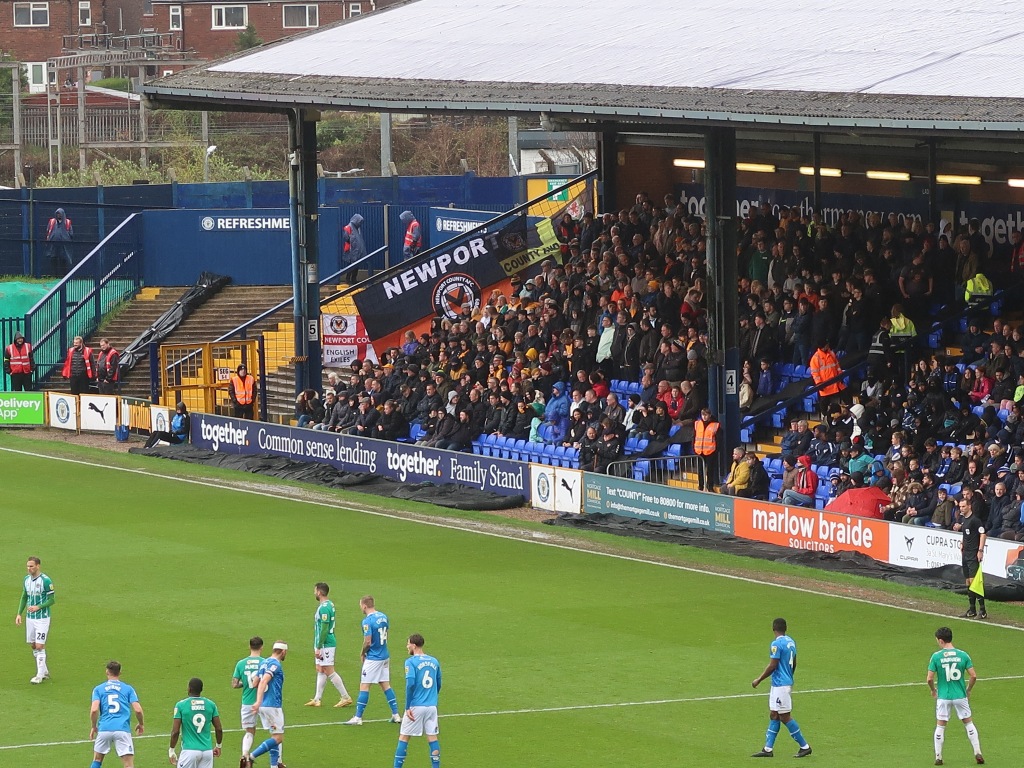


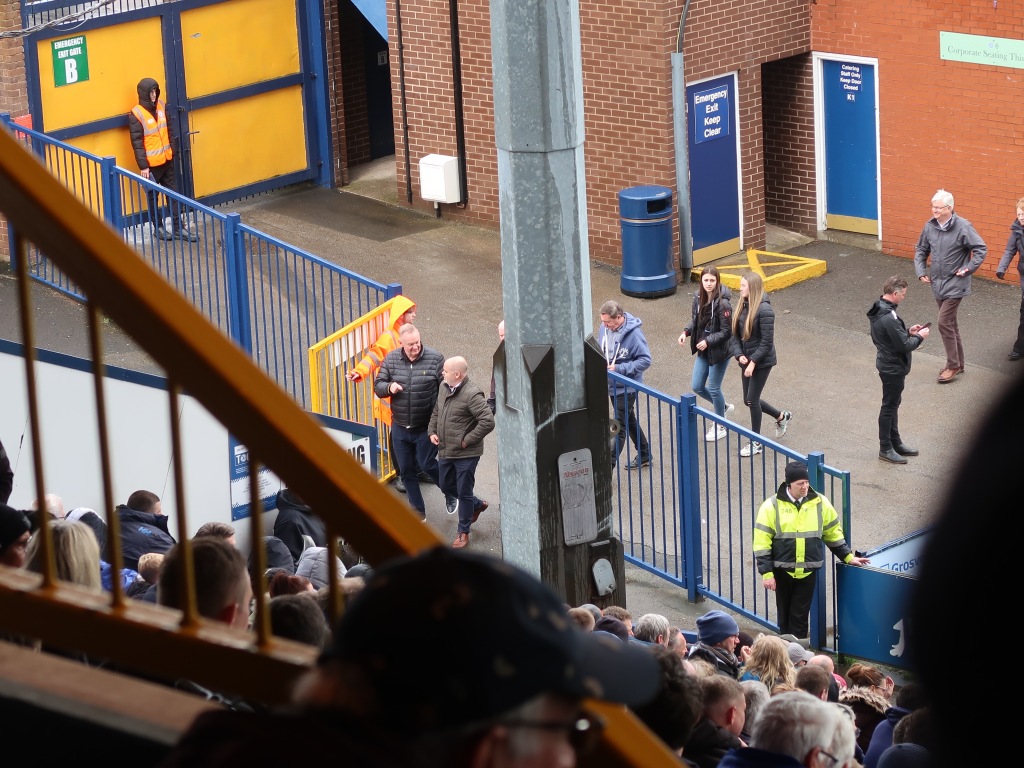
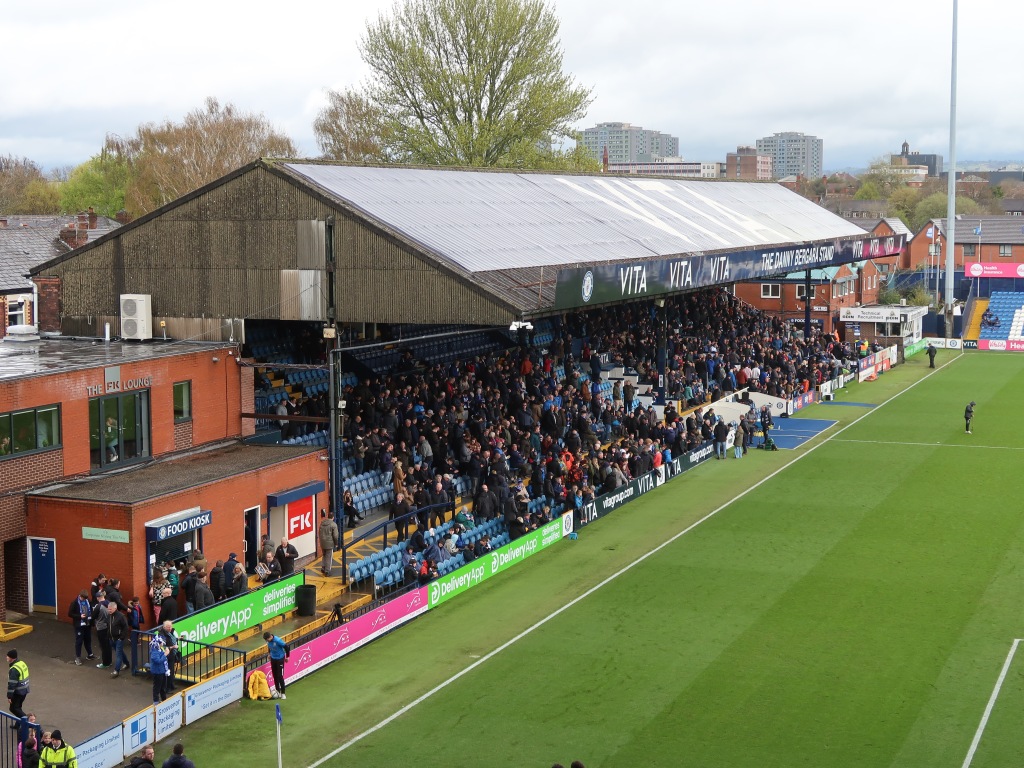
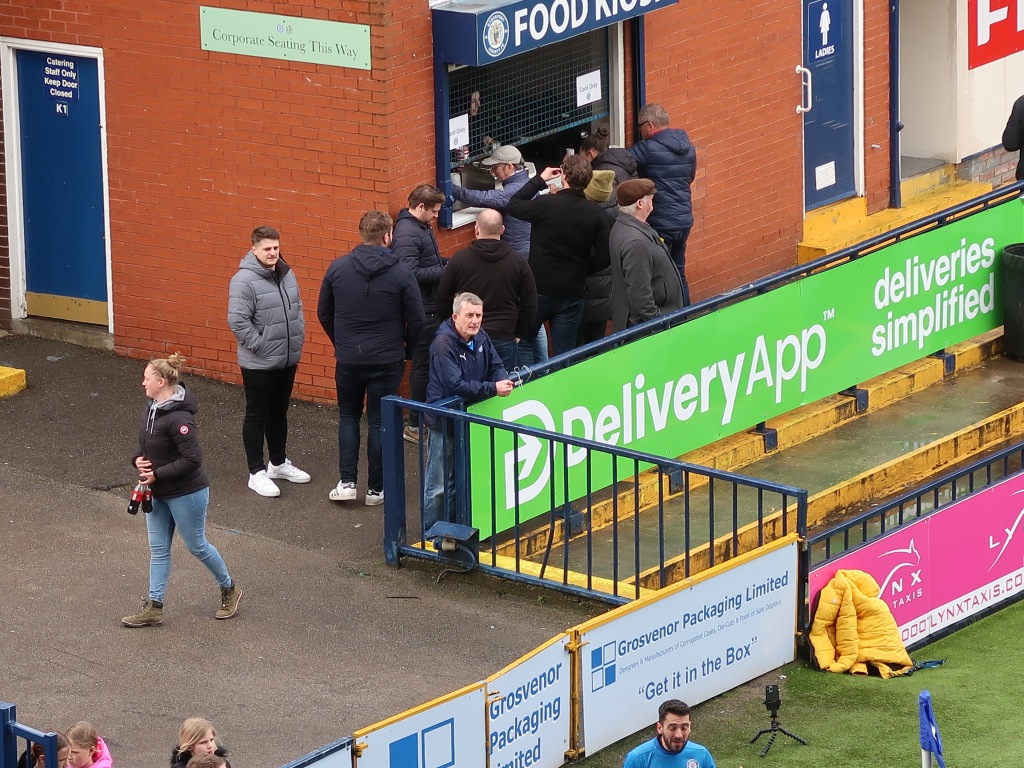
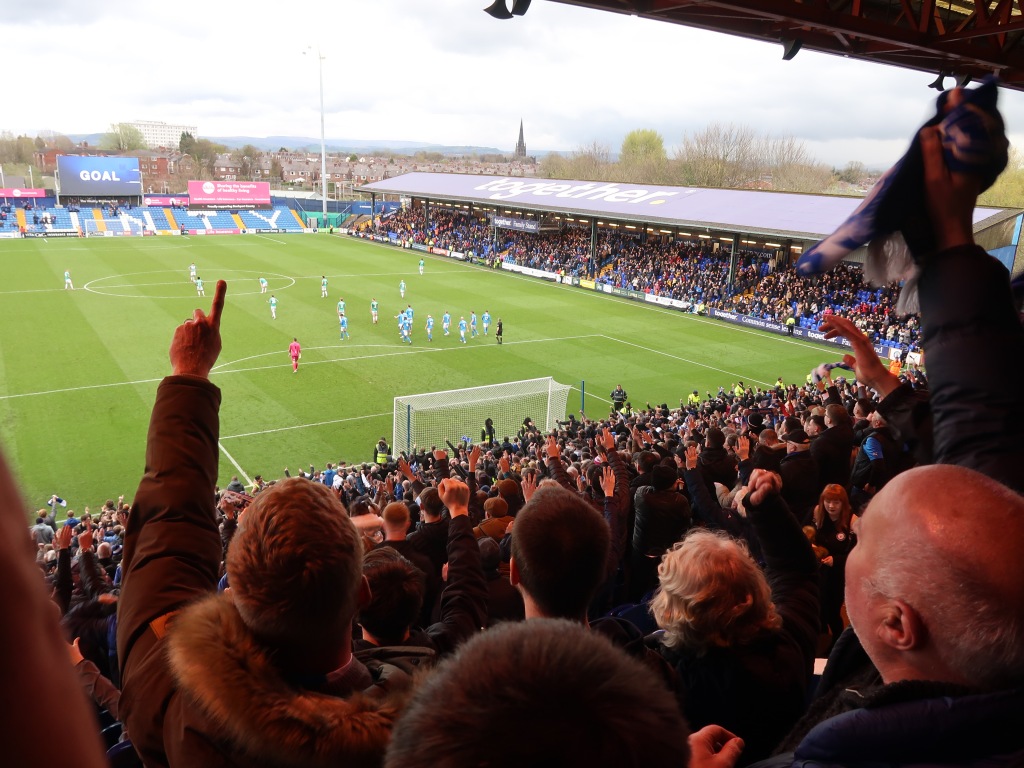
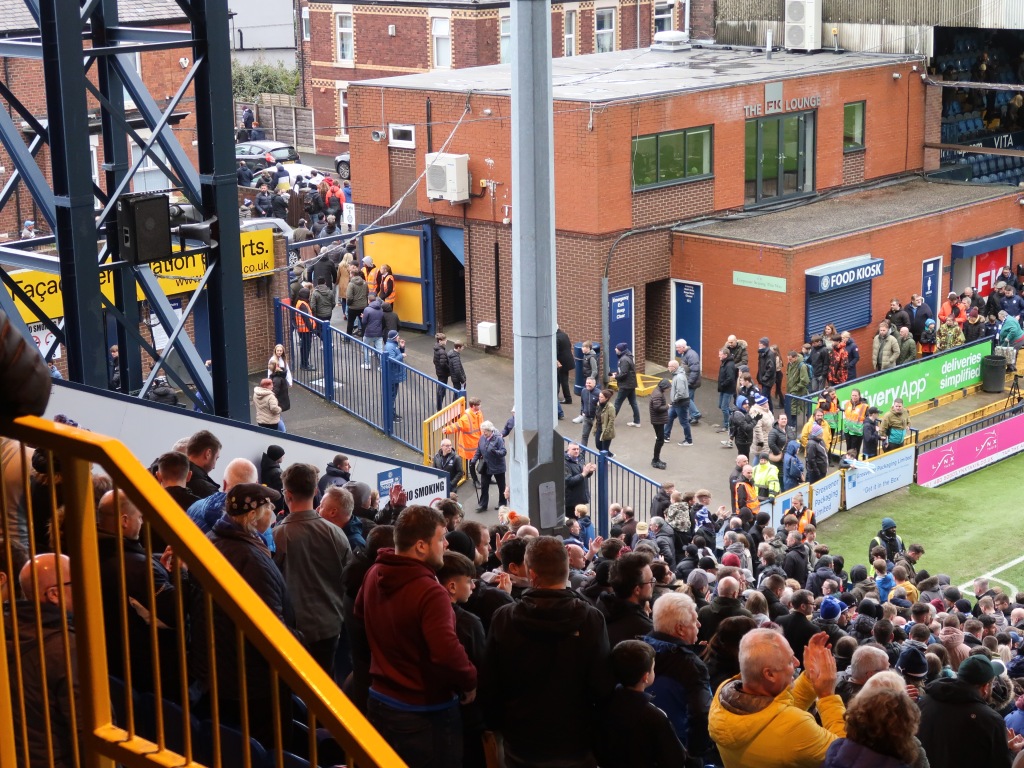
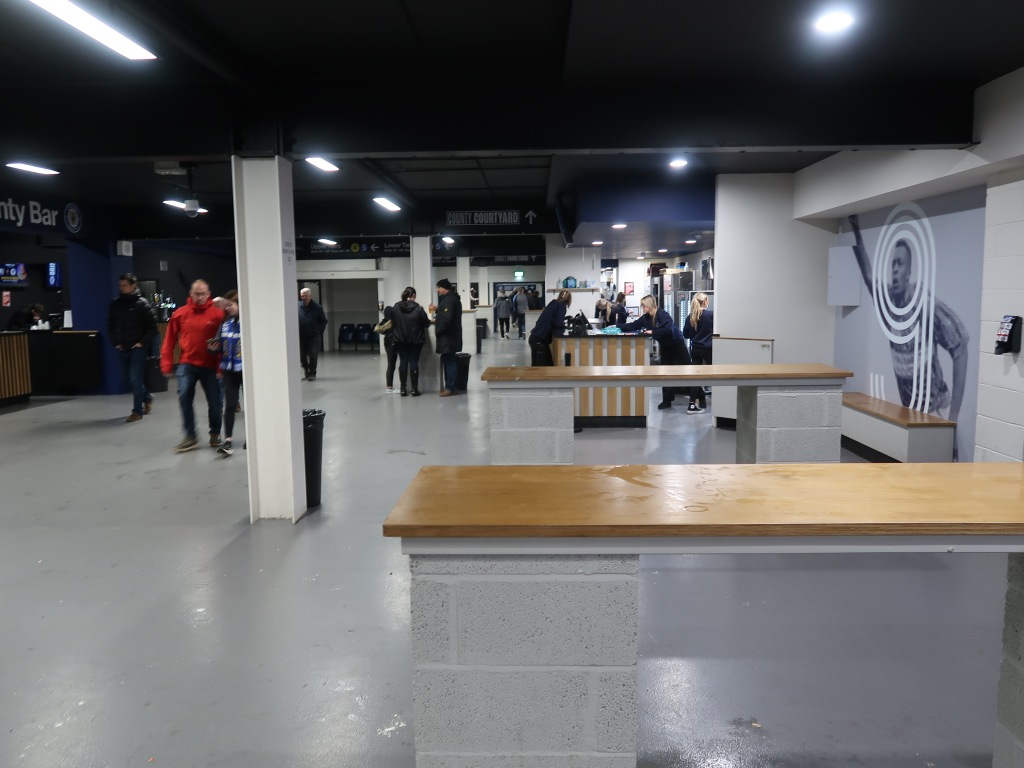
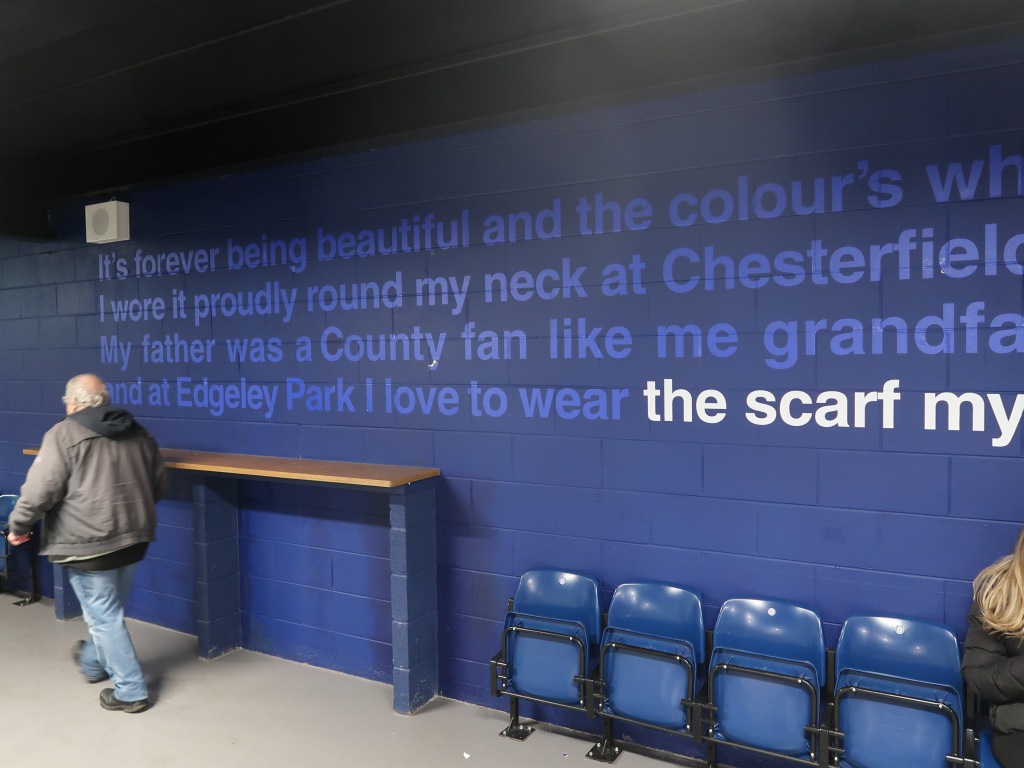
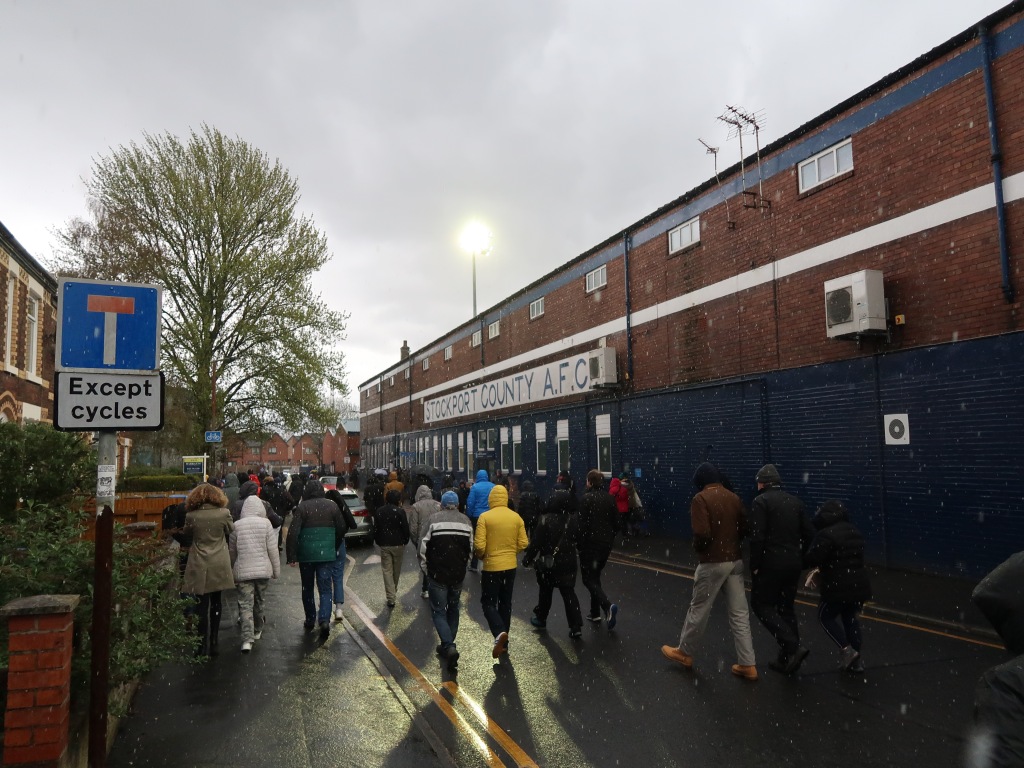

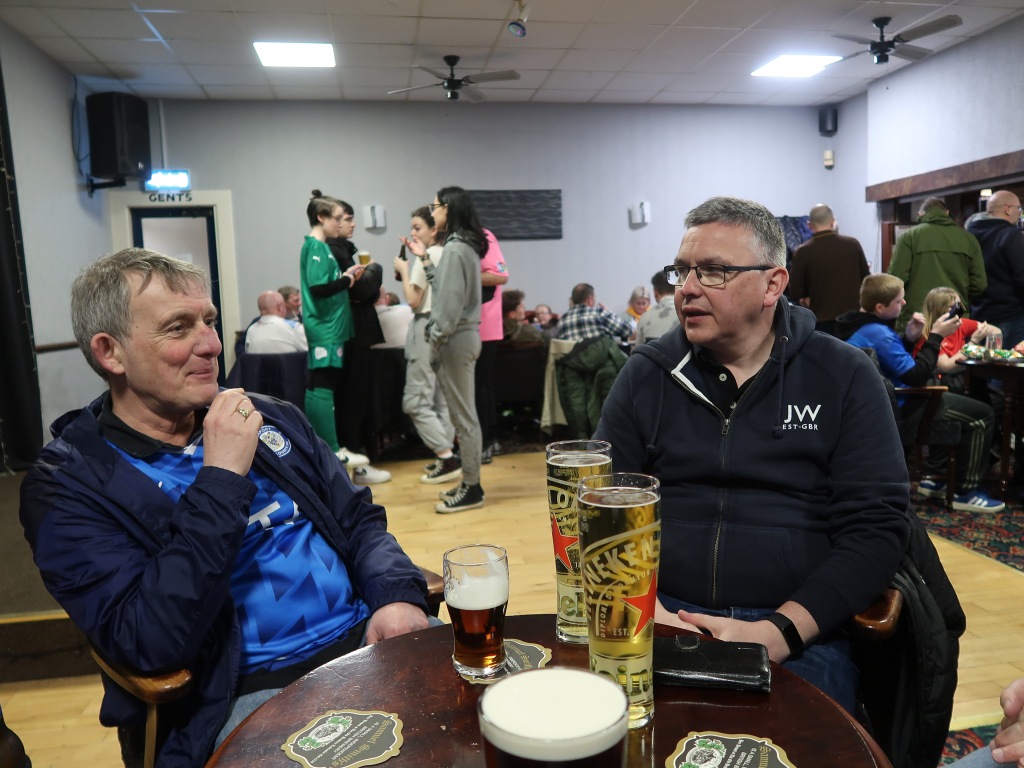
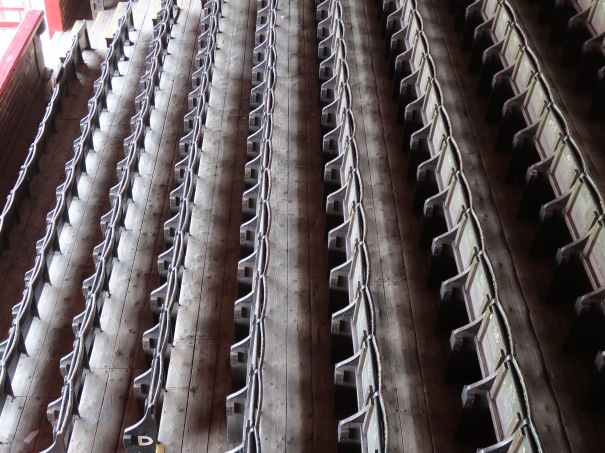
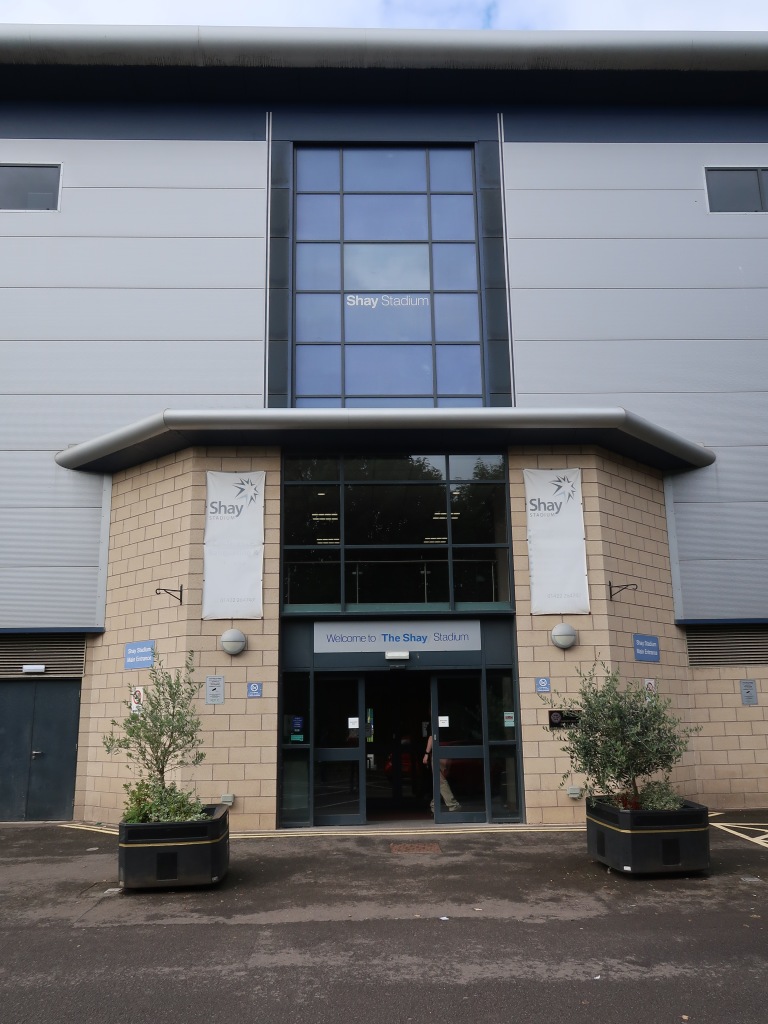

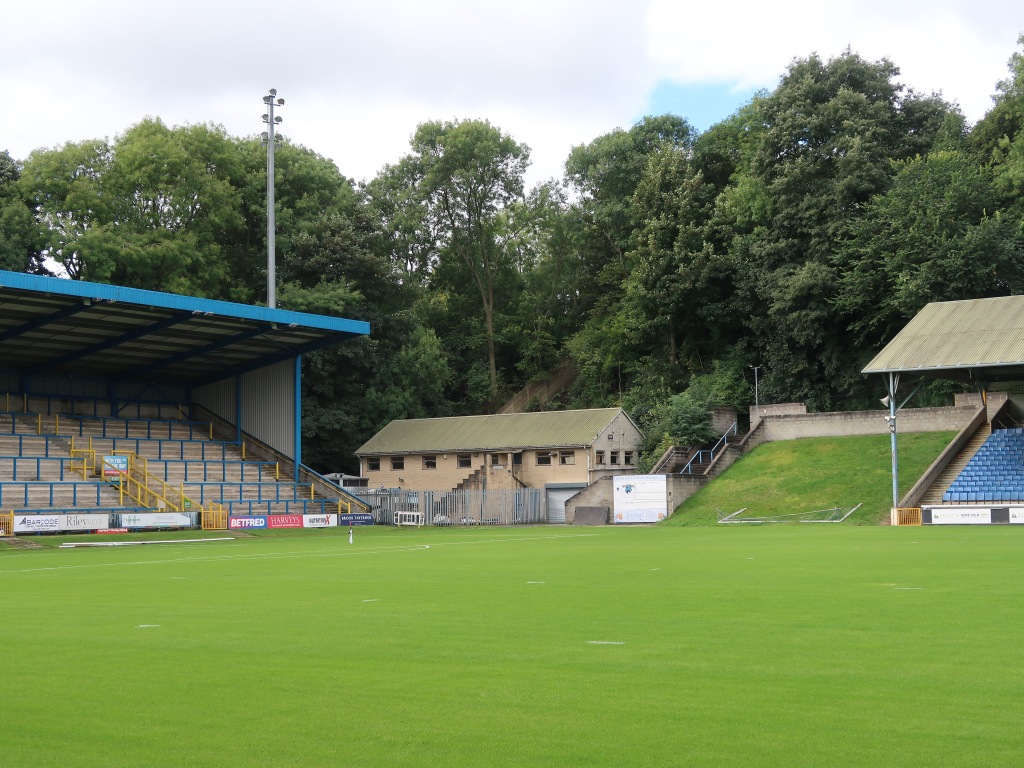
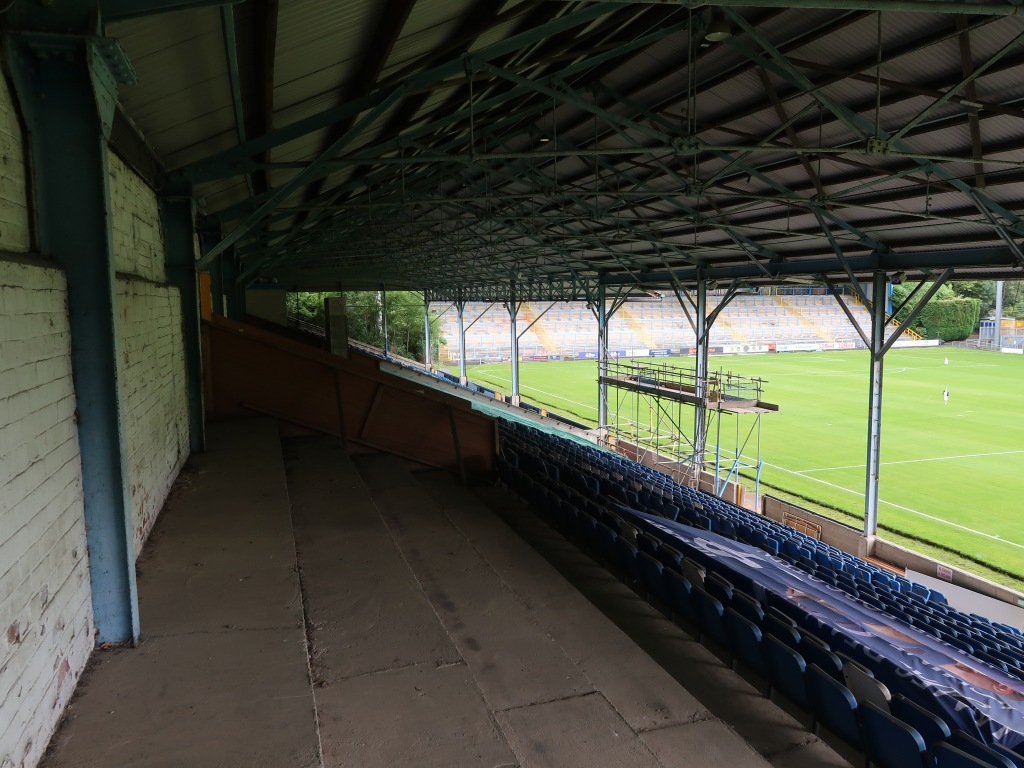
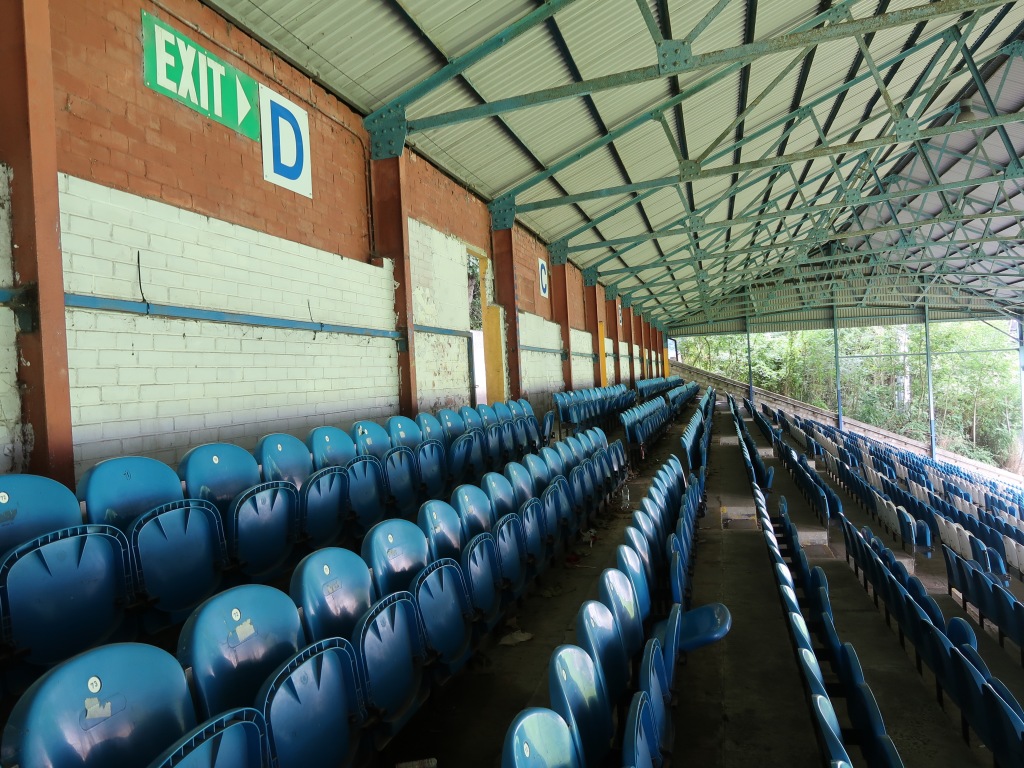
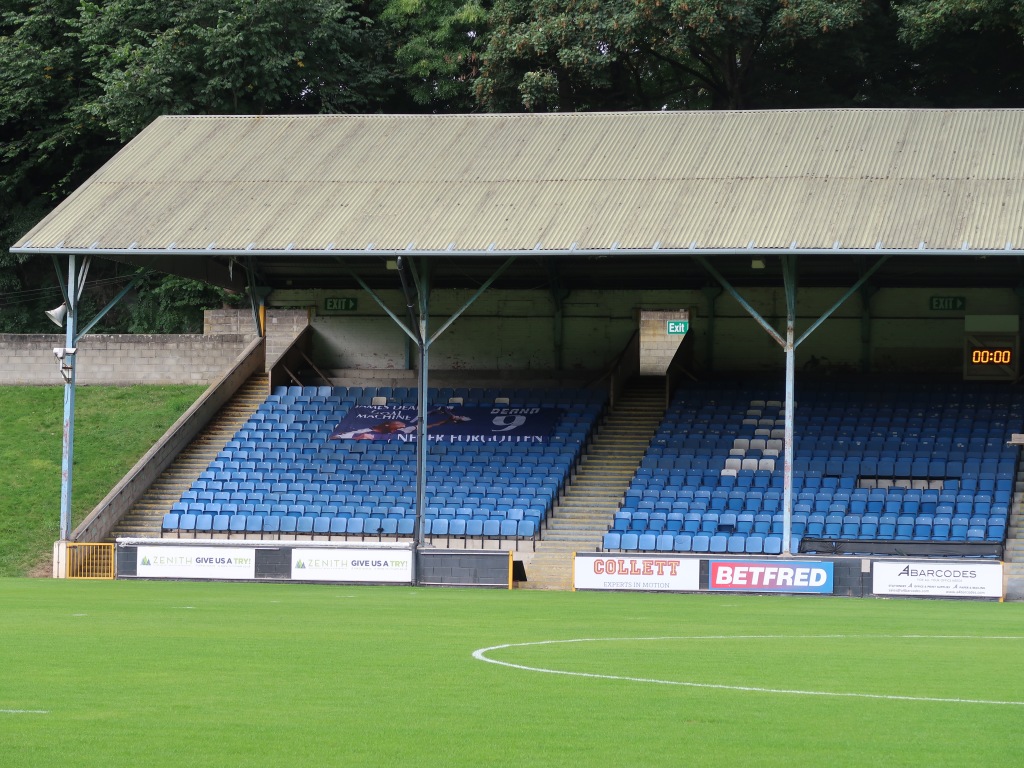
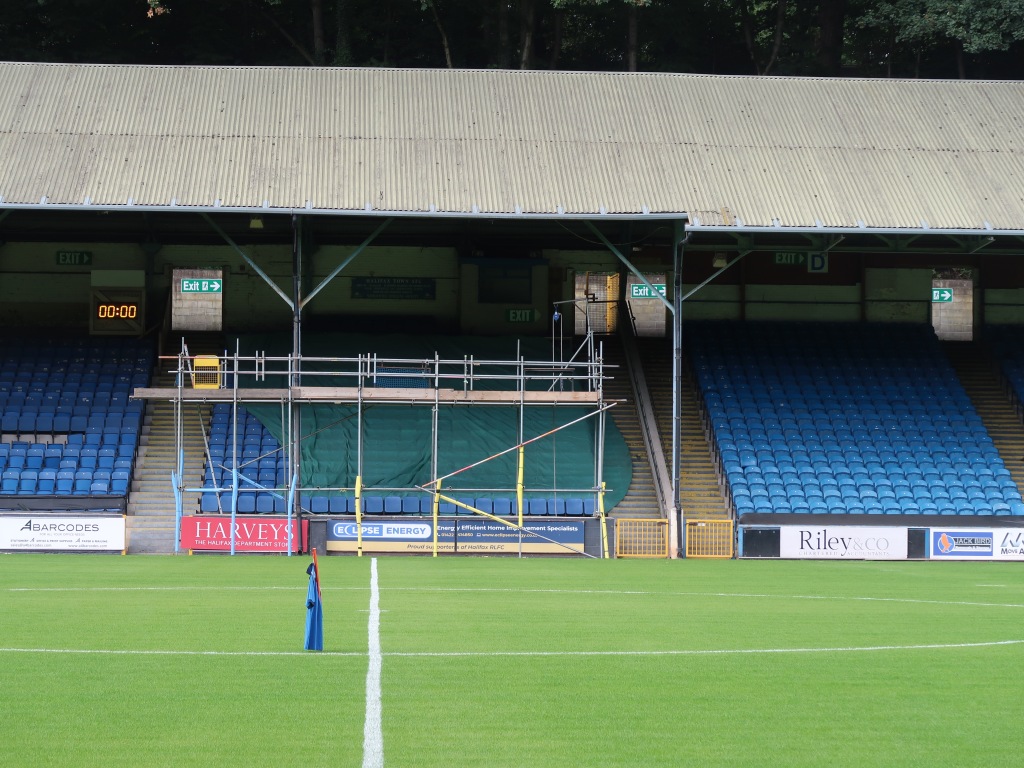
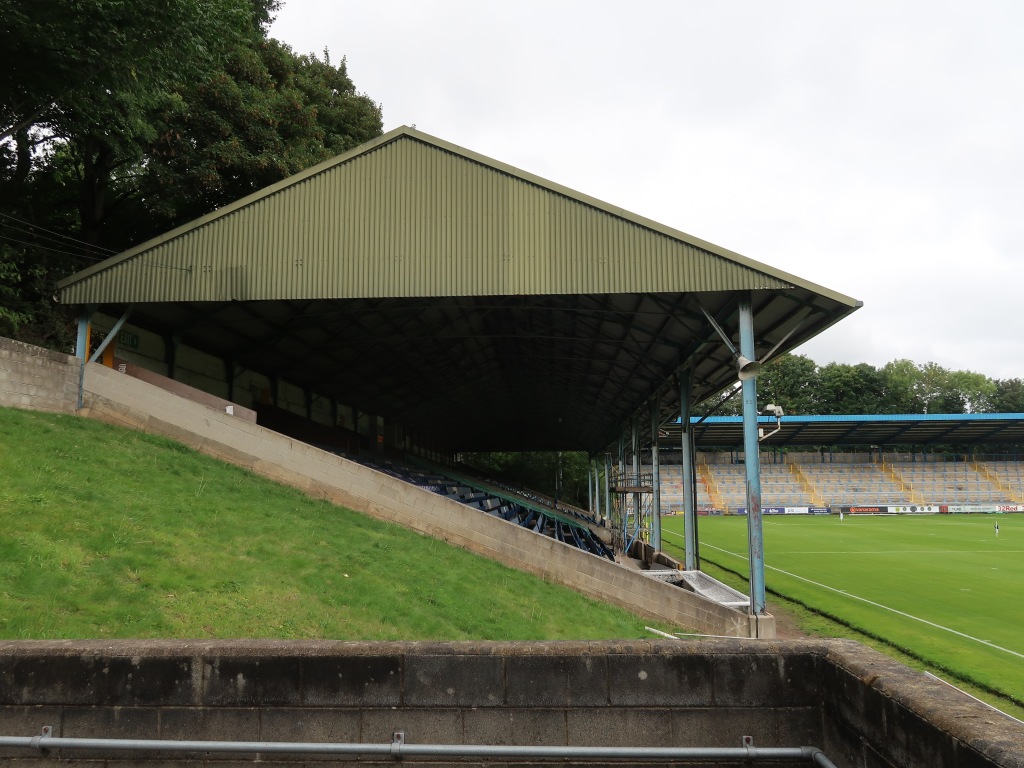
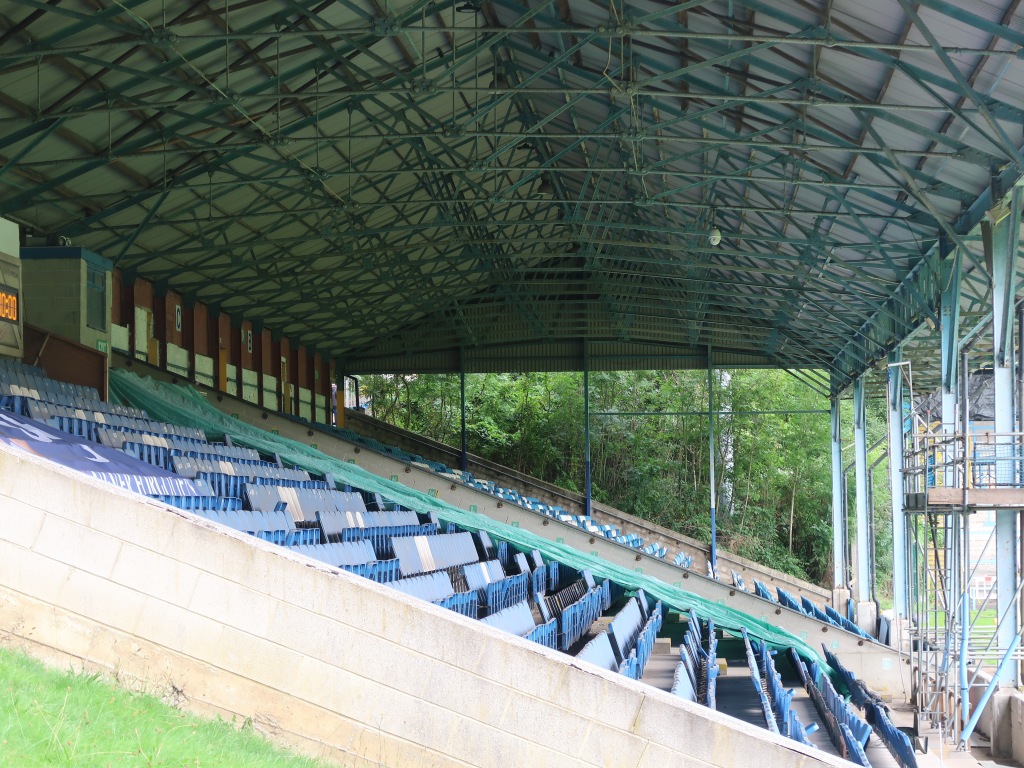
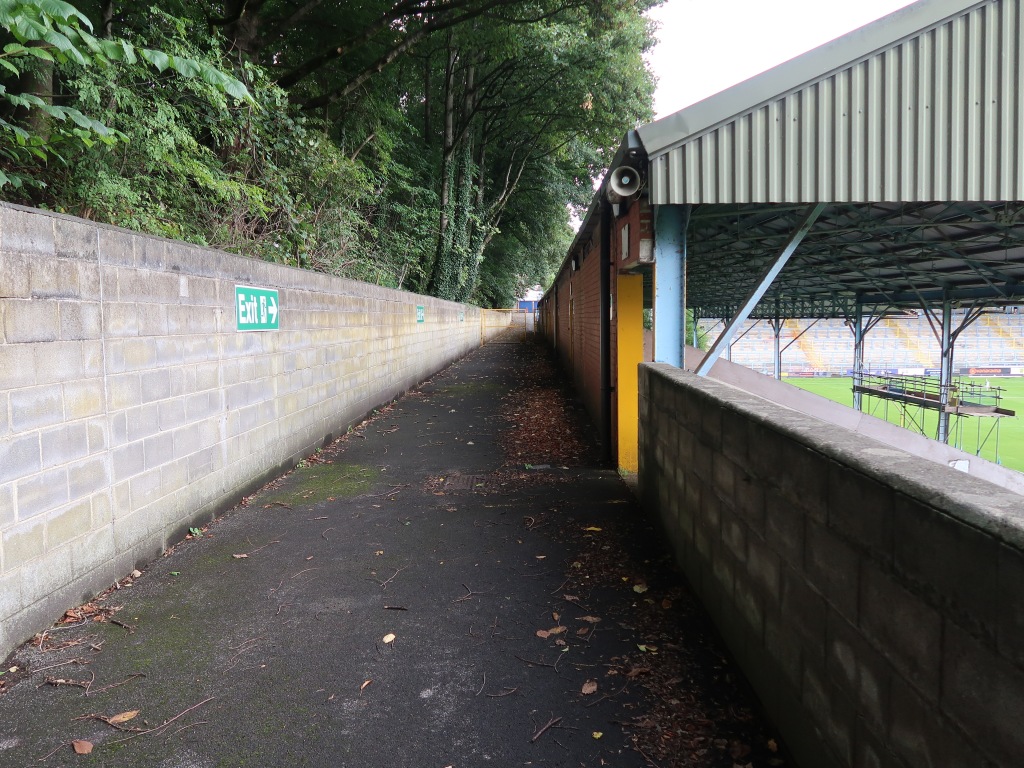
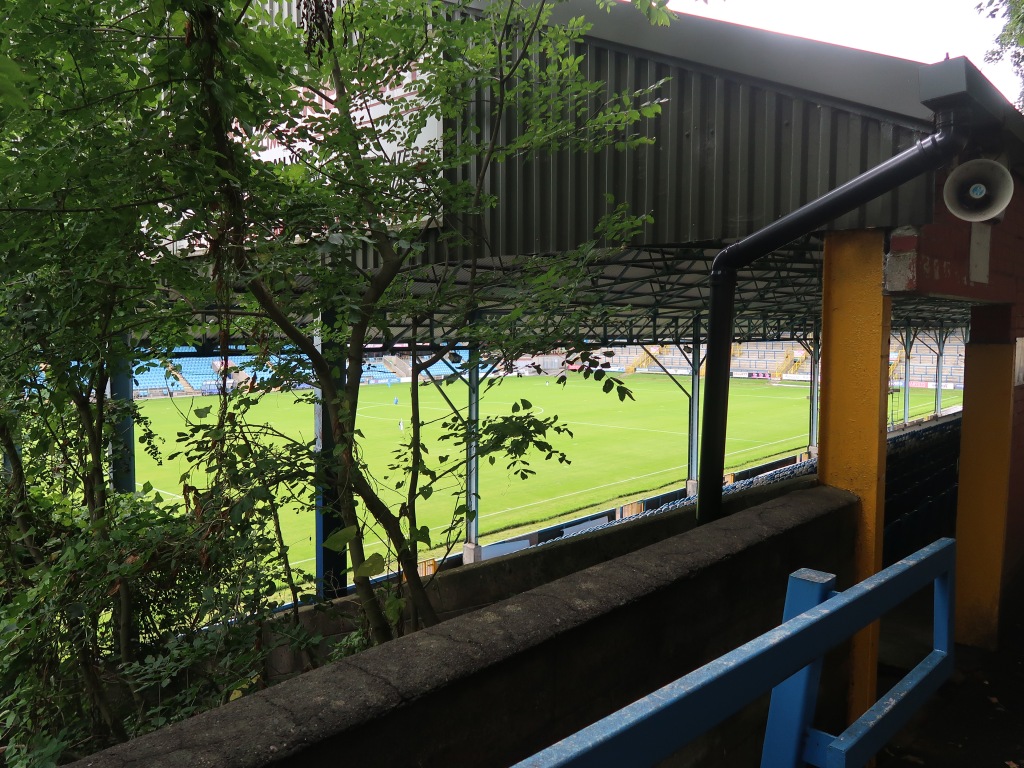
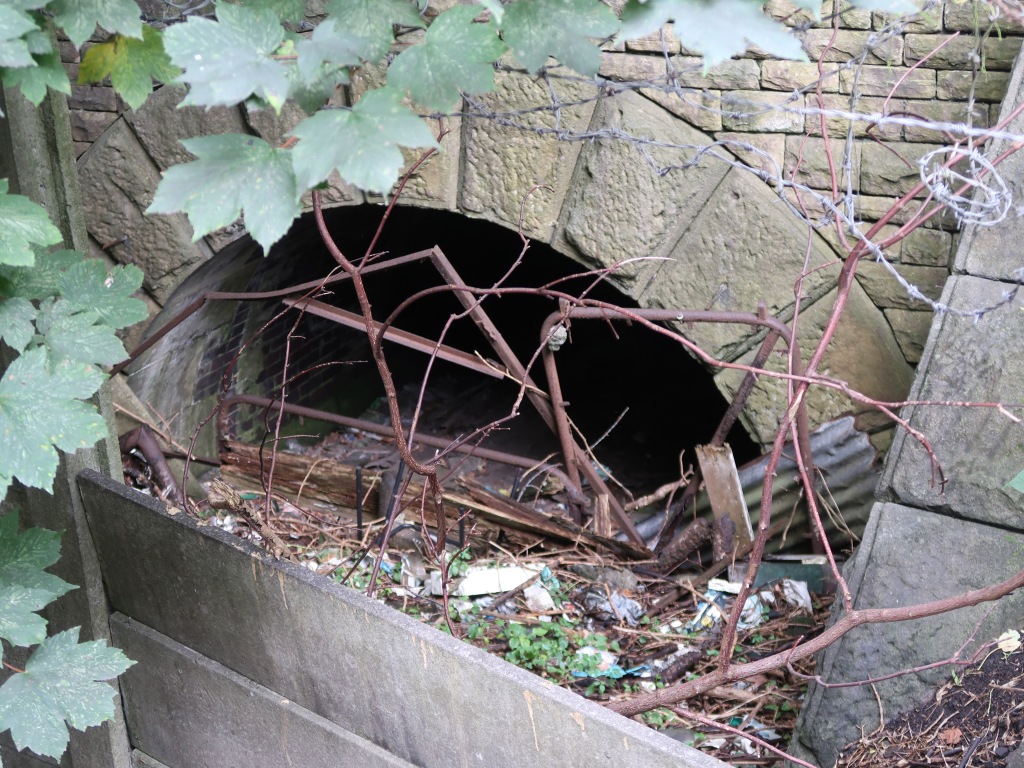
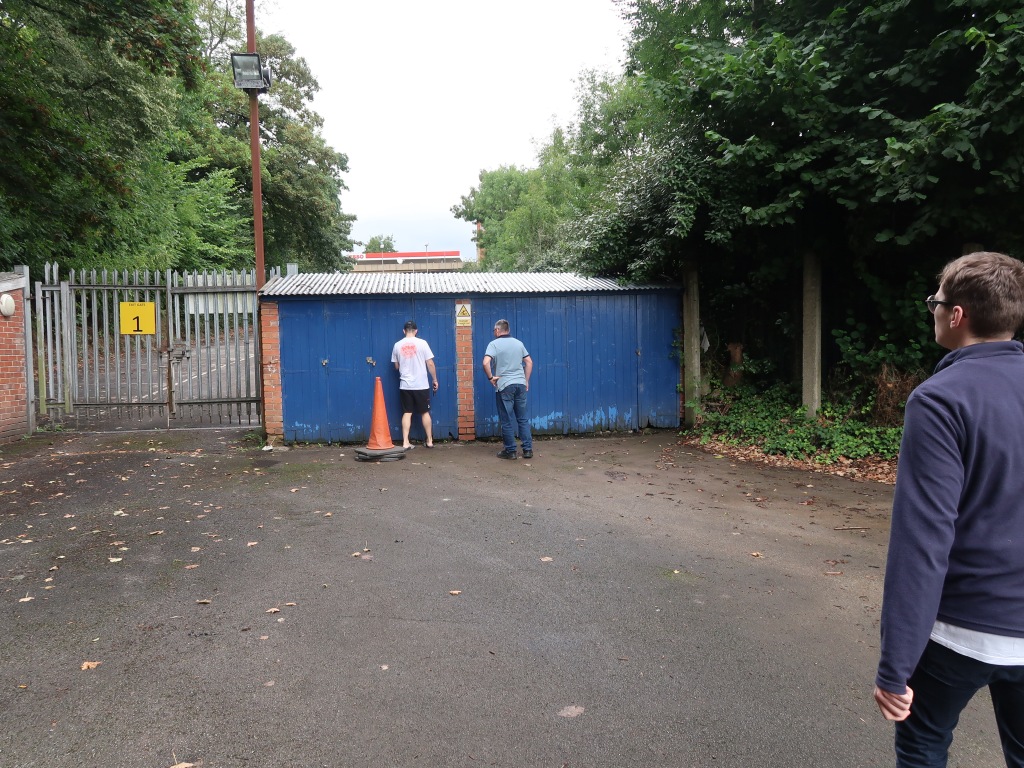
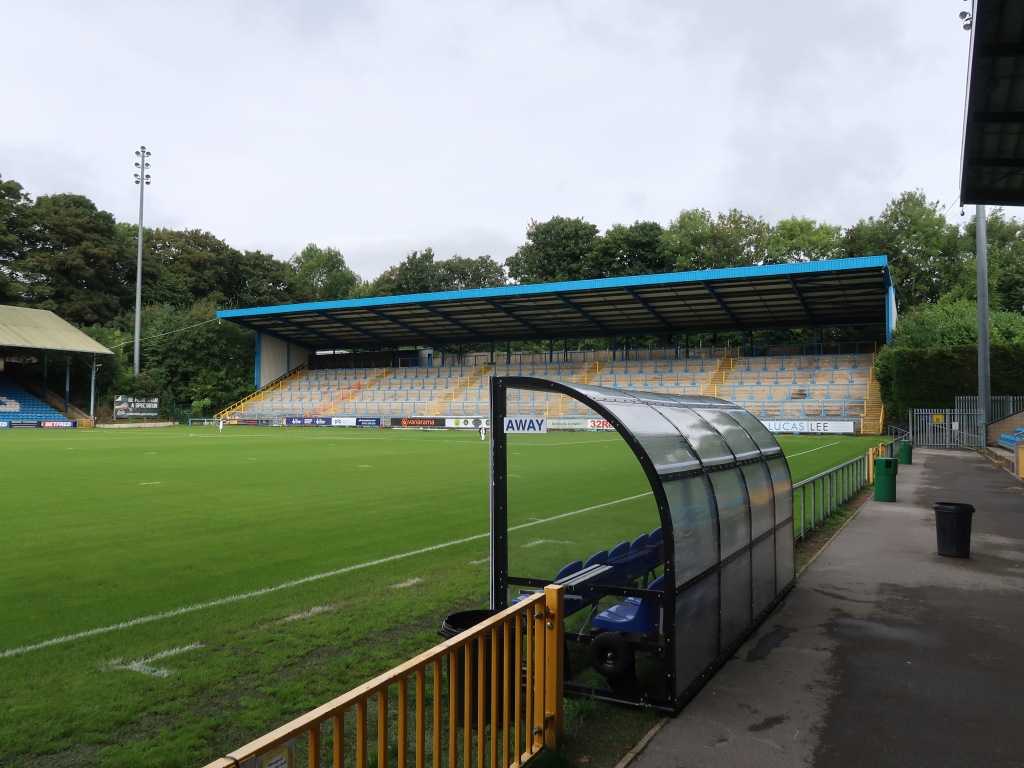
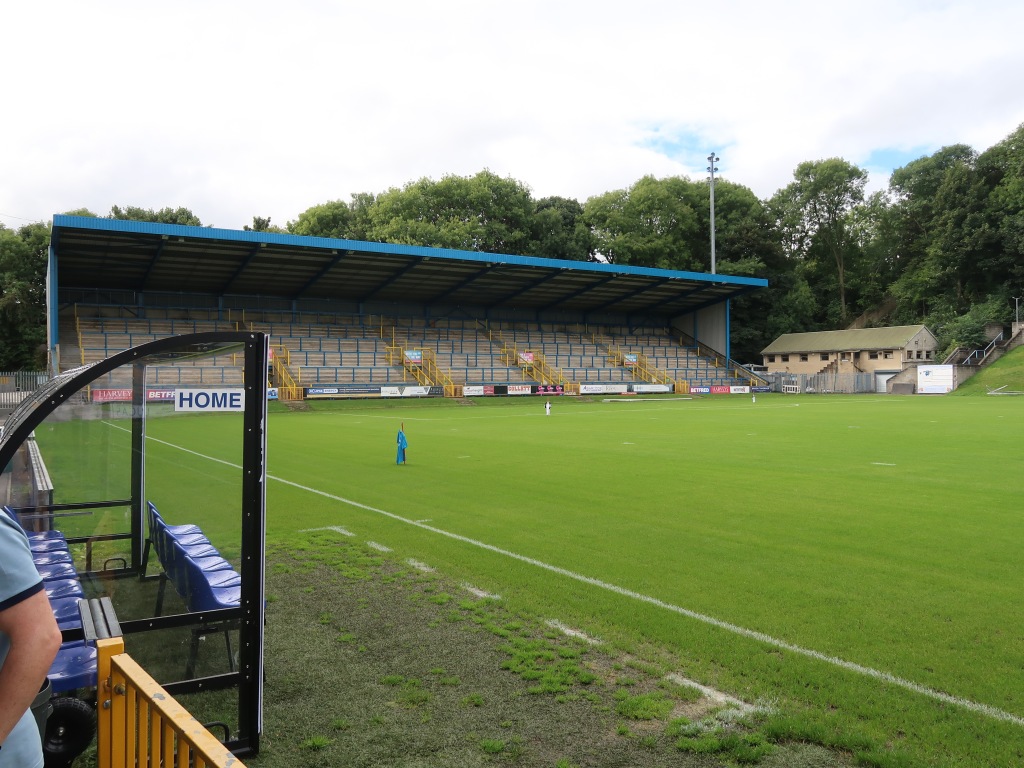


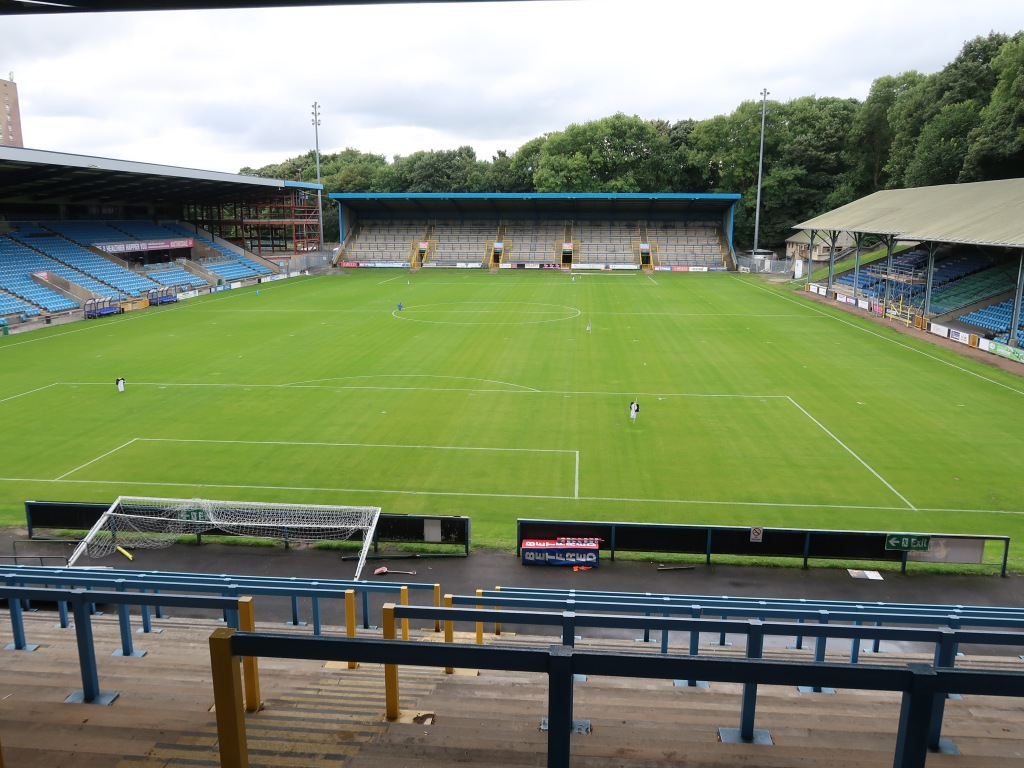
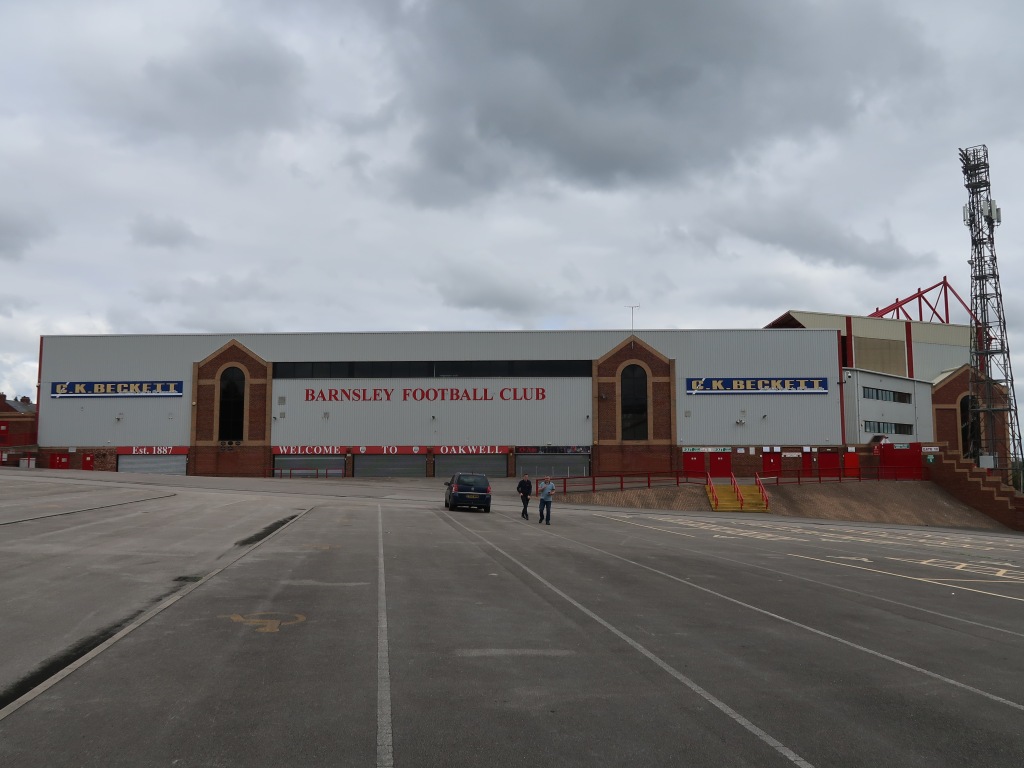
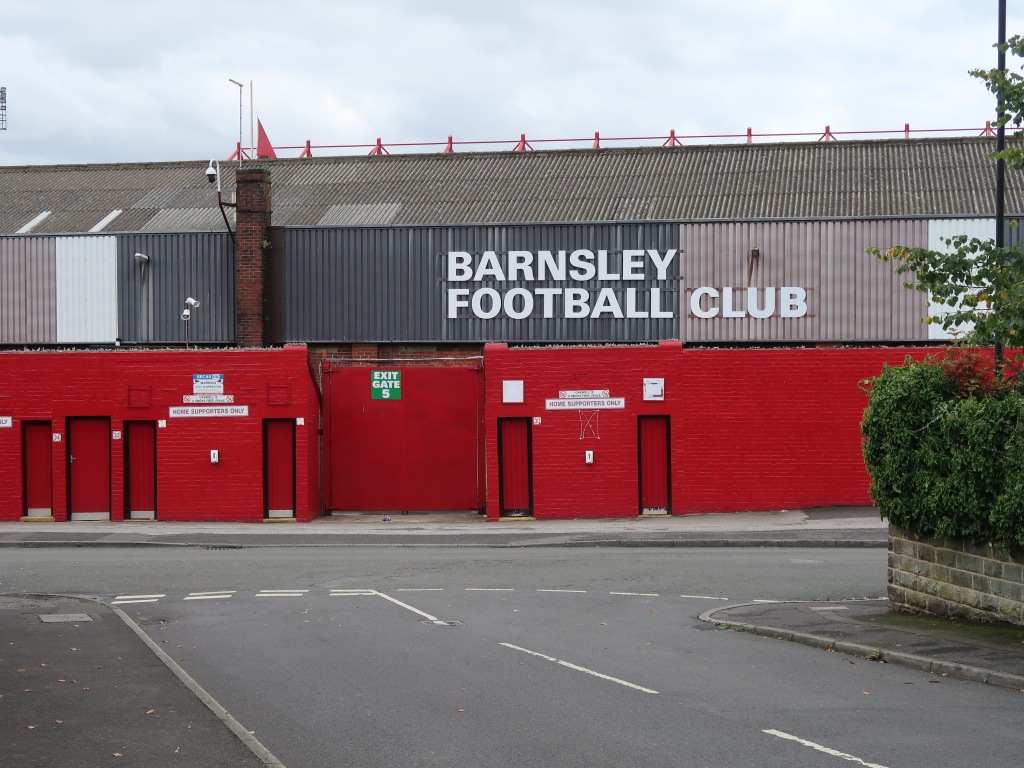
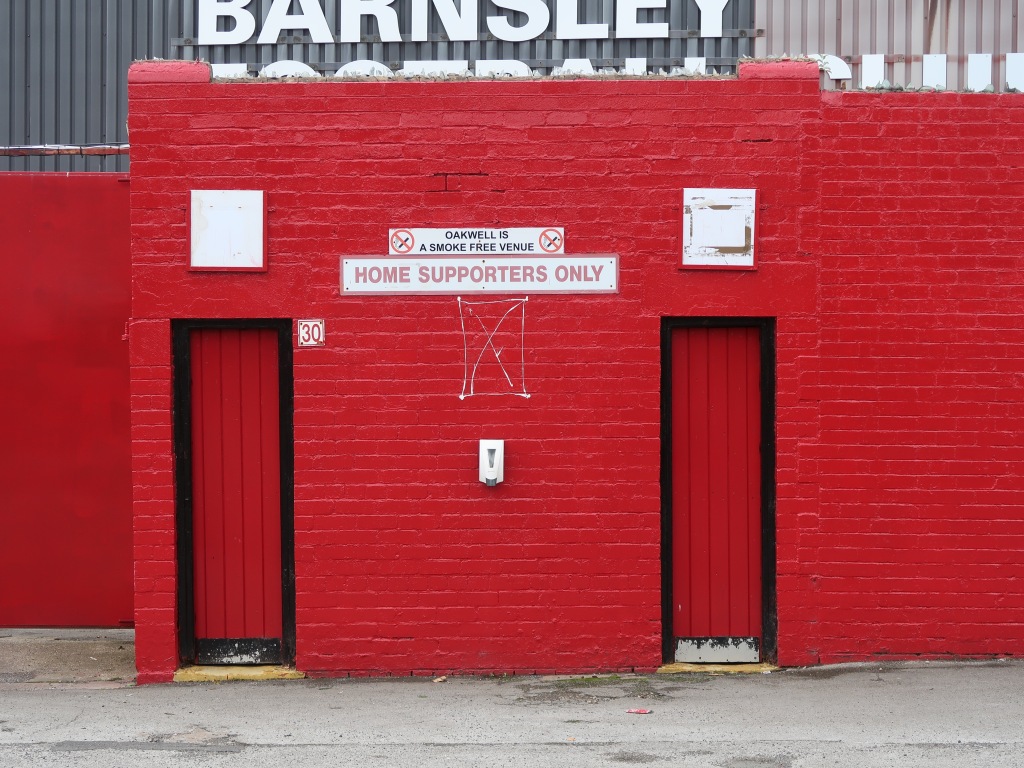
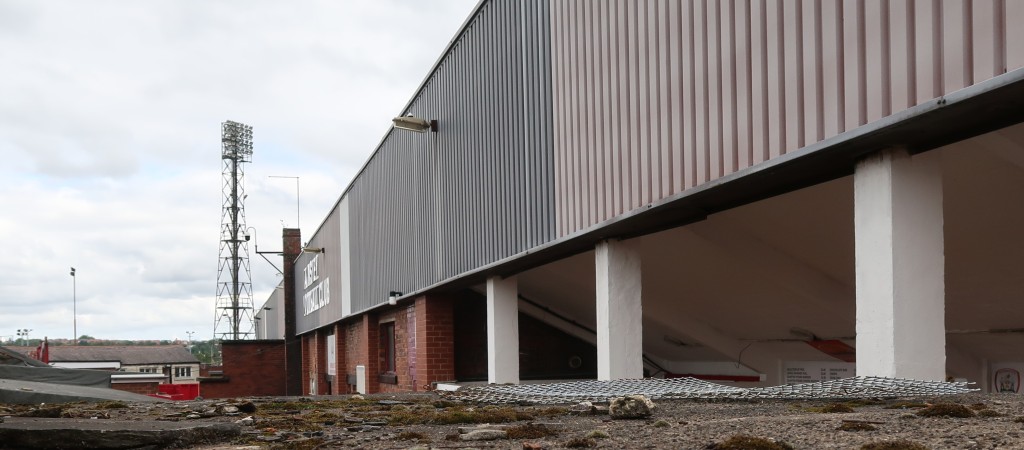
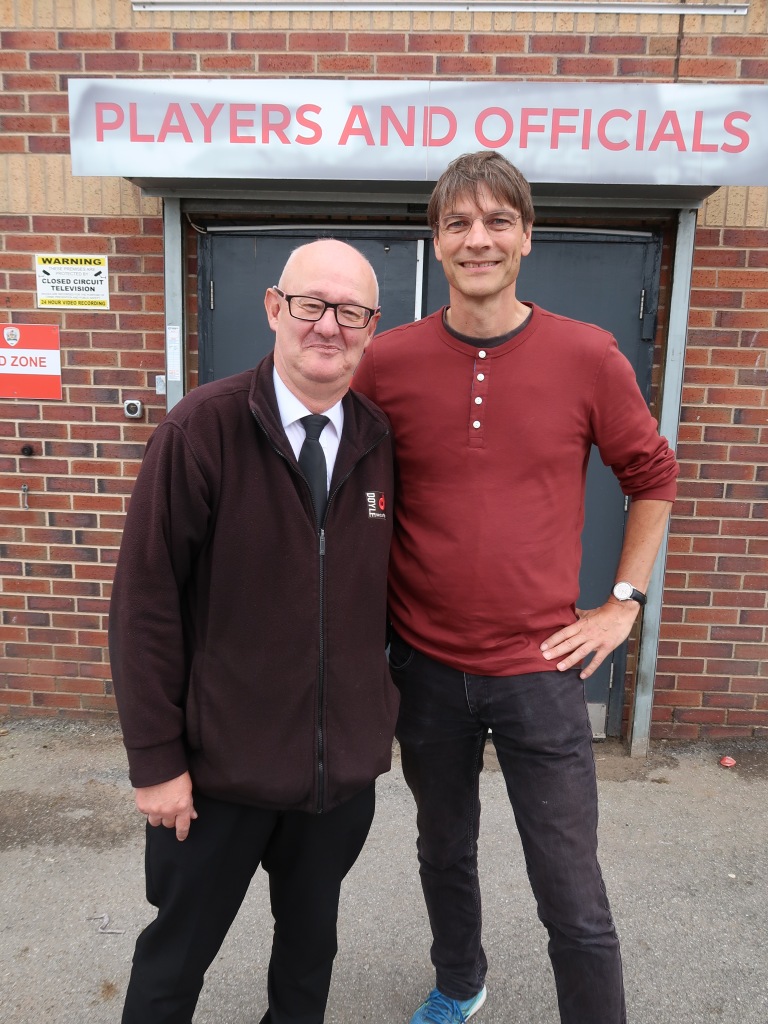

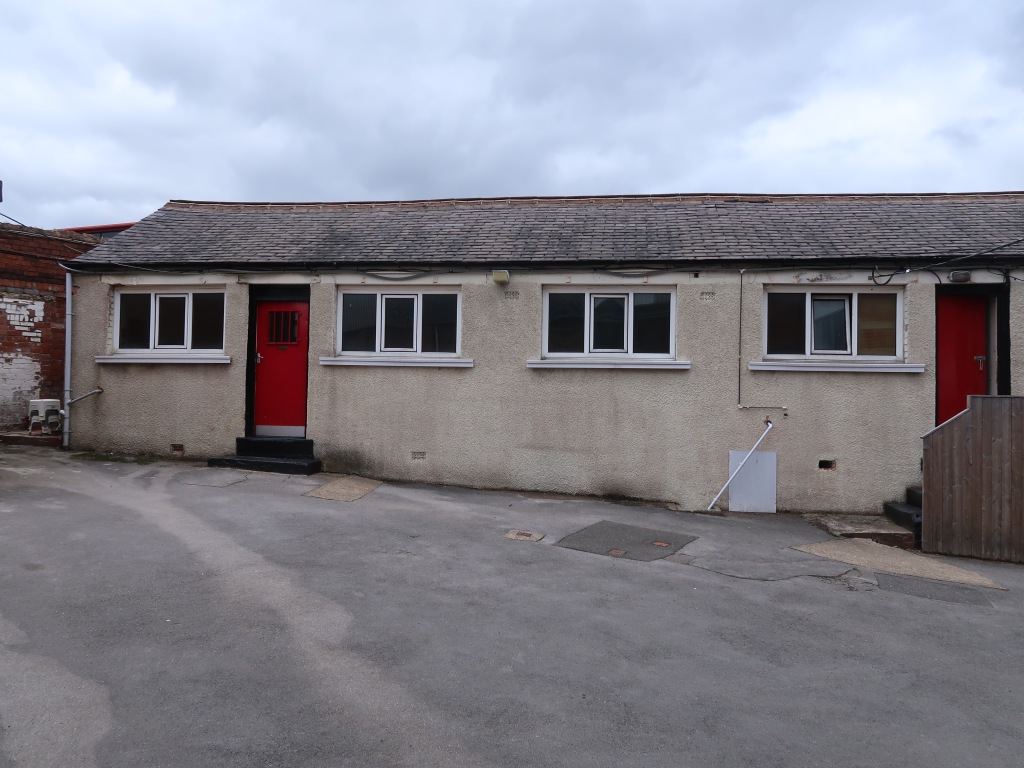
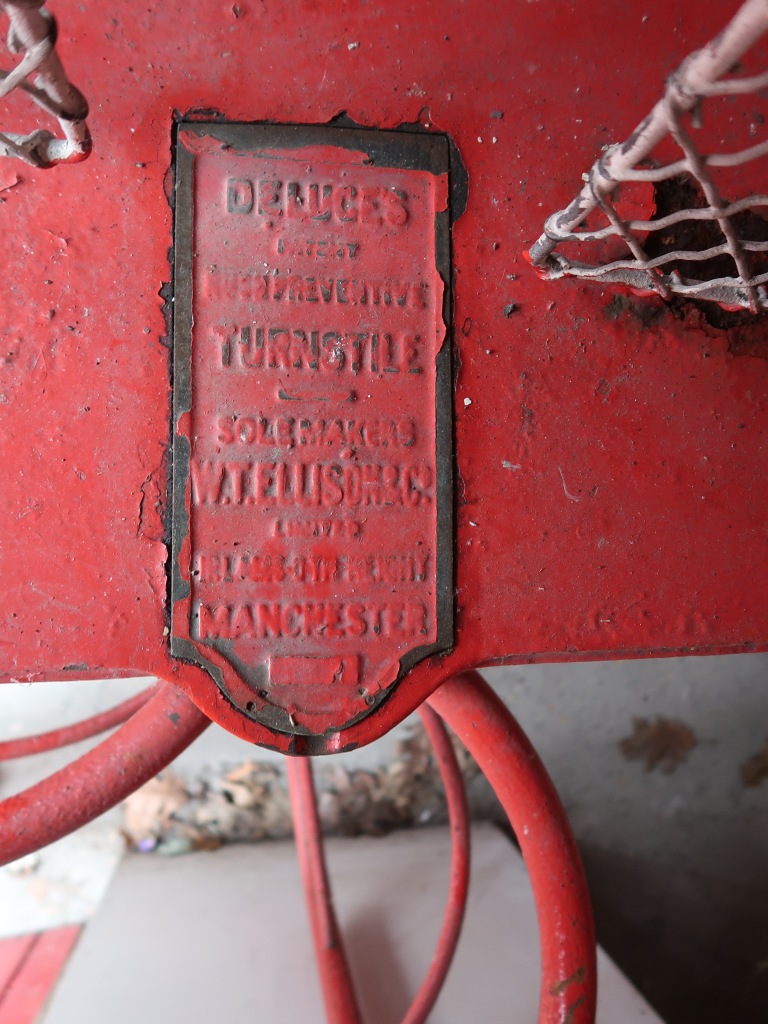
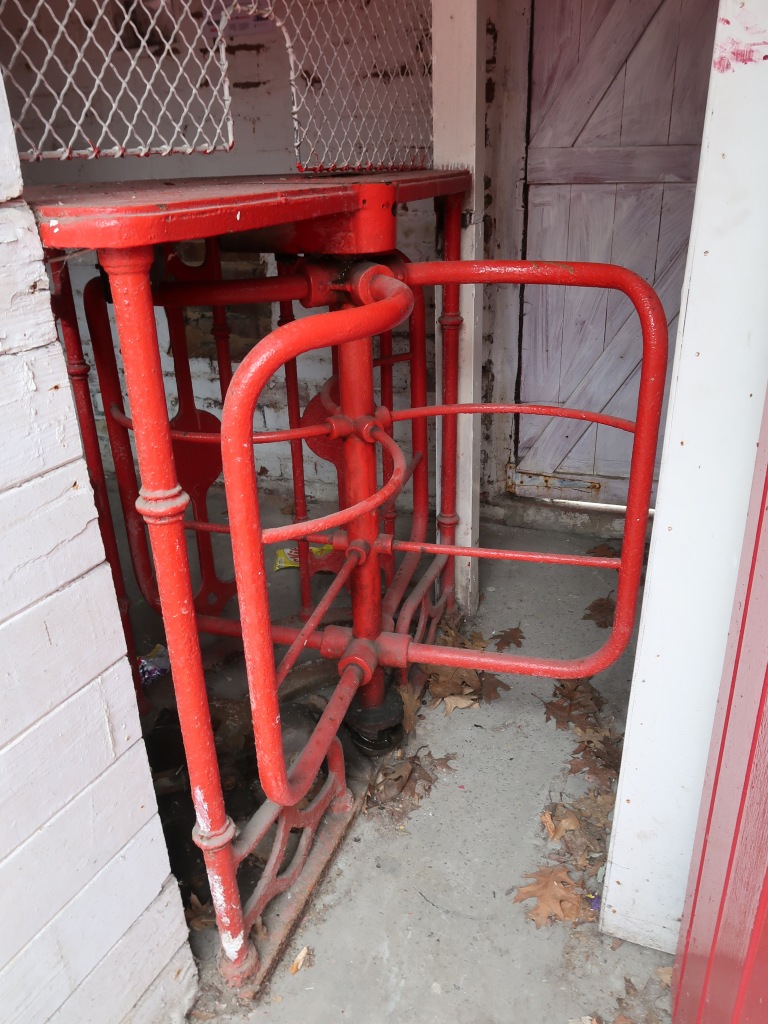
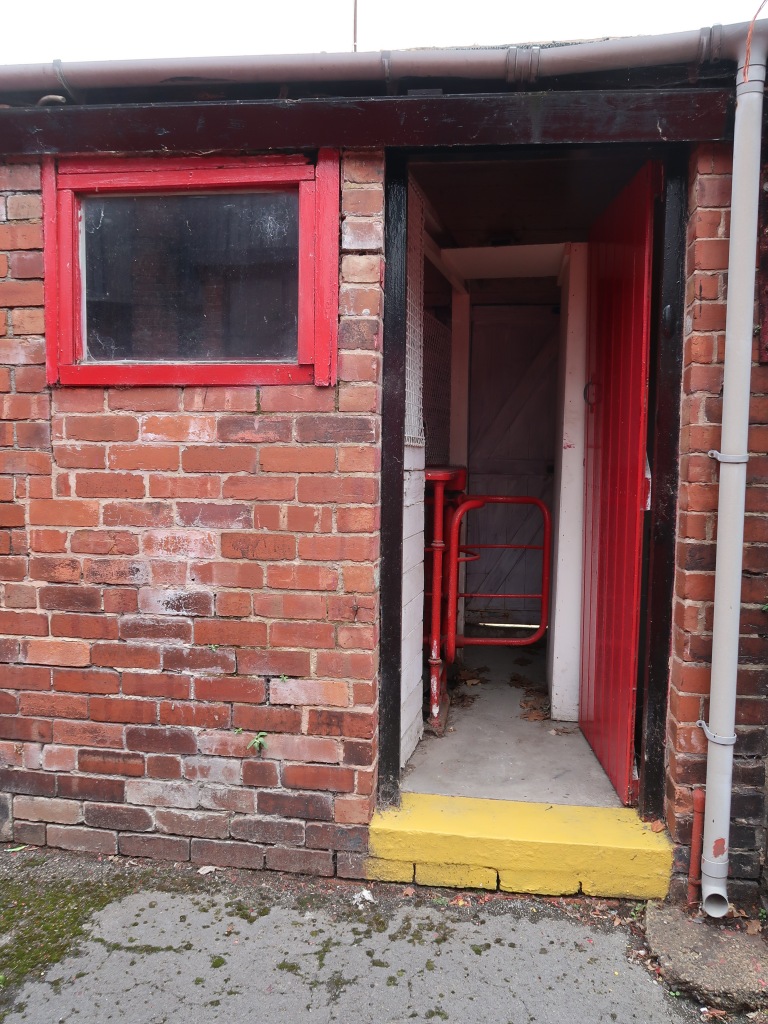
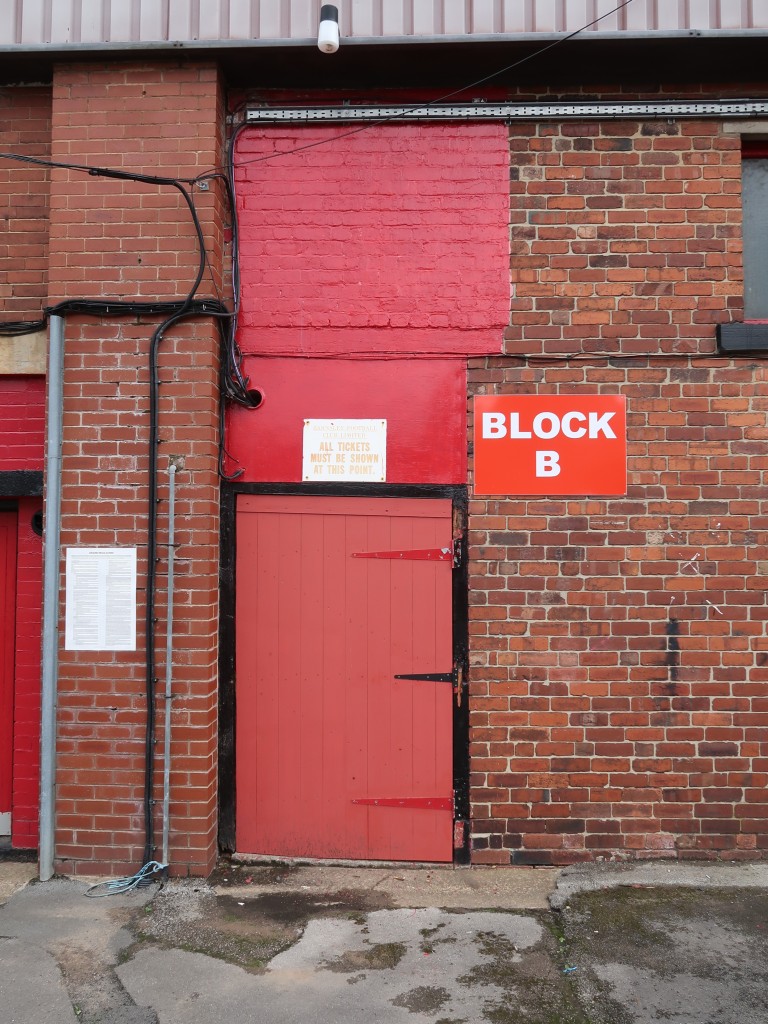
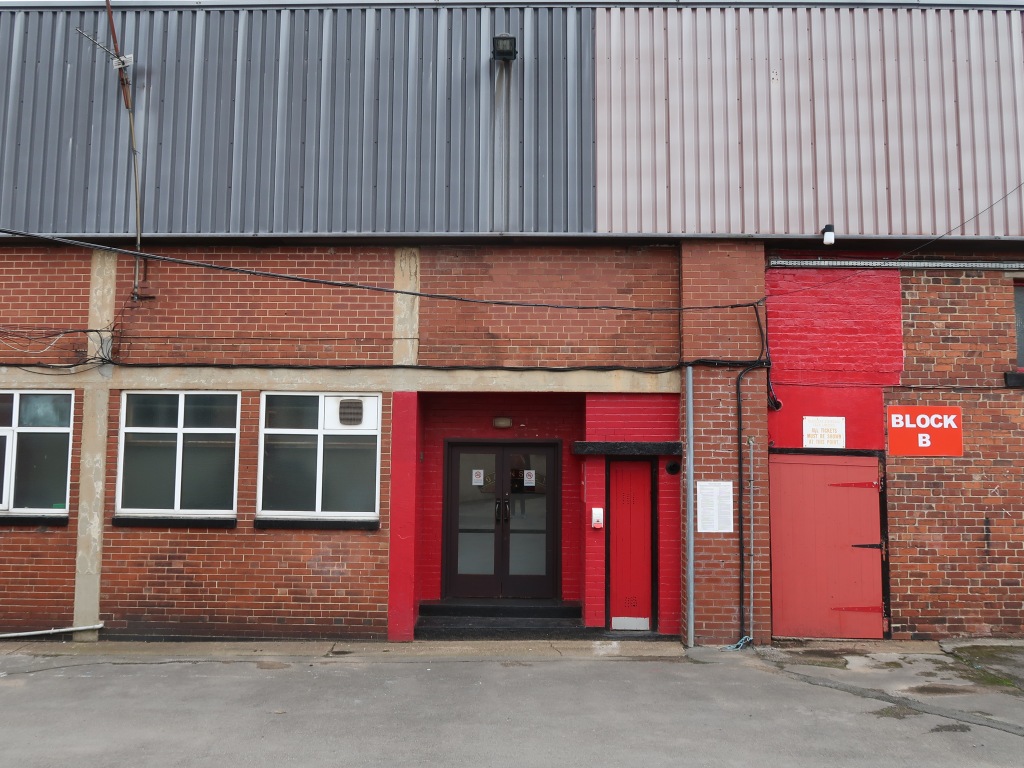

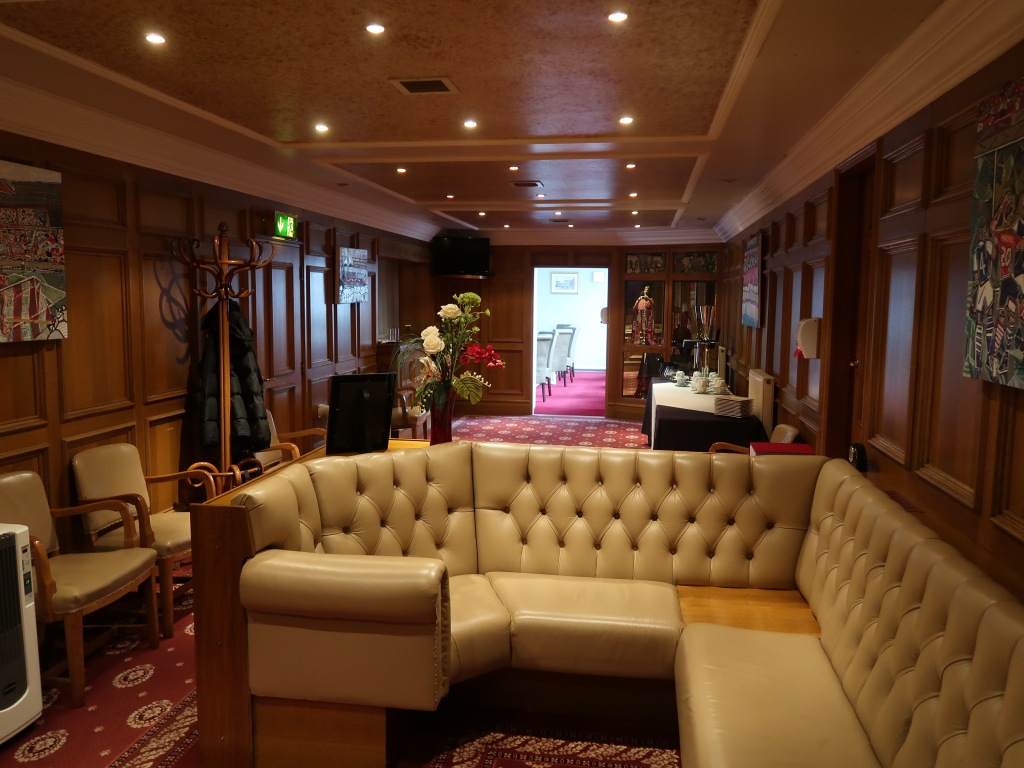
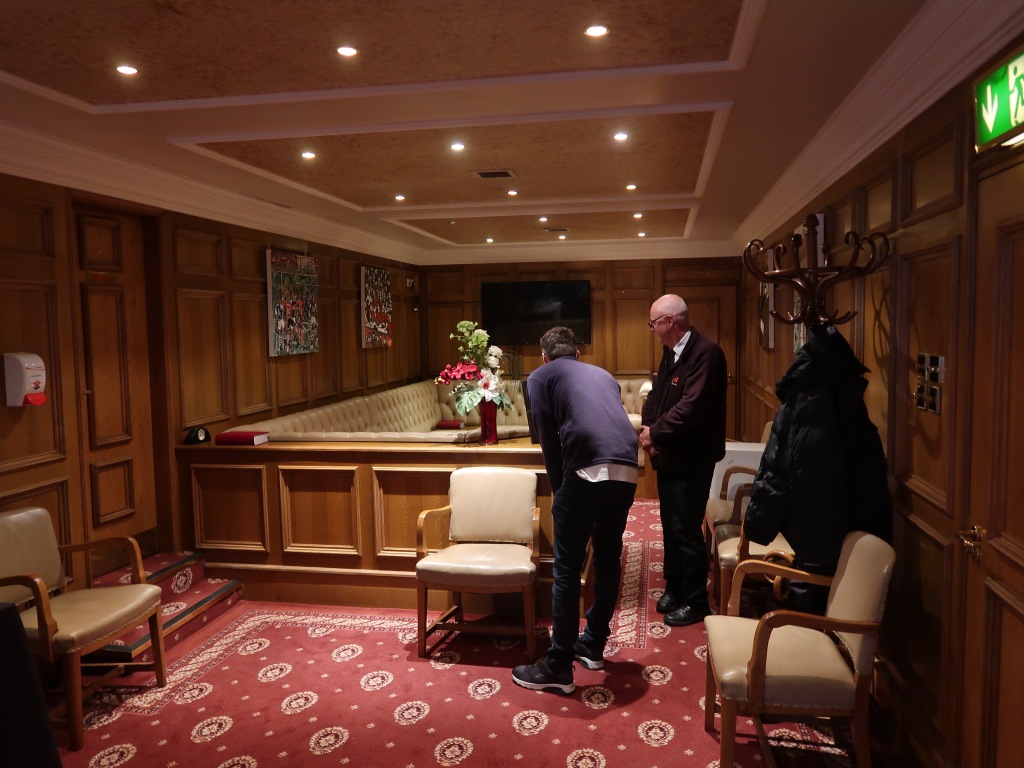


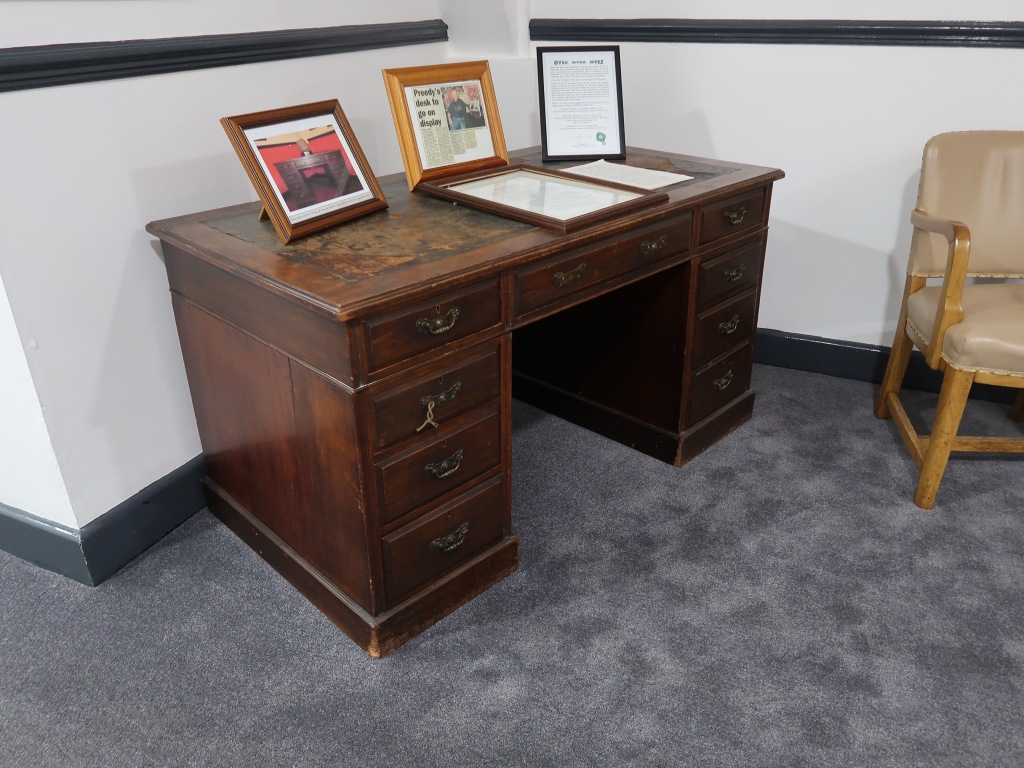
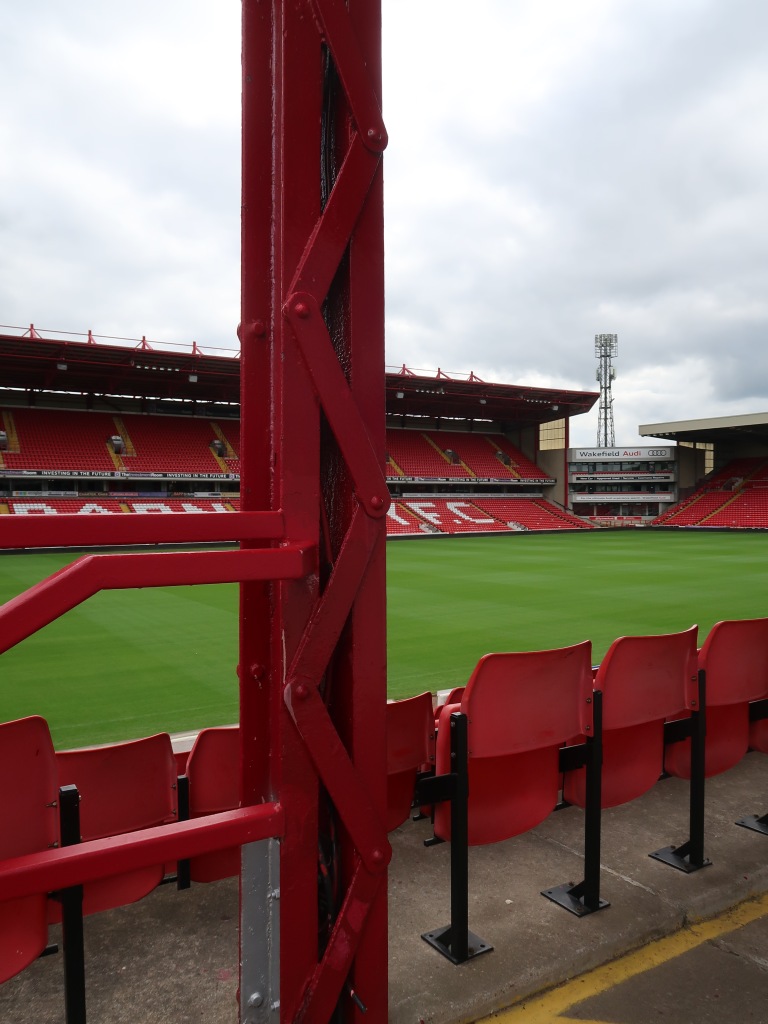
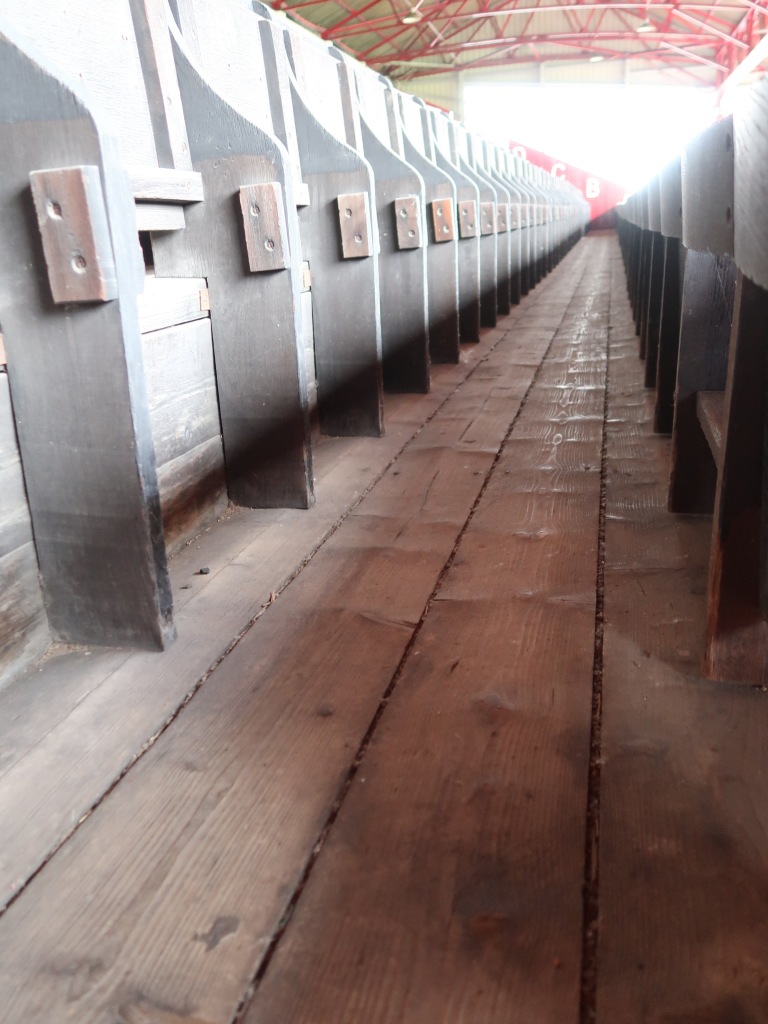
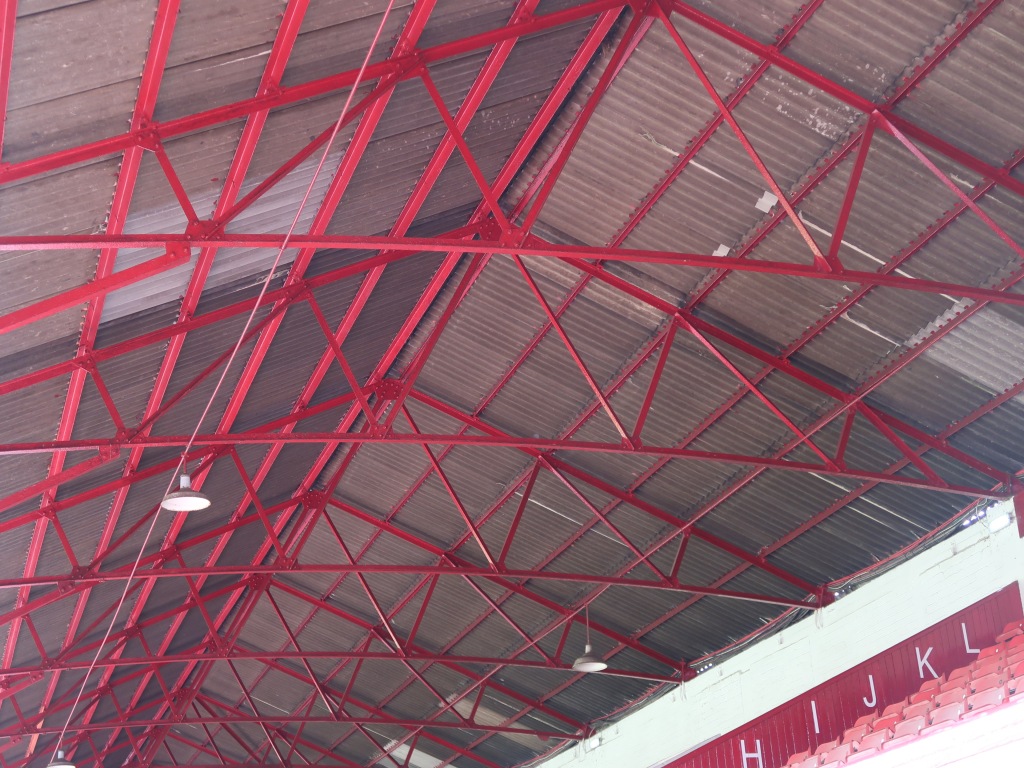

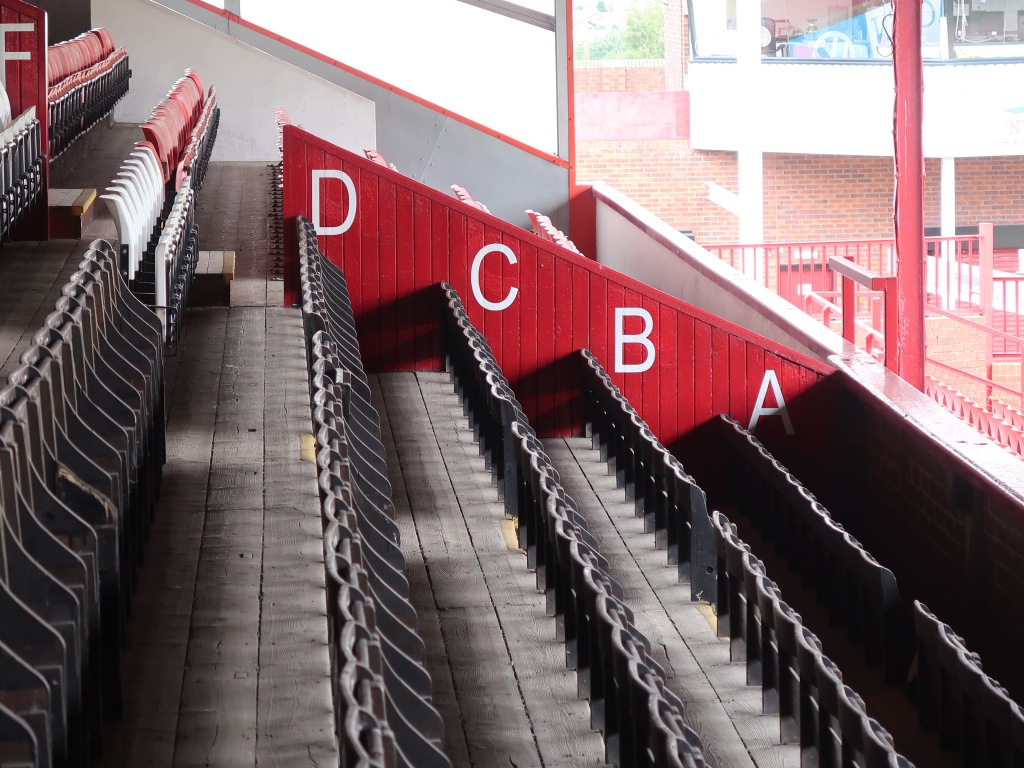
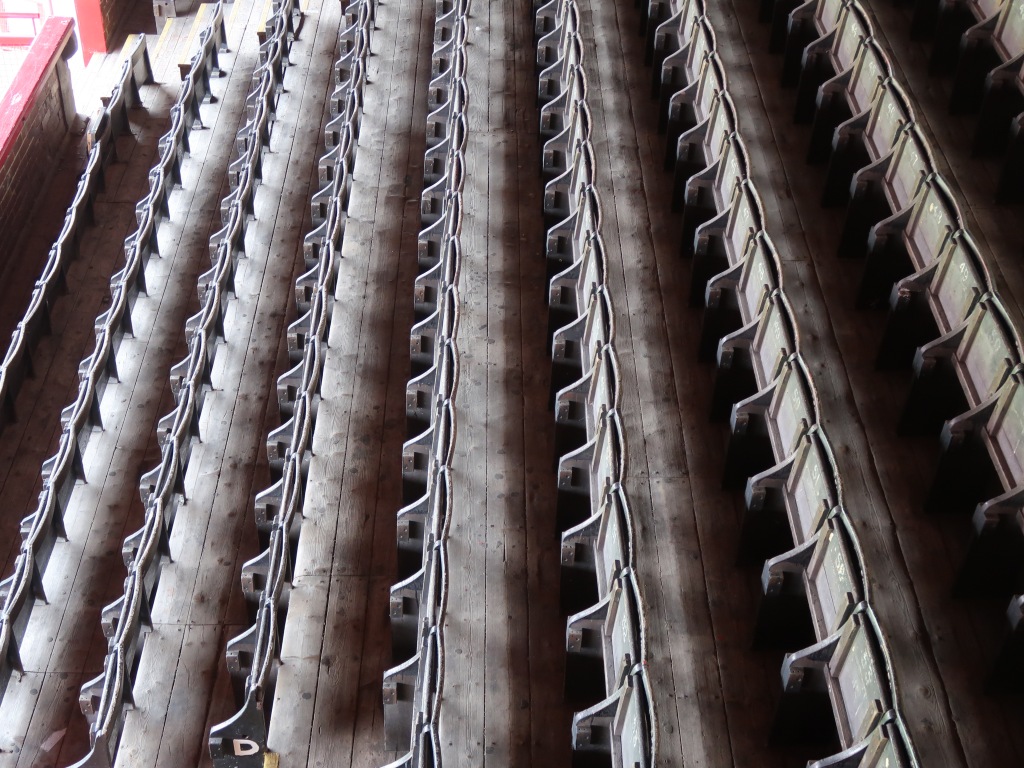

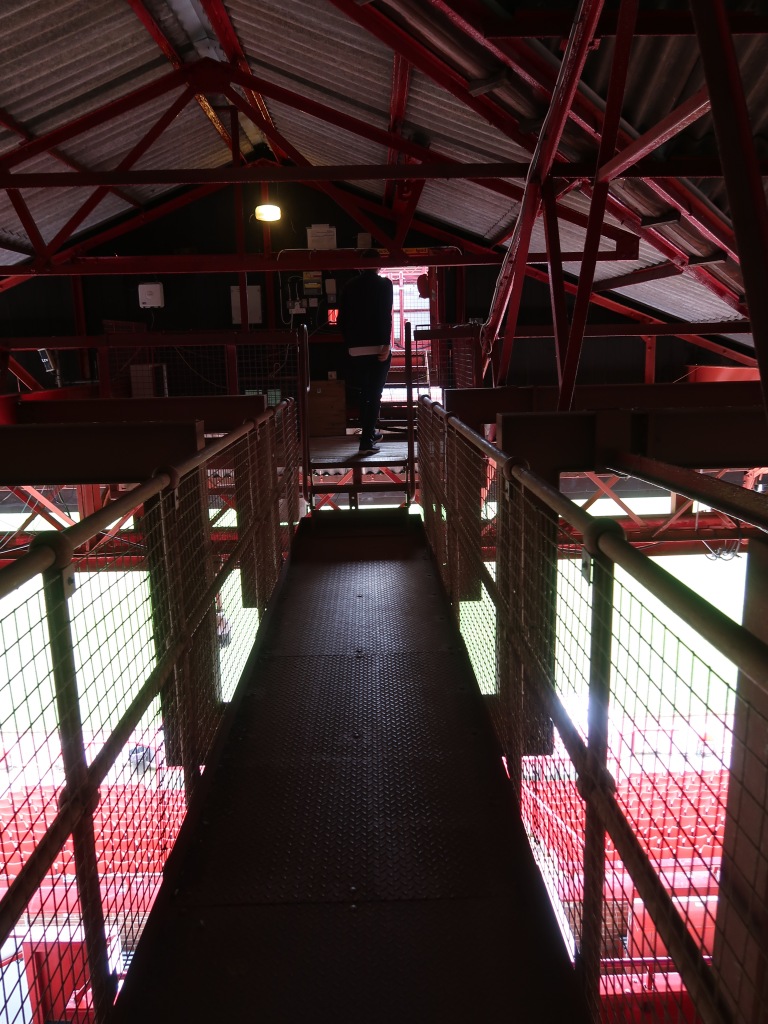
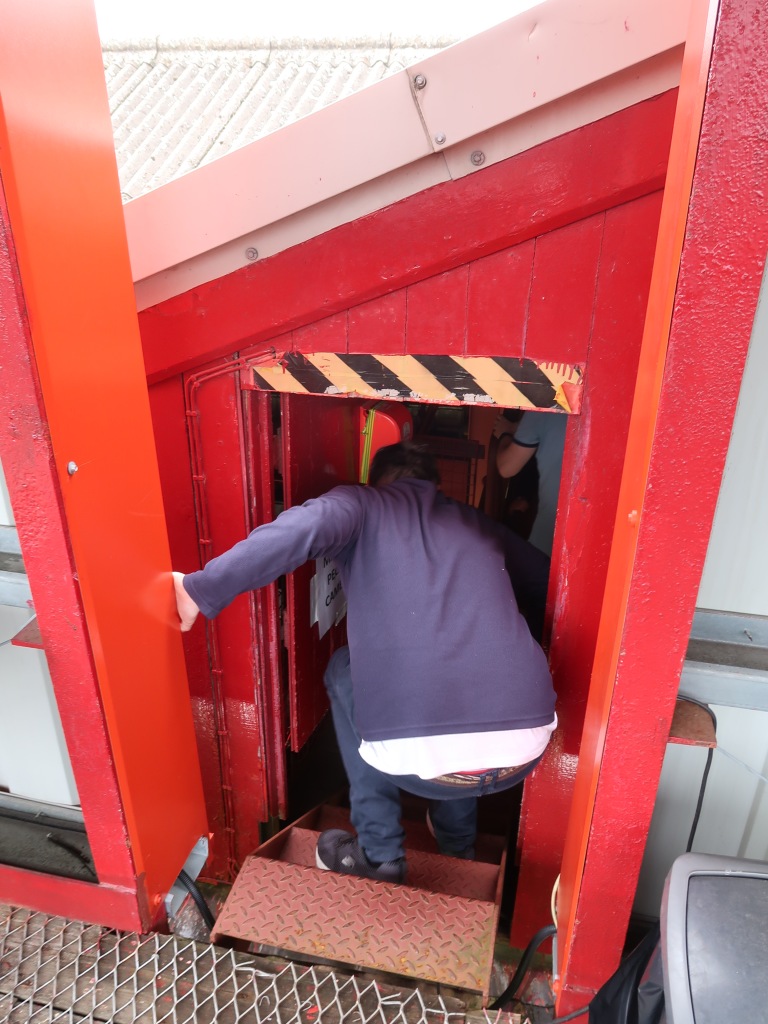


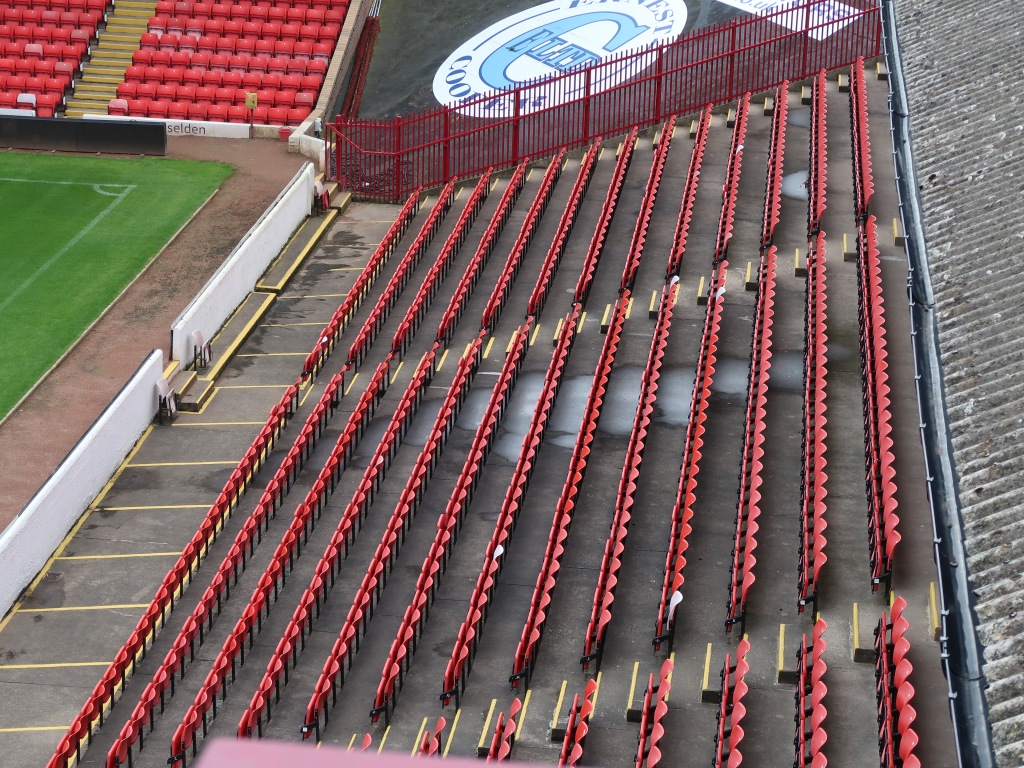
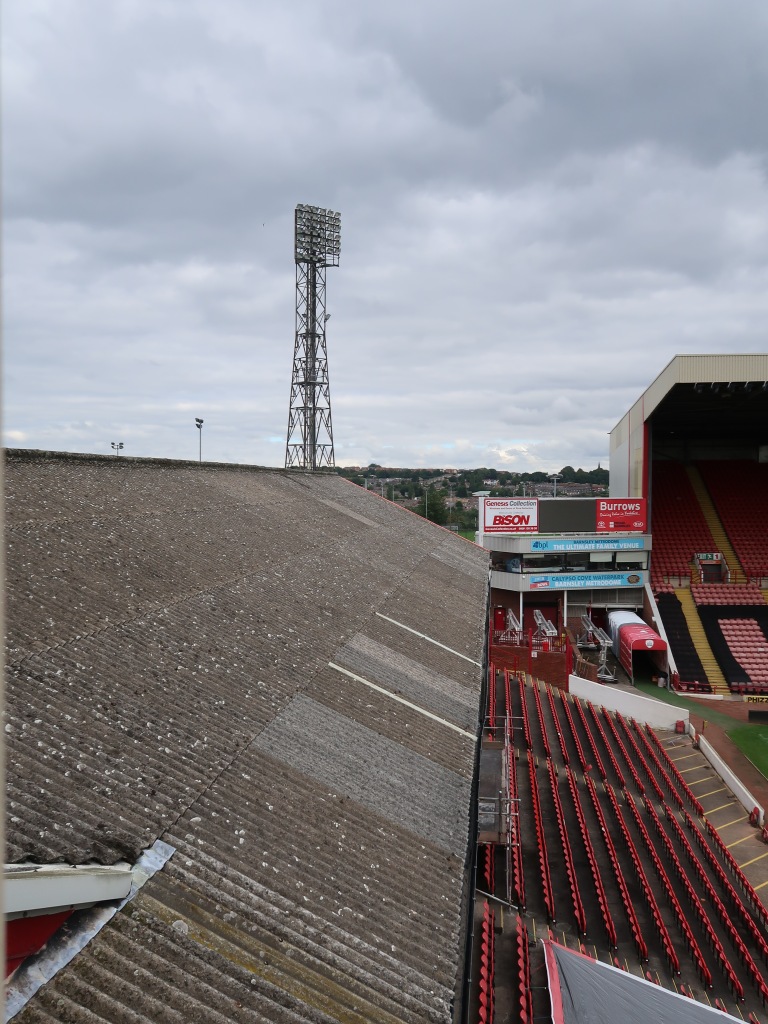
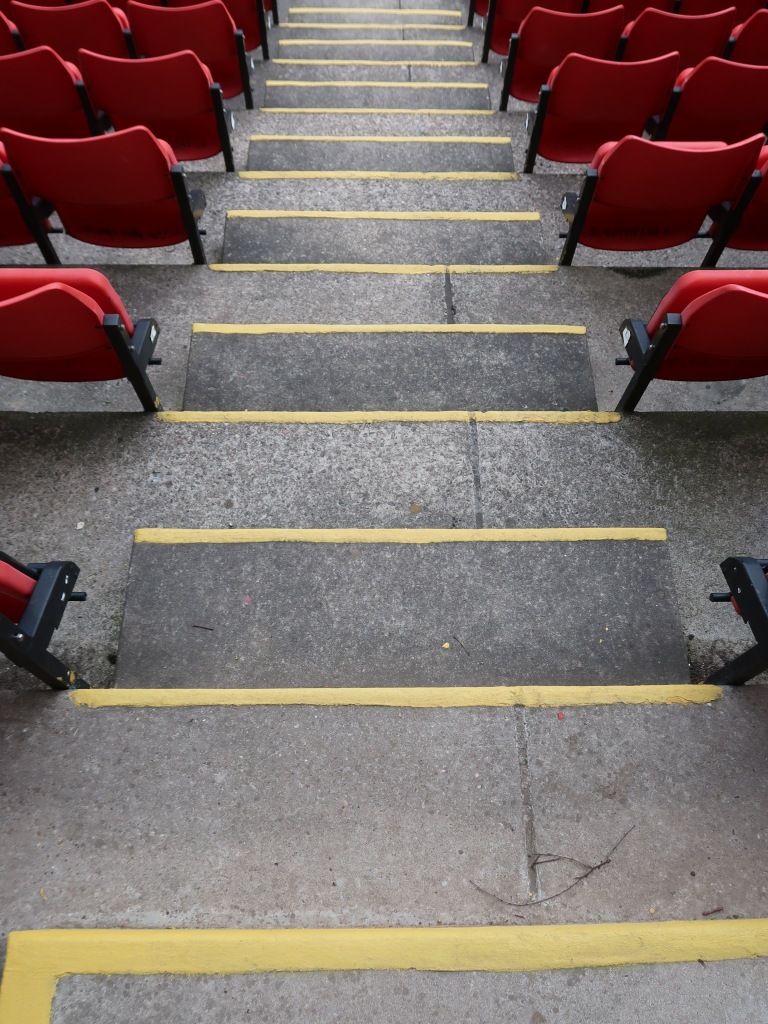
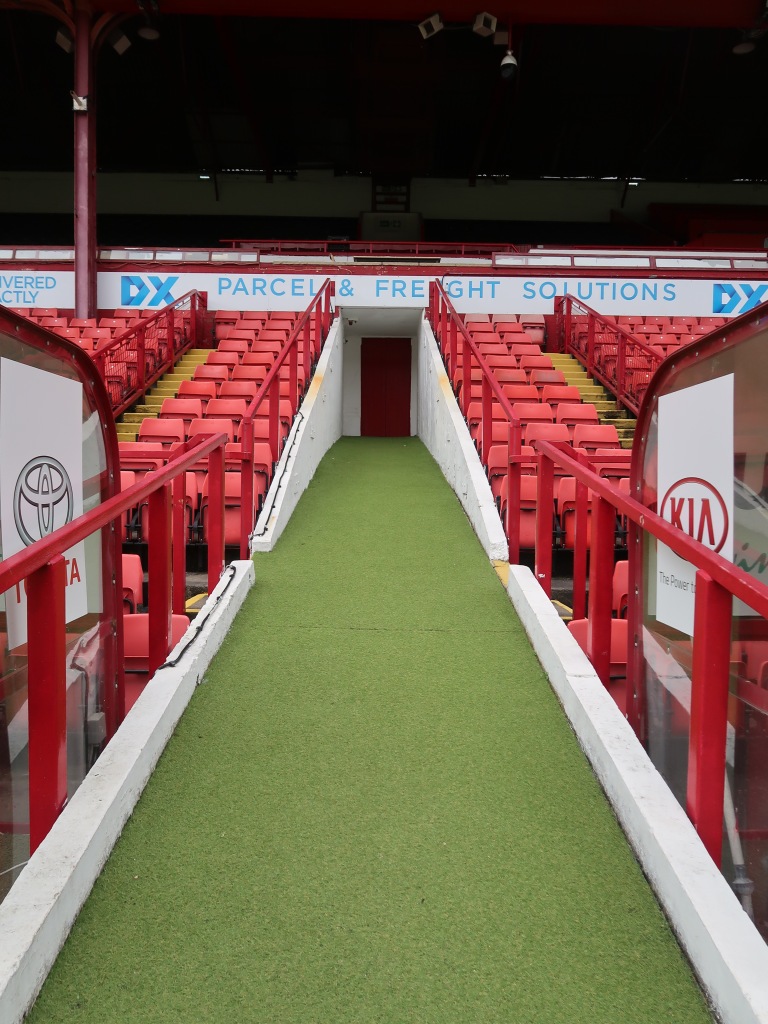
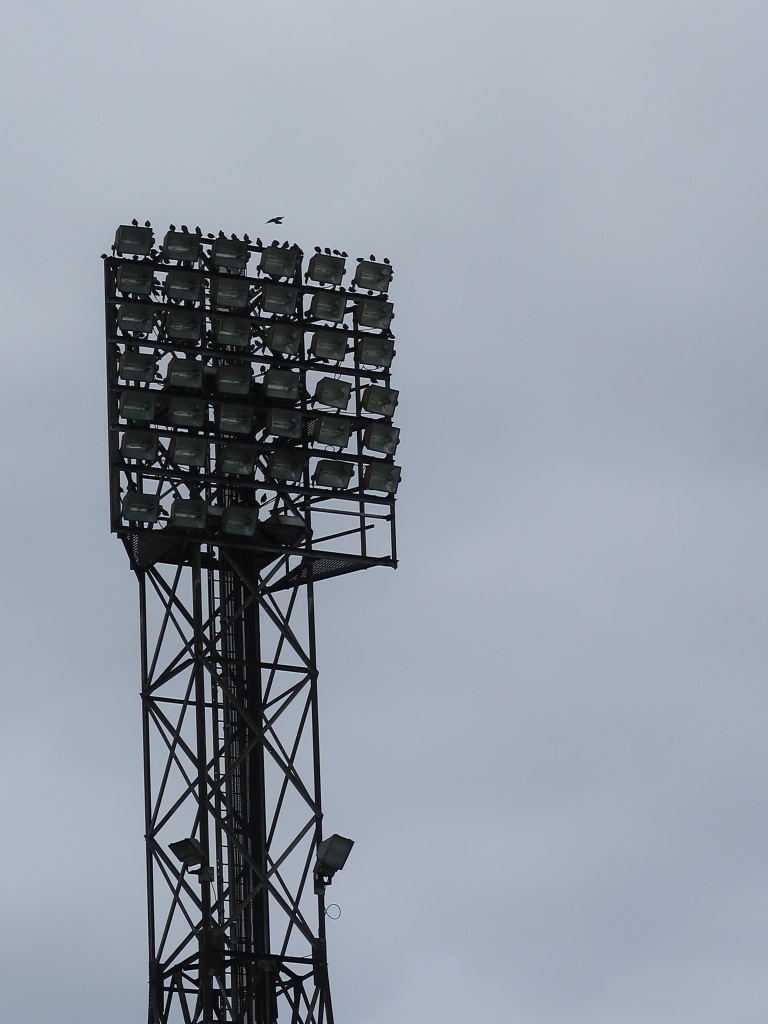

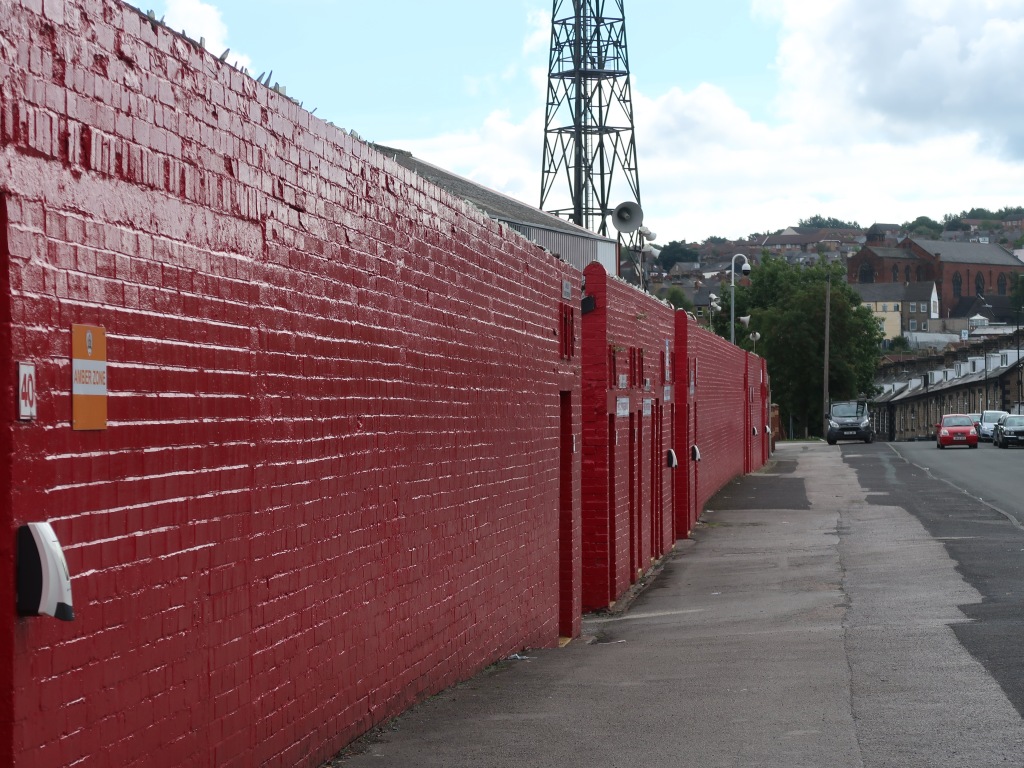
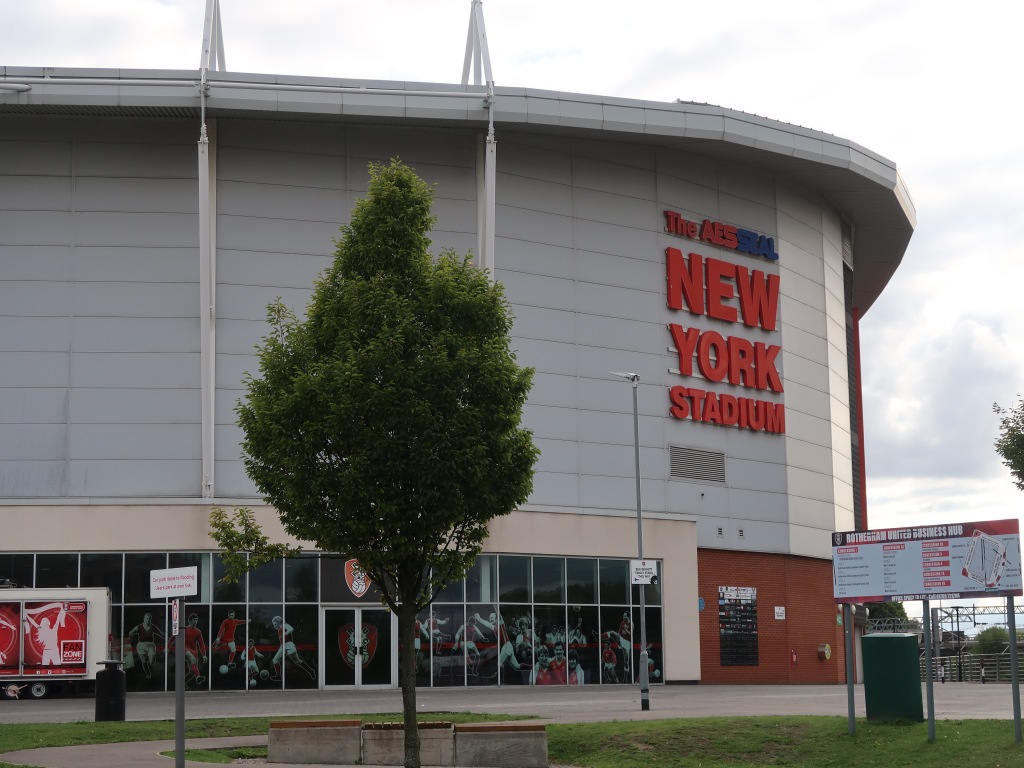

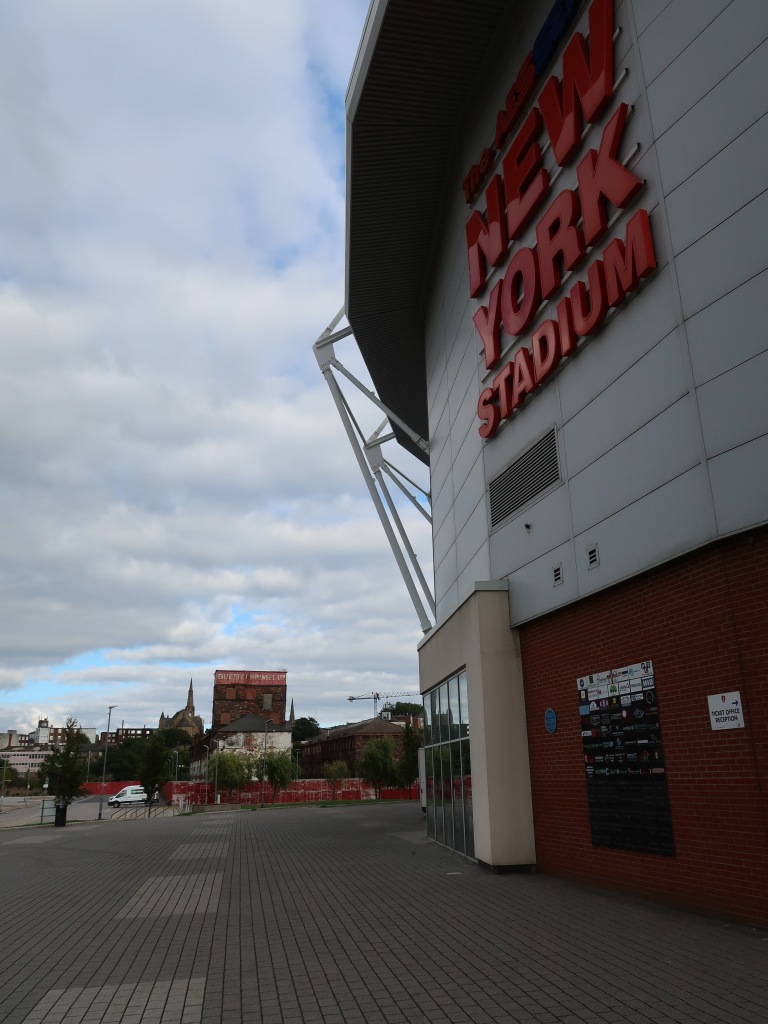

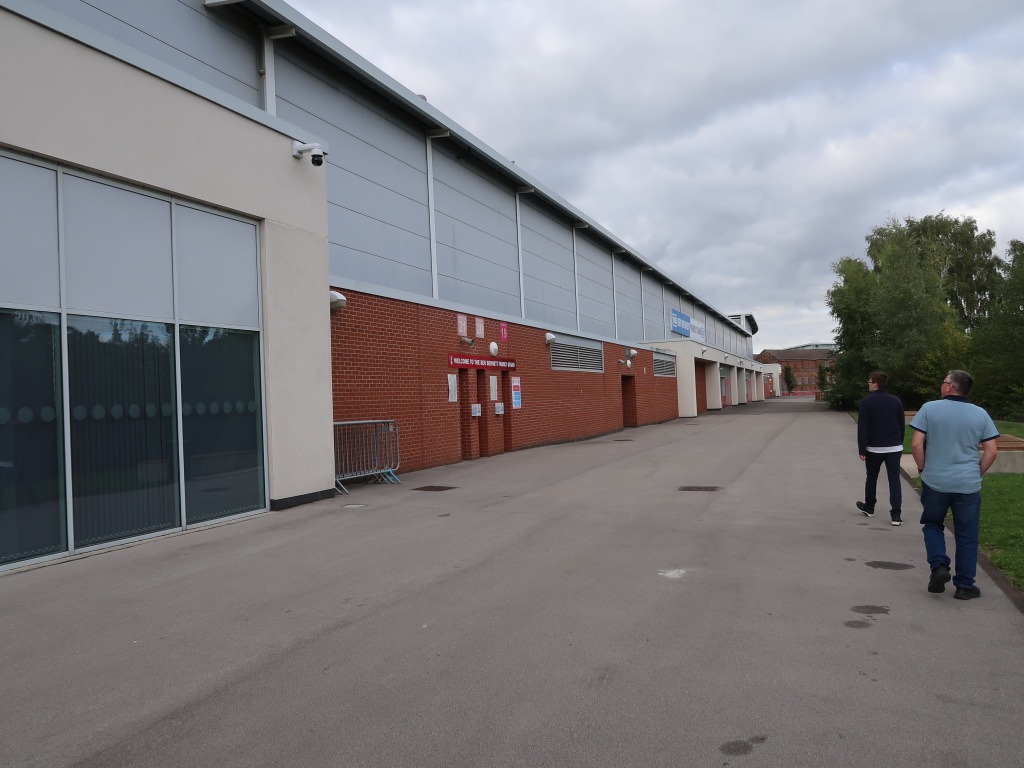
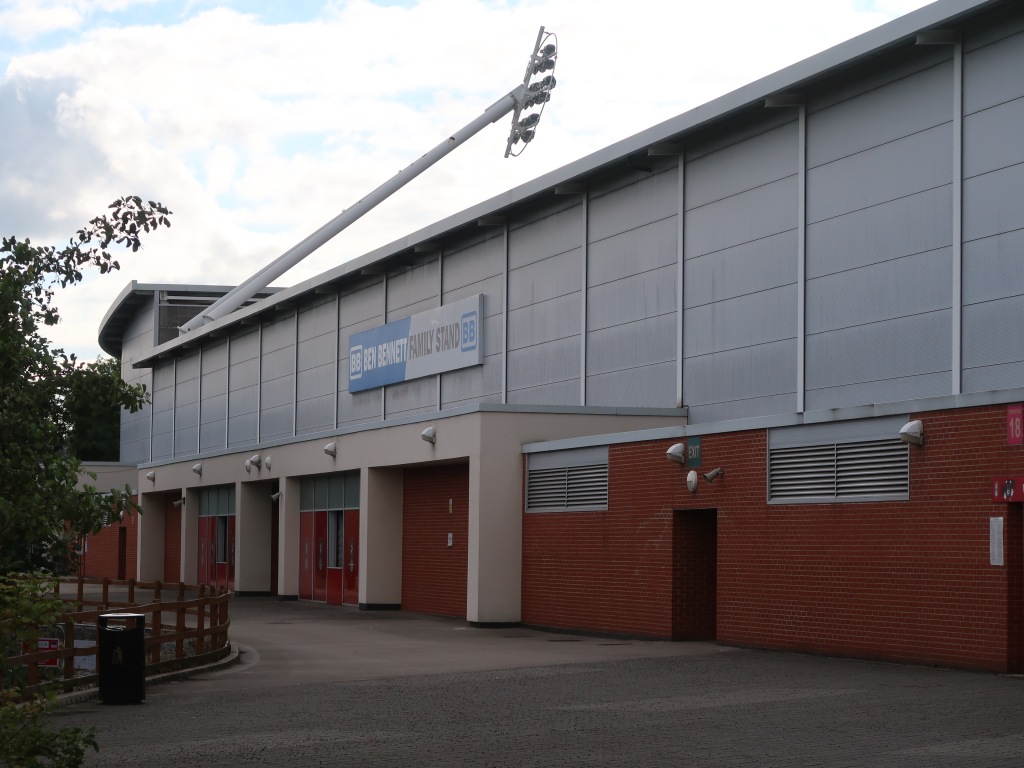

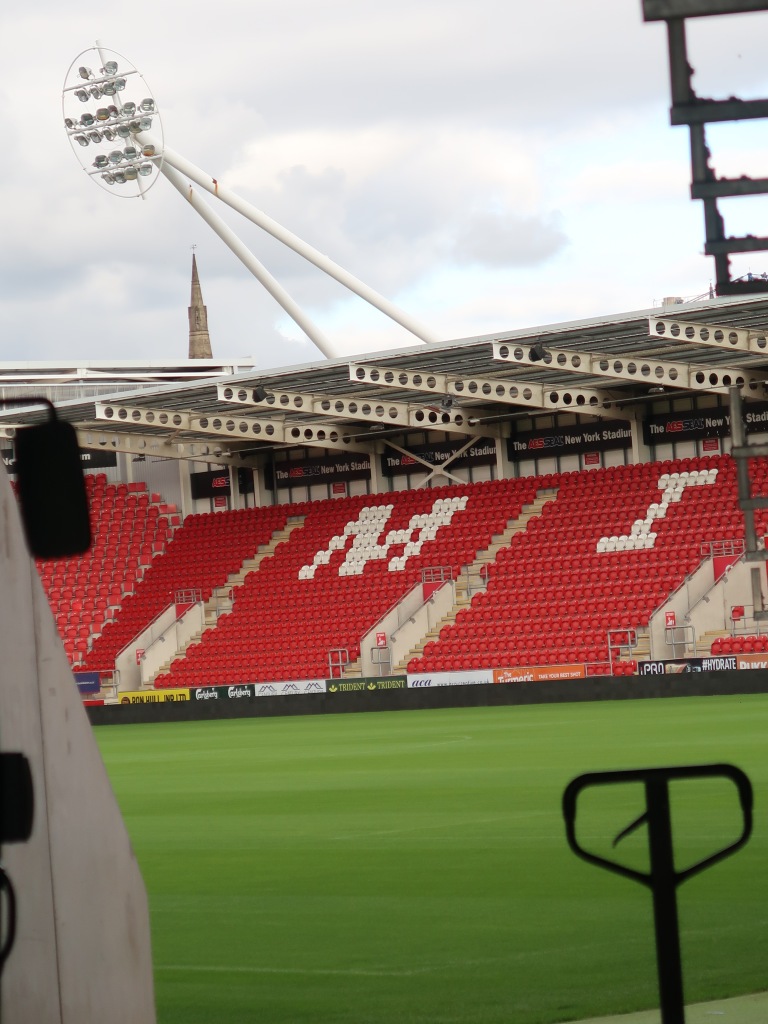


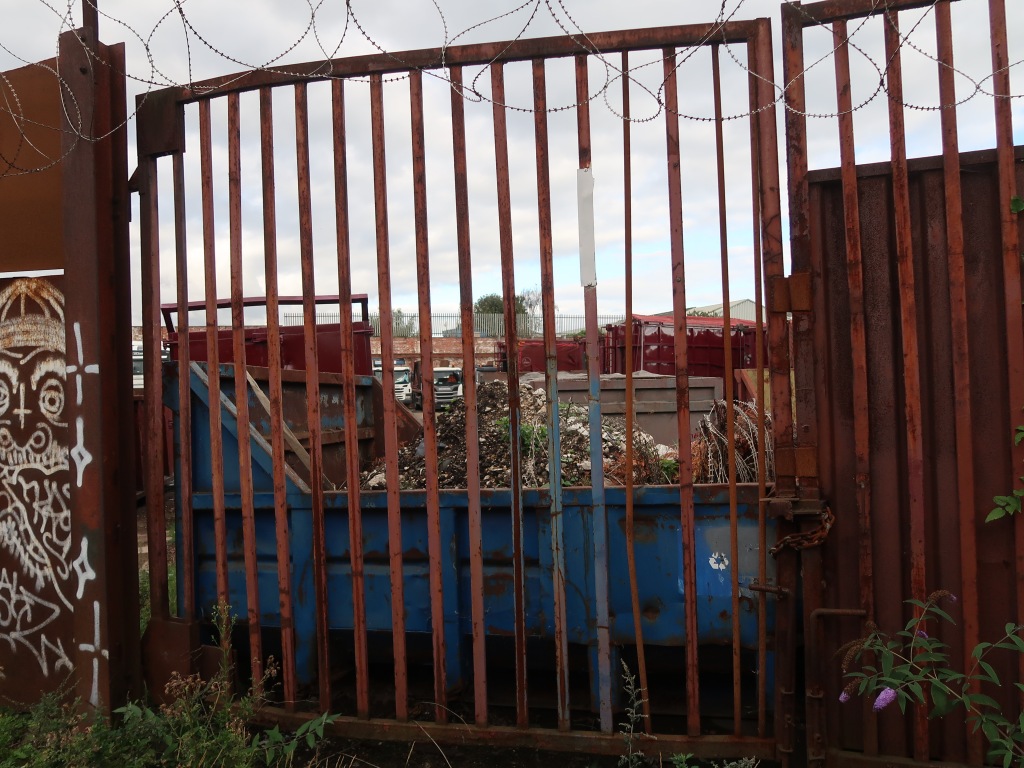
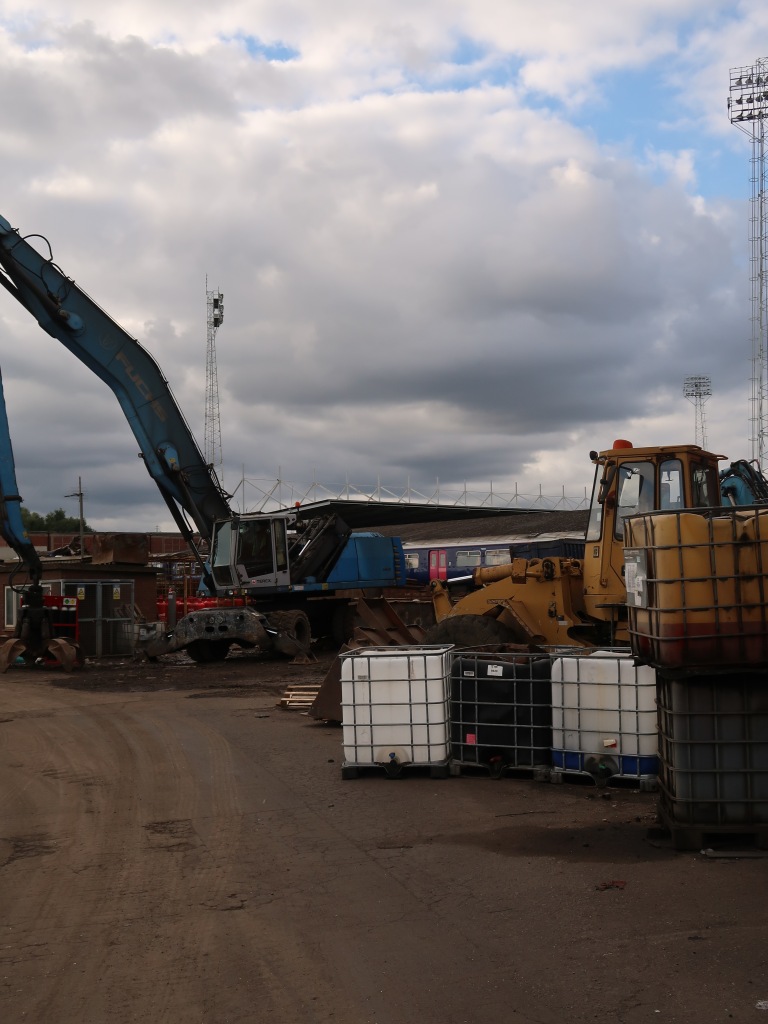

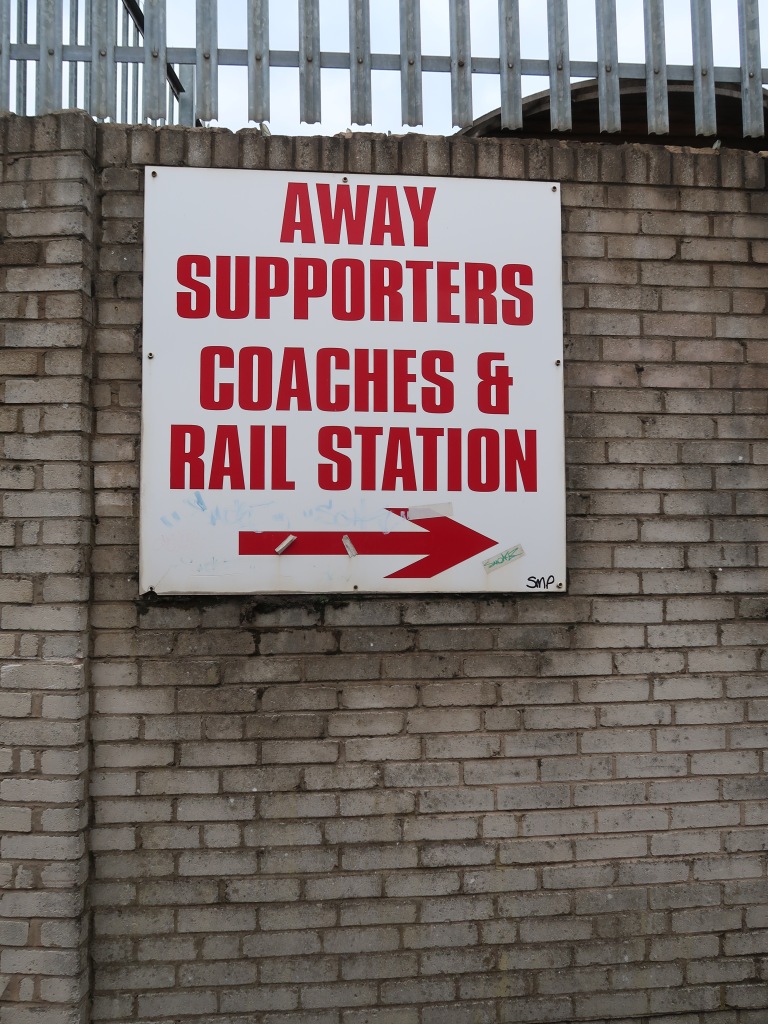
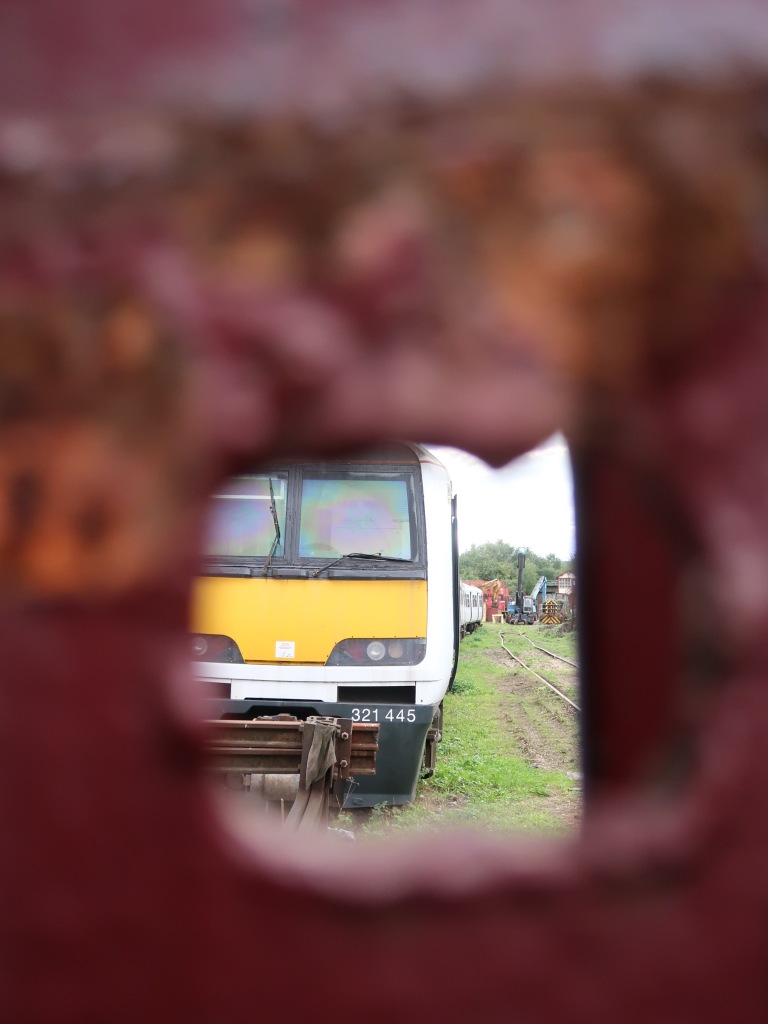
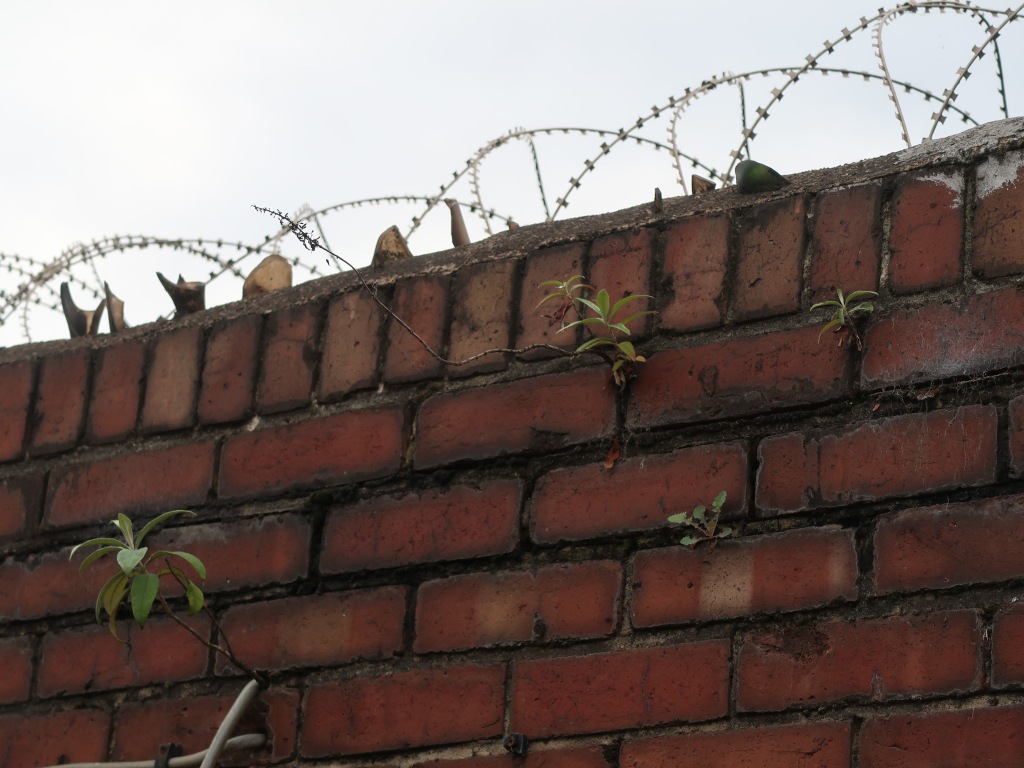
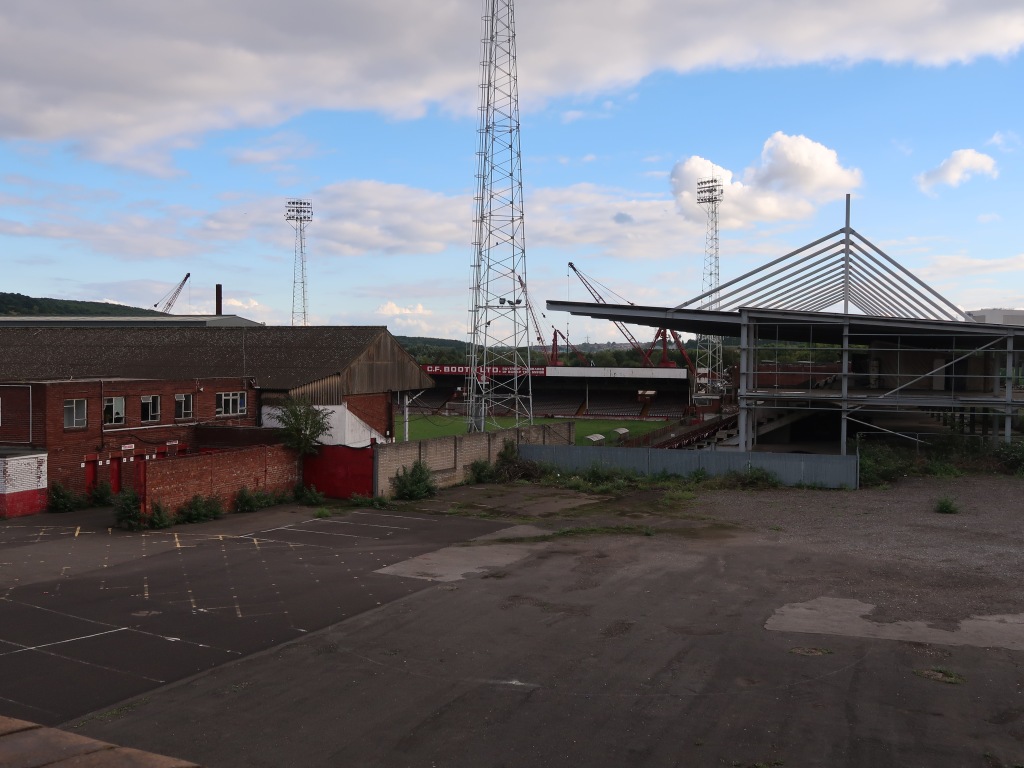
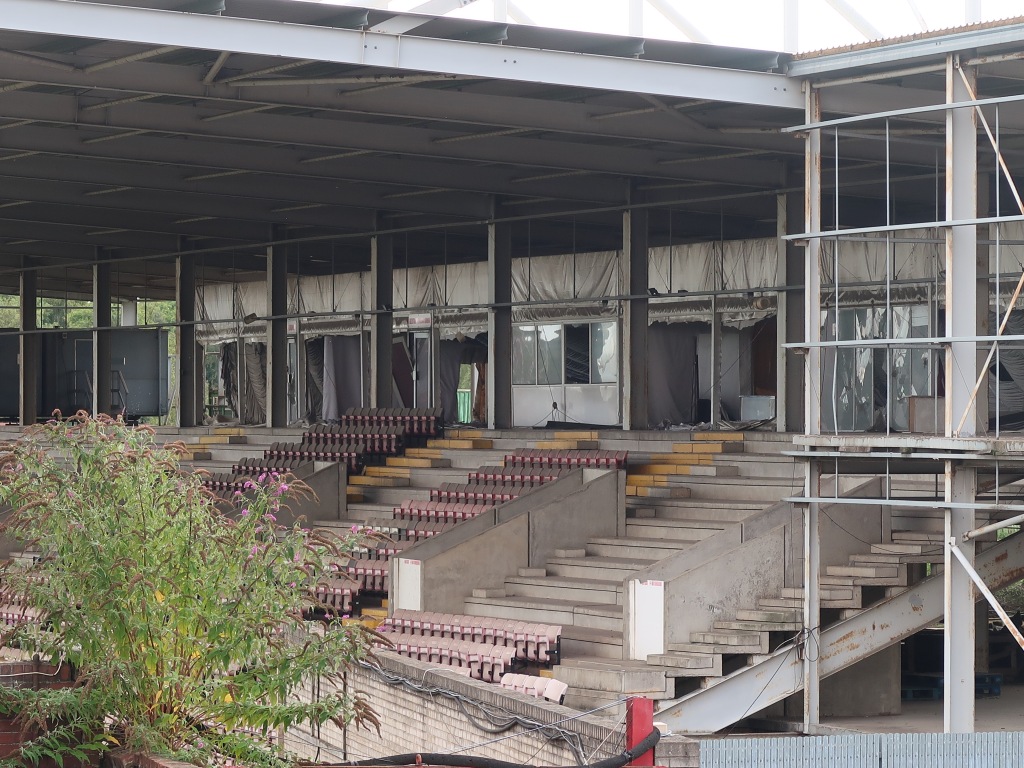
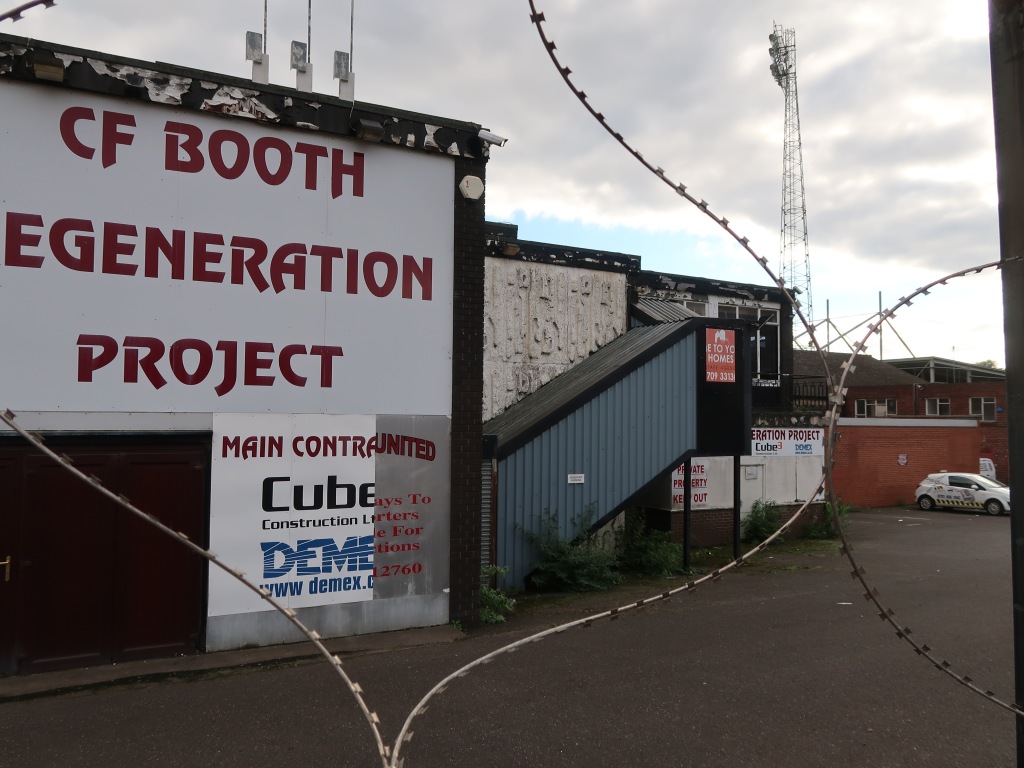
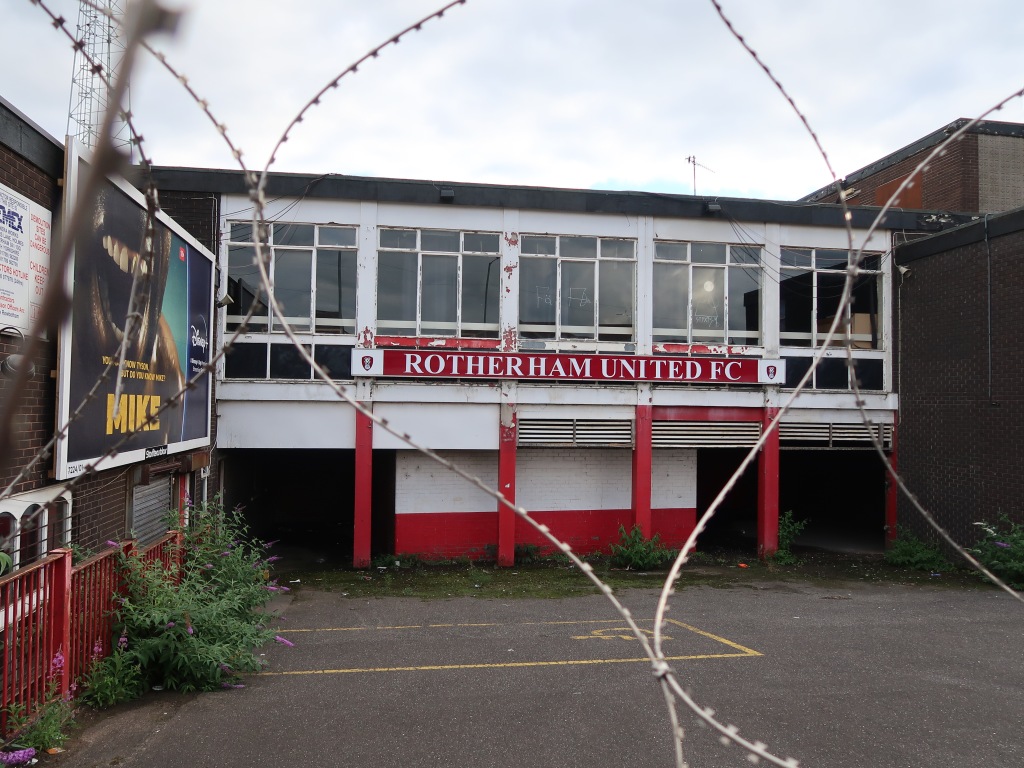
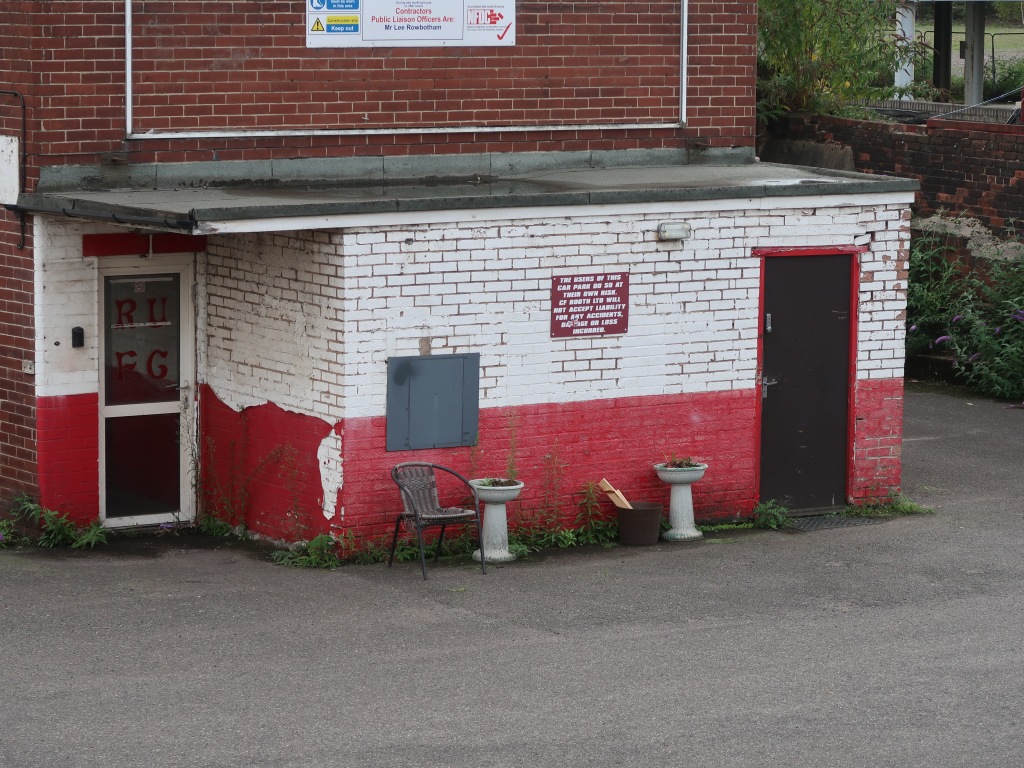
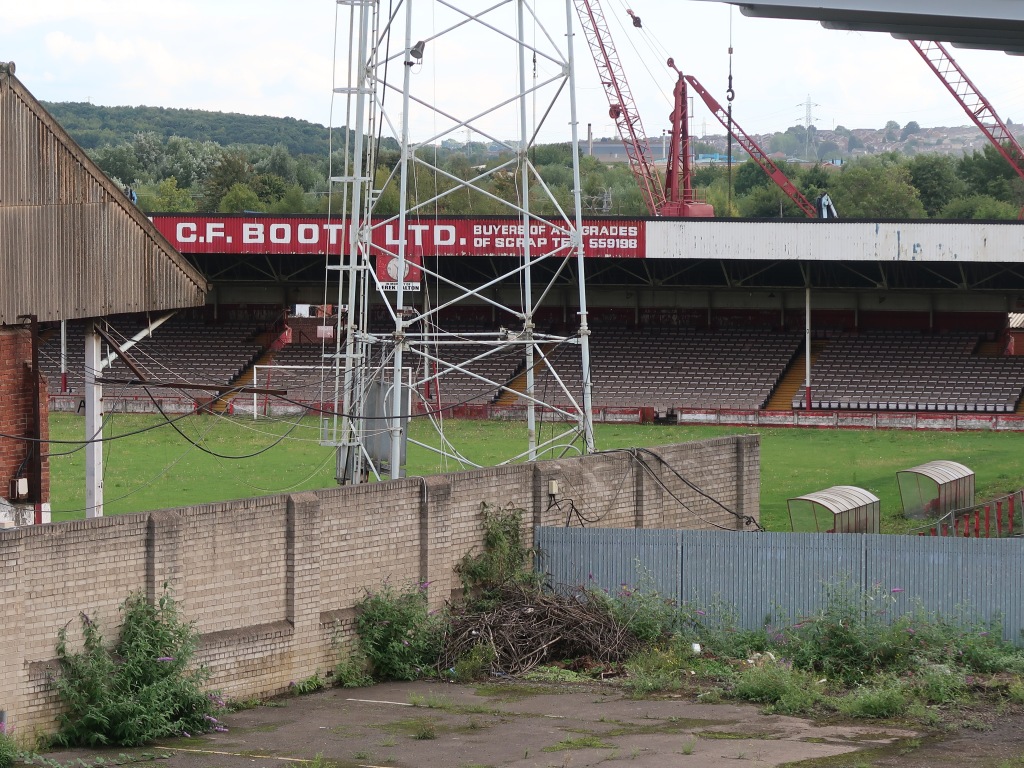
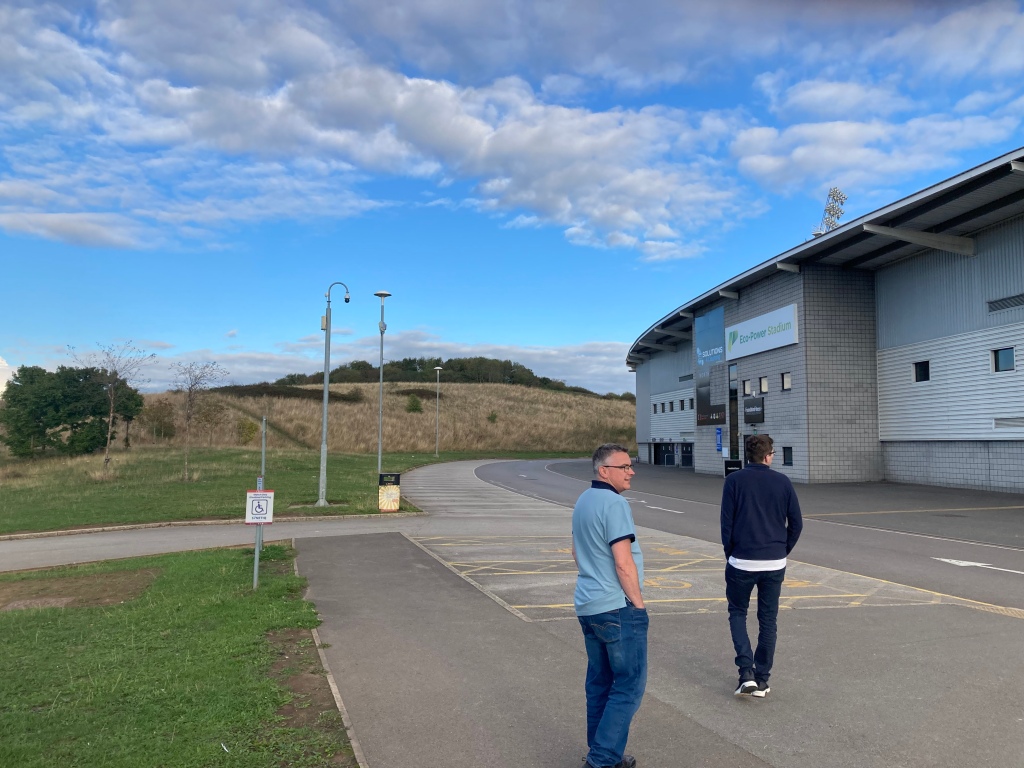
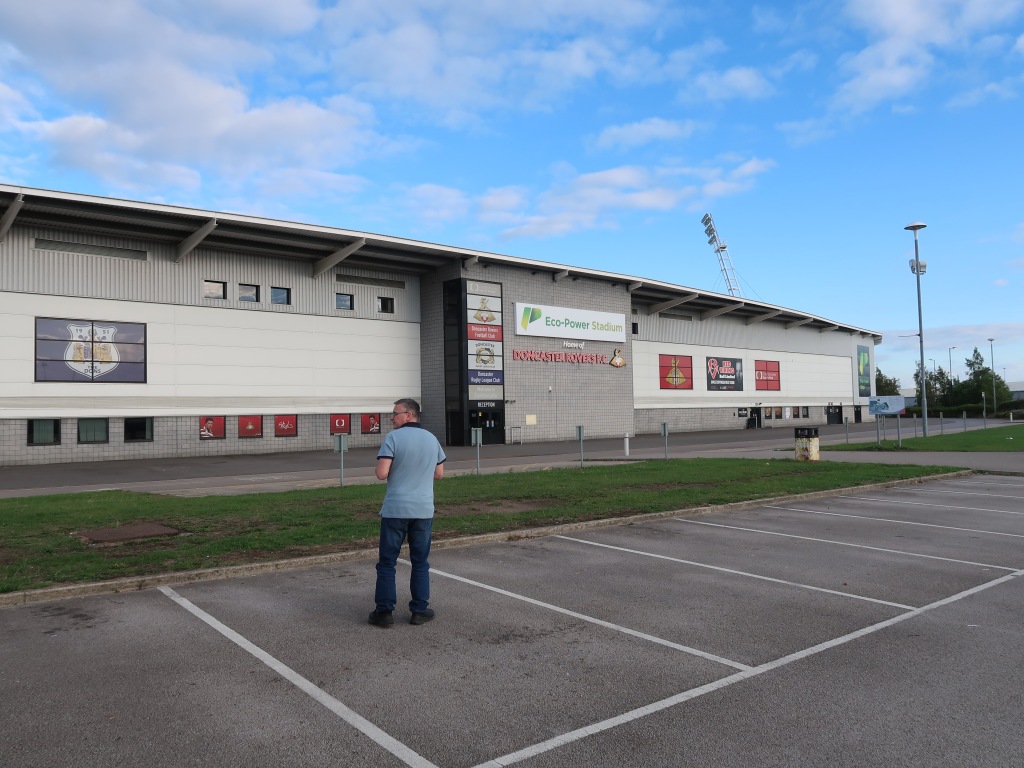
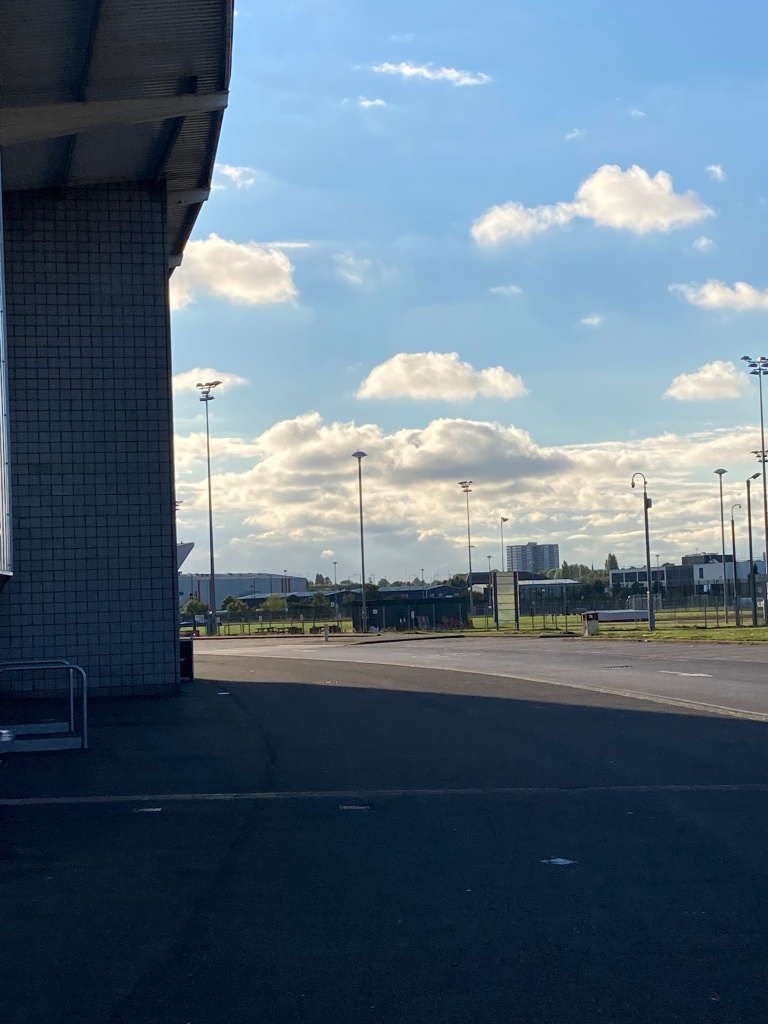

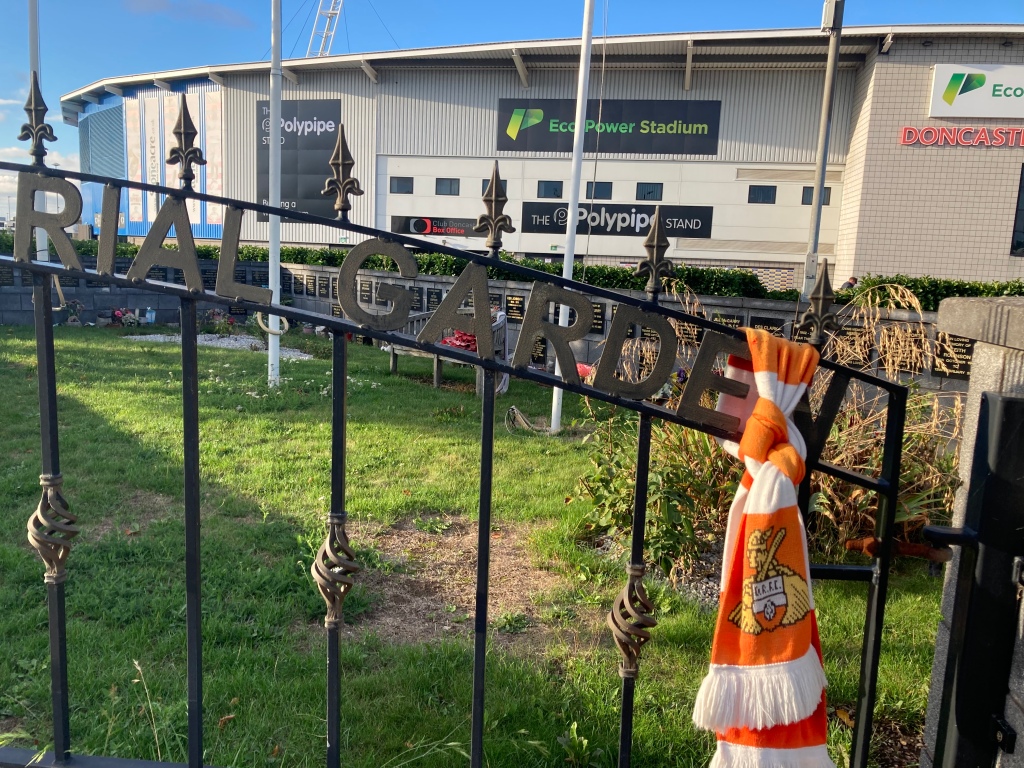
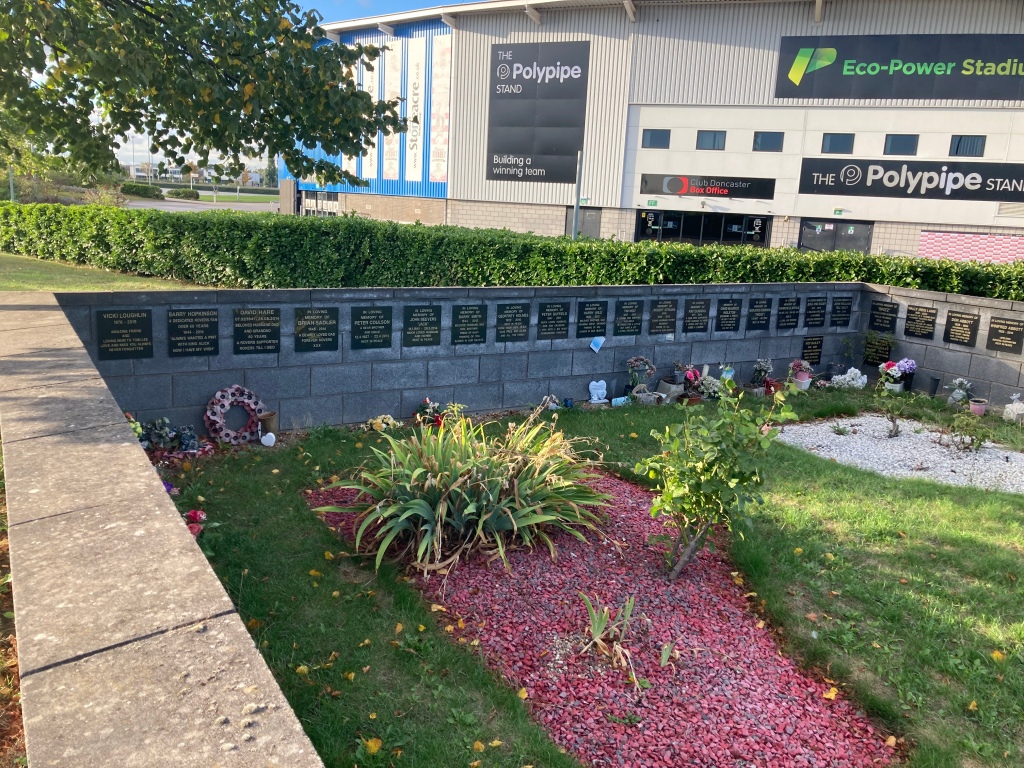
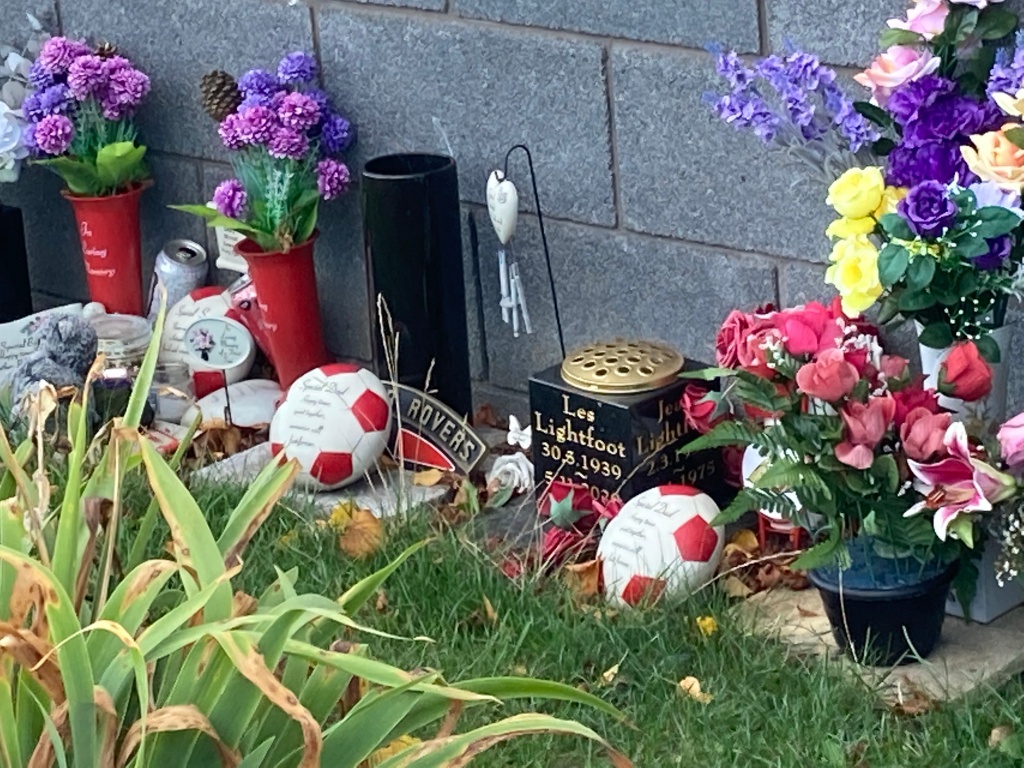
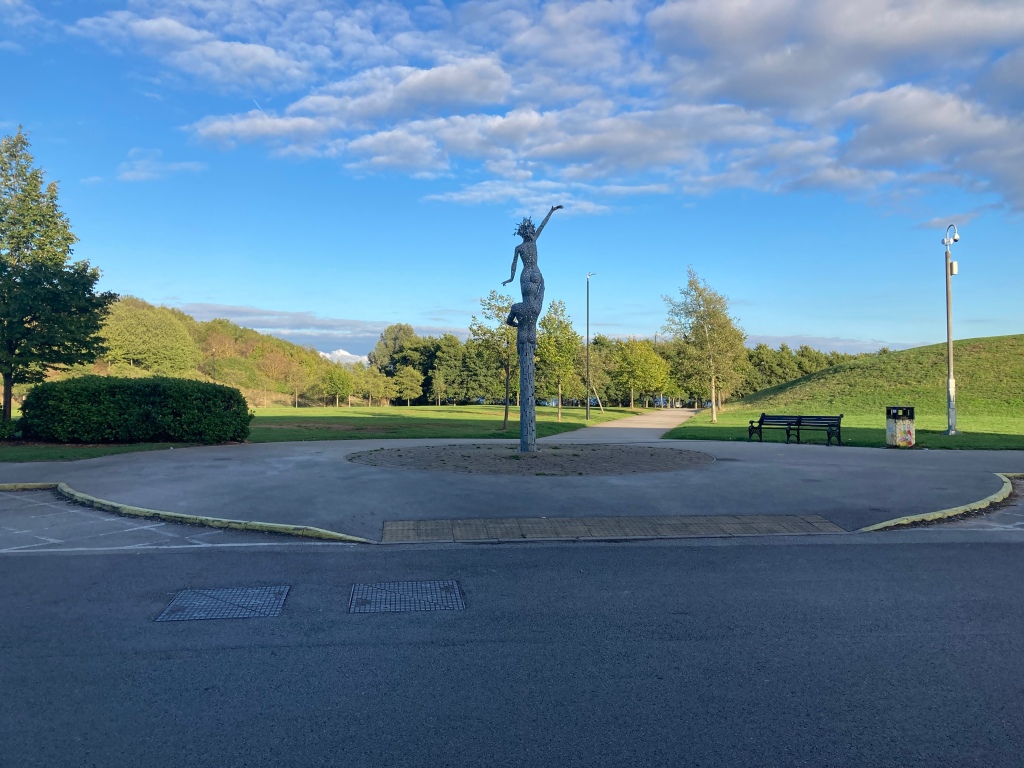


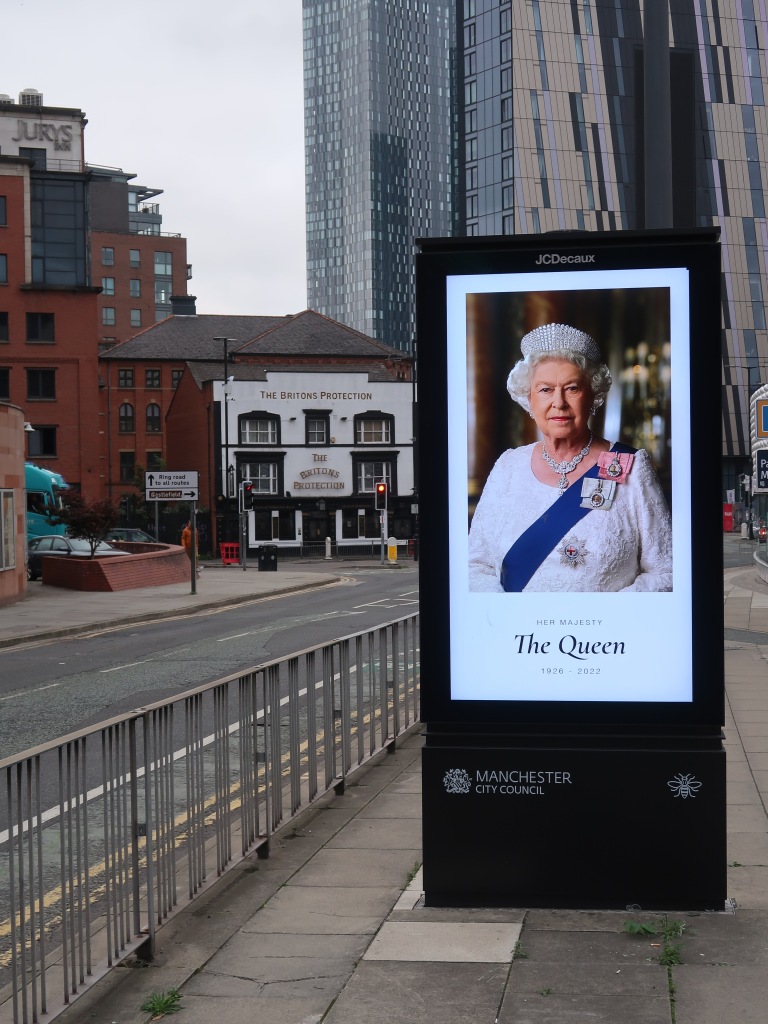
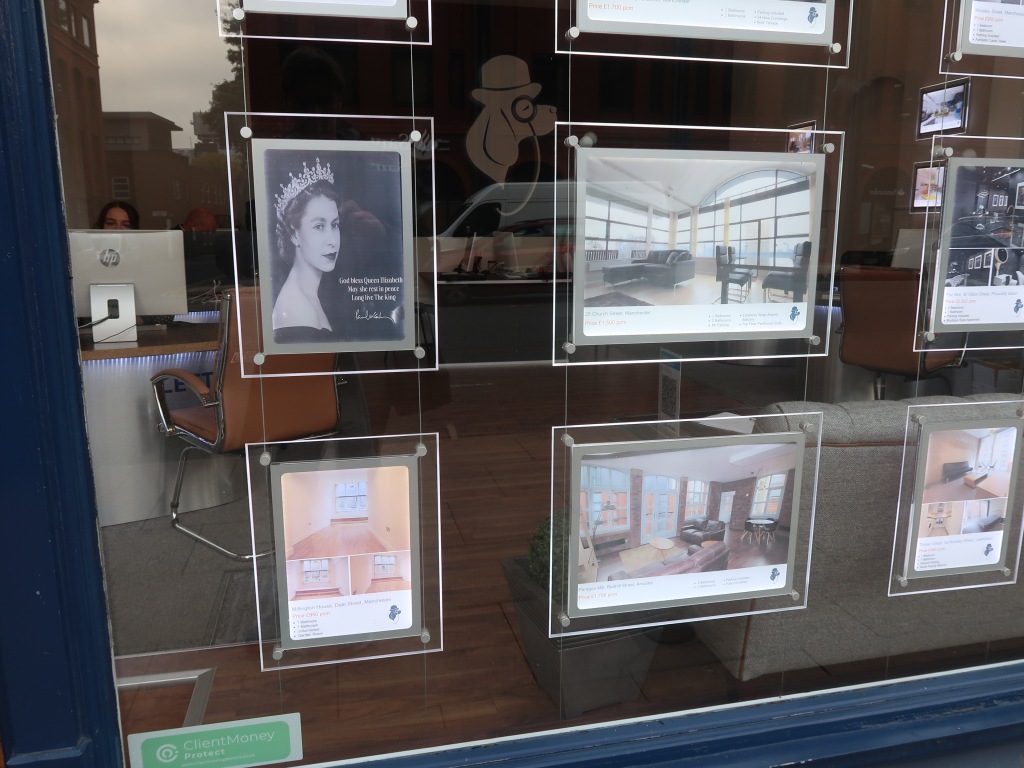
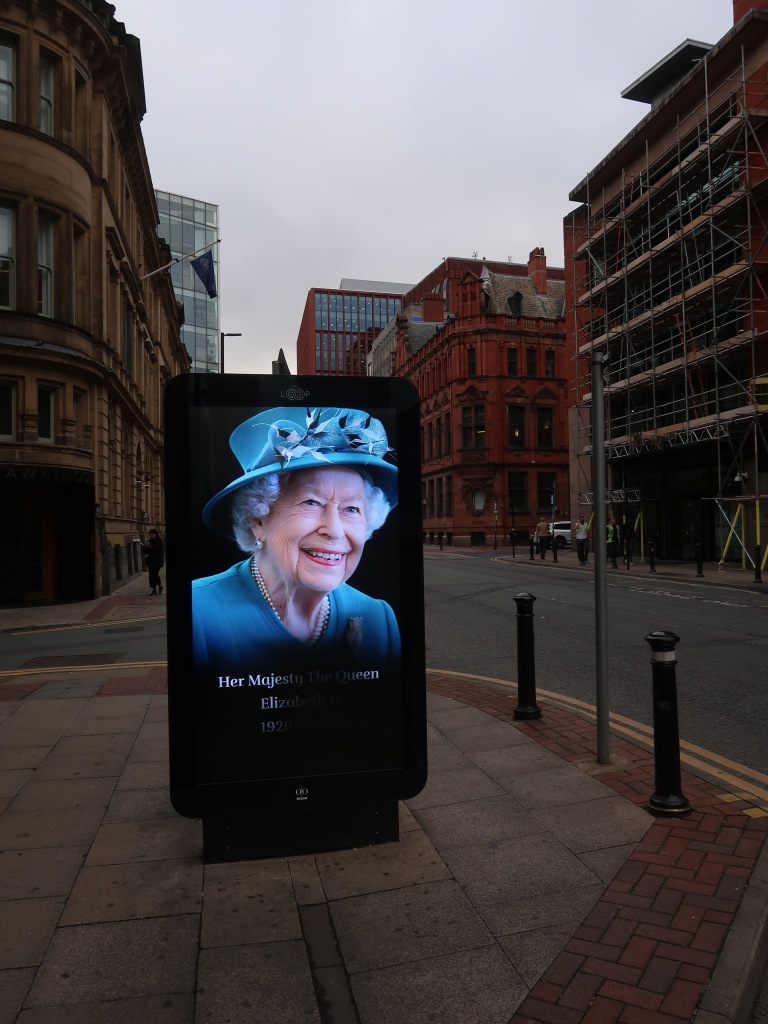
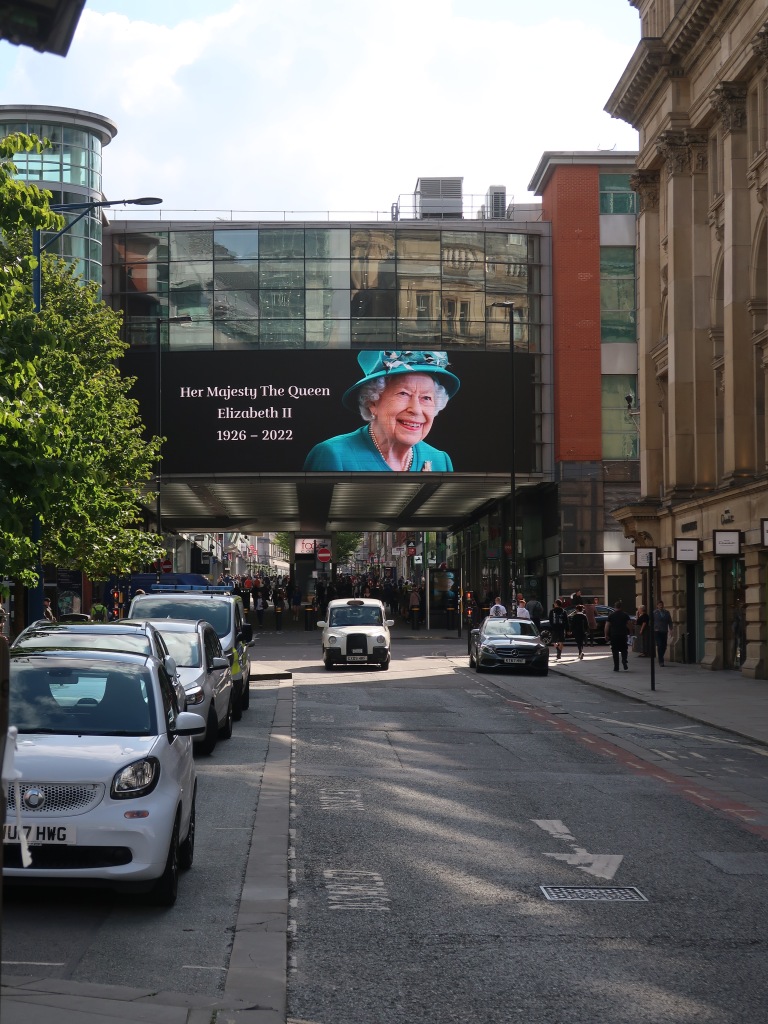
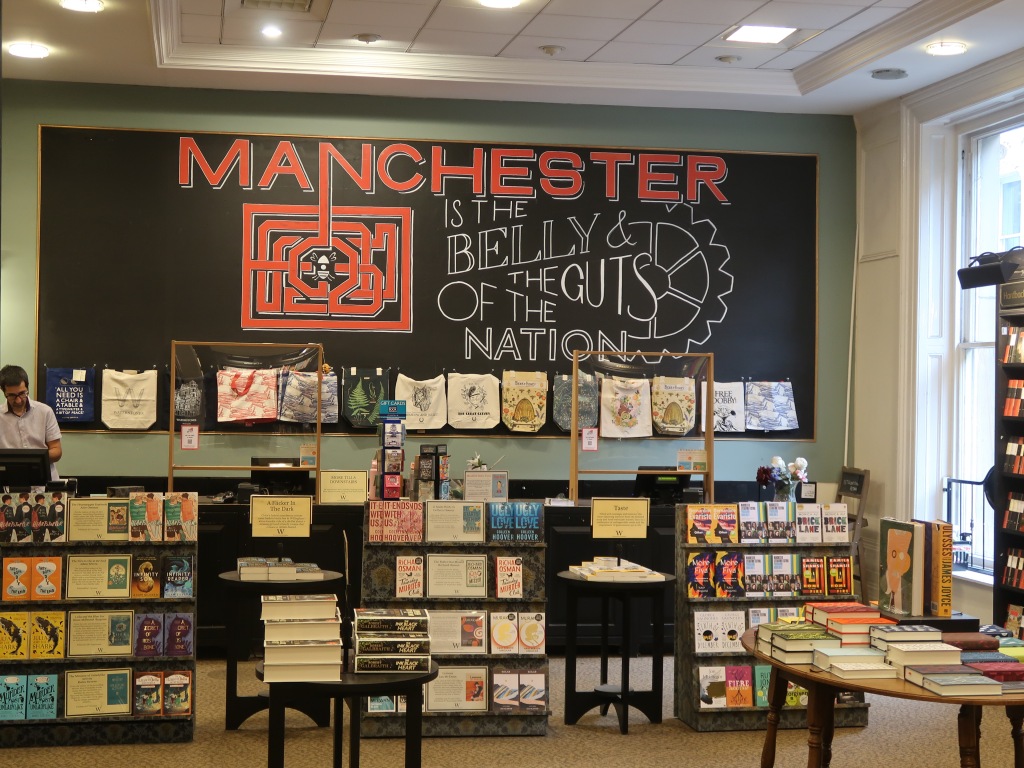
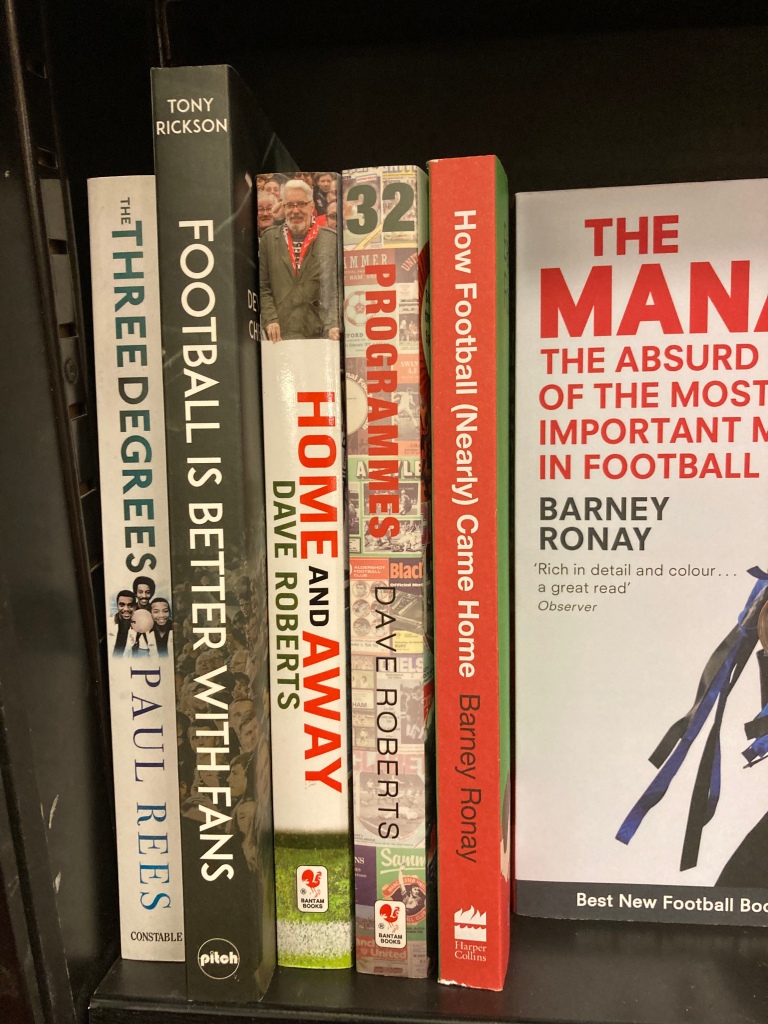
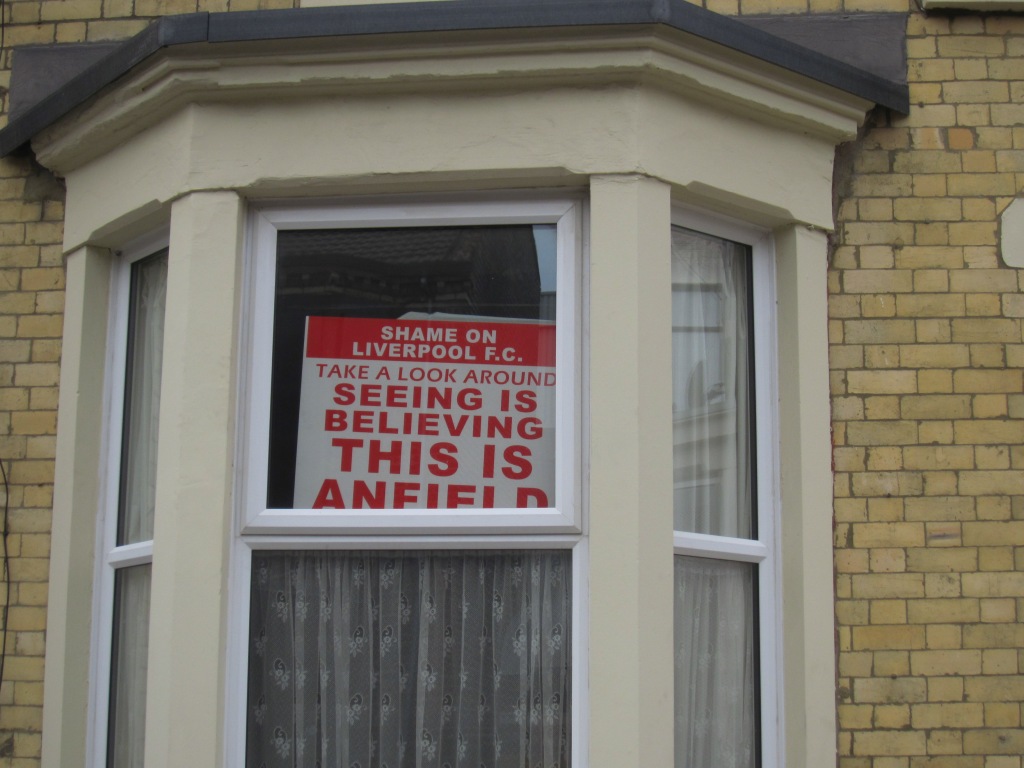
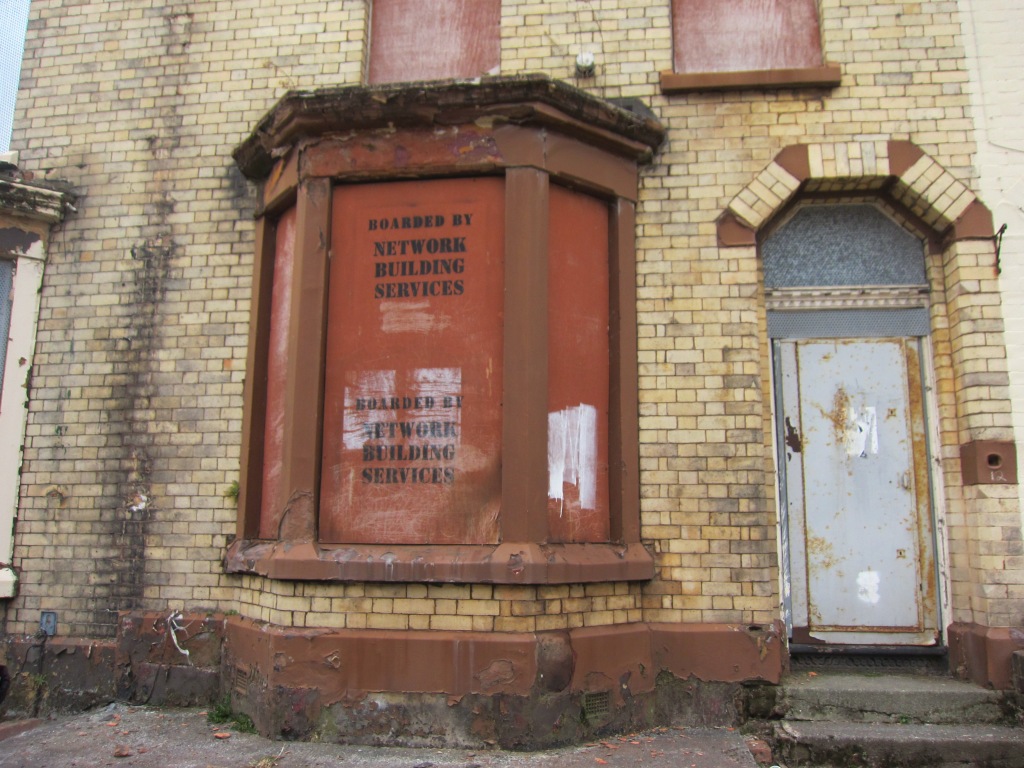

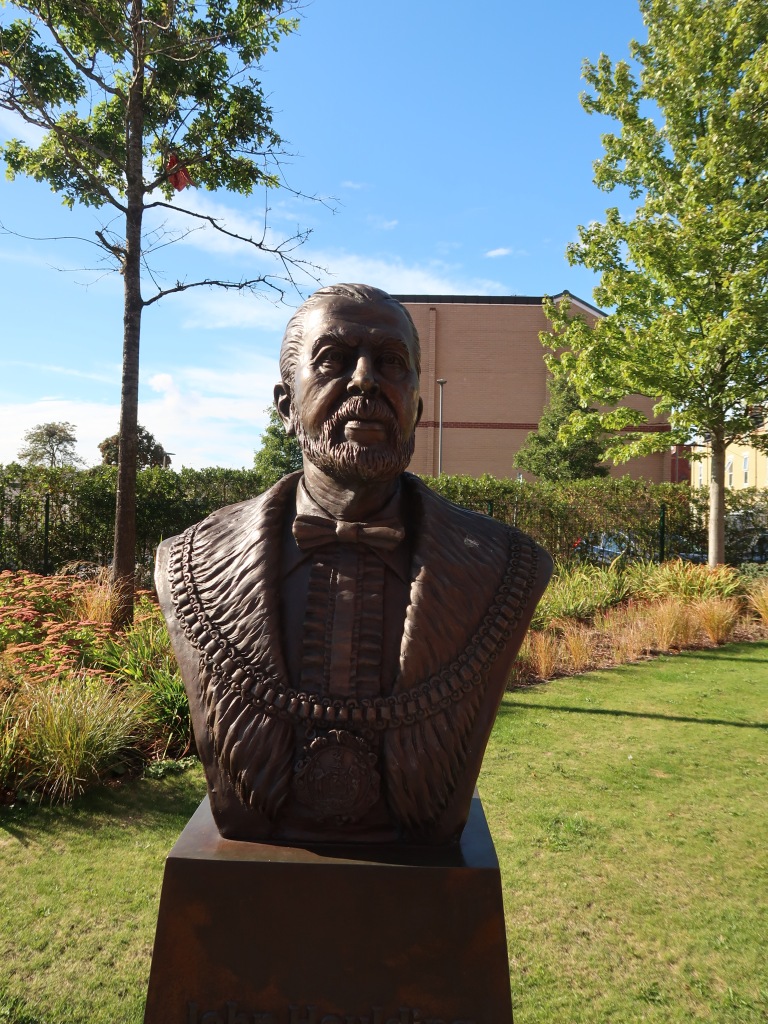

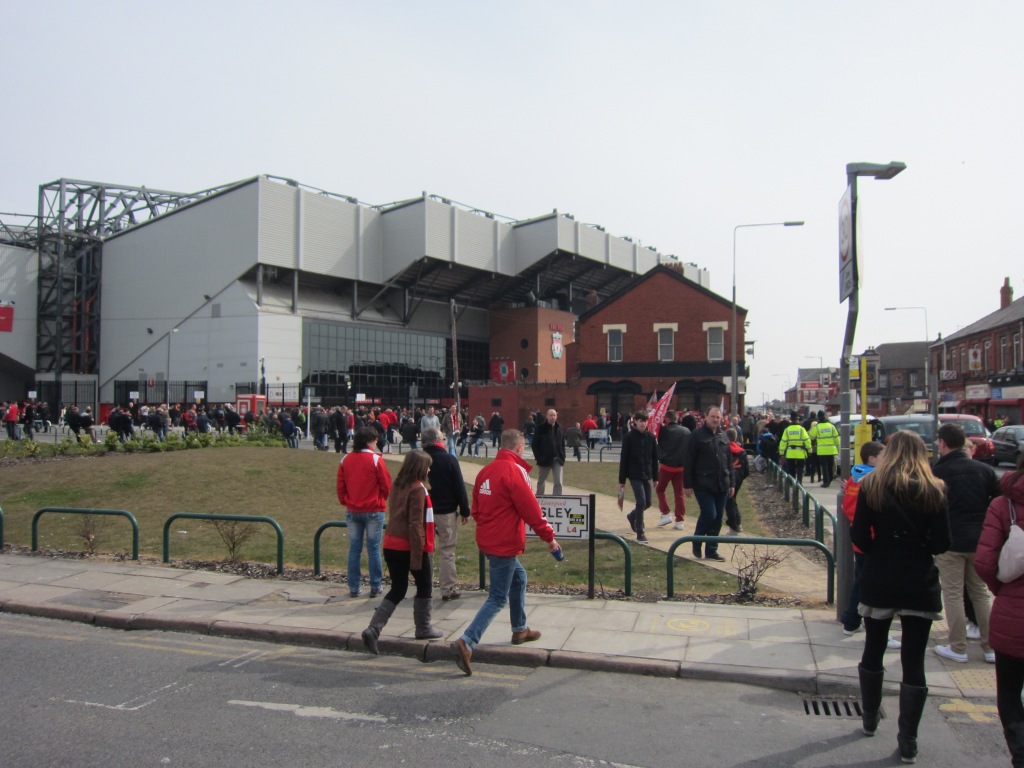

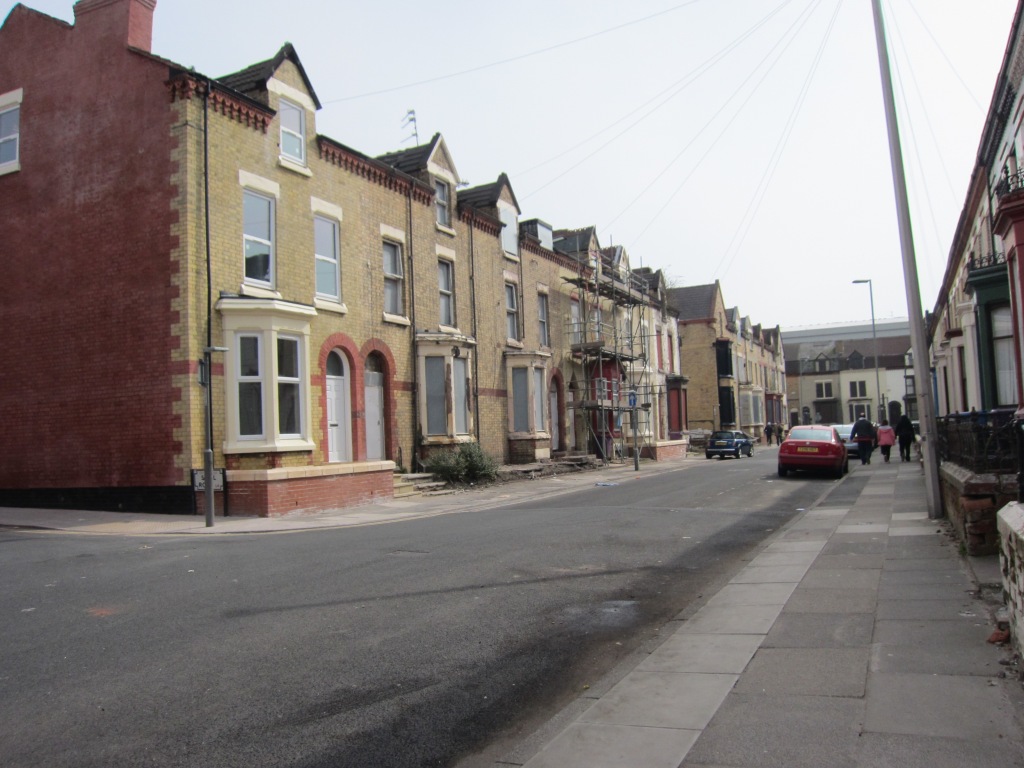

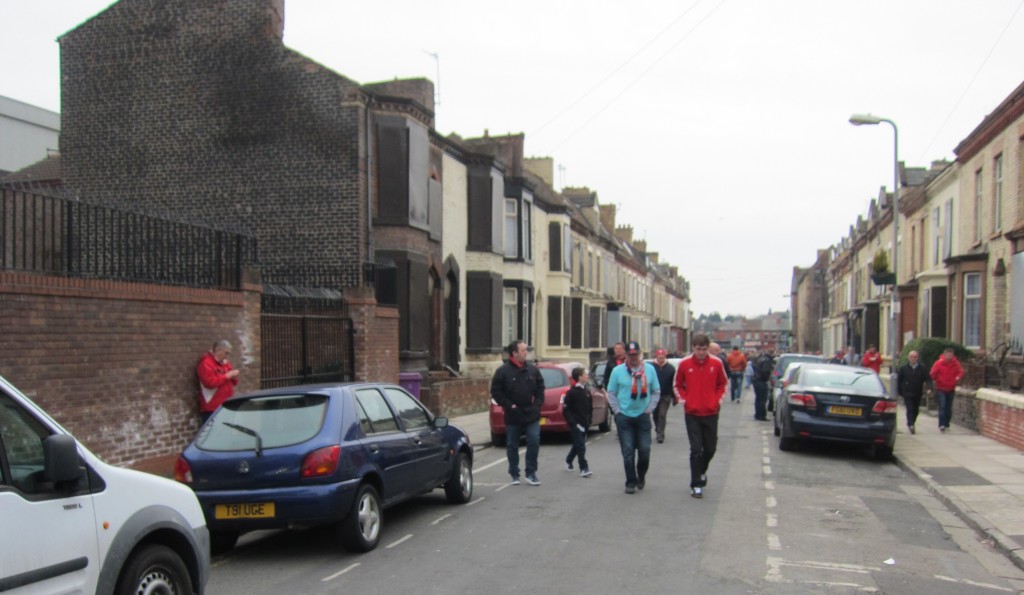
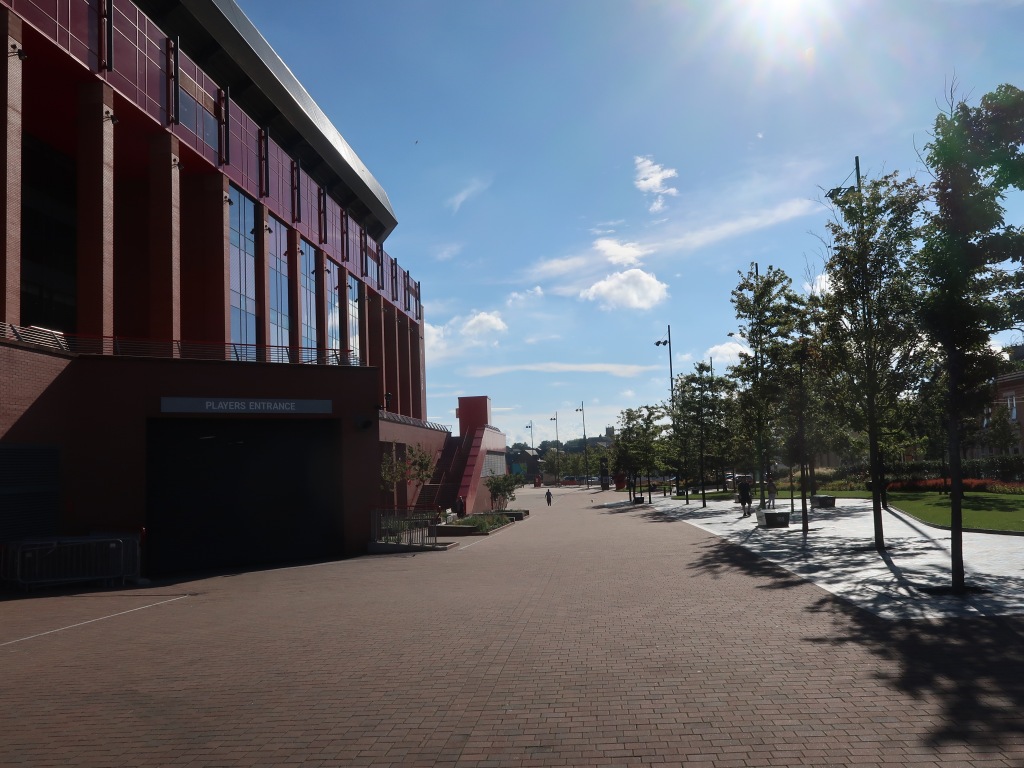
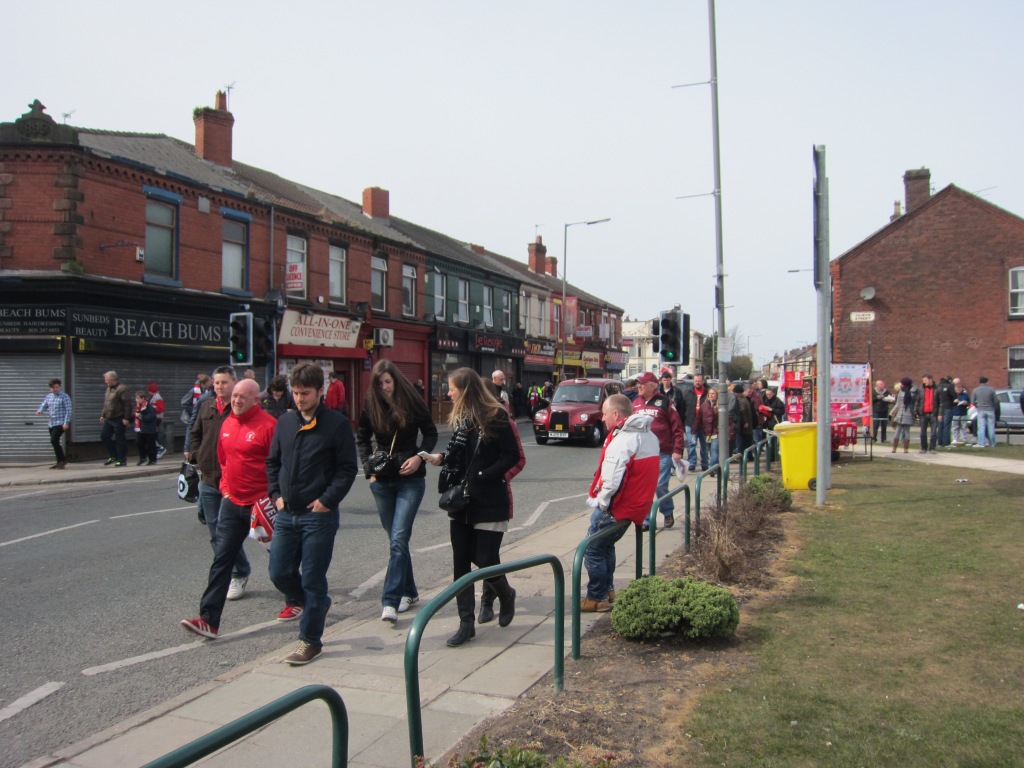

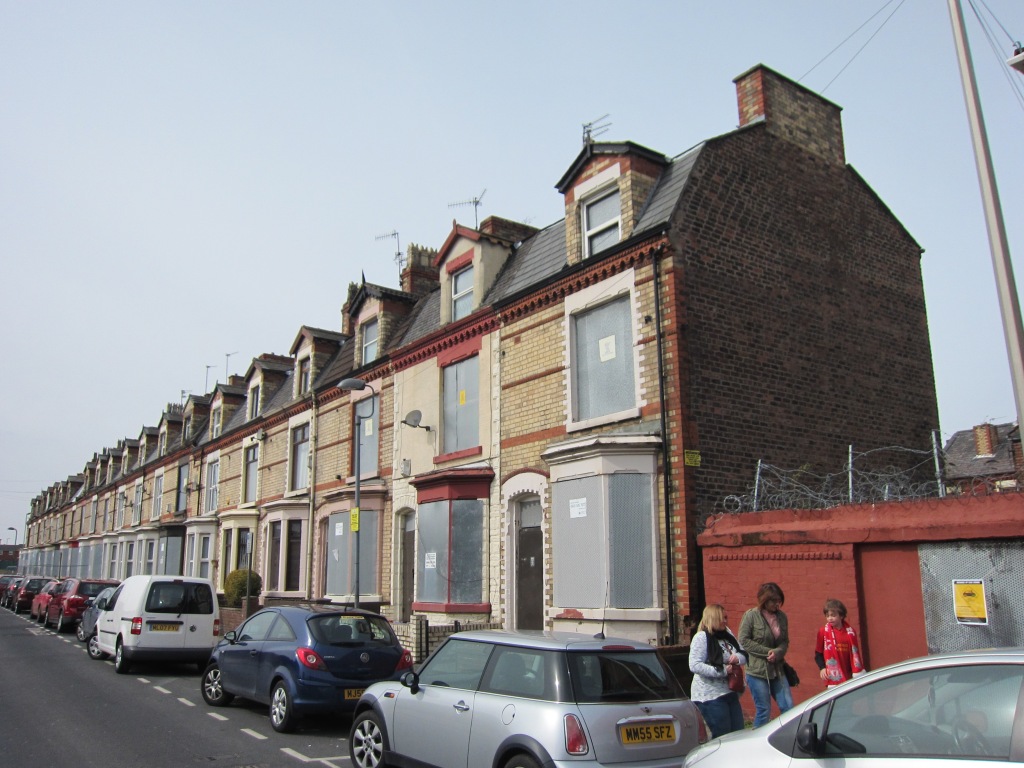

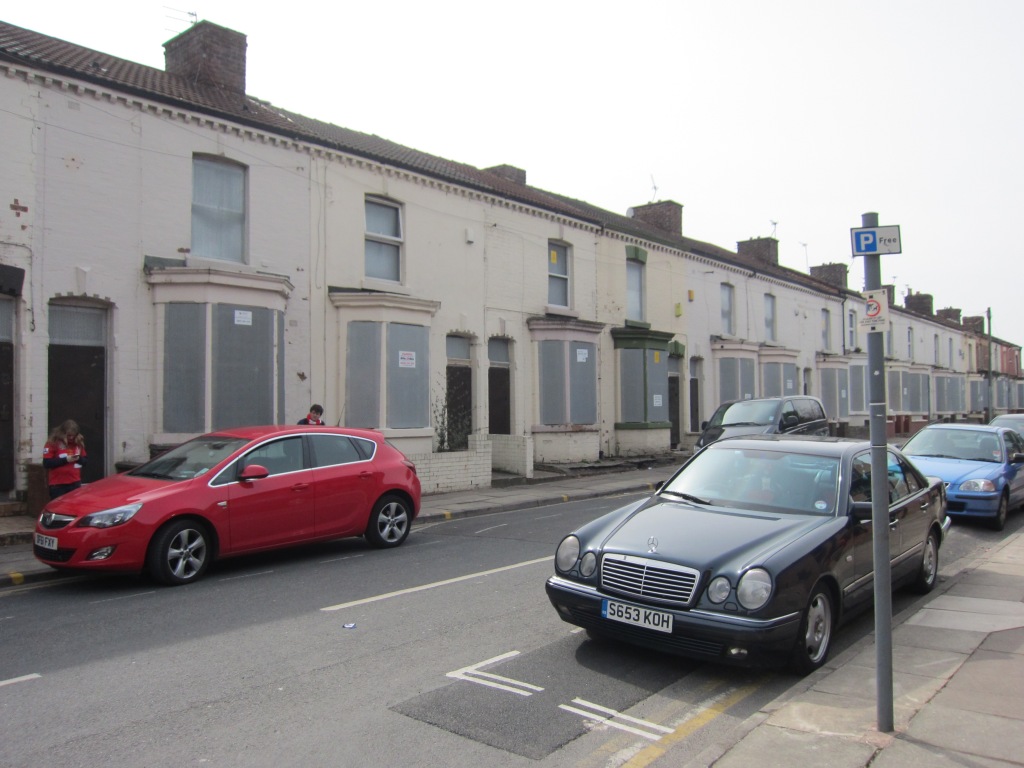
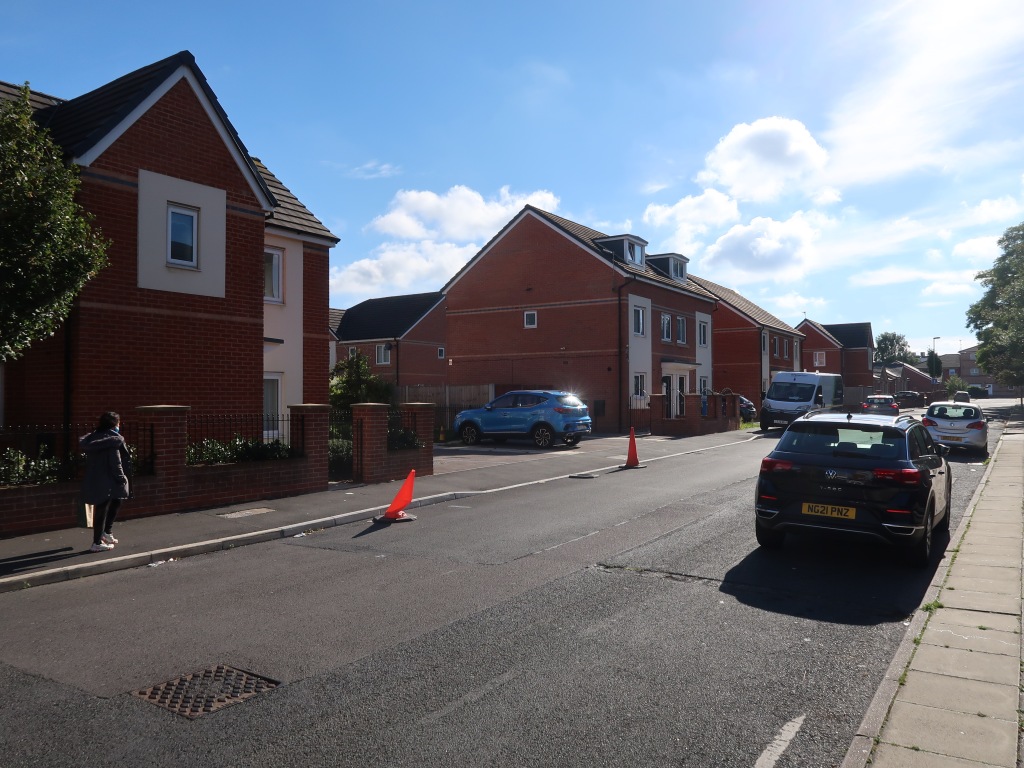

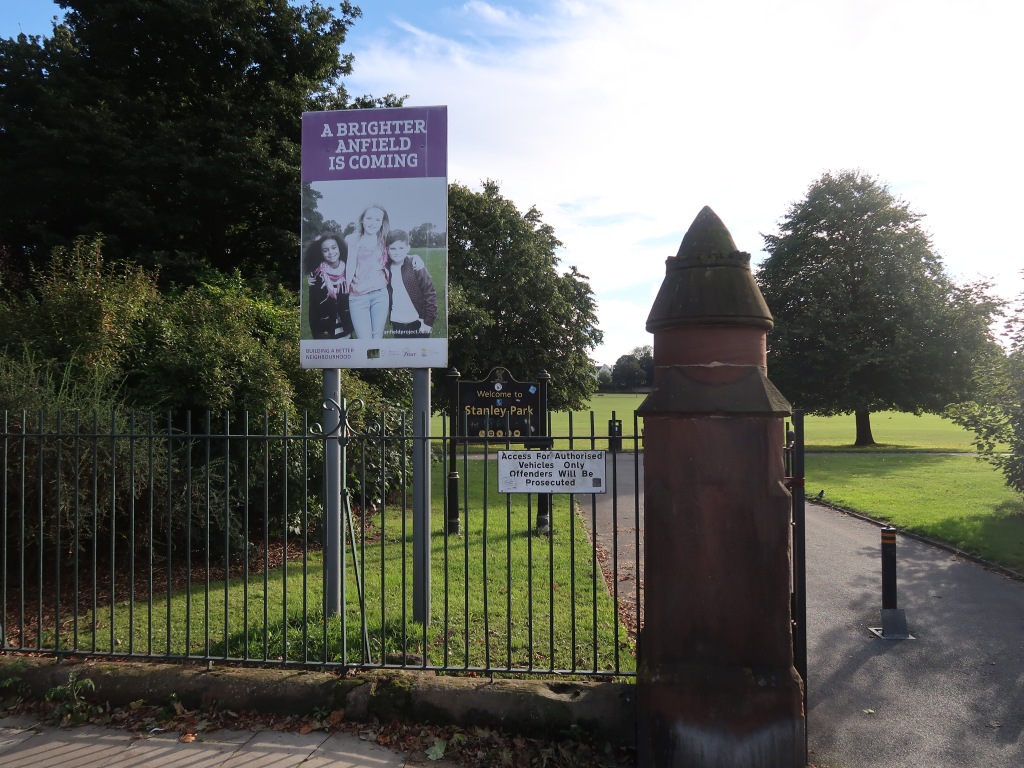


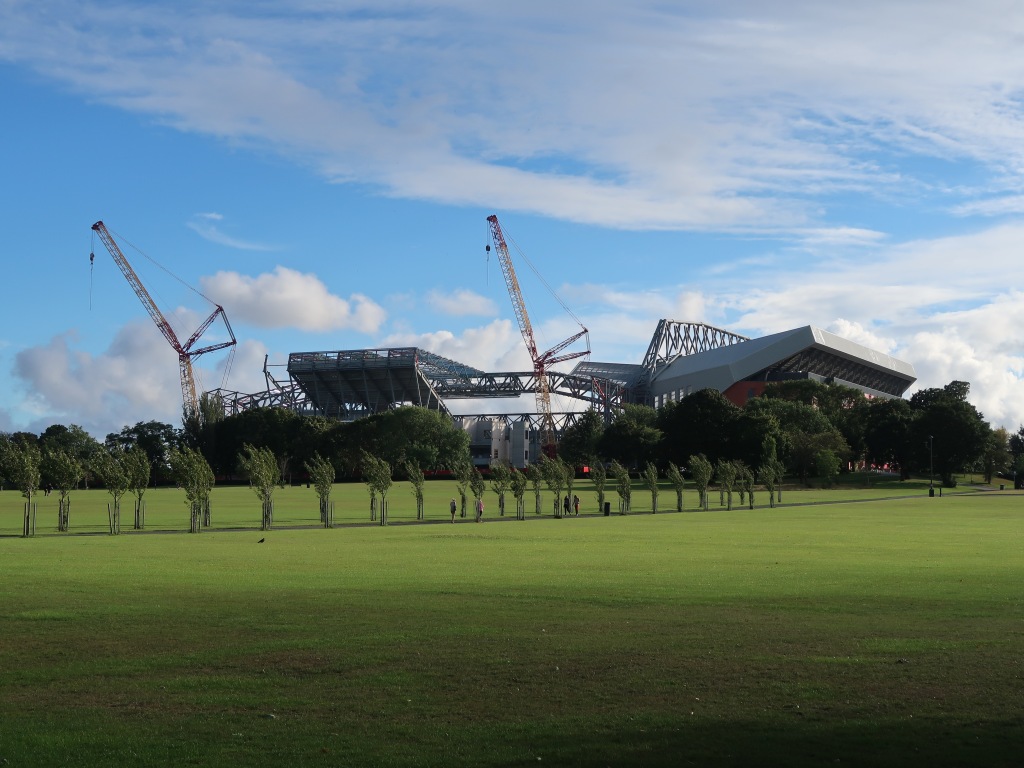
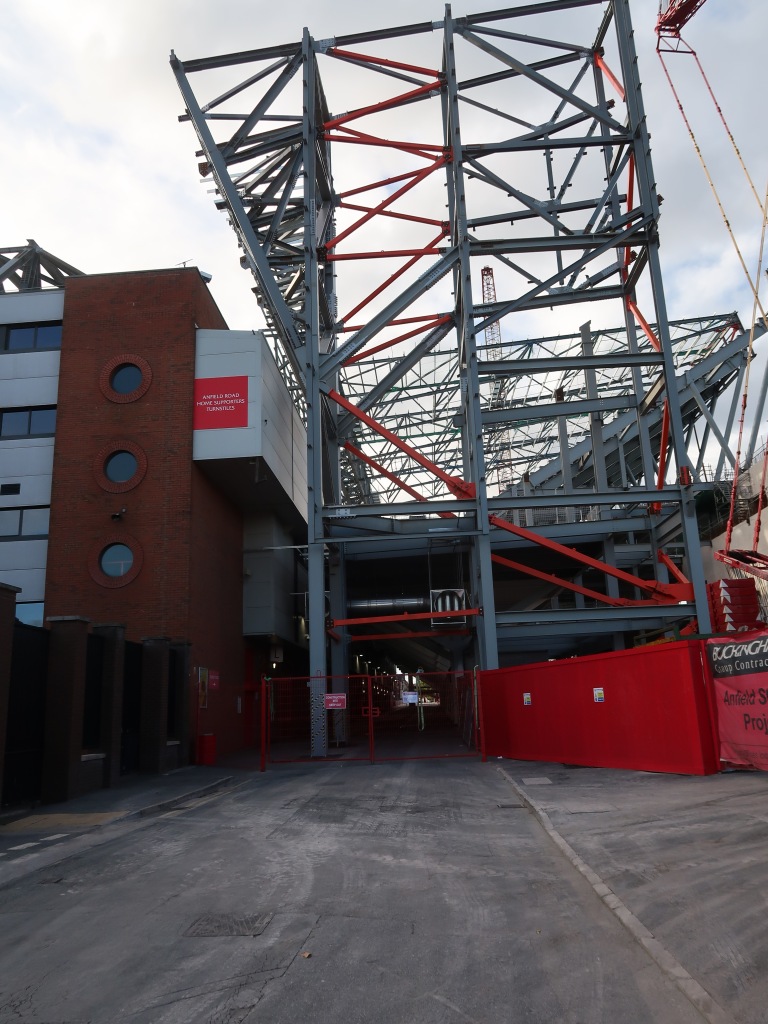
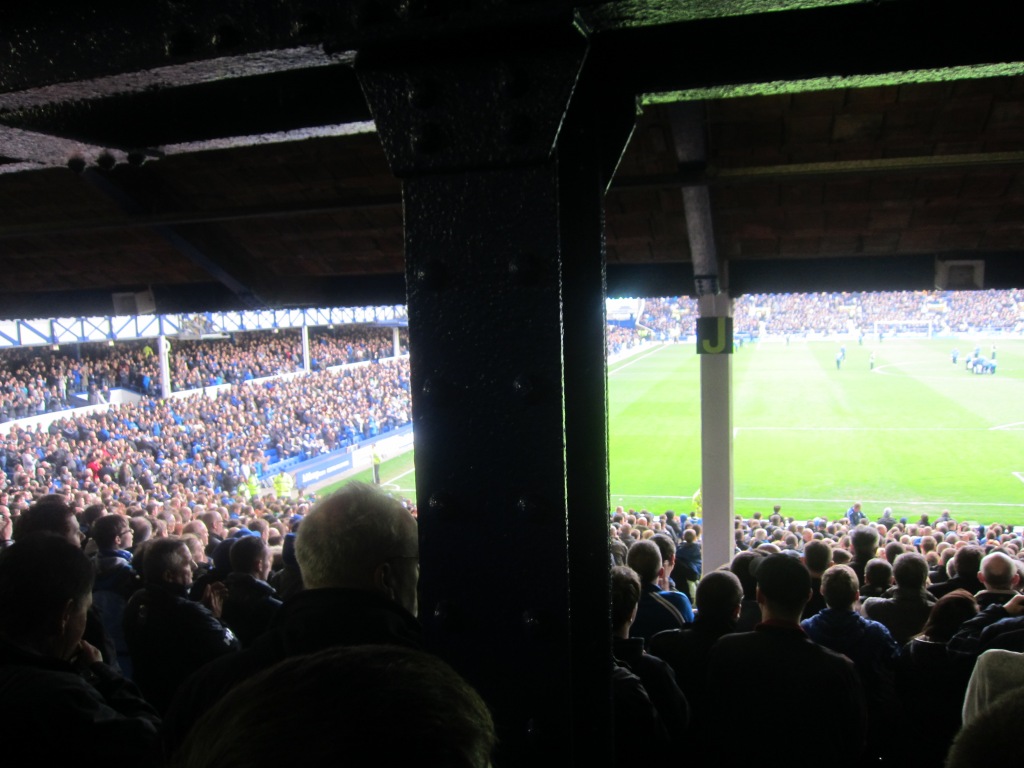
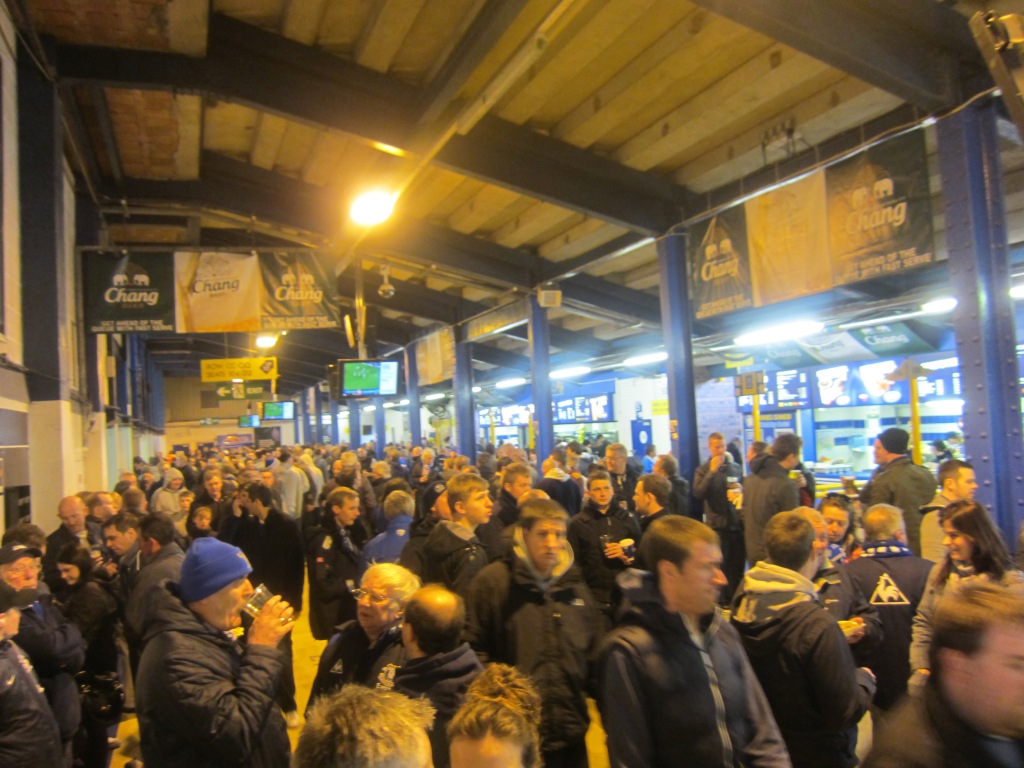
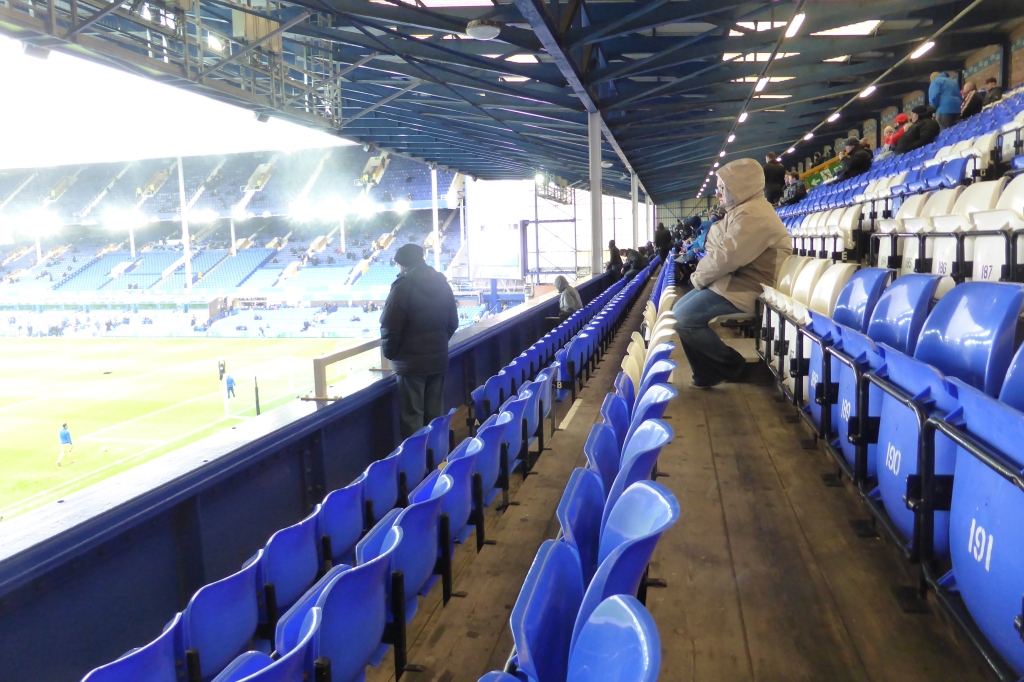
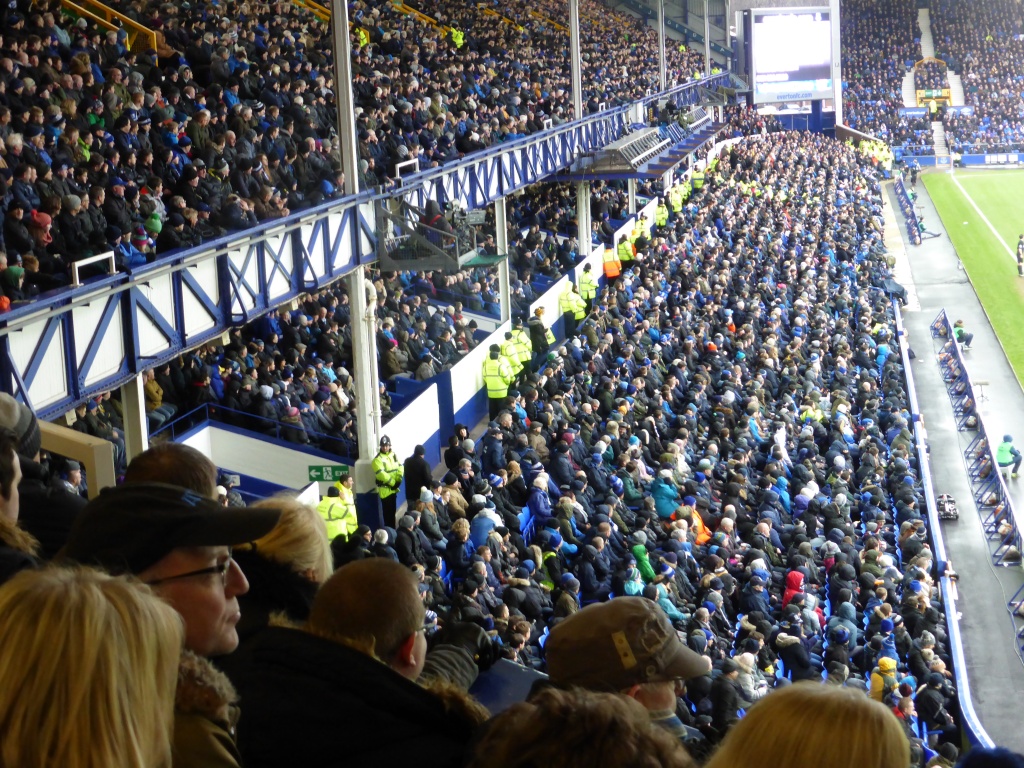
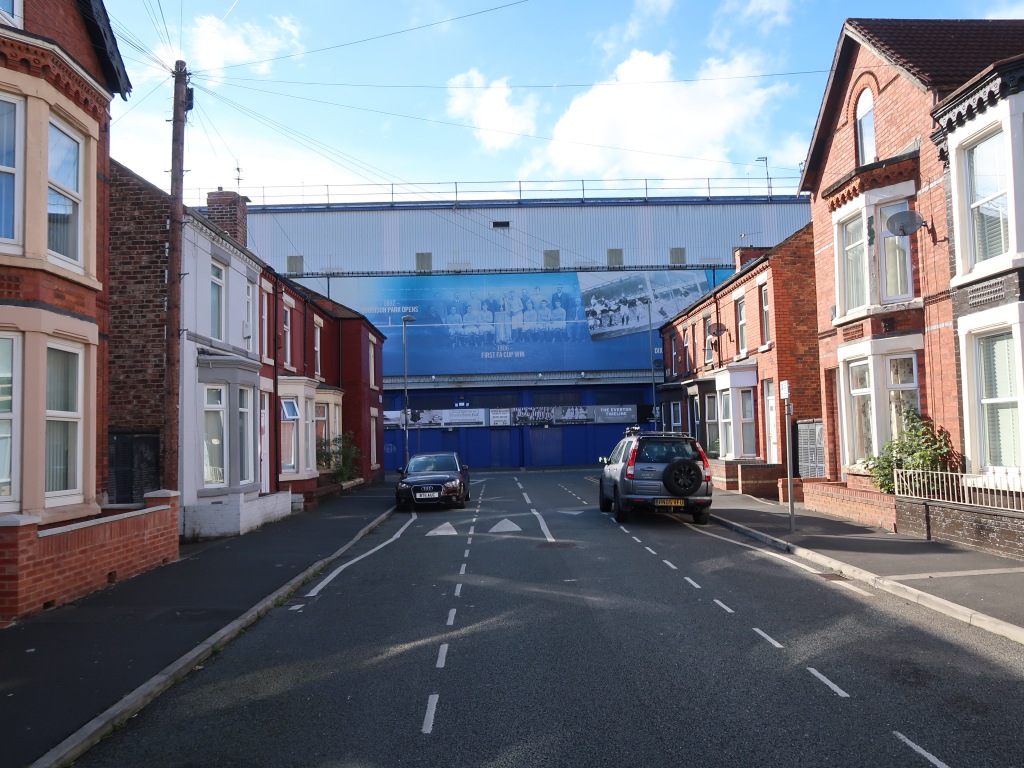
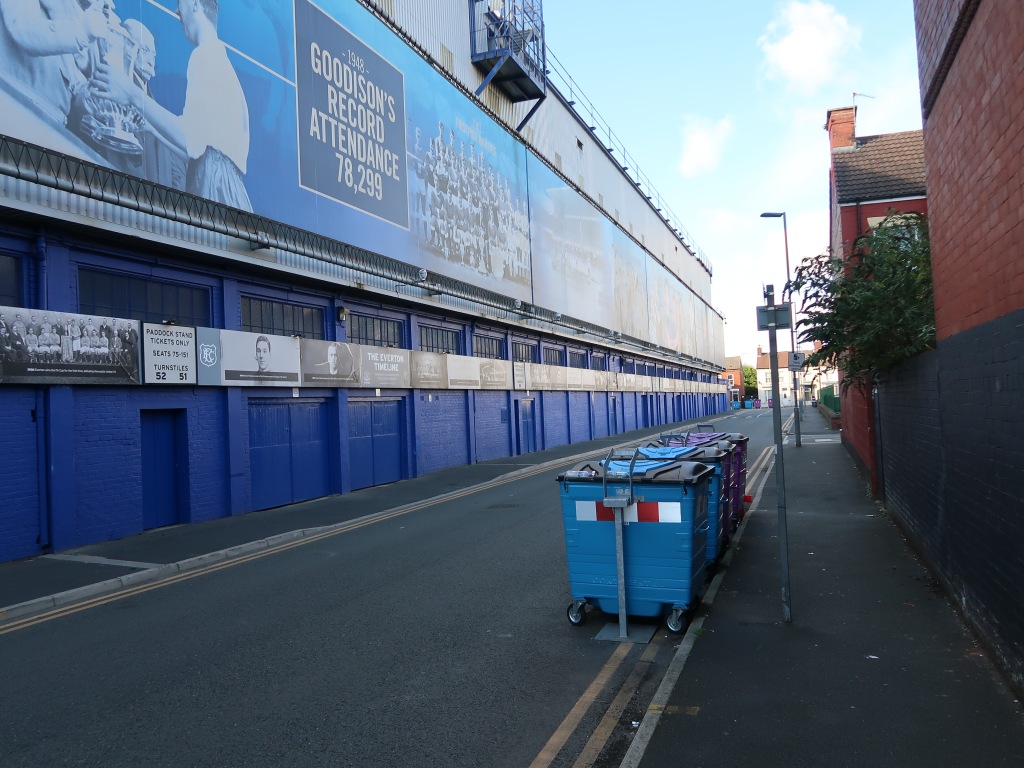
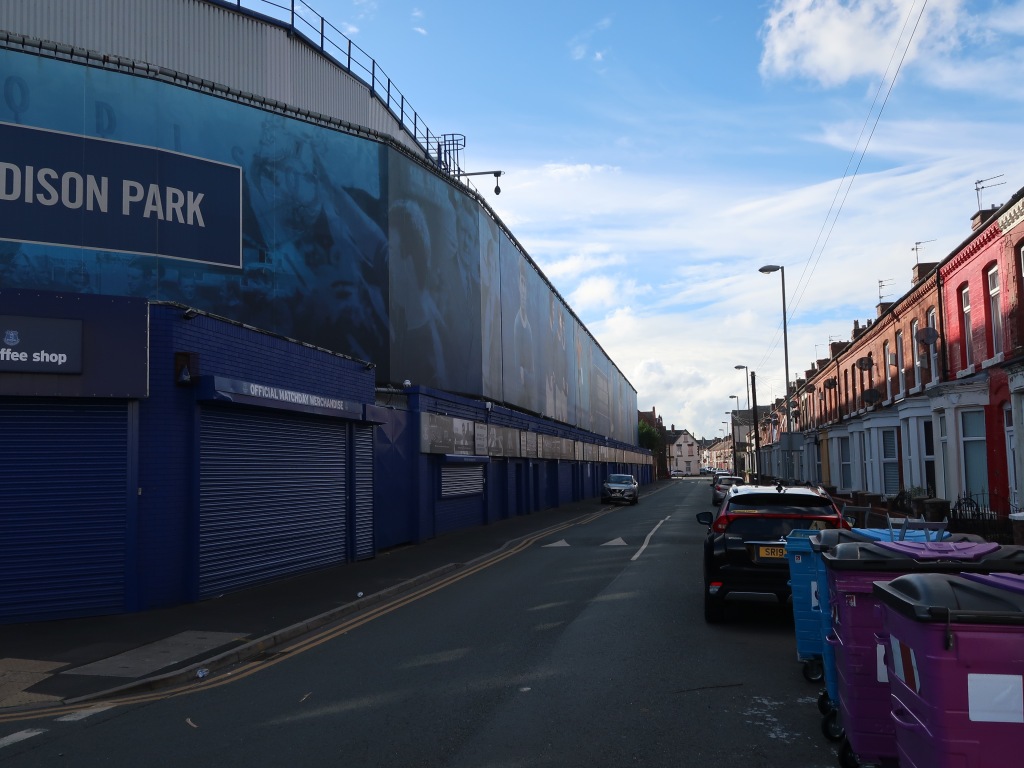
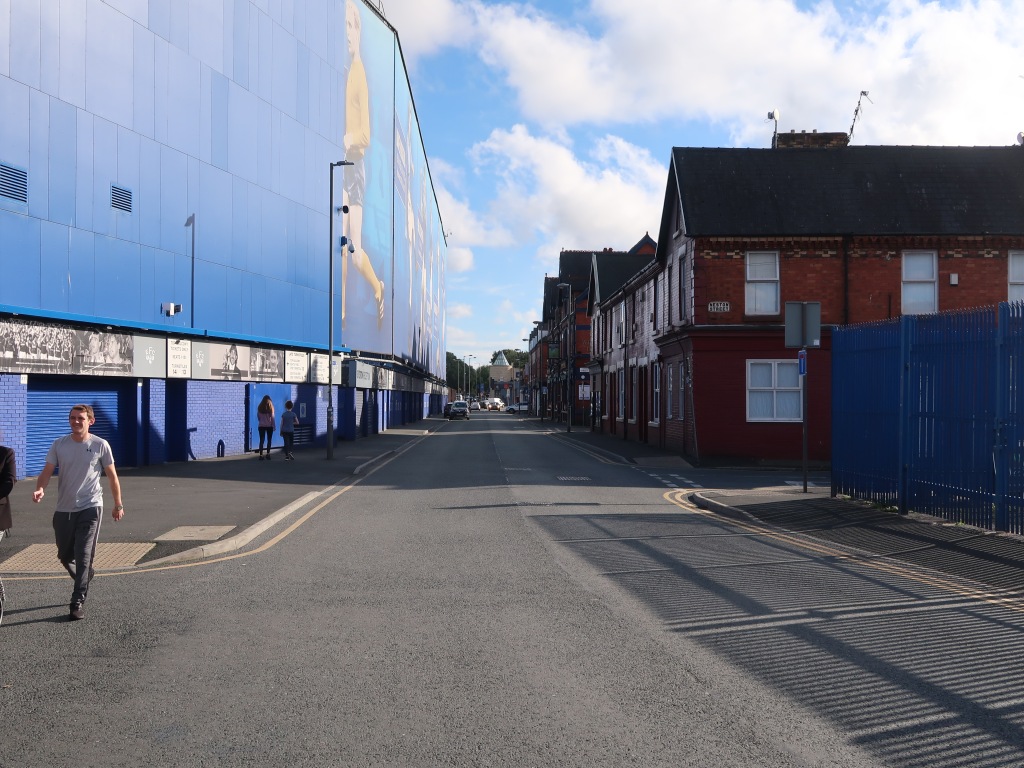


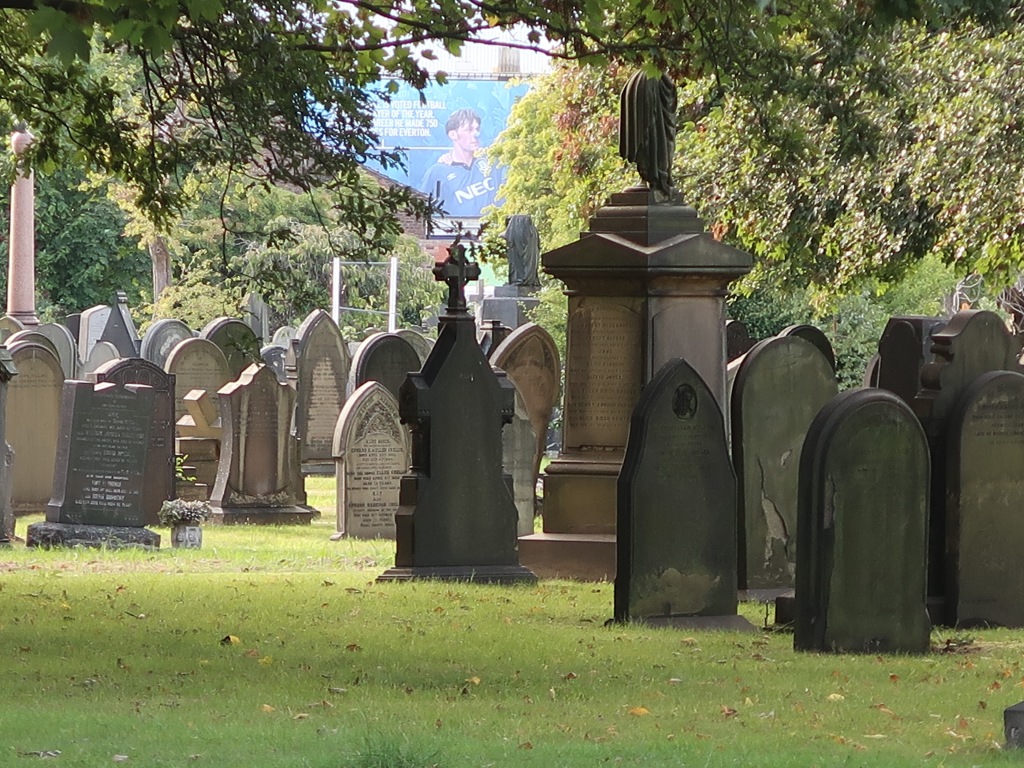
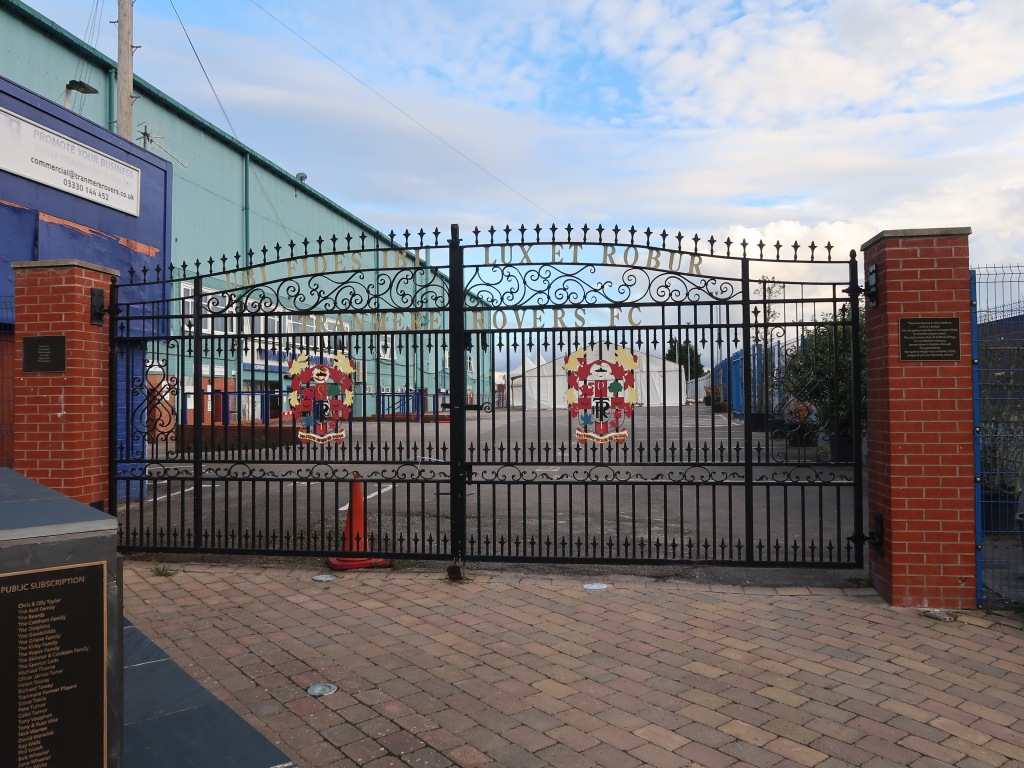
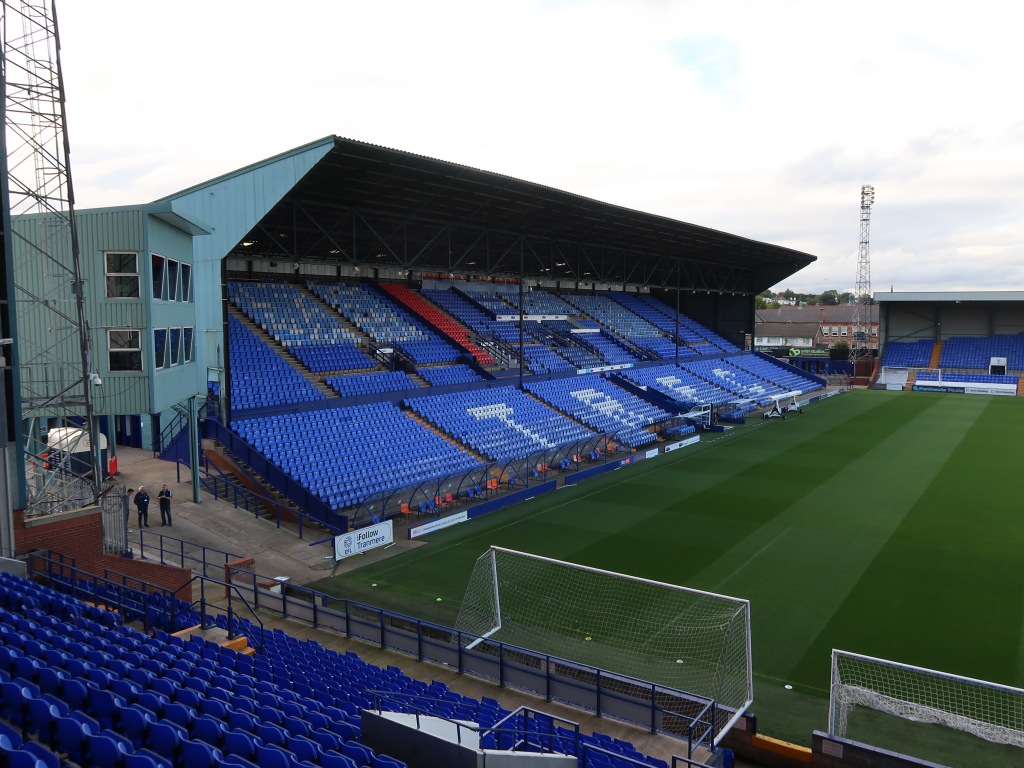
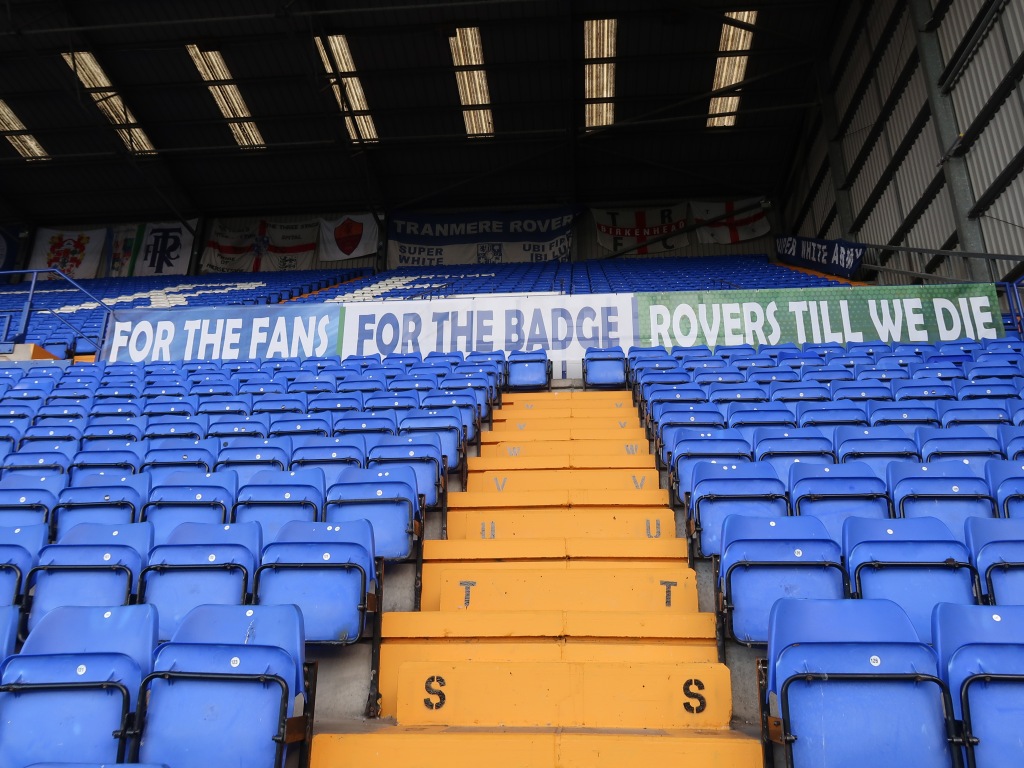
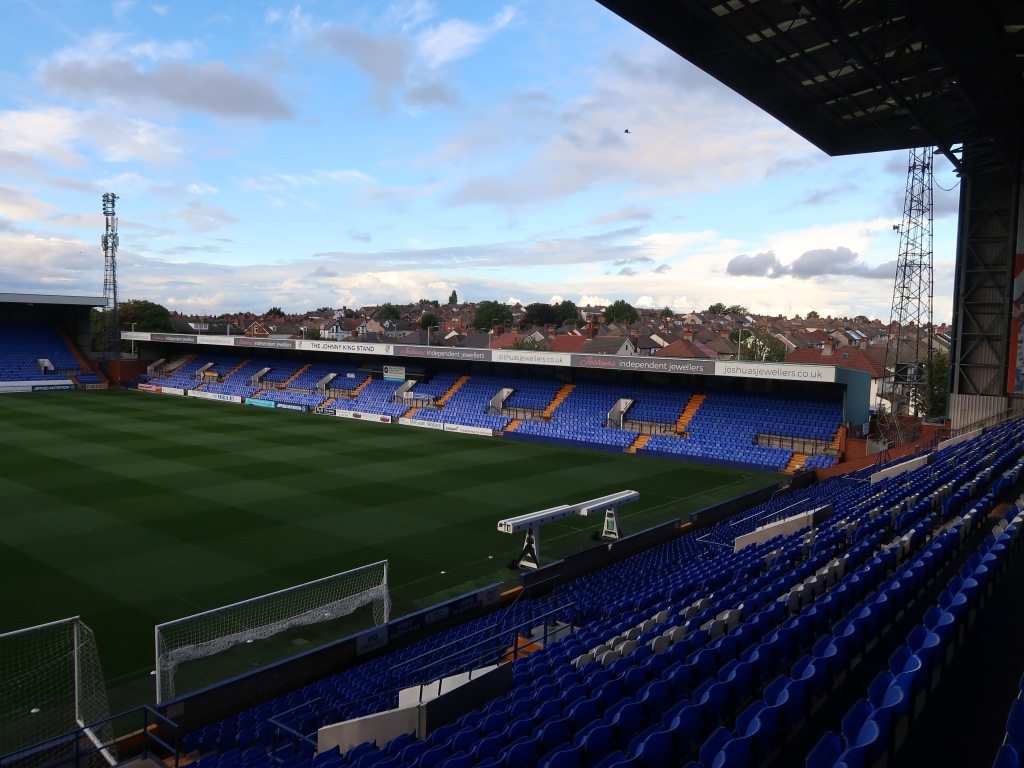


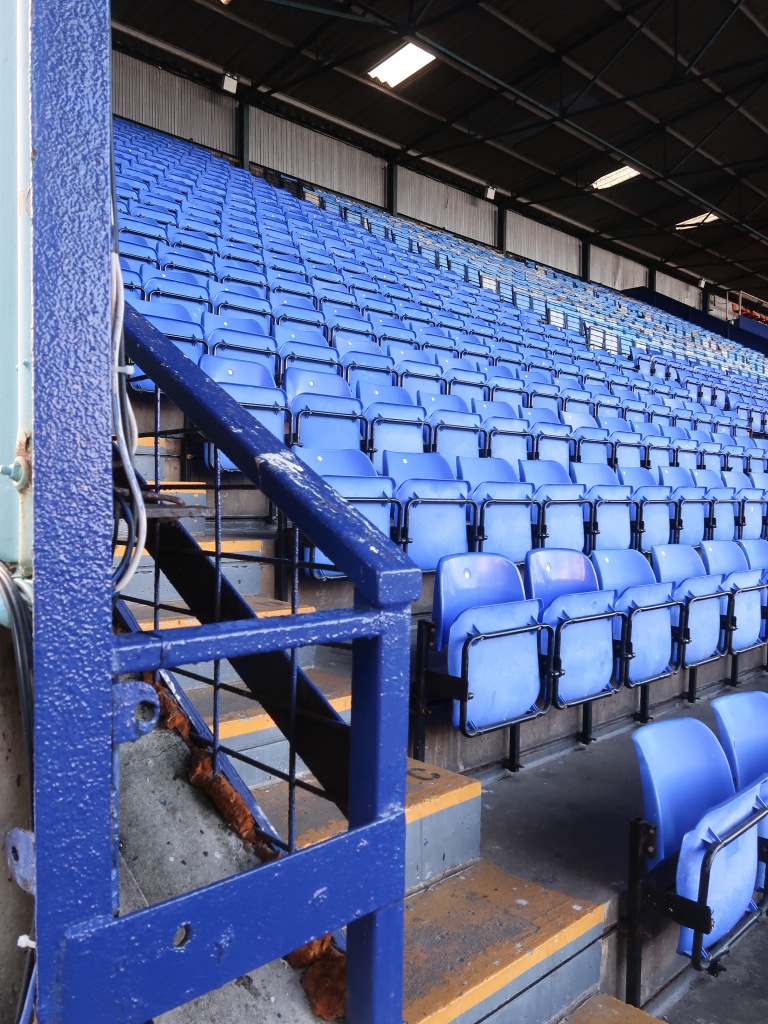
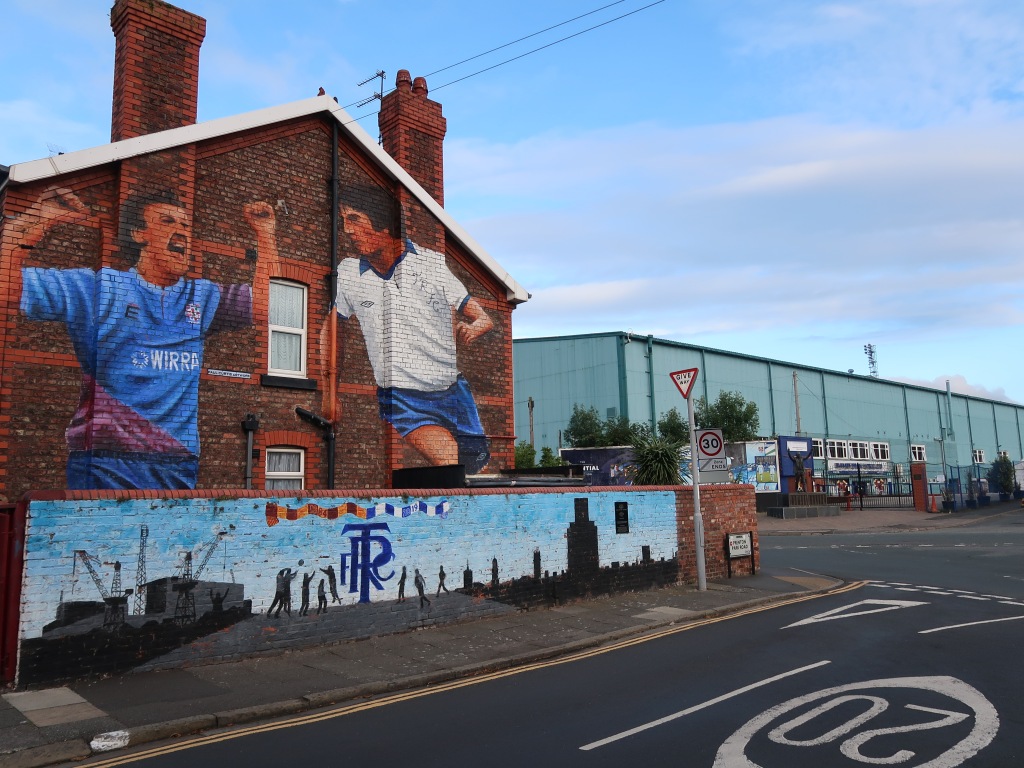
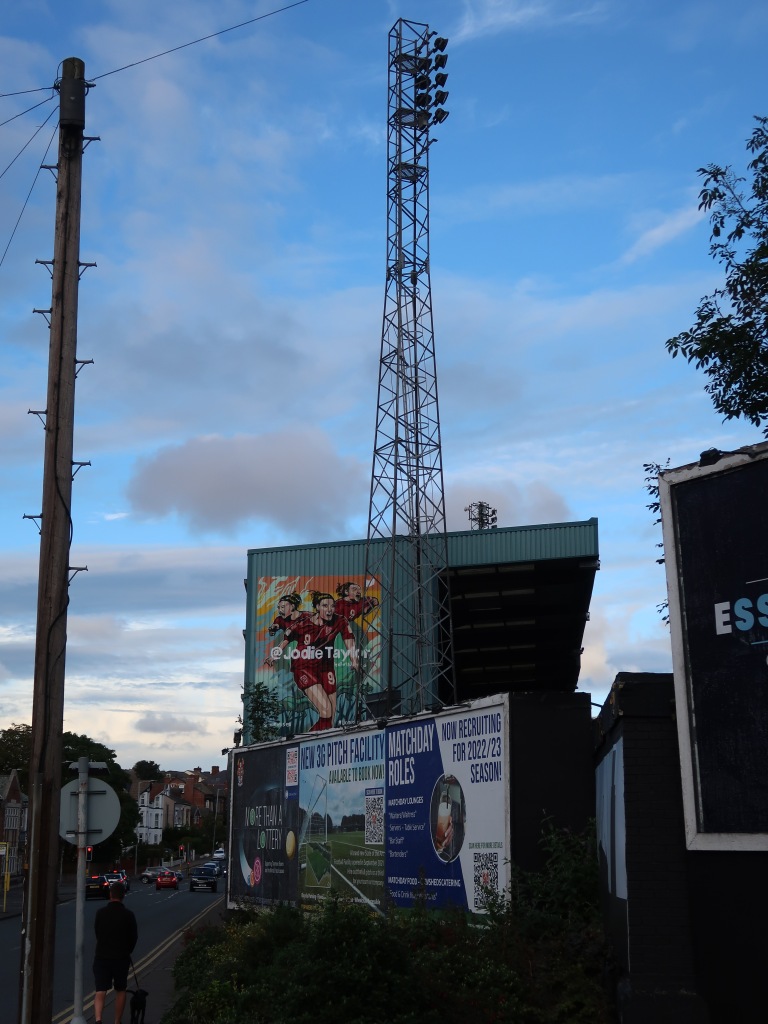
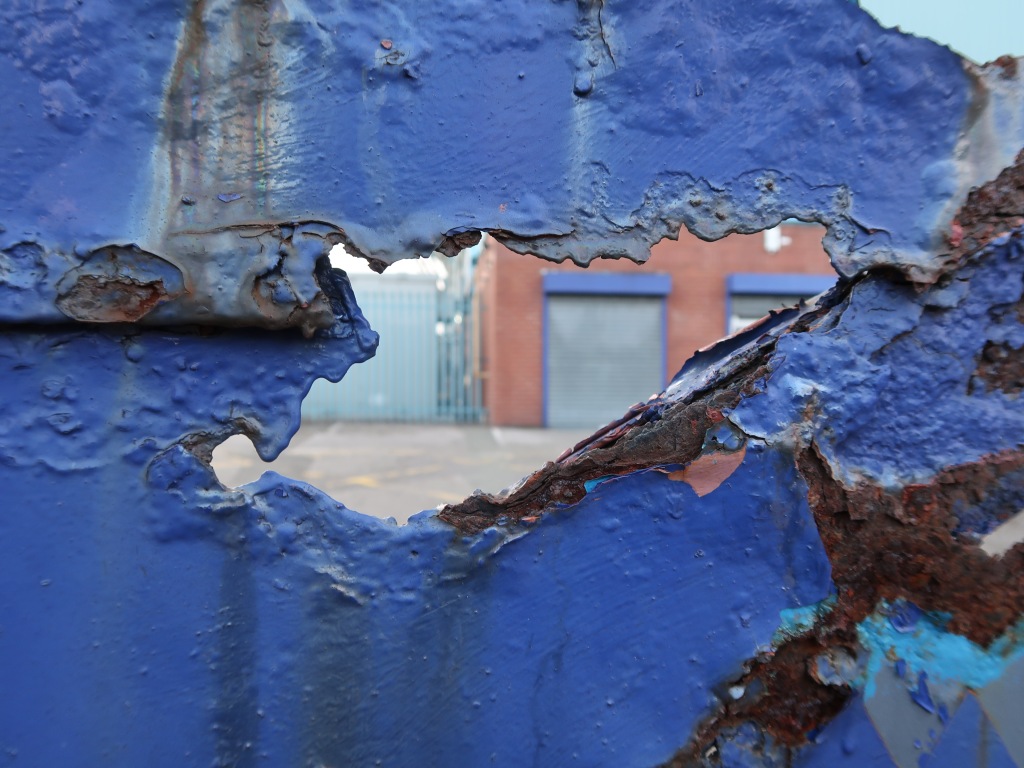
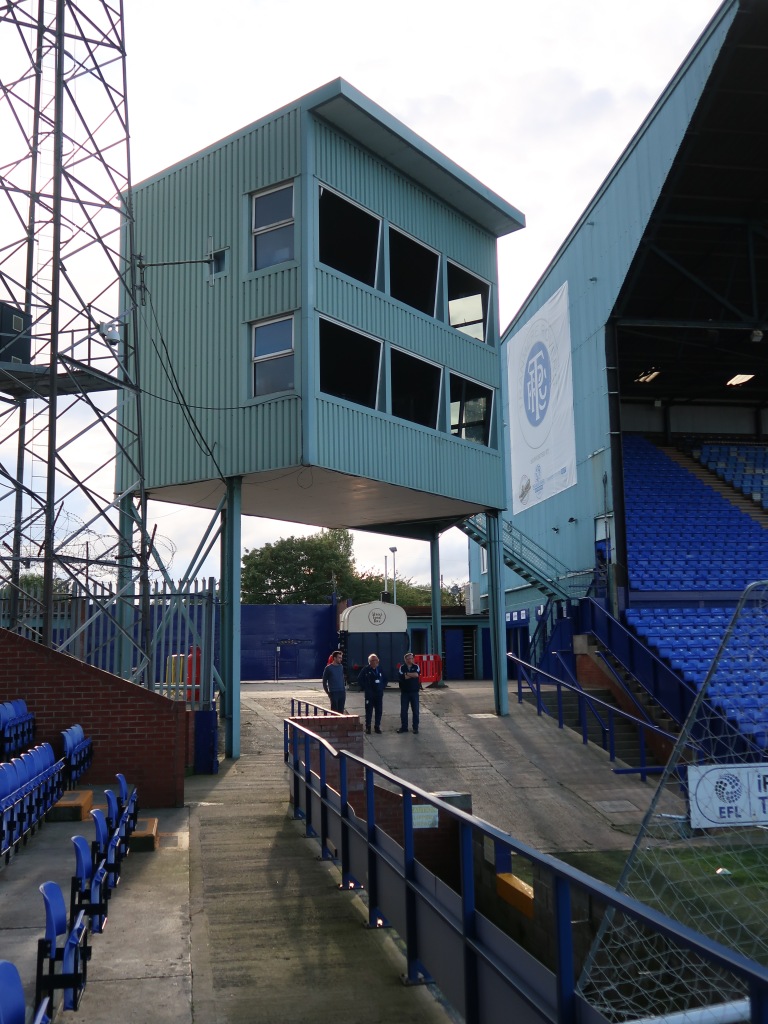
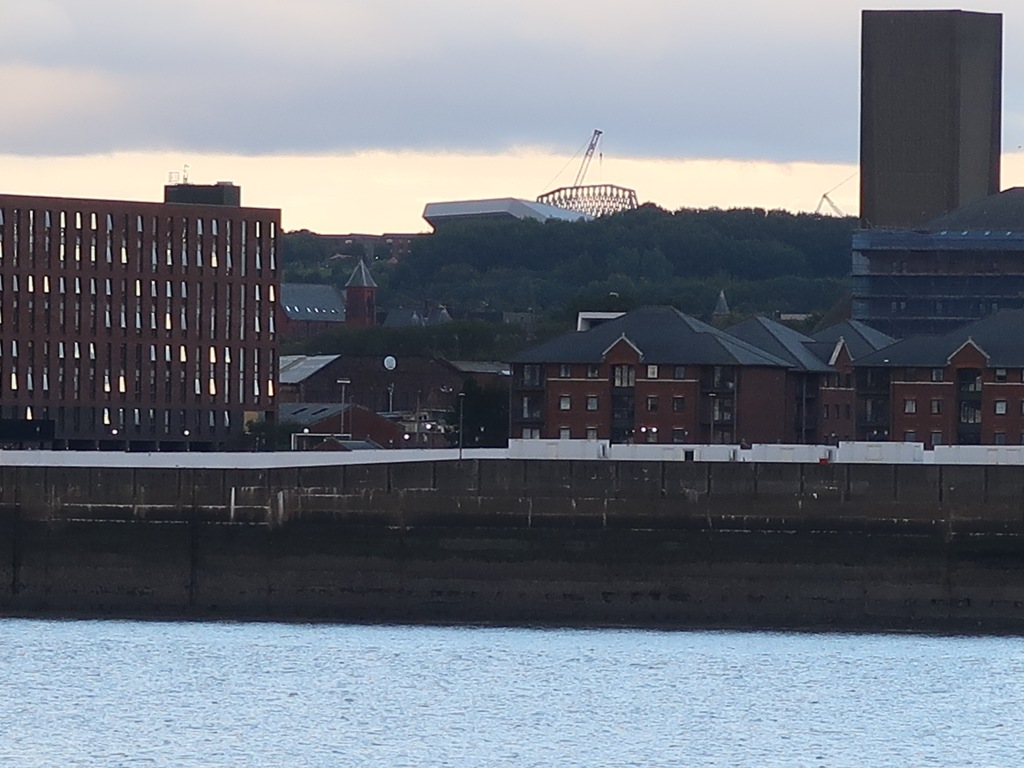
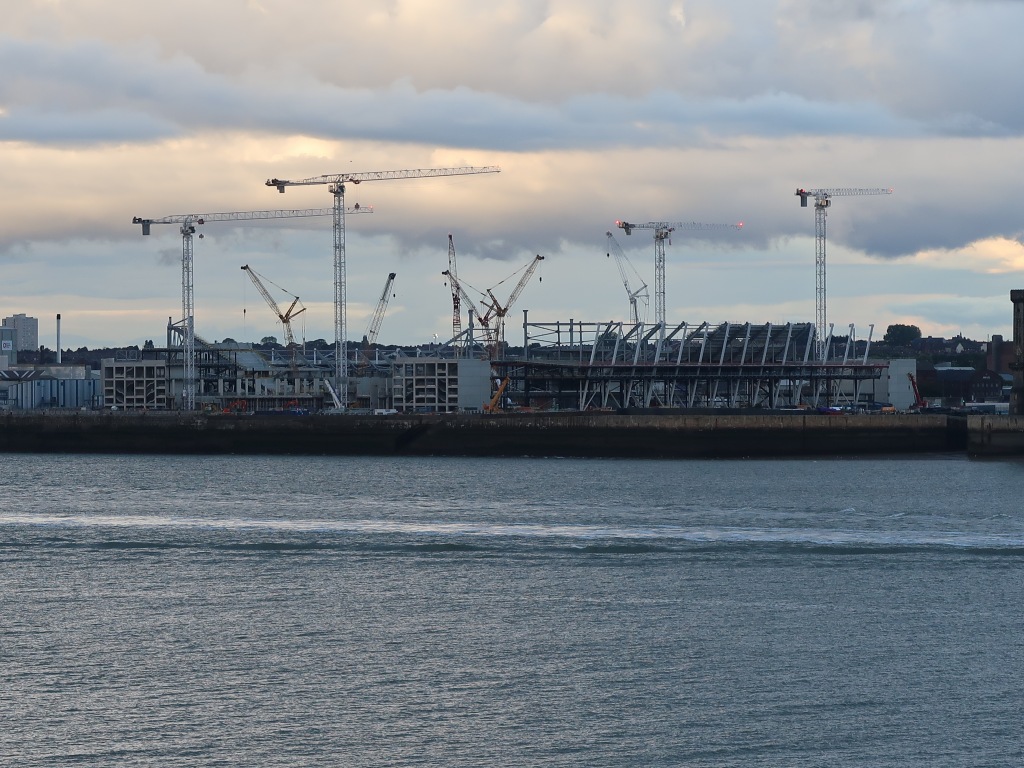
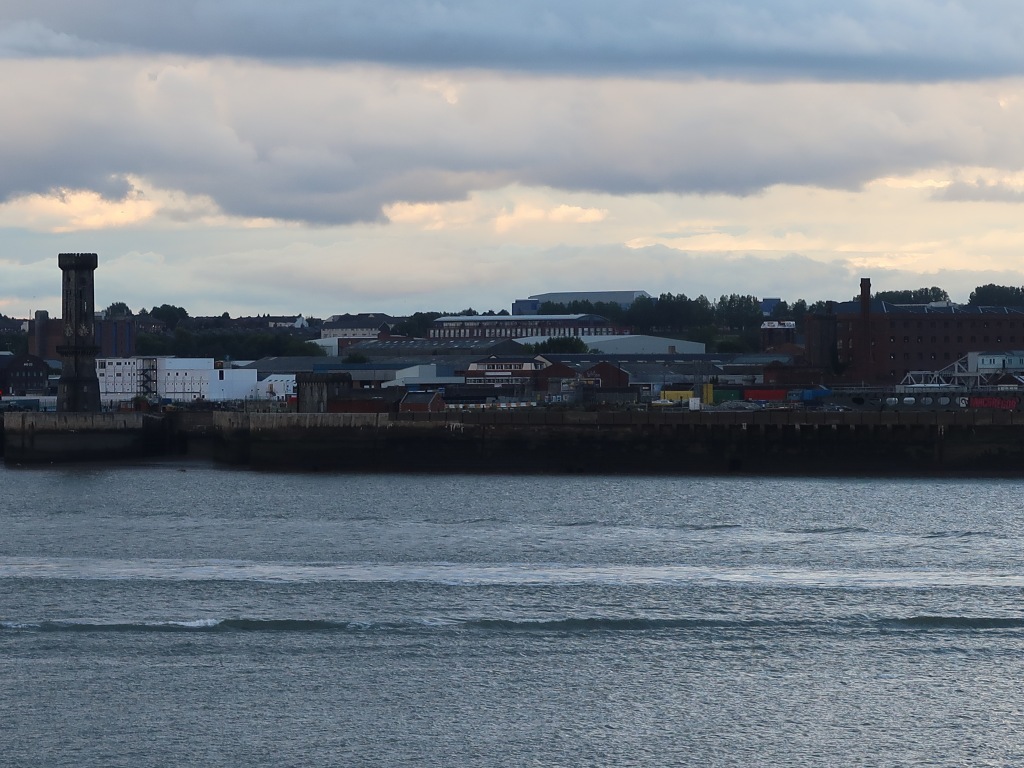
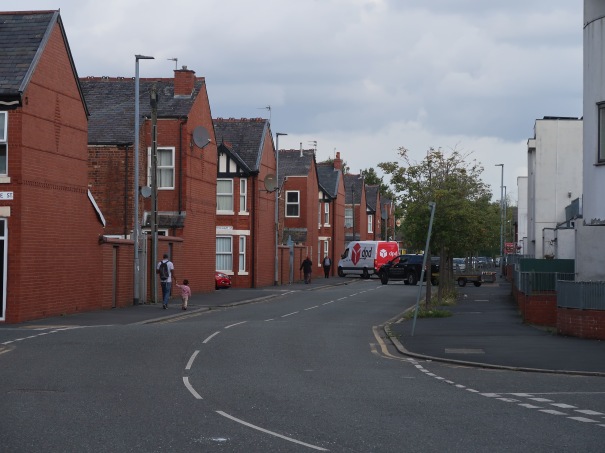
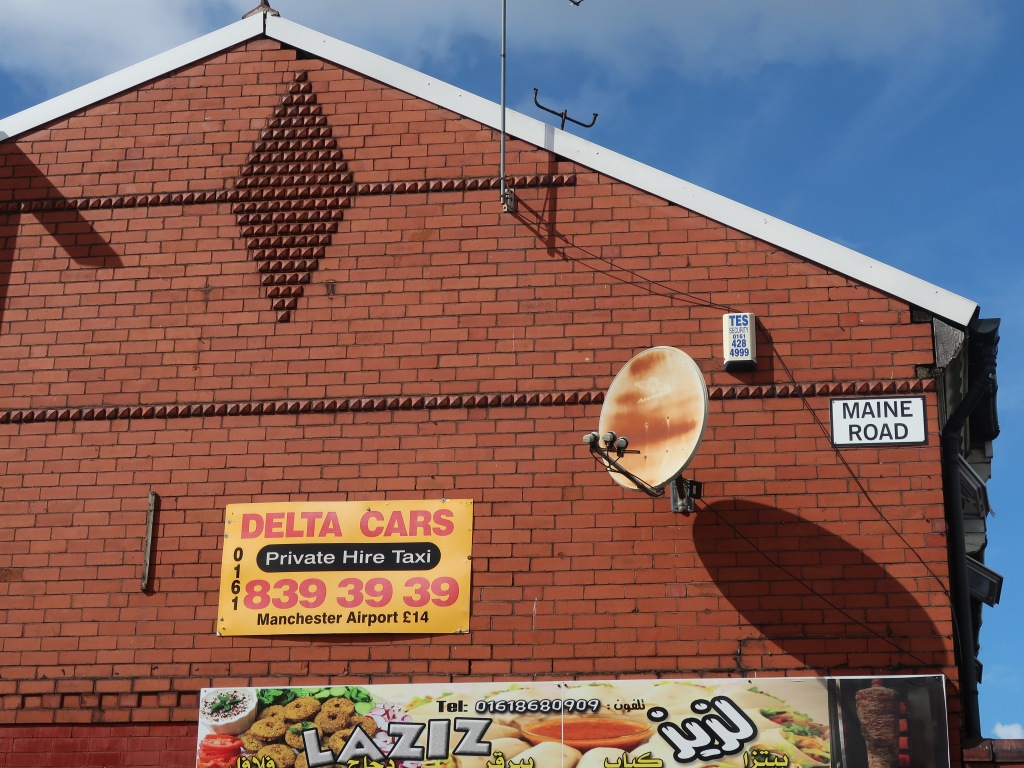



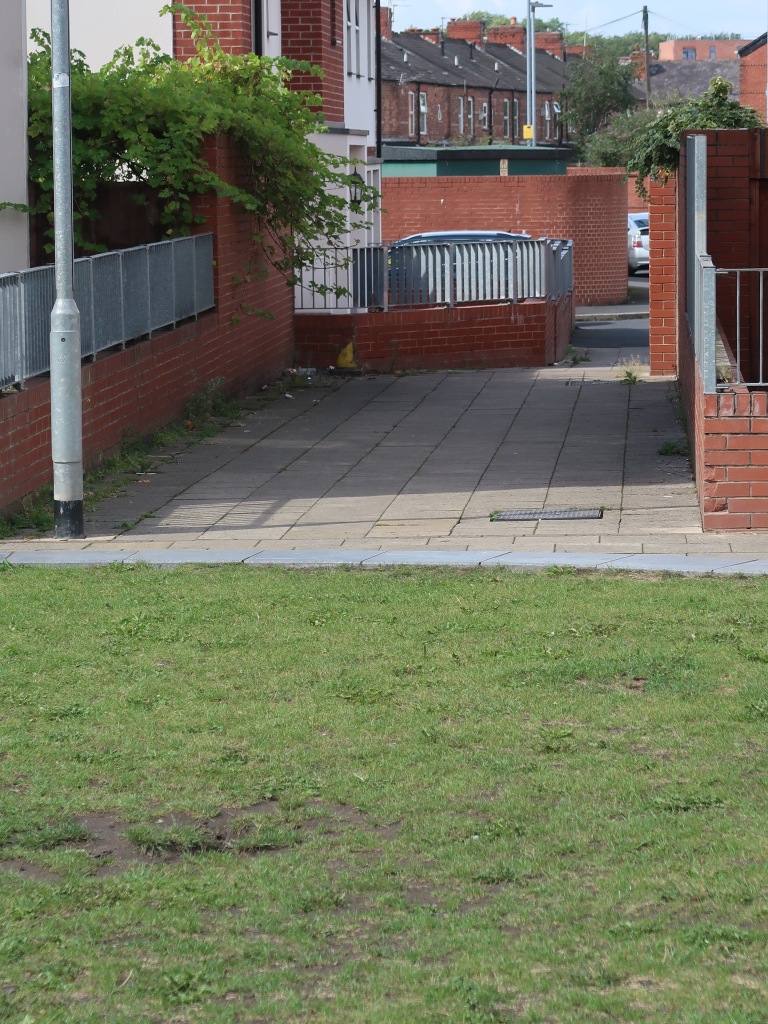

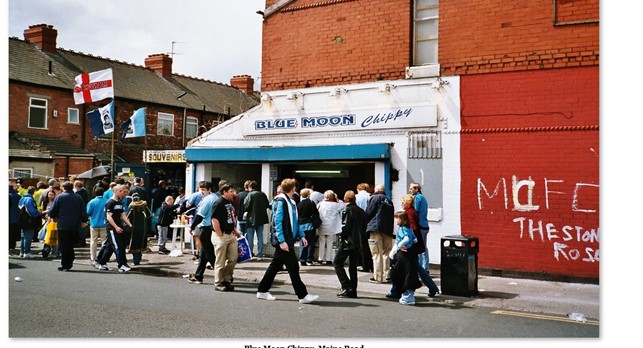
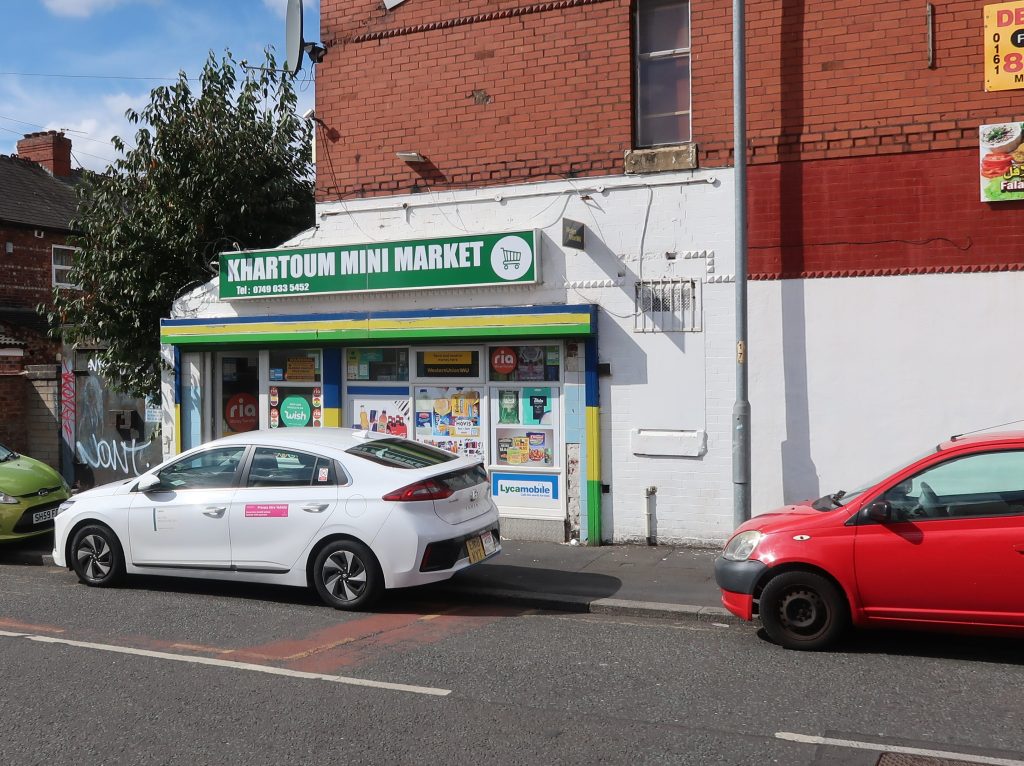


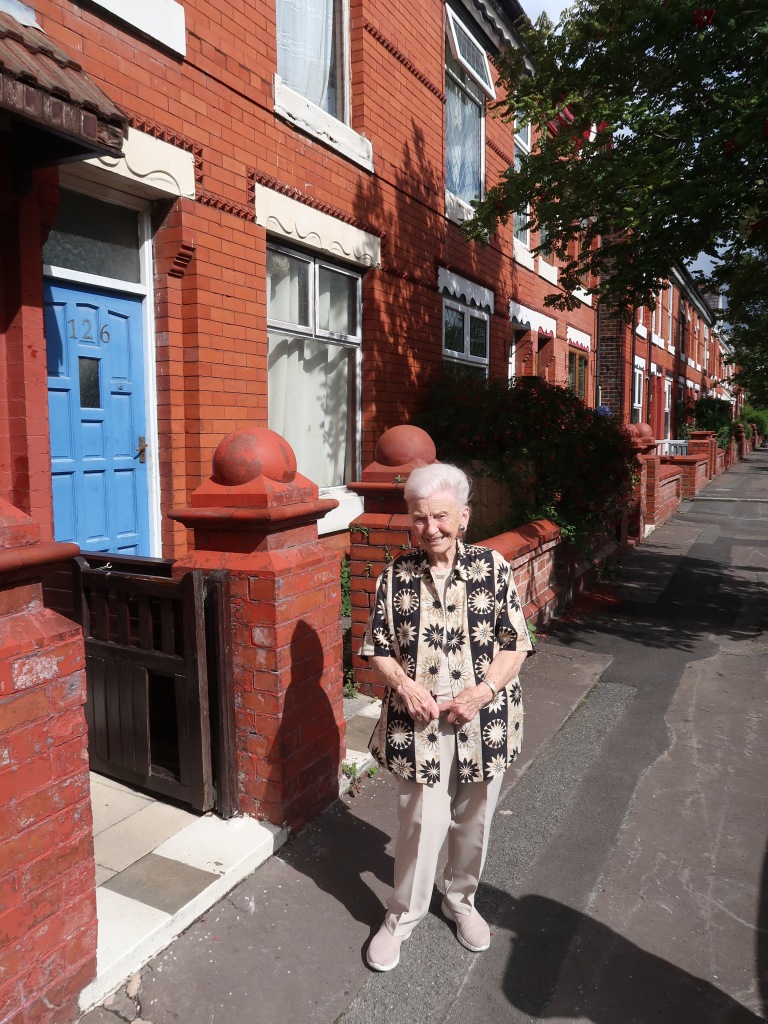
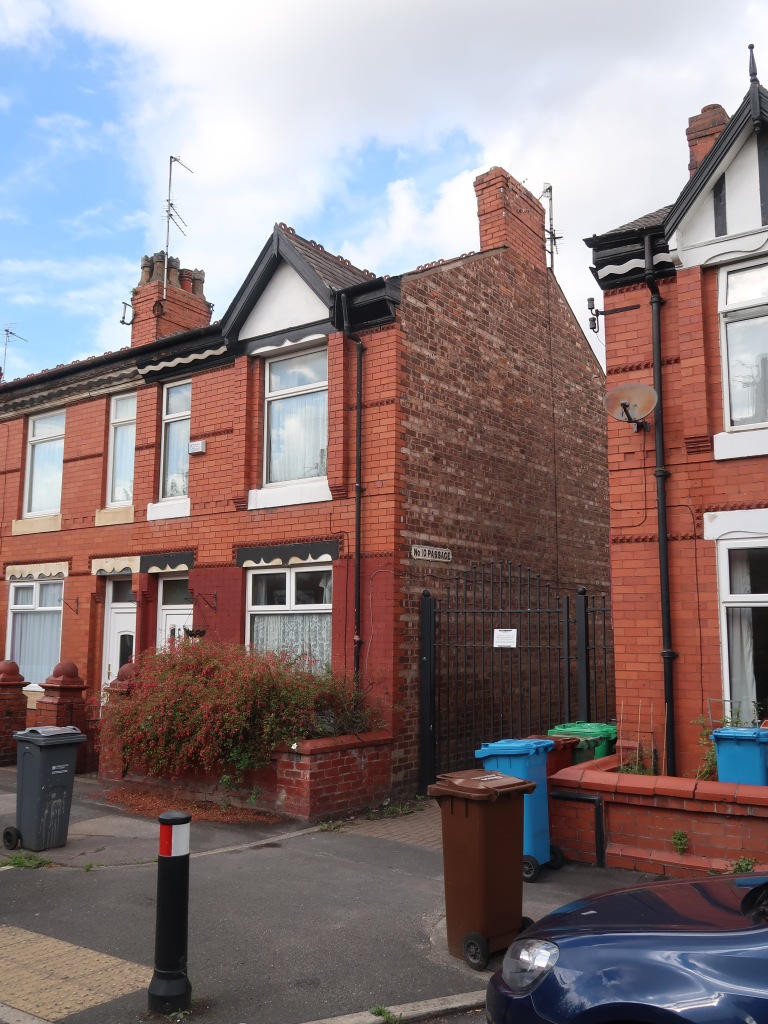
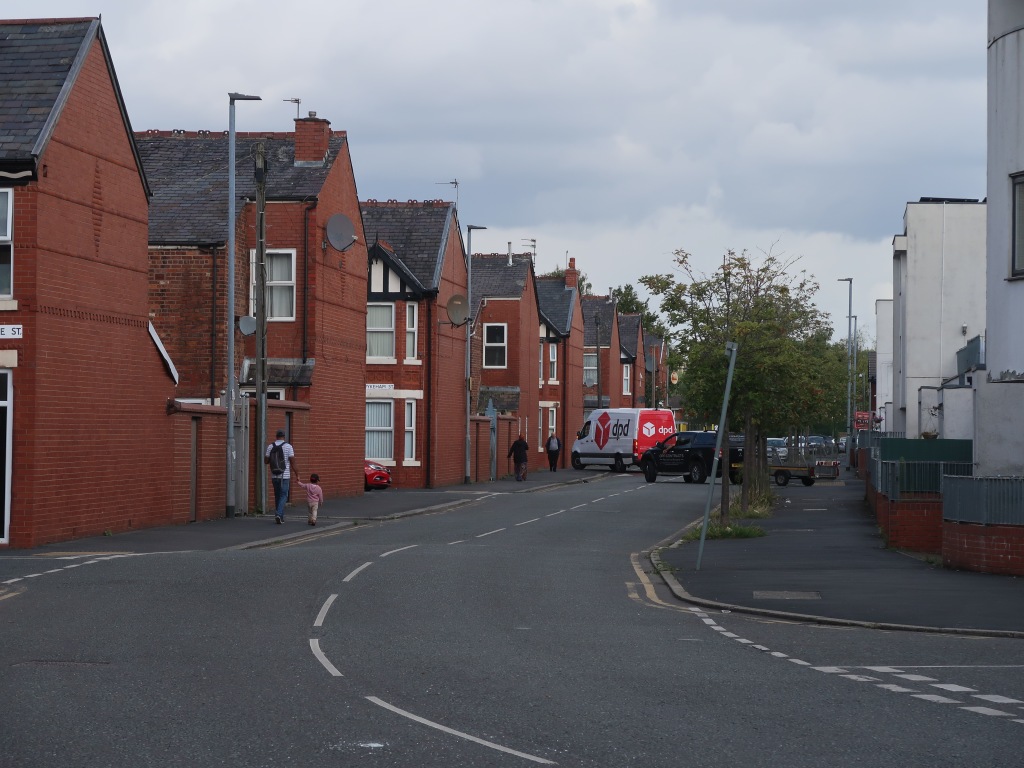
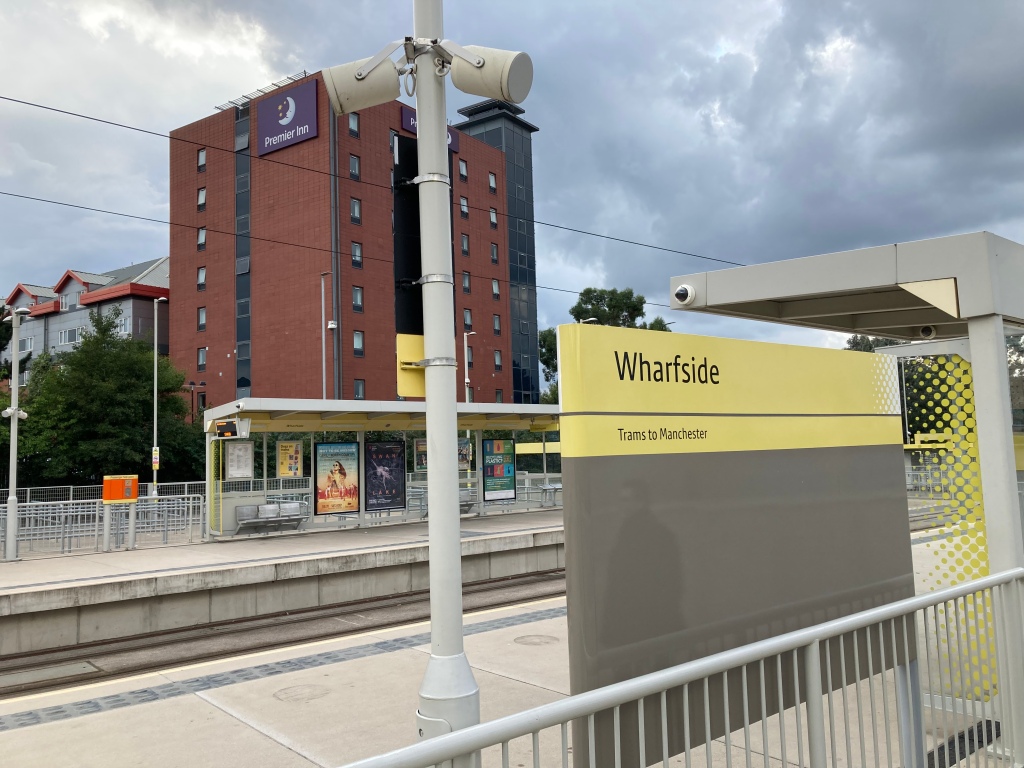
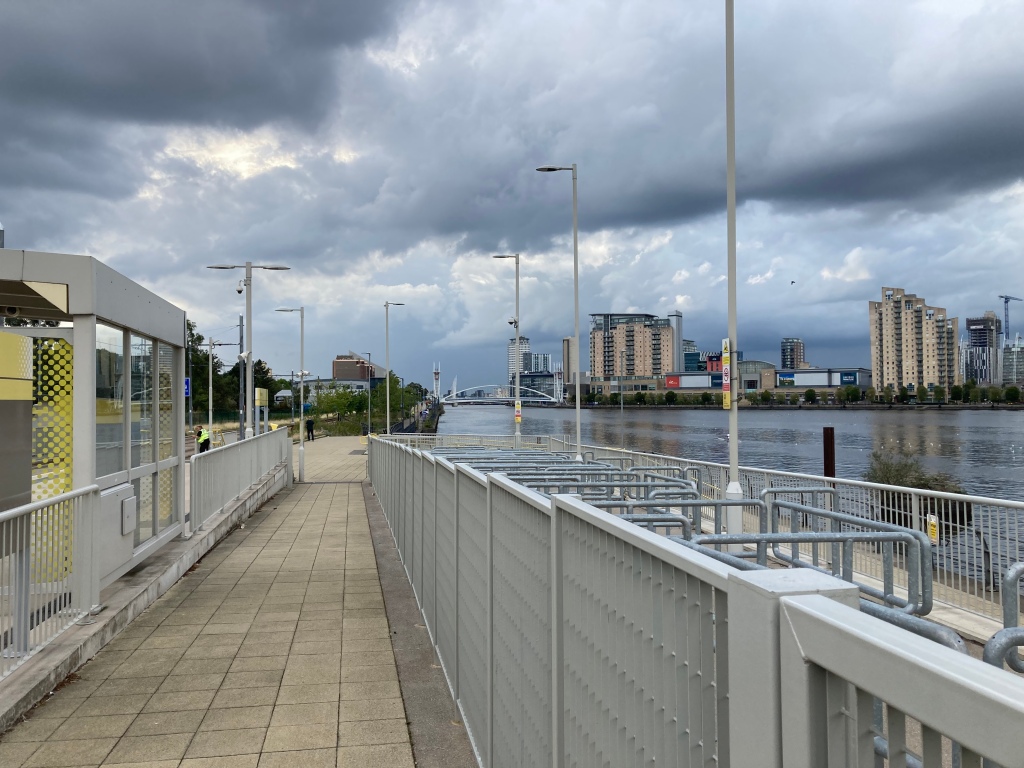

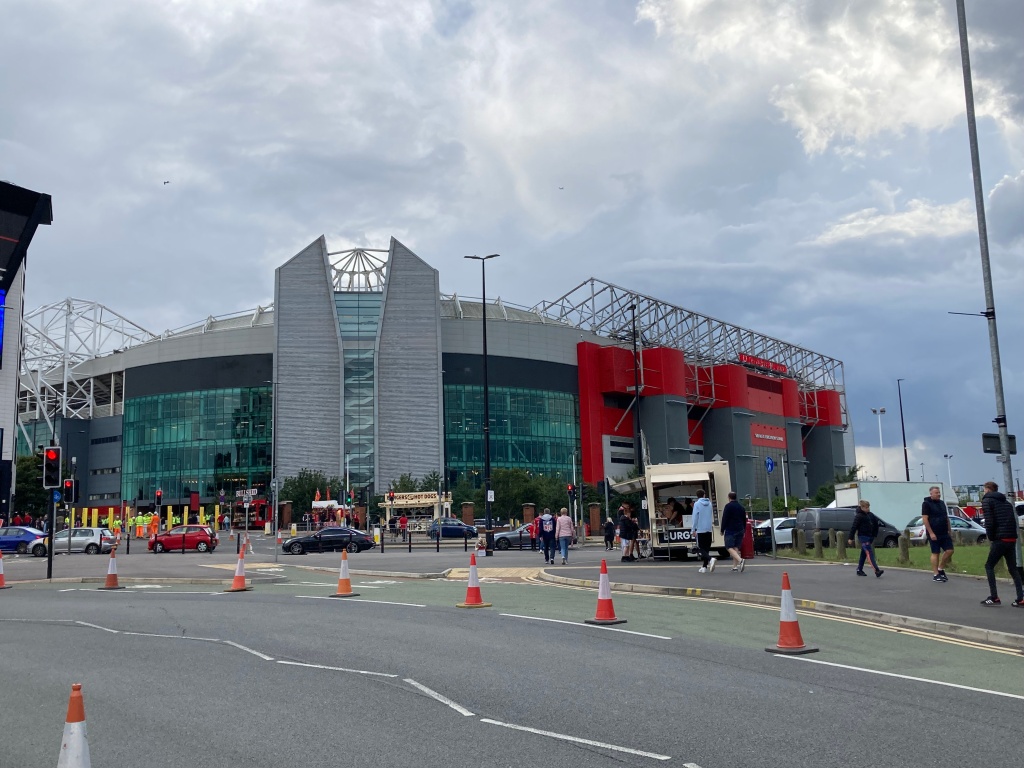
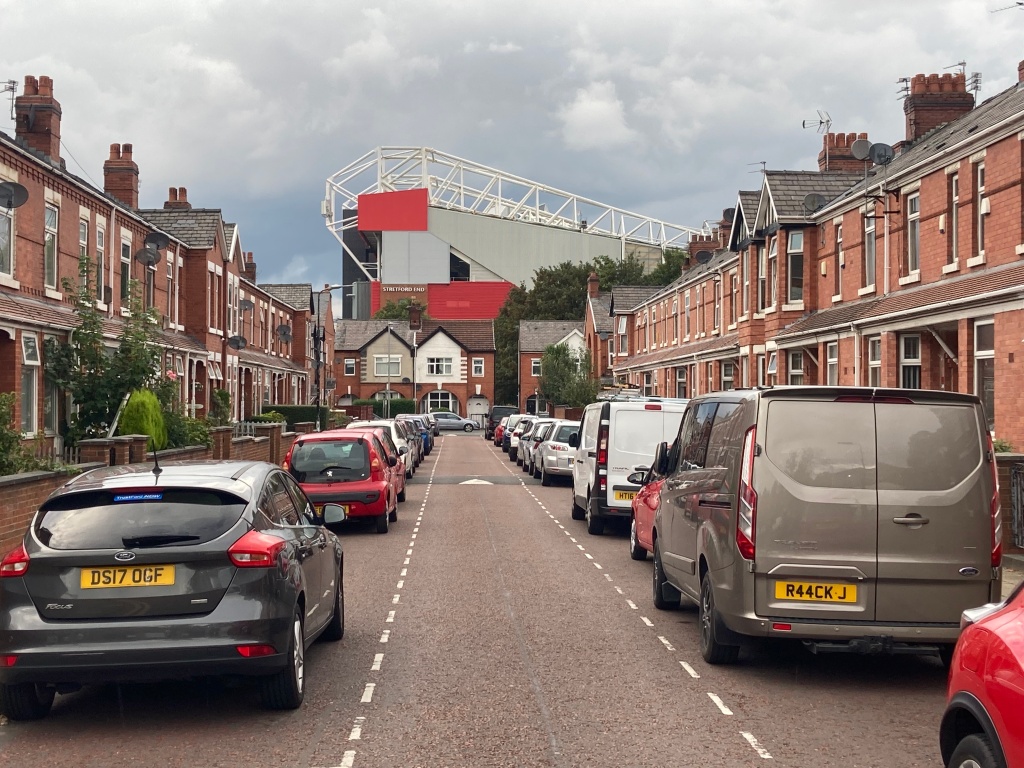
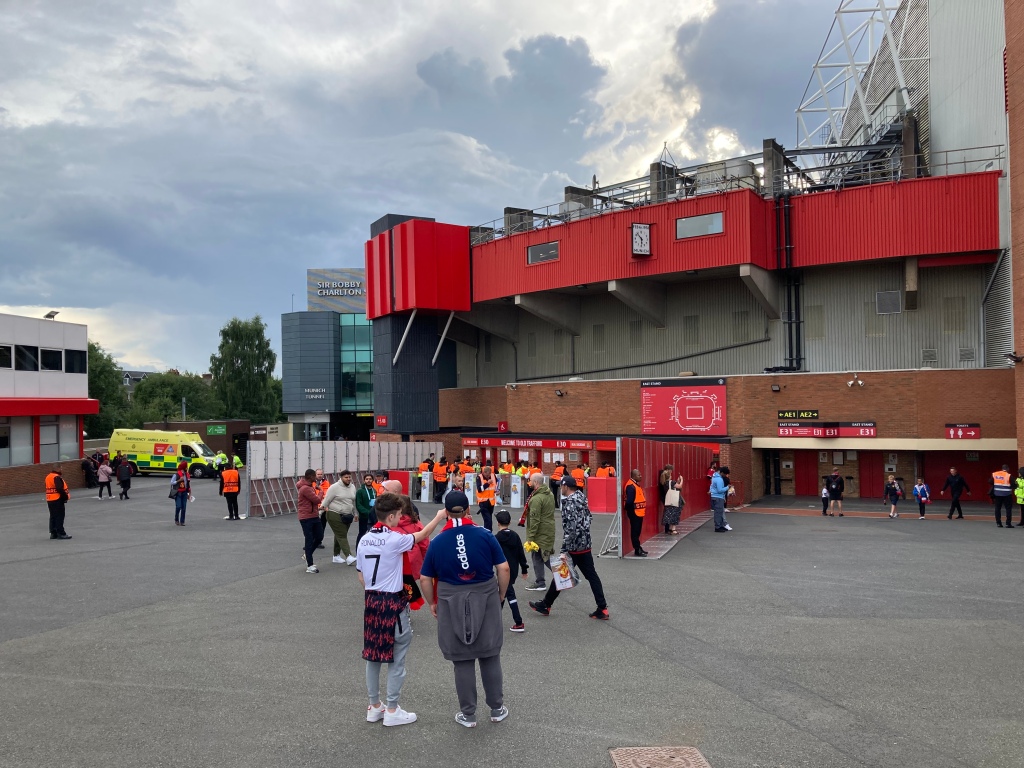
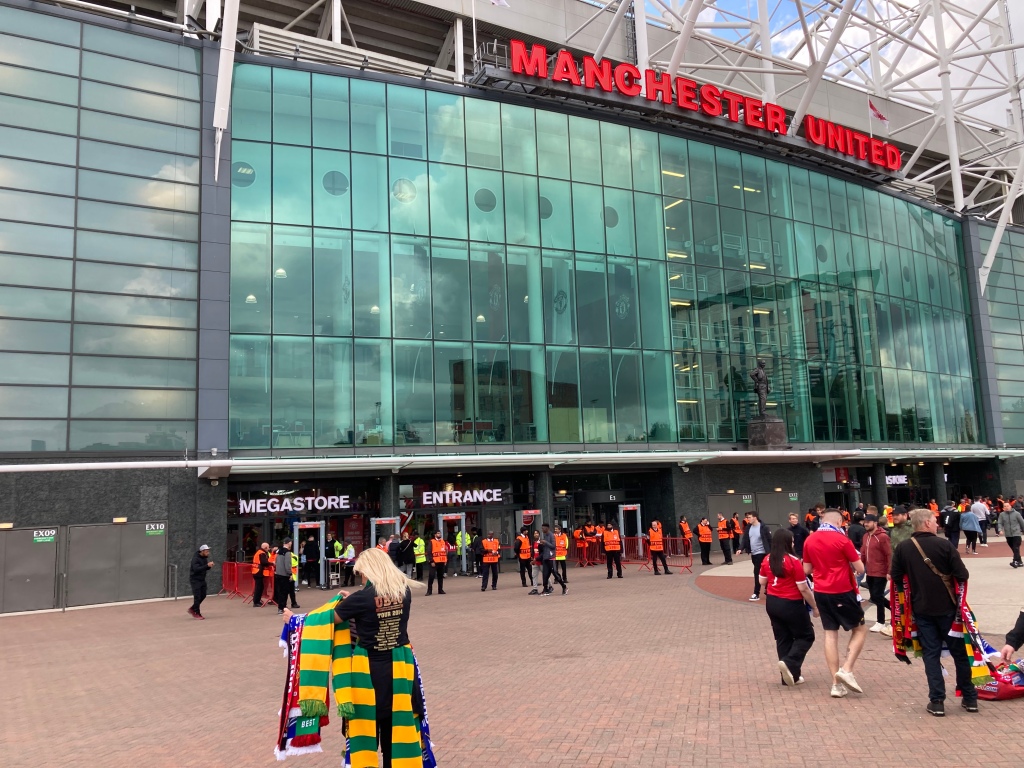
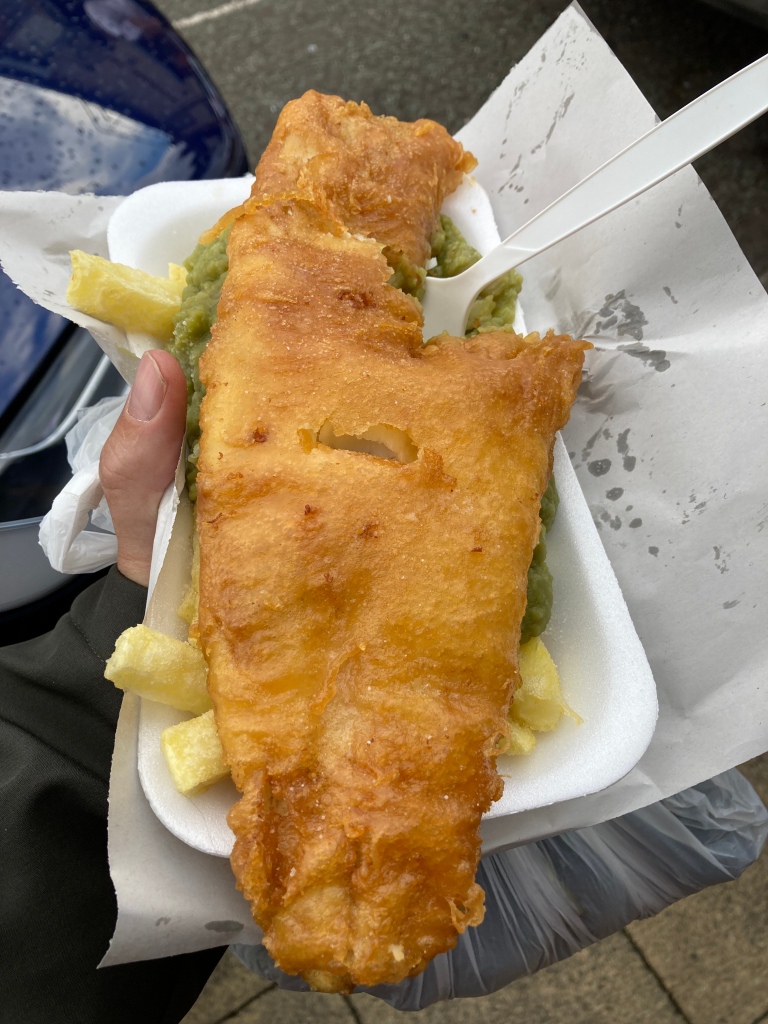
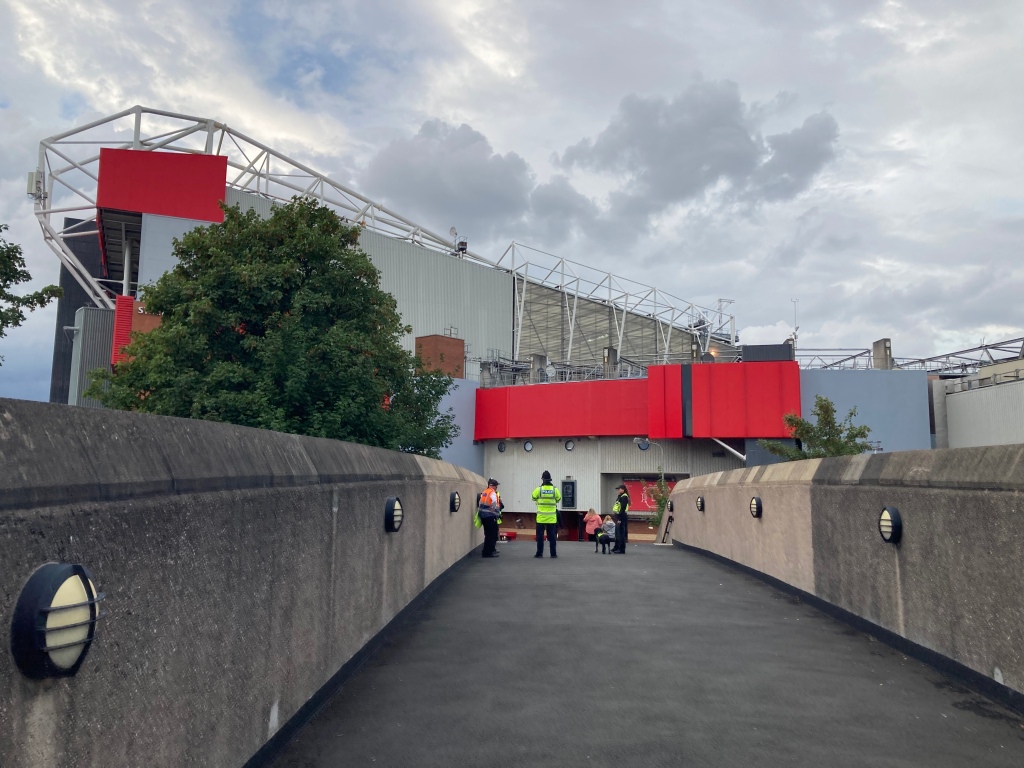
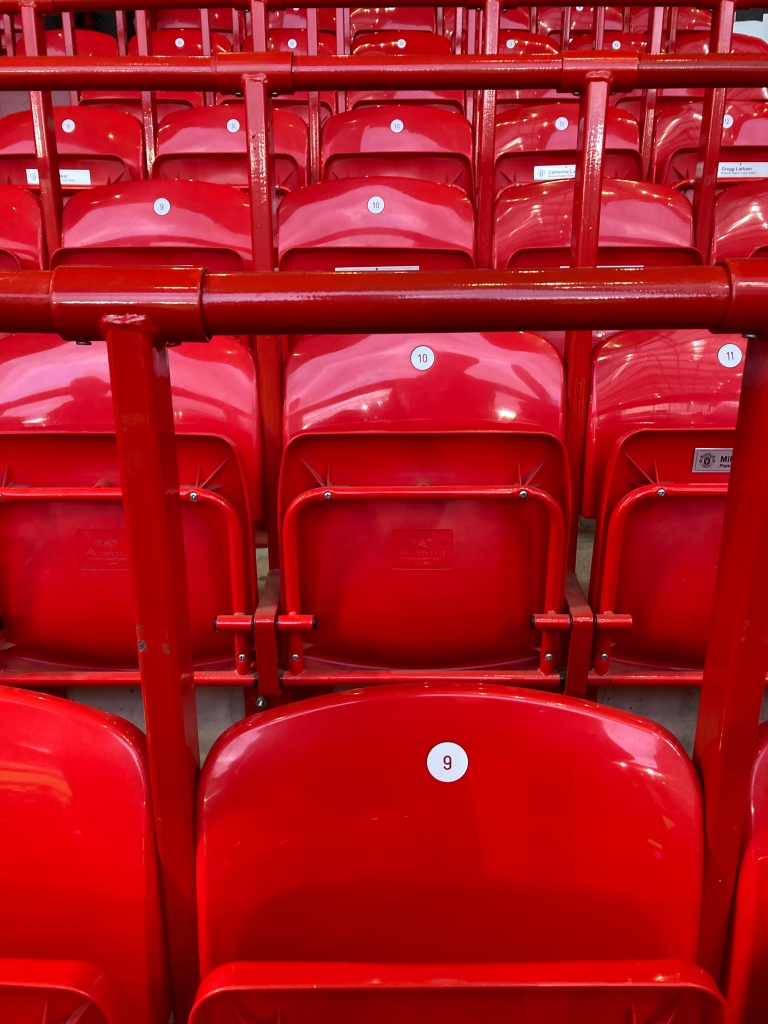
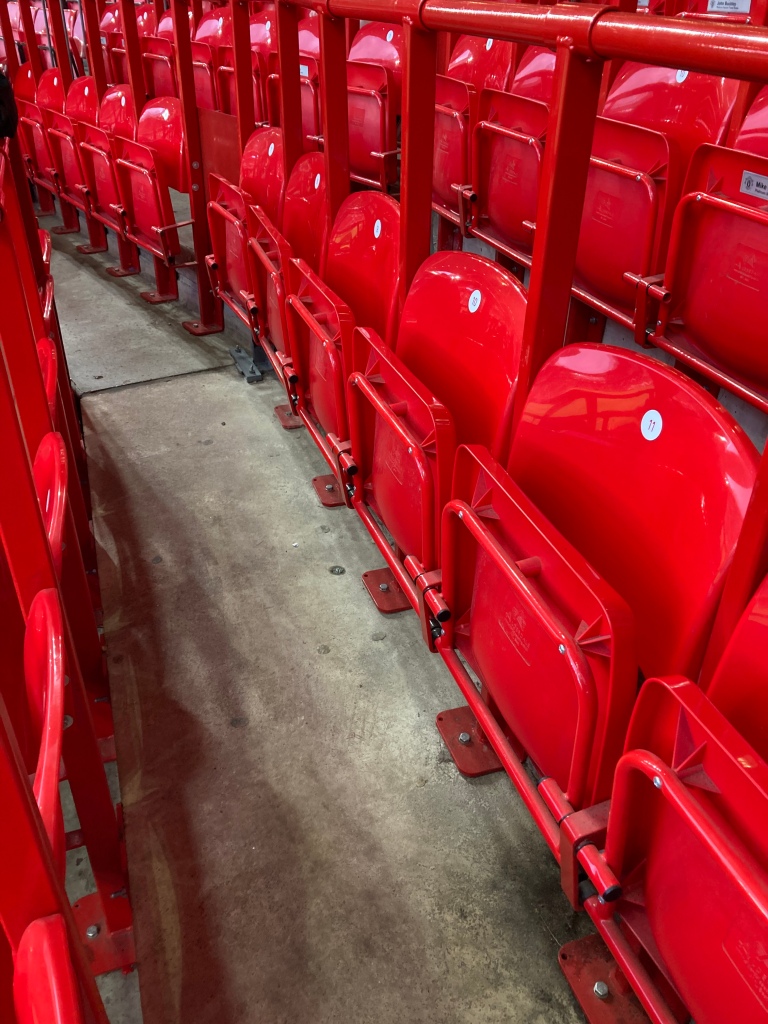
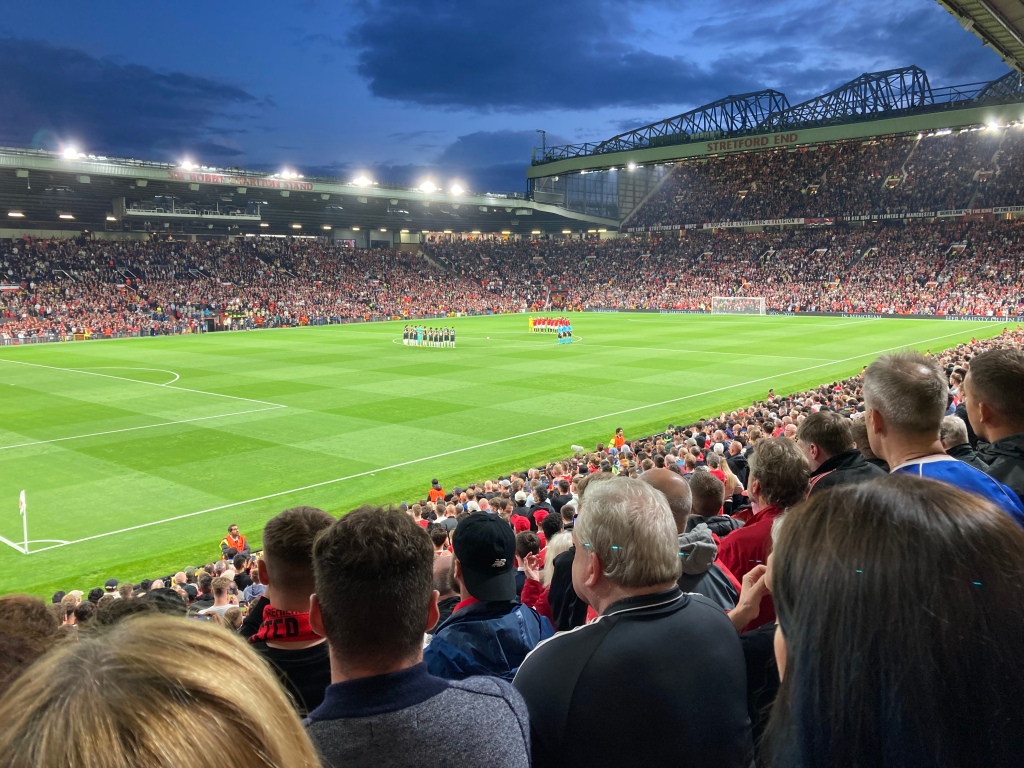
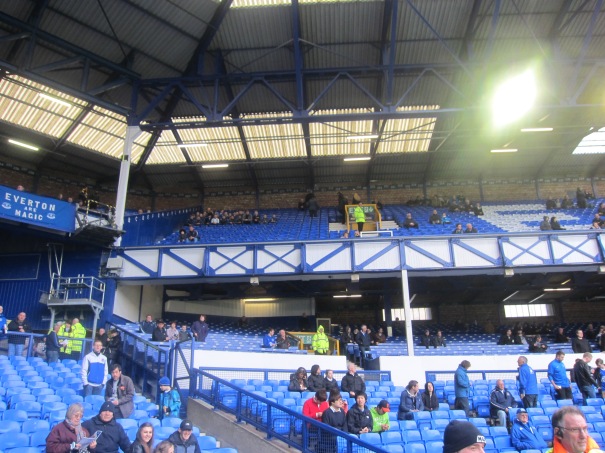
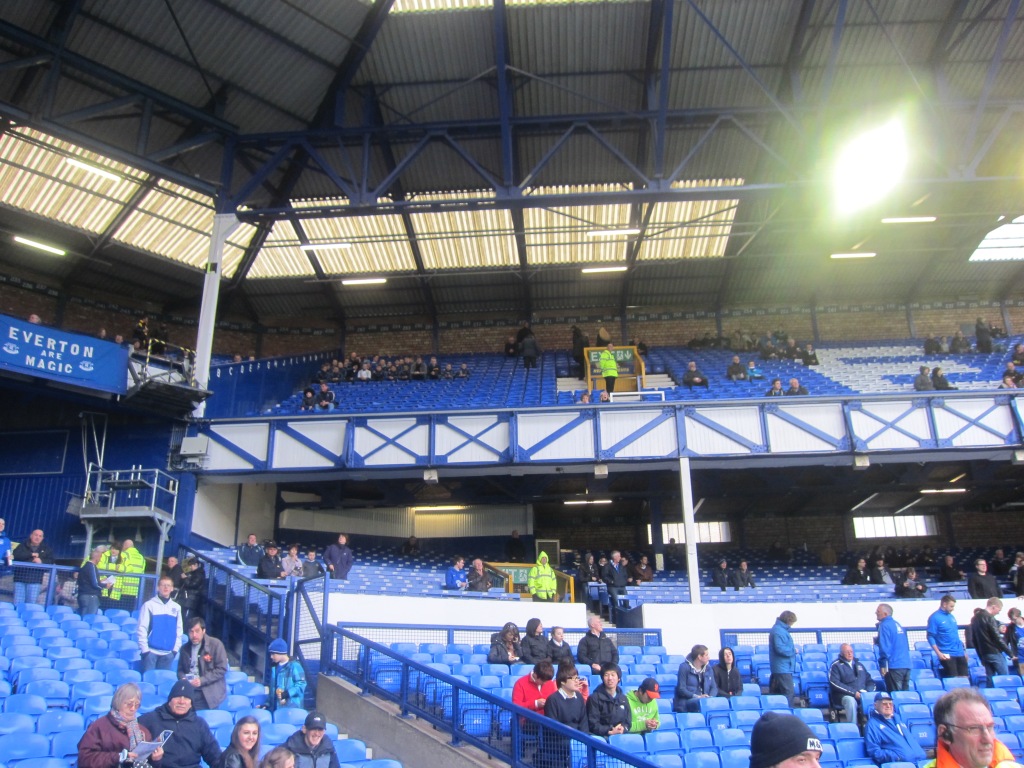
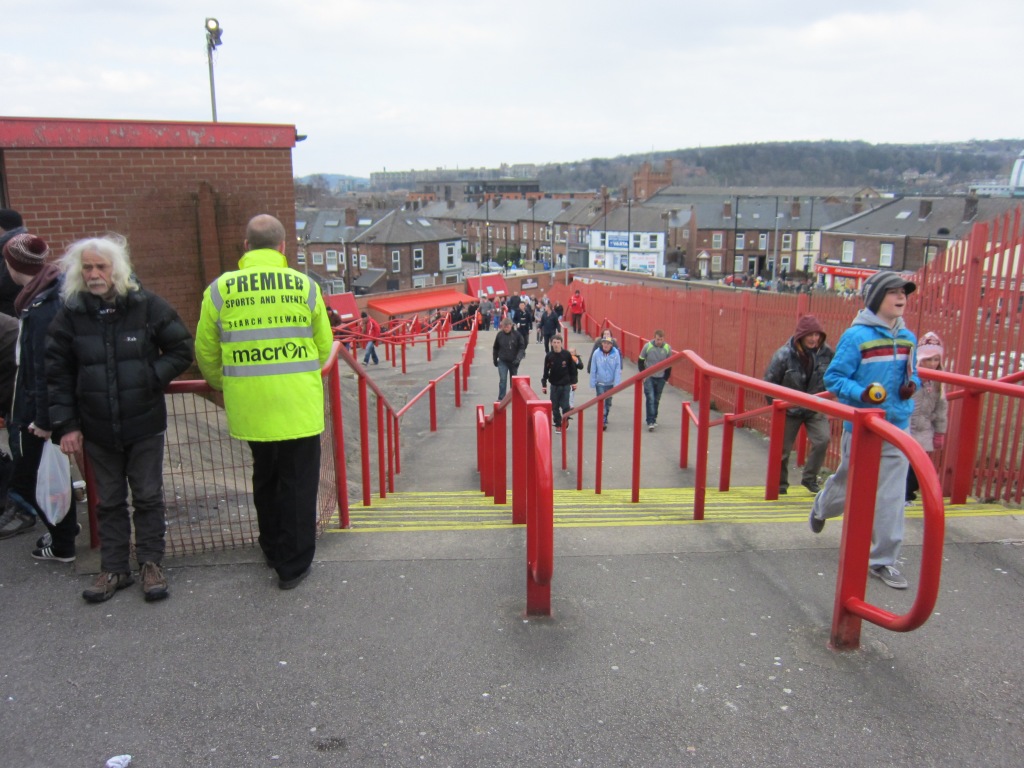
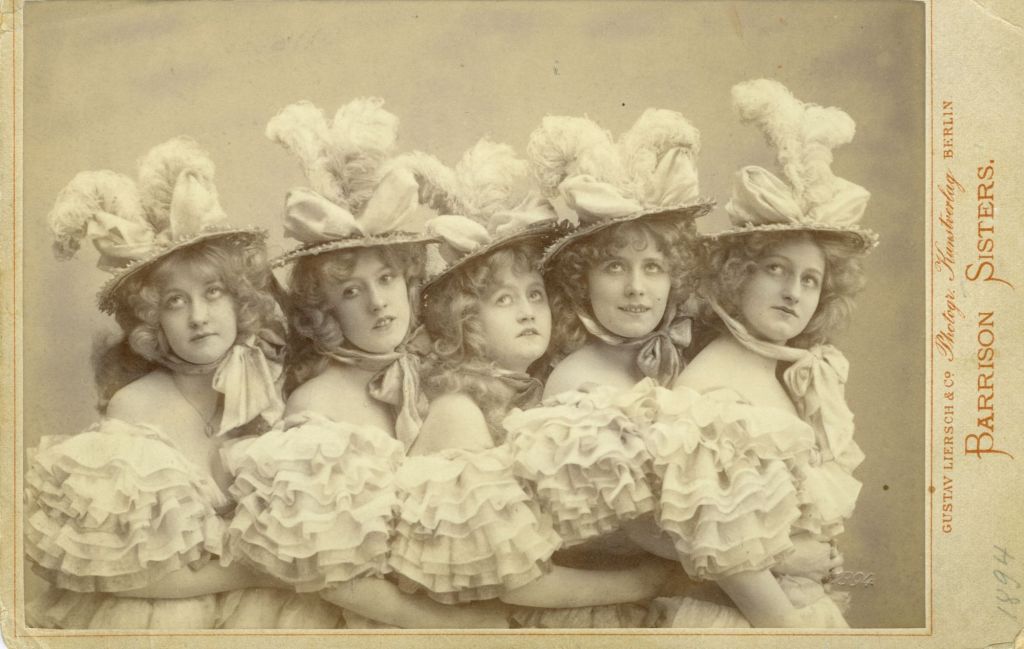
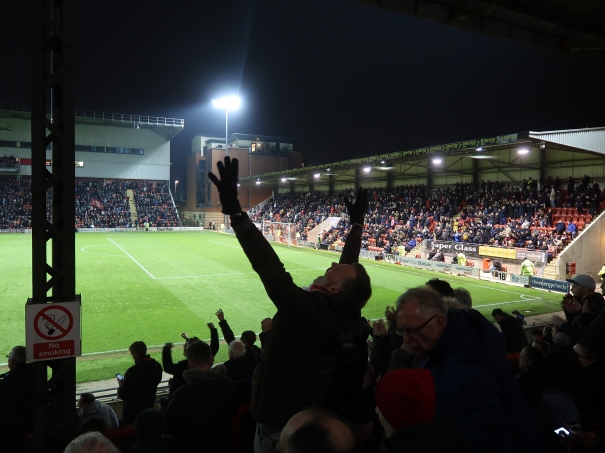
 The race for winning promotion to the Football League is entering its final stage, and my son Thomas and I have the perfect opportunity to compare two of the leading contenders – Leyton Orient and Salford City – as they both play at home on our last trip to the UK this season.
The race for winning promotion to the Football League is entering its final stage, and my son Thomas and I have the perfect opportunity to compare two of the leading contenders – Leyton Orient and Salford City – as they both play at home on our last trip to the UK this season.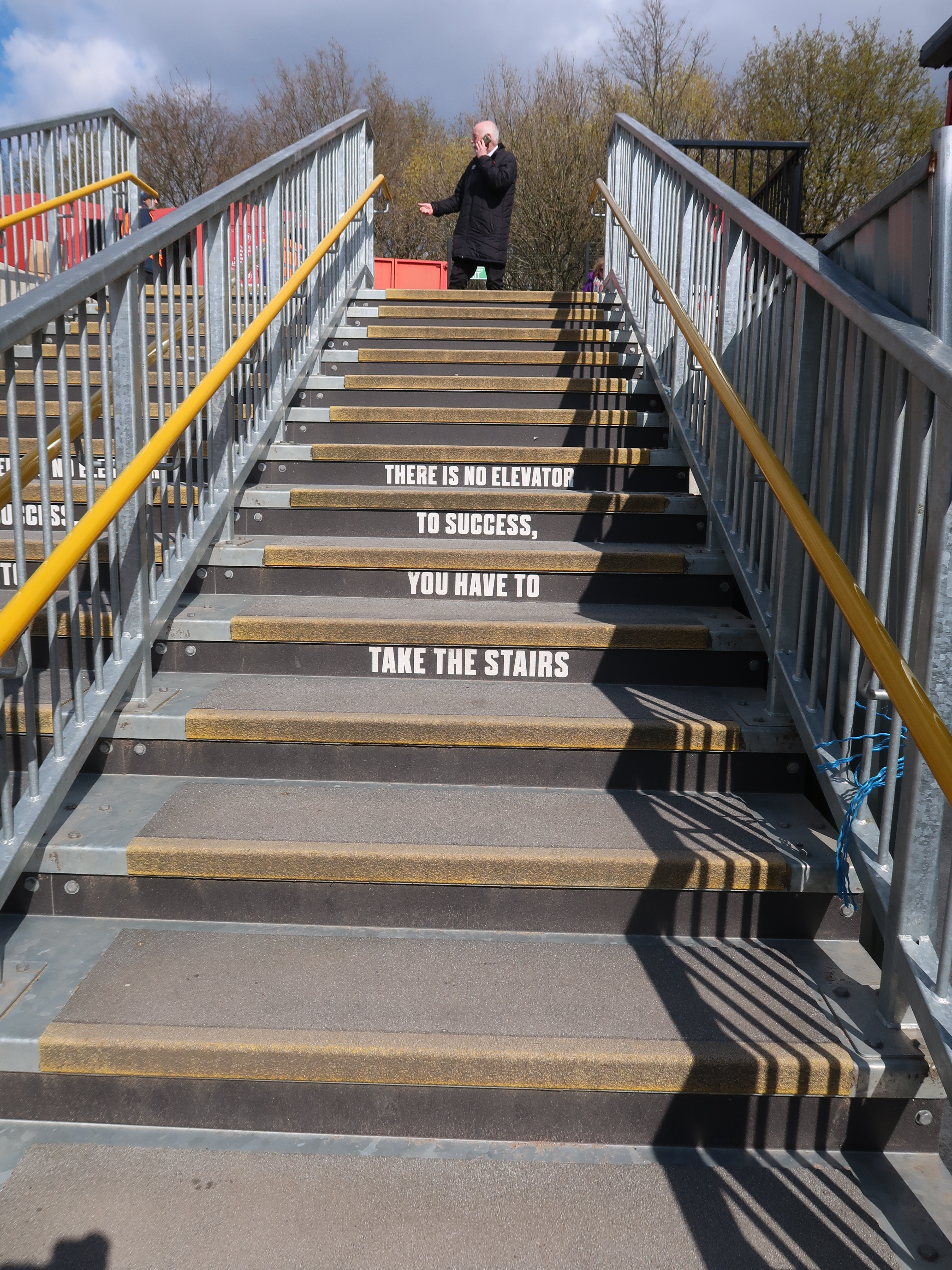
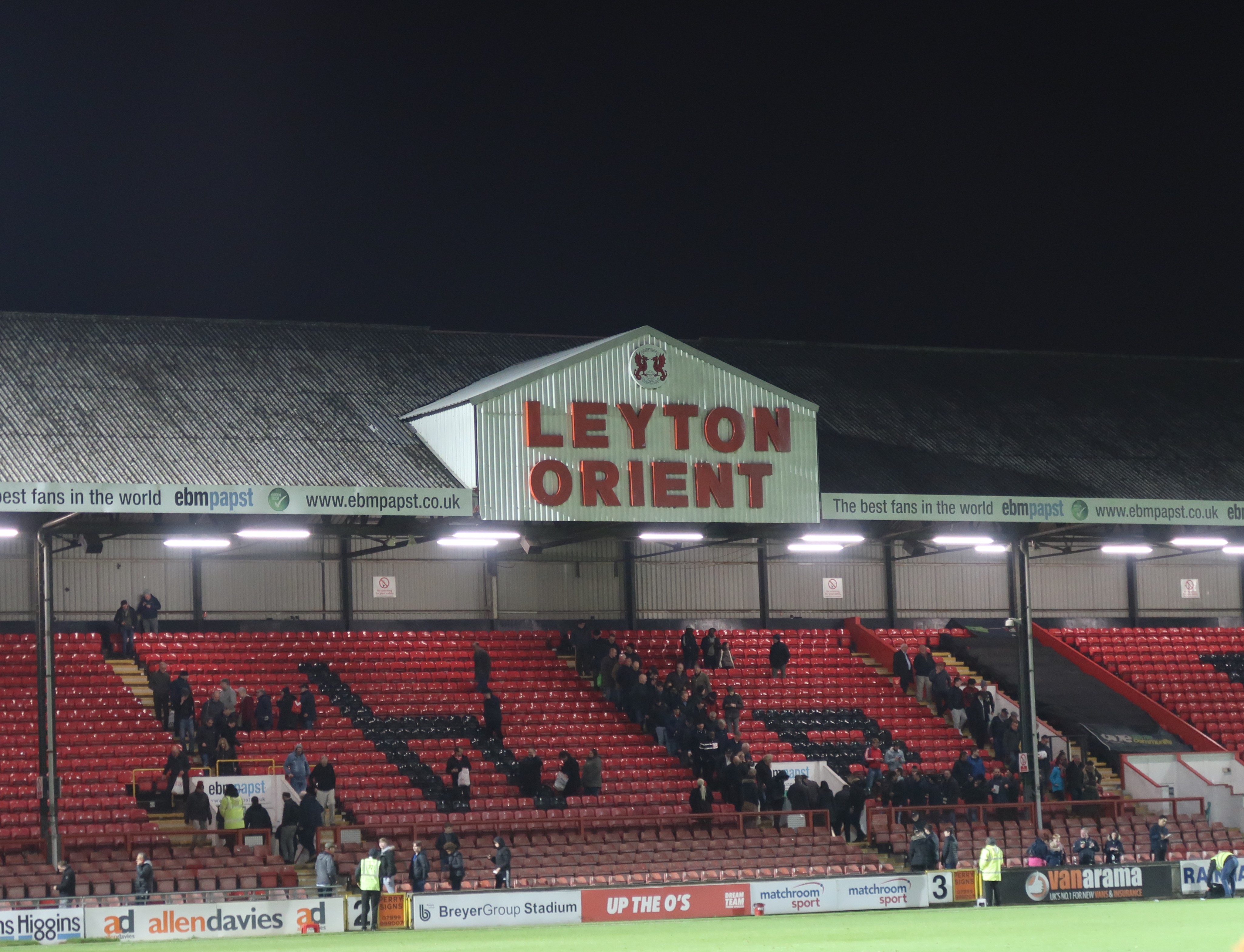
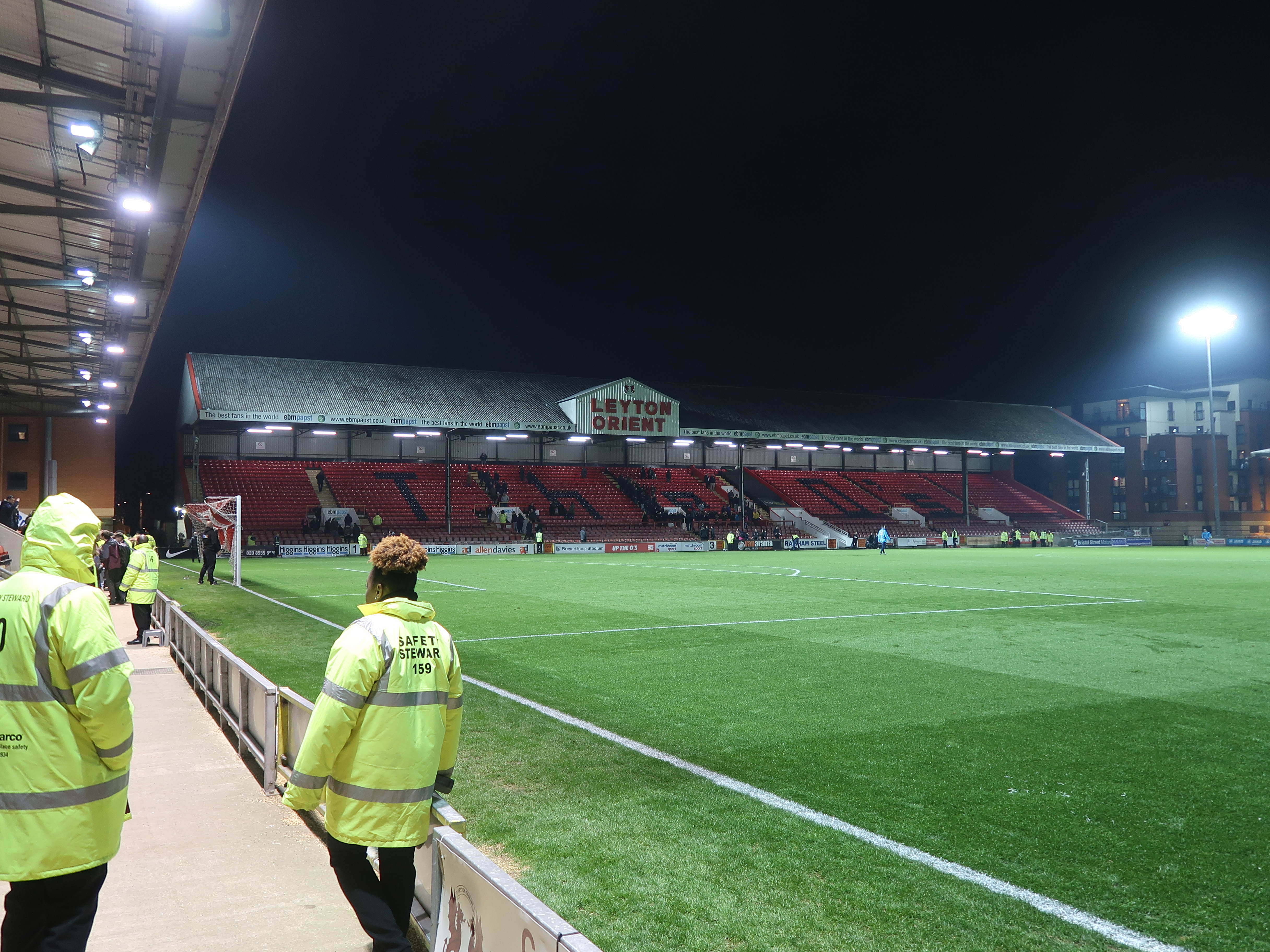

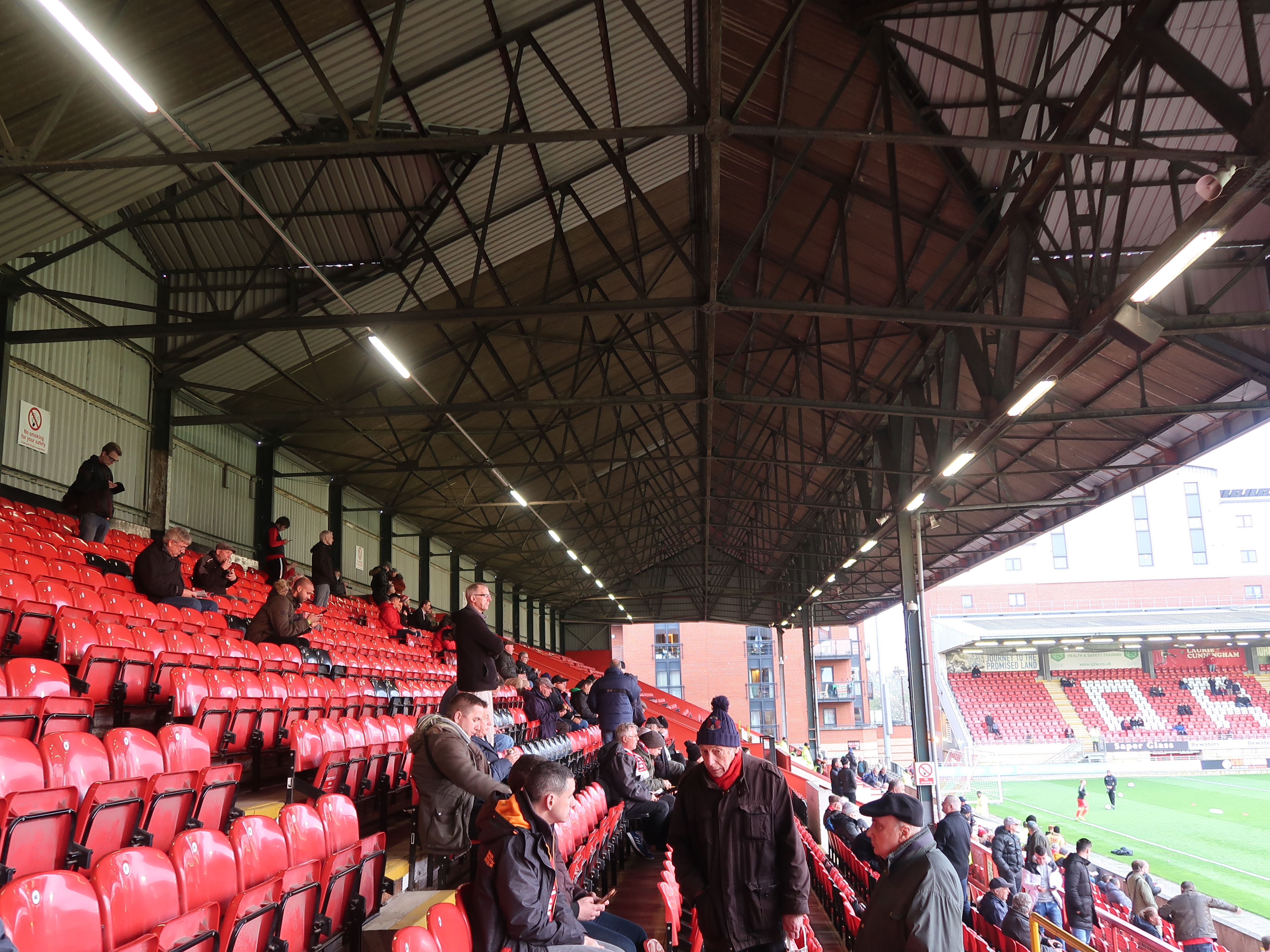
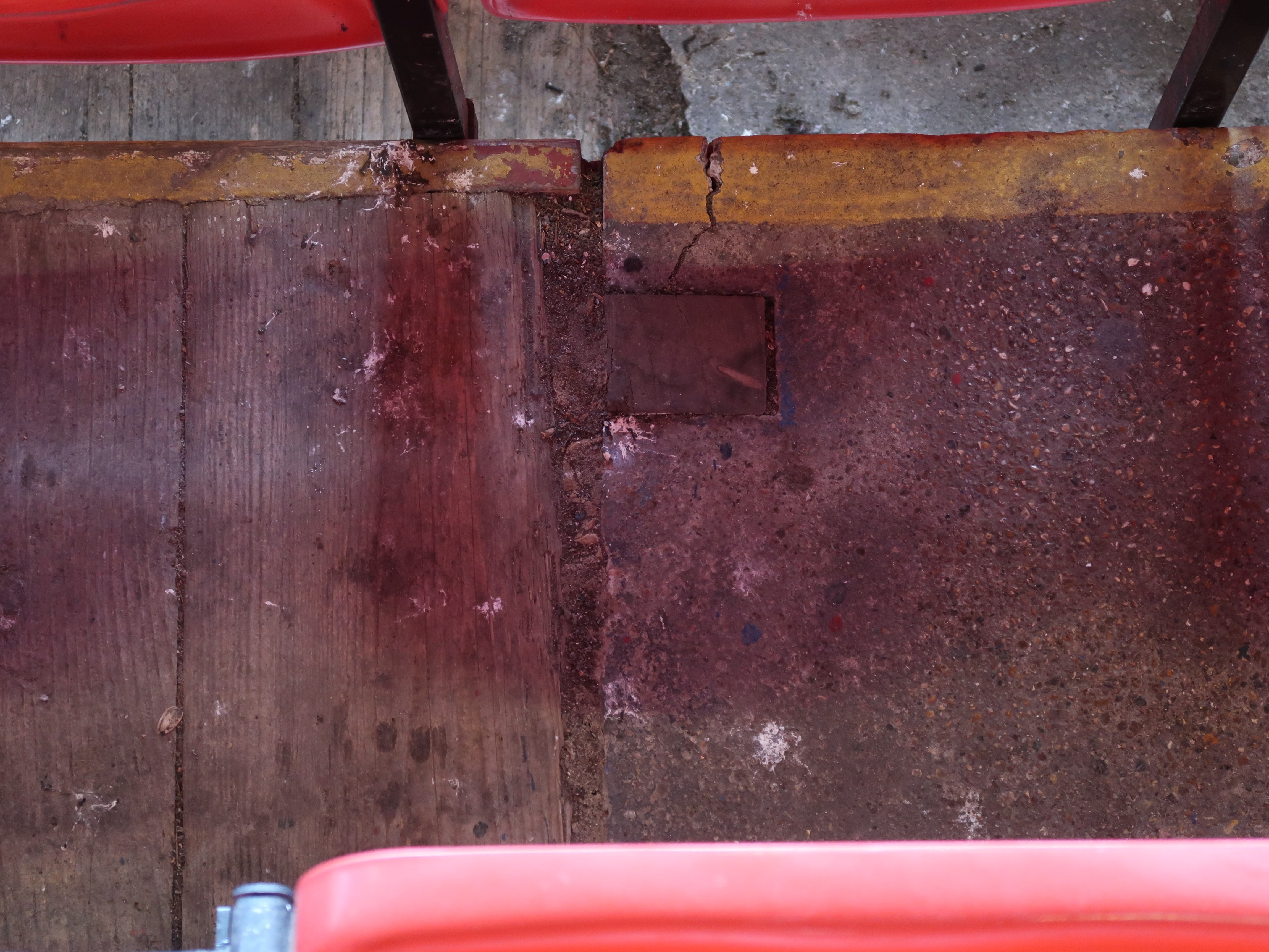
 I had been in two minds whether we should buy tickets for the new West (Main) Stand, so we would have the pleasure of looking at the old East Stand with the gable during the match, or whether we should go for the “traditional” old stand experience. In the end, I decide for experiencing the old stand rather than looking at it. I am glad I did. I like the quirkiness of it. The East Stand used to contain offices, dressing room, club shop etc. Or rather – small buildings containing such facilities have been attached to the stand from Mitcham Stadium. A big black O with the club crest in the middle between the words “Leyton Orient” and “Football Club Ltd” make up the decorations on the rather drab grey cladding, along with red and white attached buildings.
I had been in two minds whether we should buy tickets for the new West (Main) Stand, so we would have the pleasure of looking at the old East Stand with the gable during the match, or whether we should go for the “traditional” old stand experience. In the end, I decide for experiencing the old stand rather than looking at it. I am glad I did. I like the quirkiness of it. The East Stand used to contain offices, dressing room, club shop etc. Or rather – small buildings containing such facilities have been attached to the stand from Mitcham Stadium. A big black O with the club crest in the middle between the words “Leyton Orient” and “Football Club Ltd” make up the decorations on the rather drab grey cladding, along with red and white attached buildings.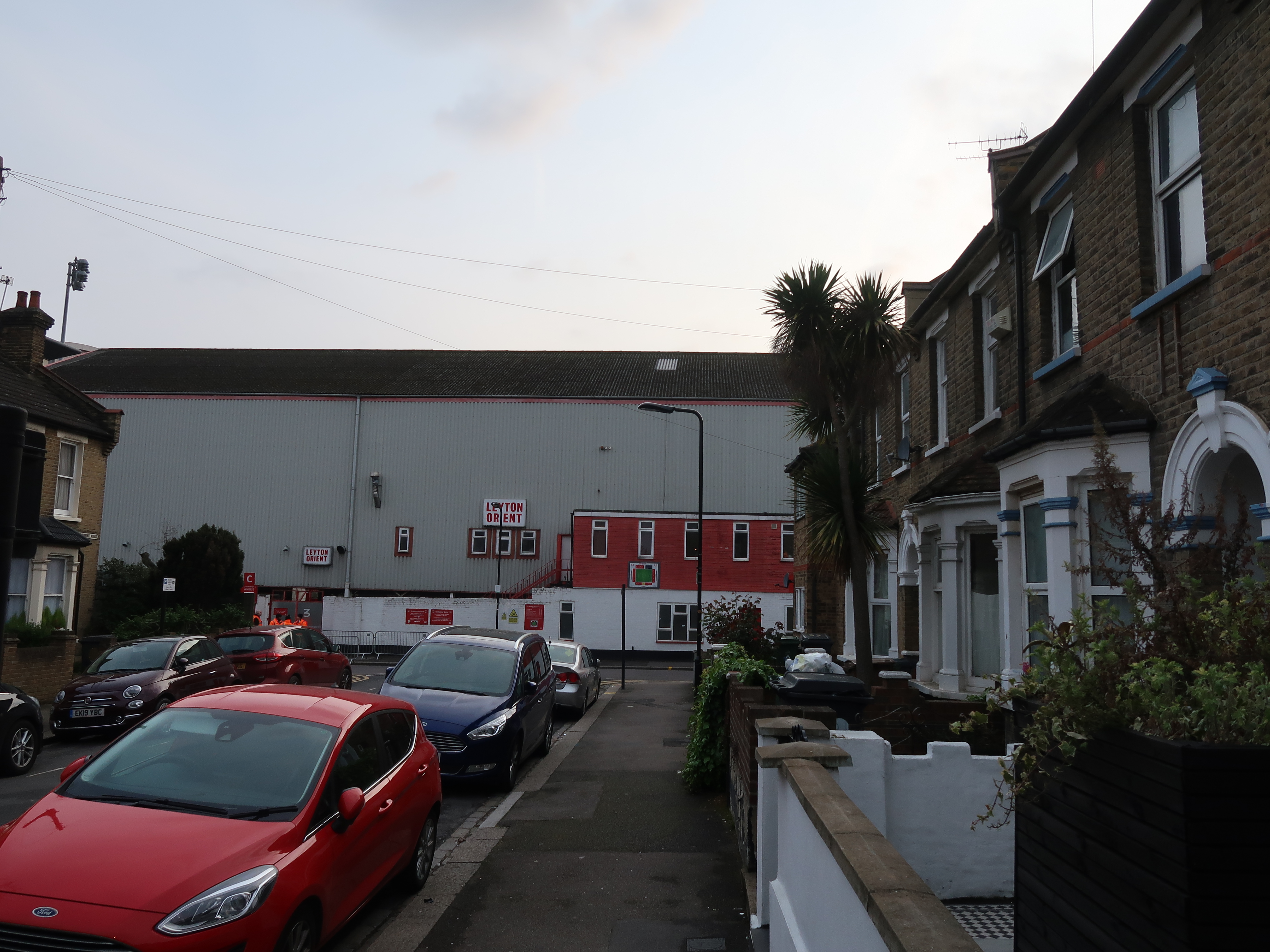

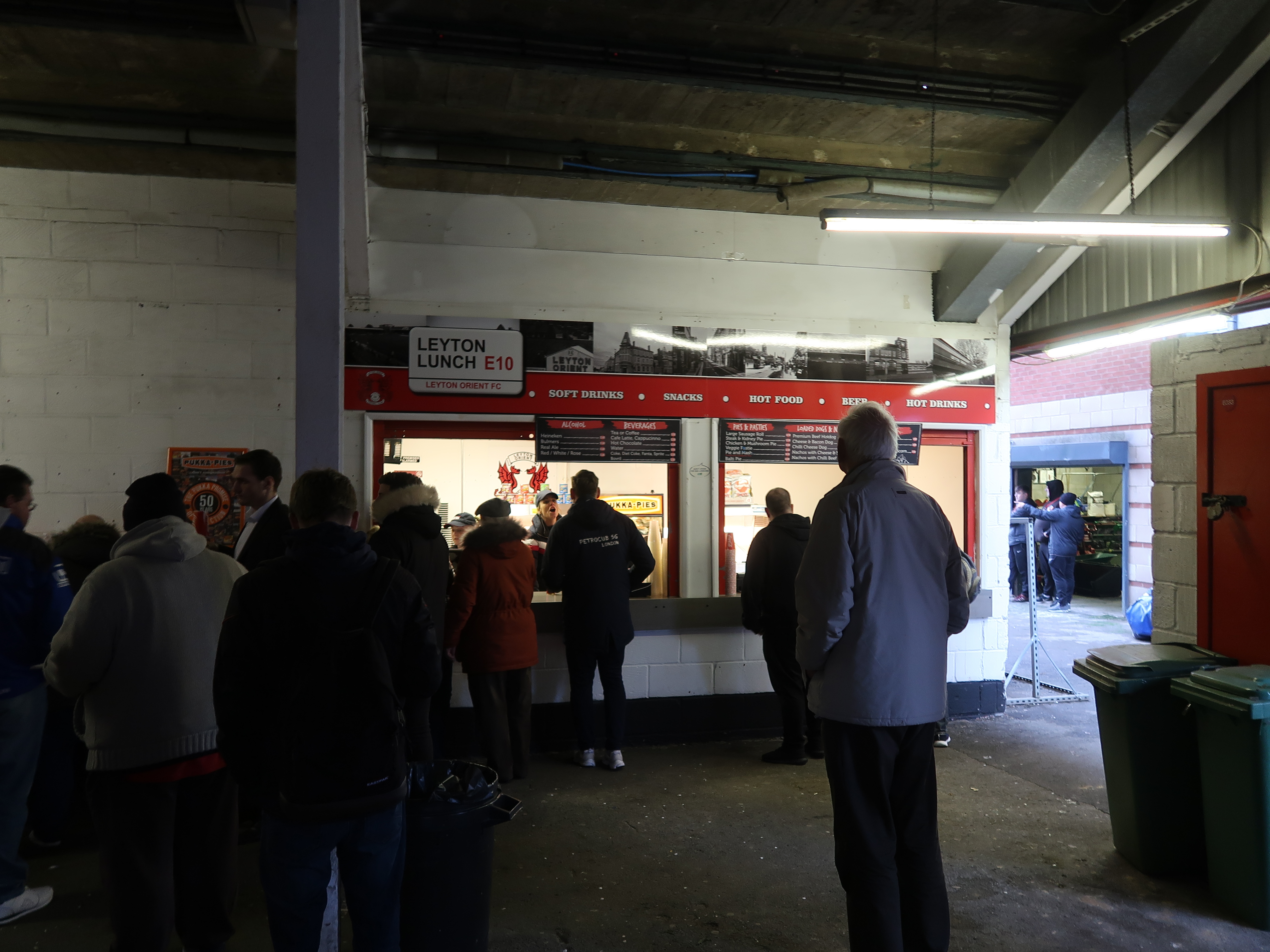
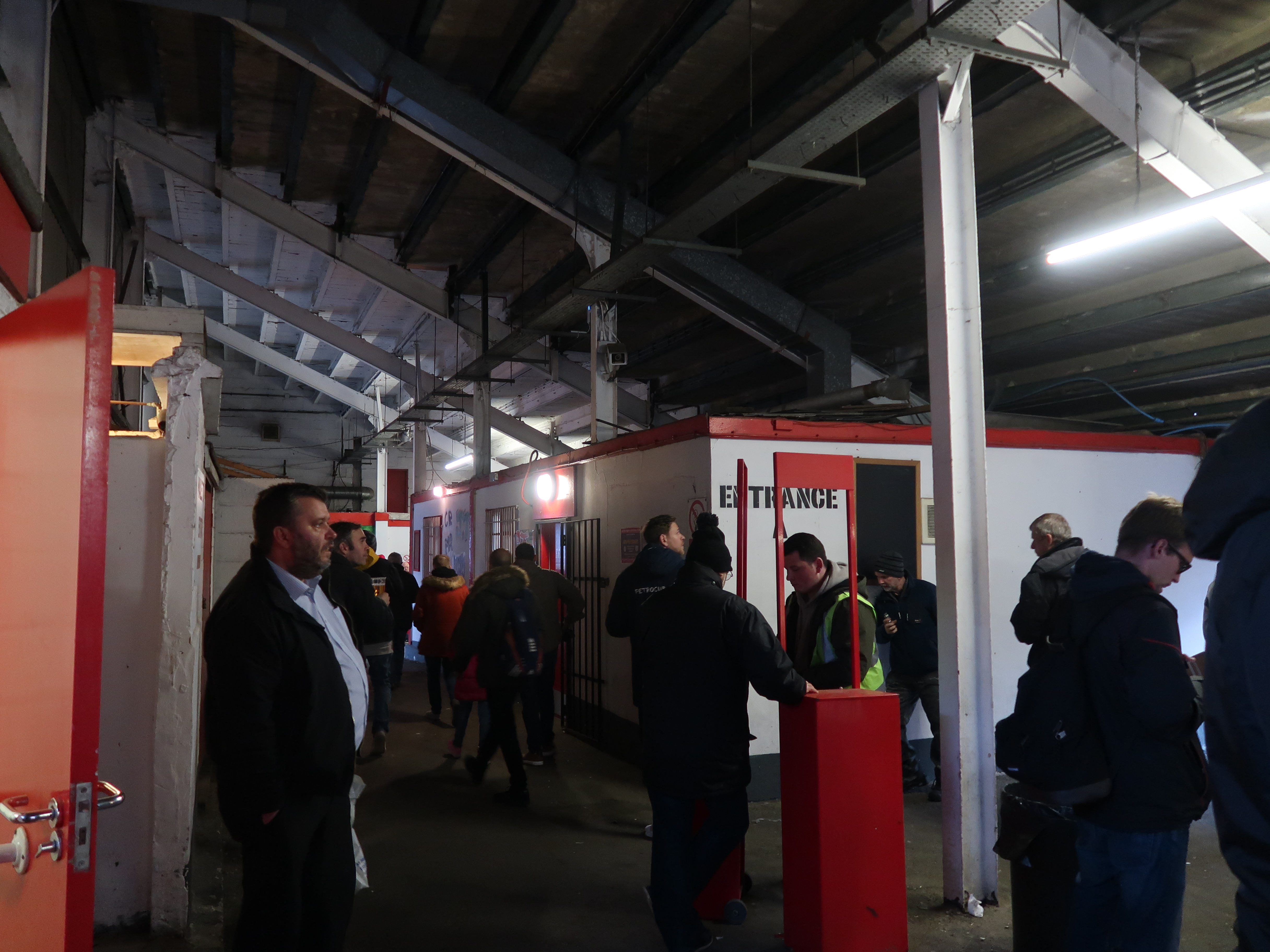
 Our choice of stand may have cost us the sight of the iconic gable as a lovely bacground scenery for the match, but in its own way, the new West Stand is just as fascinating to watch. Above the ordinary rows of seats is a gallery with seats for the visitors to the executive boxes. And at the top of the stand, there is a spectacular gallery for the press. It really looks impressive, when the lights are turned on.
Our choice of stand may have cost us the sight of the iconic gable as a lovely bacground scenery for the match, but in its own way, the new West Stand is just as fascinating to watch. Above the ordinary rows of seats is a gallery with seats for the visitors to the executive boxes. And at the top of the stand, there is a spectacular gallery for the press. It really looks impressive, when the lights are turned on.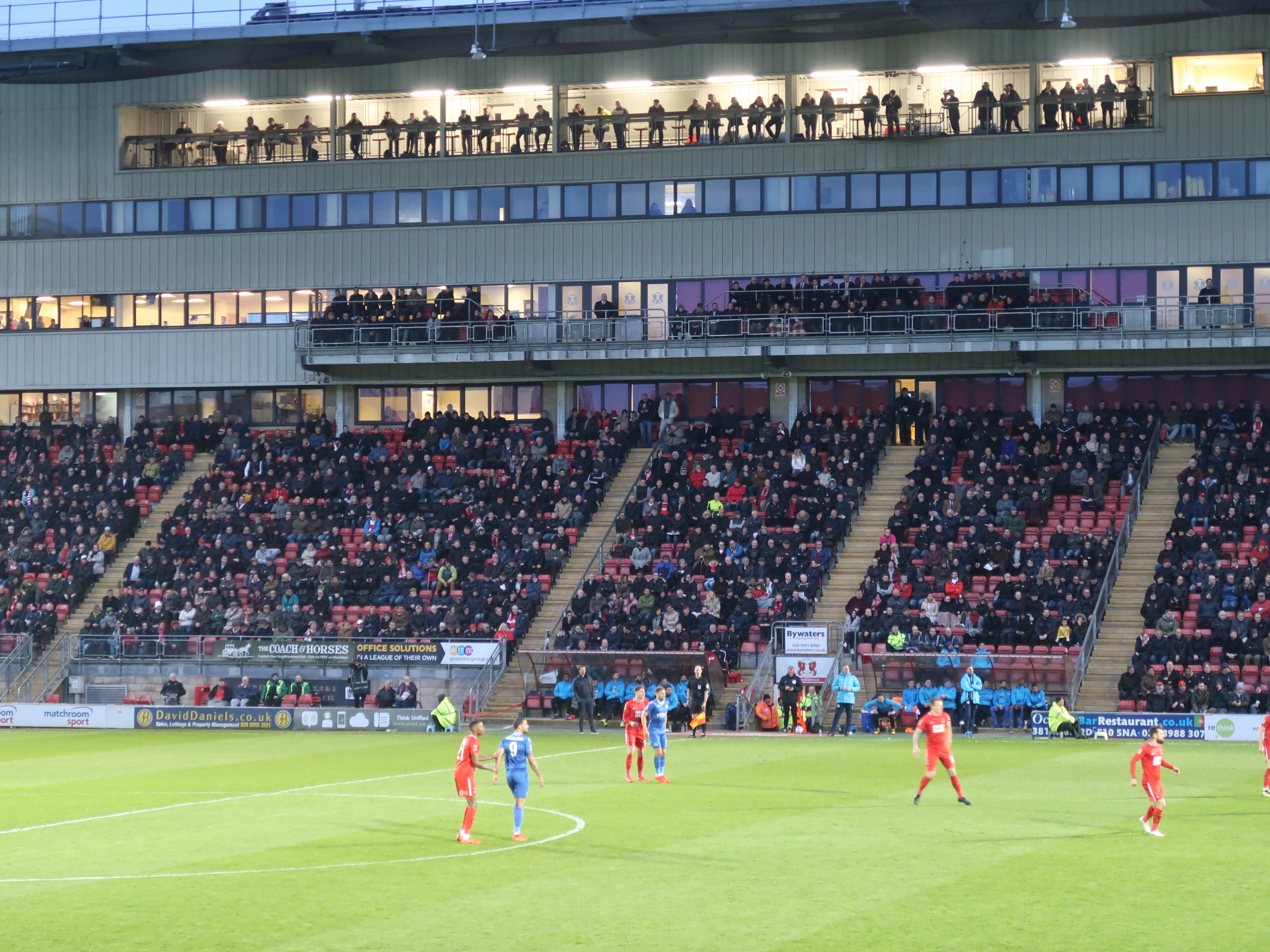
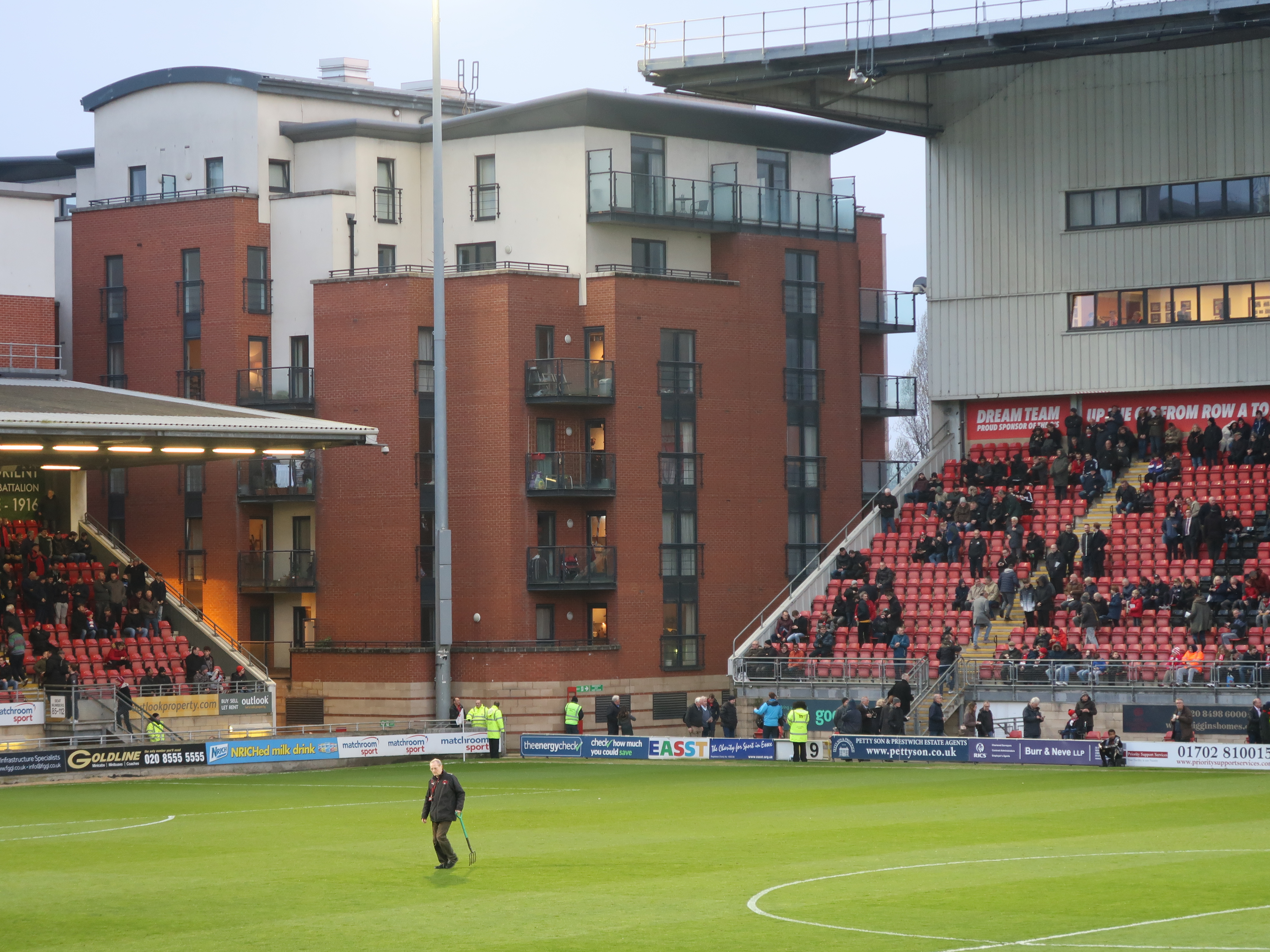
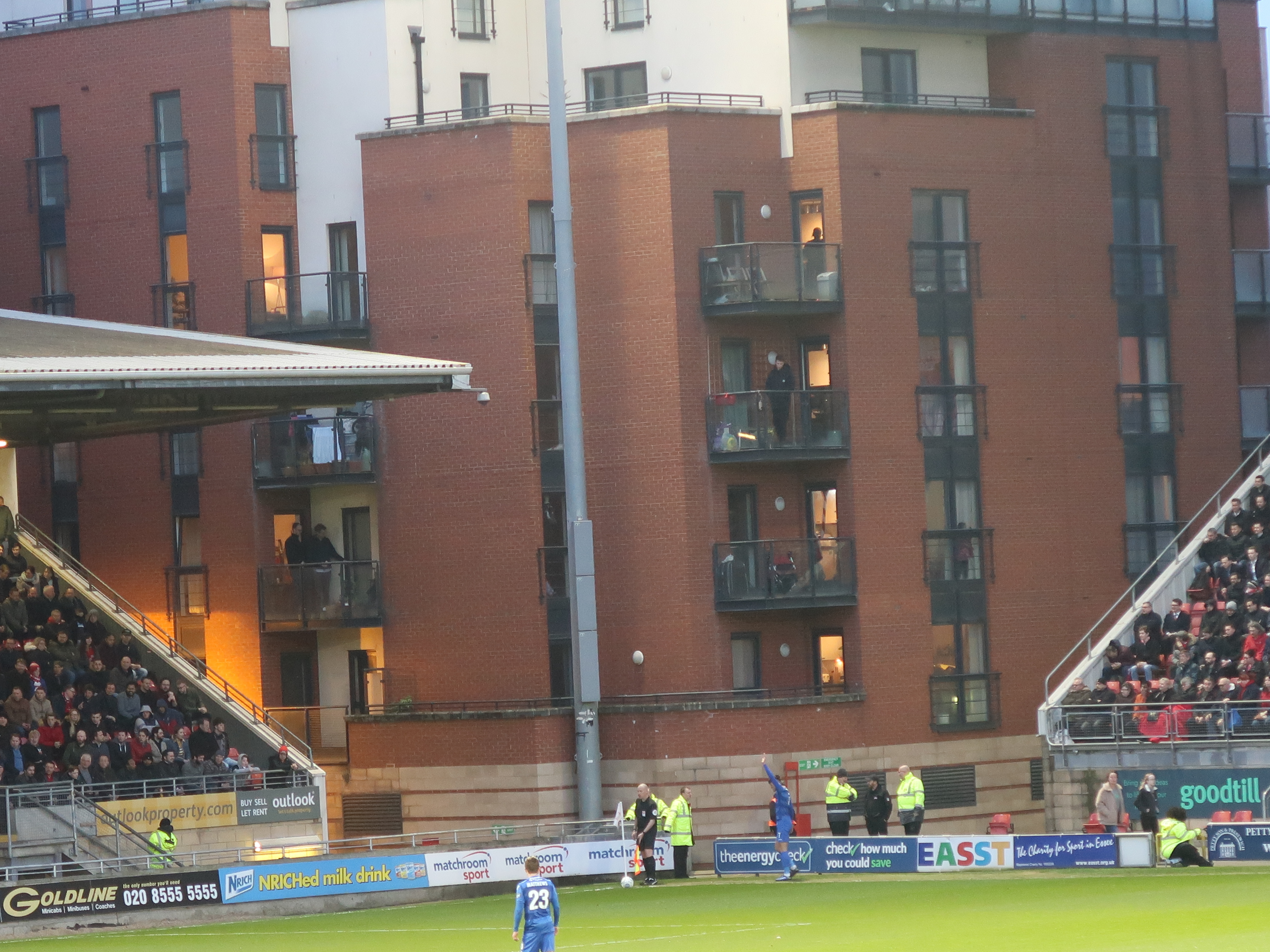 Anyway, the onlooking residents on the balconies somehow rounds off the press gallery at the top of the West Stand with their silhouets matching the journalists. A fascinating effect – I wonder if it was intended.
Anyway, the onlooking residents on the balconies somehow rounds off the press gallery at the top of the West Stand with their silhouets matching the journalists. A fascinating effect – I wonder if it was intended.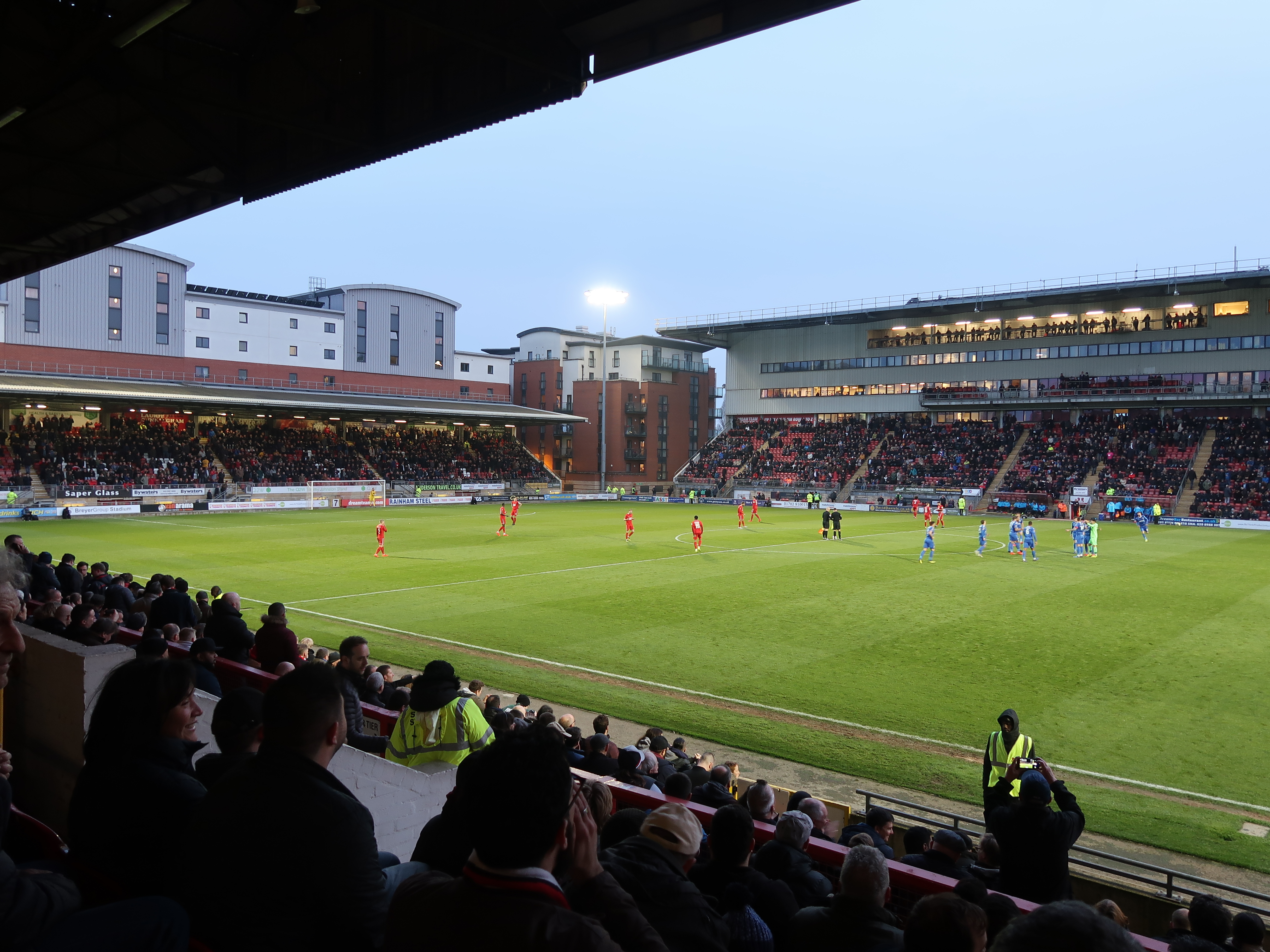
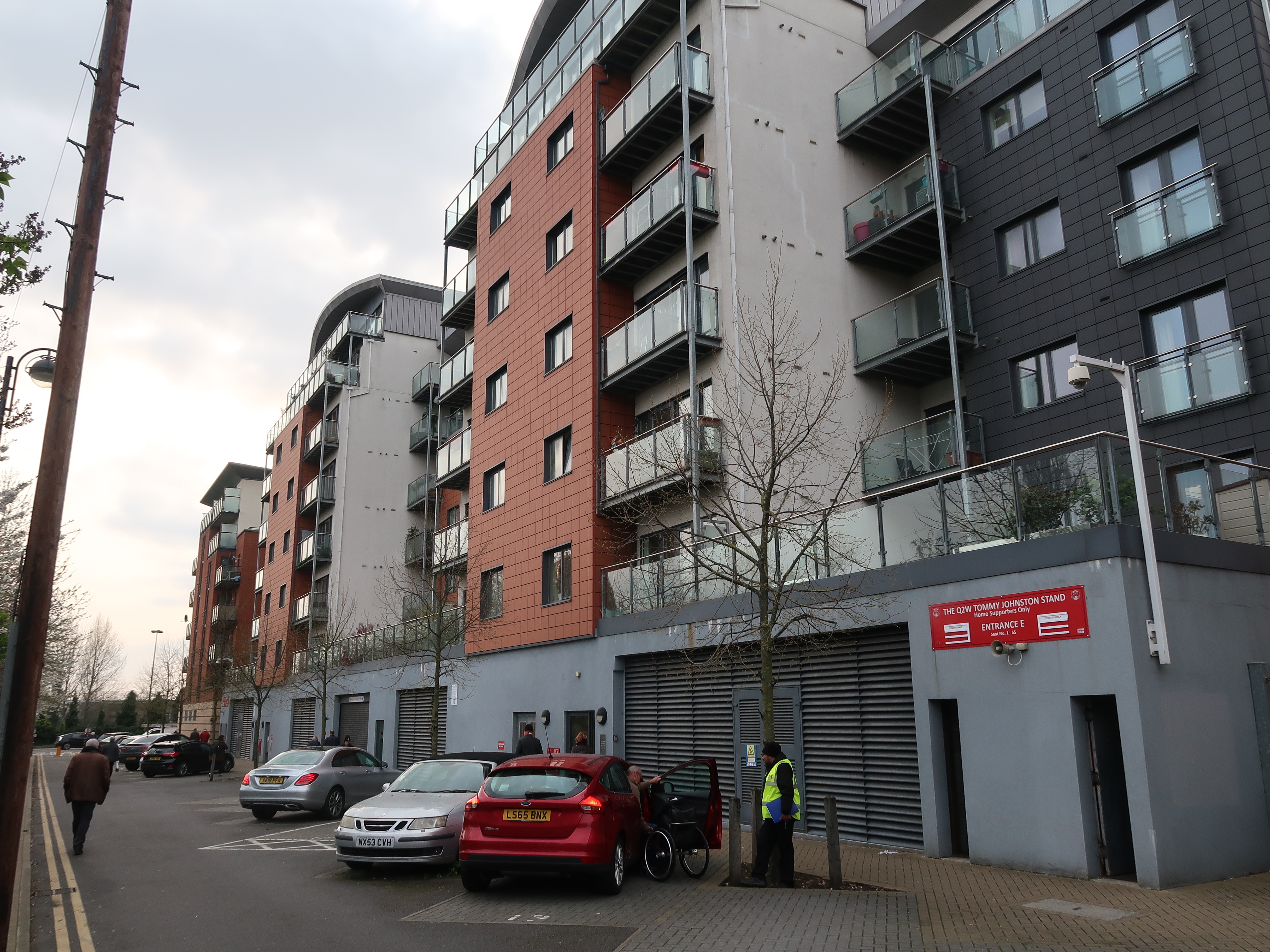

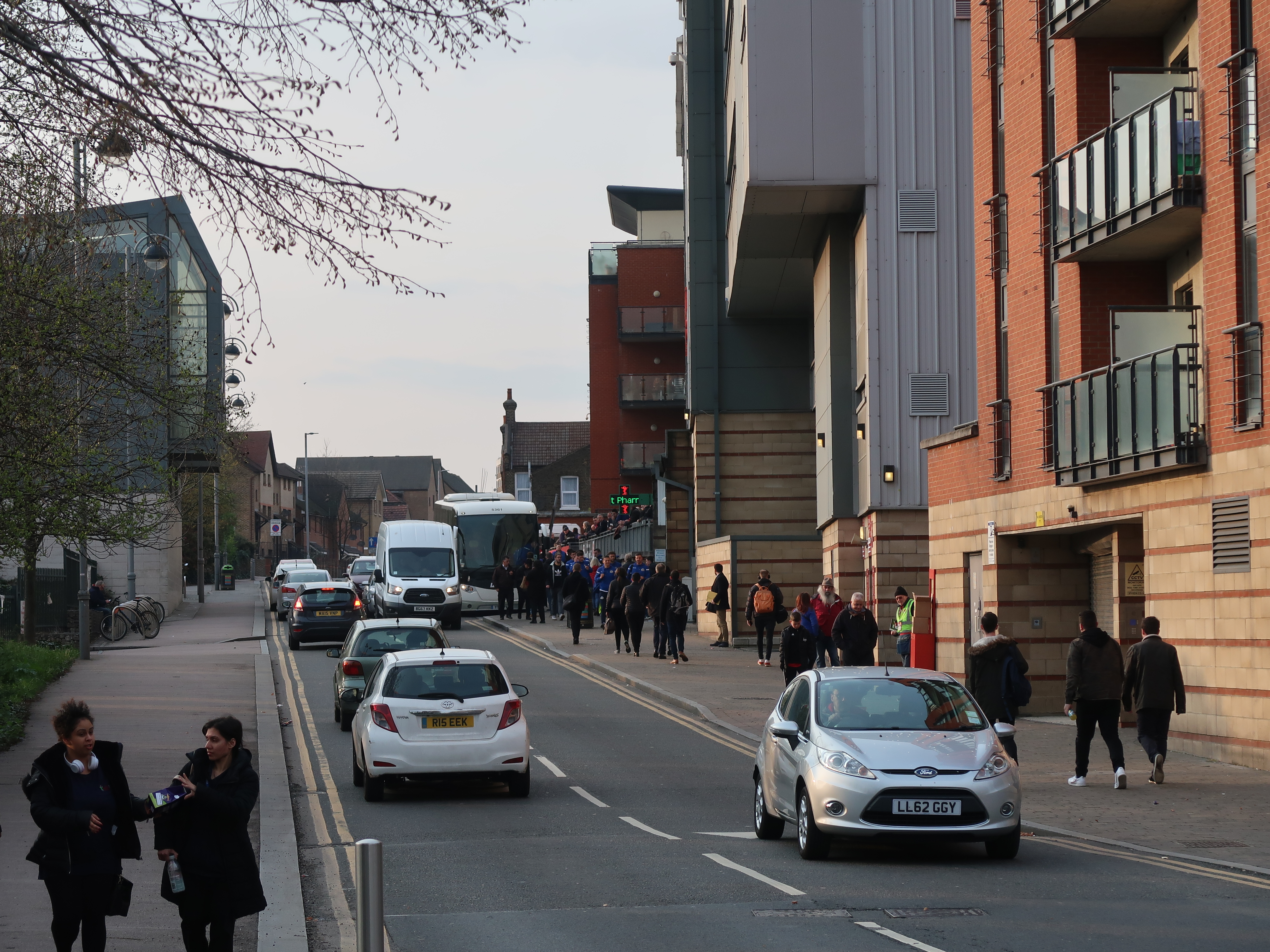

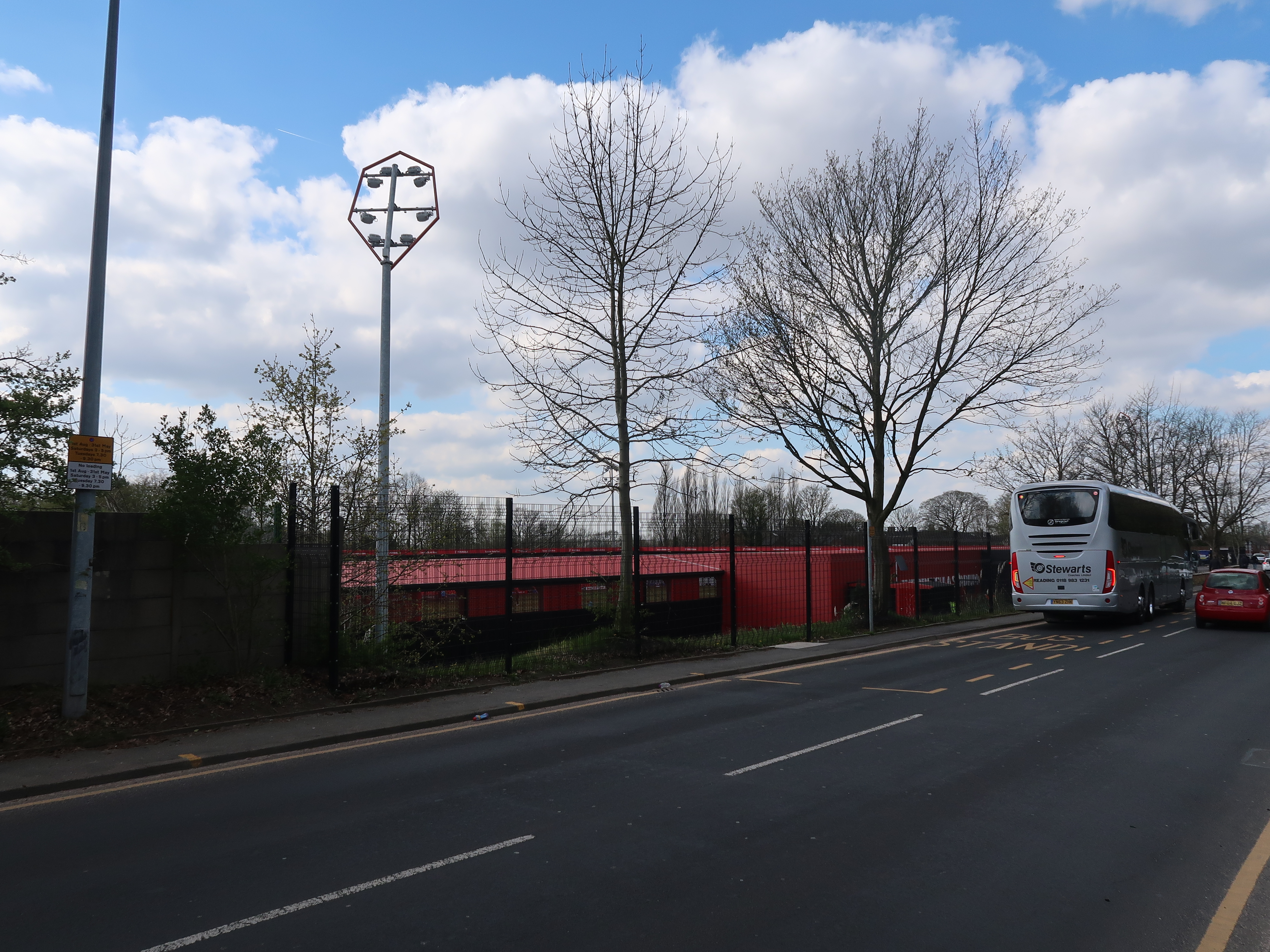 And arriving at the ground, the contrast is even starker. Salford City has been playing here for 40 years, but until the Class of 92′ owners took over five years ago, it was a very basic football ground with a perimeter fence around a Sunday League pitch – with the addition of two small stands opposite each other by the centre line. The capacity was just over 1.000. But as part of the project of taking Salford City into the football league by 2020, the new owners have built a brand new stadium around the pitch. It was all done in 10 months – raising the capacity of the ground to just over 5.000.
And arriving at the ground, the contrast is even starker. Salford City has been playing here for 40 years, but until the Class of 92′ owners took over five years ago, it was a very basic football ground with a perimeter fence around a Sunday League pitch – with the addition of two small stands opposite each other by the centre line. The capacity was just over 1.000. But as part of the project of taking Salford City into the football league by 2020, the new owners have built a brand new stadium around the pitch. It was all done in 10 months – raising the capacity of the ground to just over 5.000.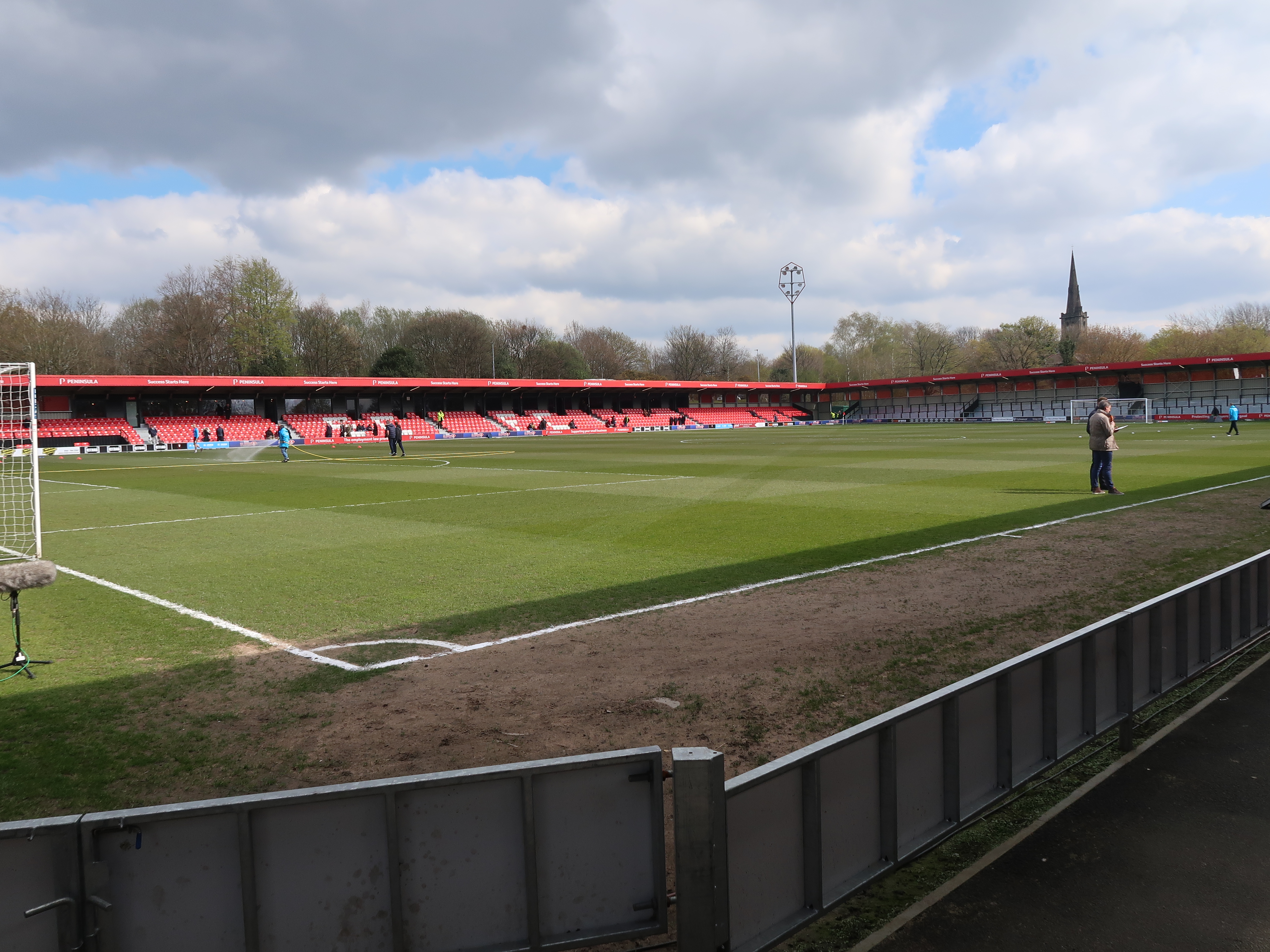
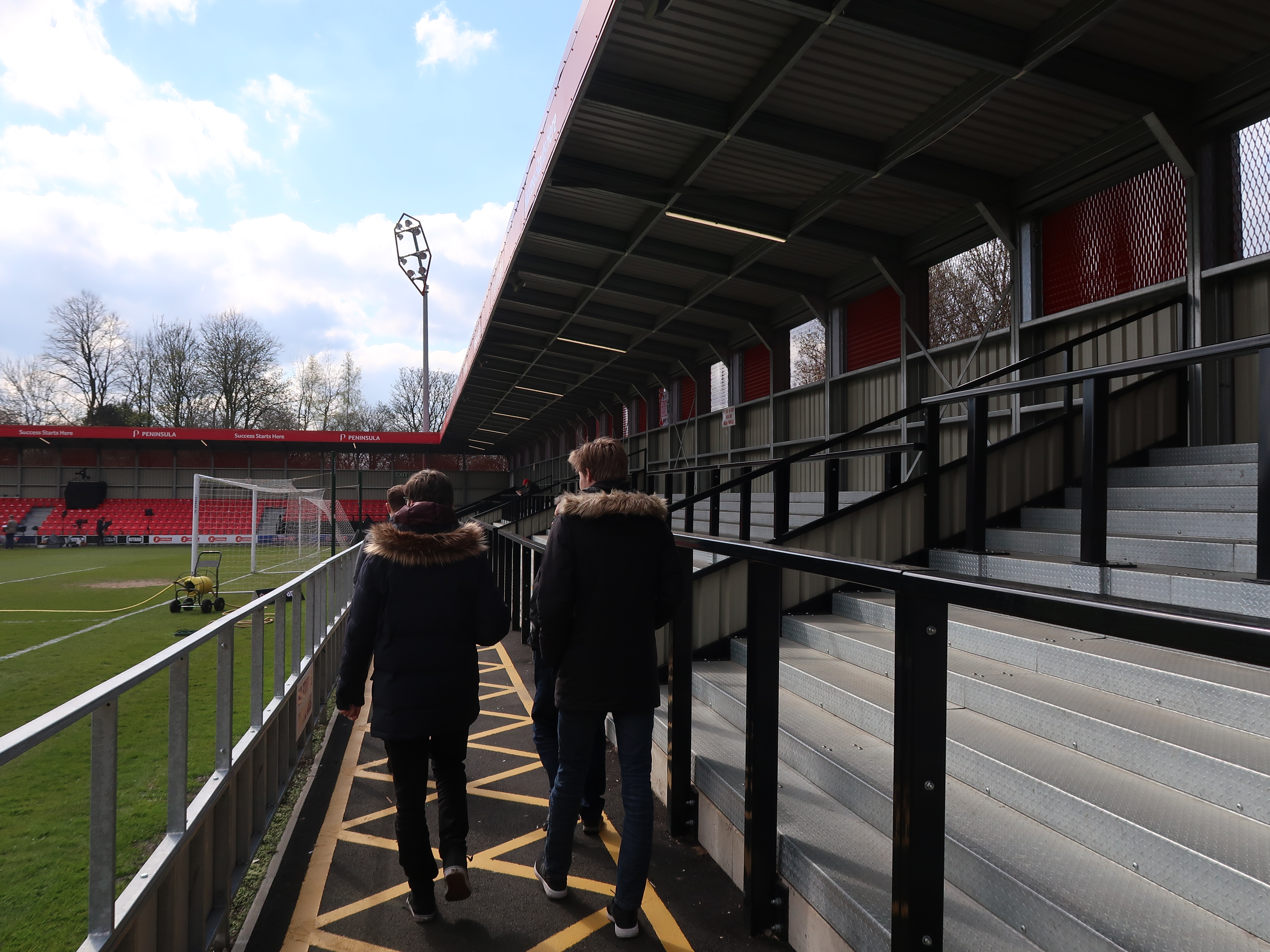


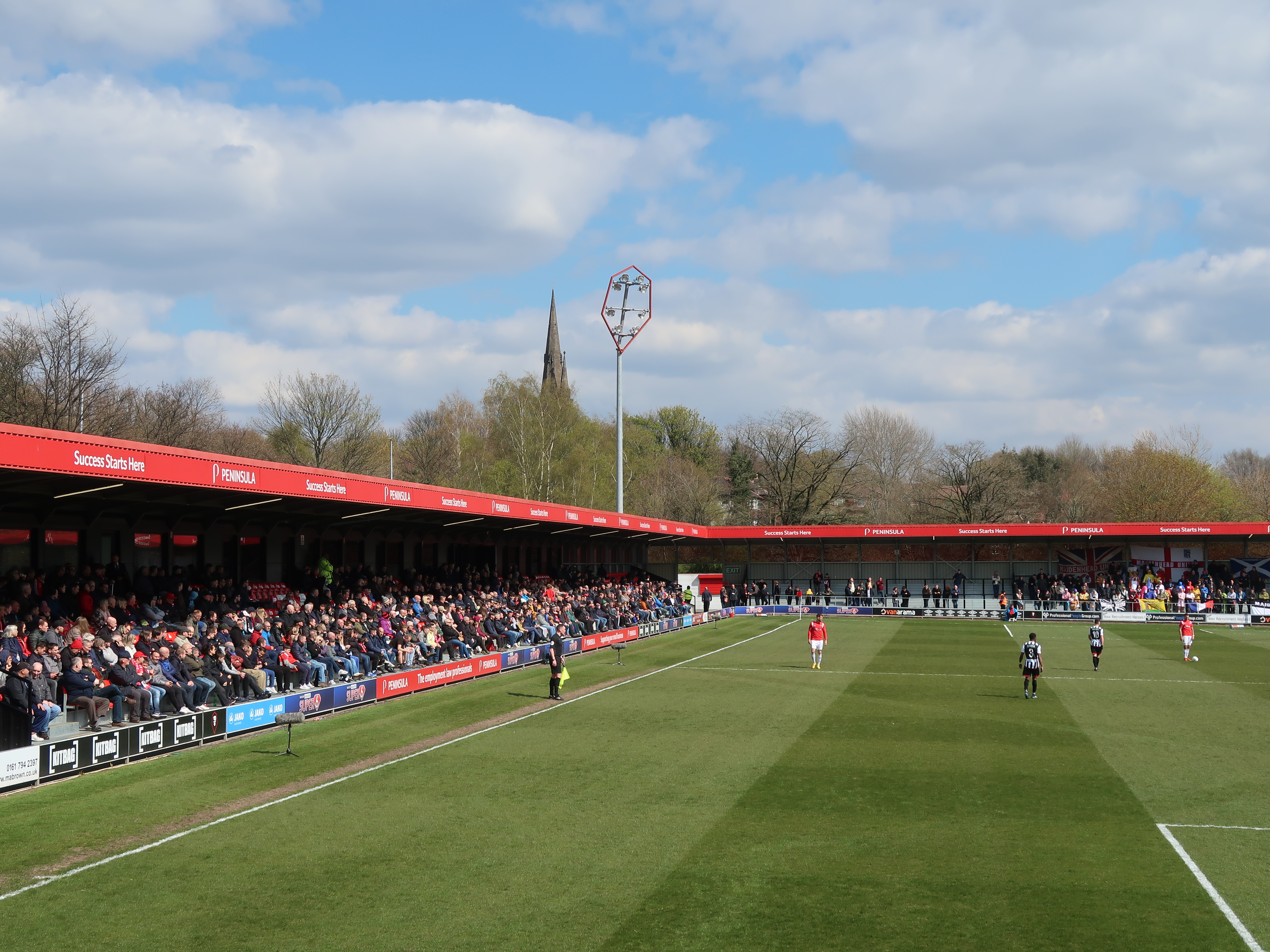

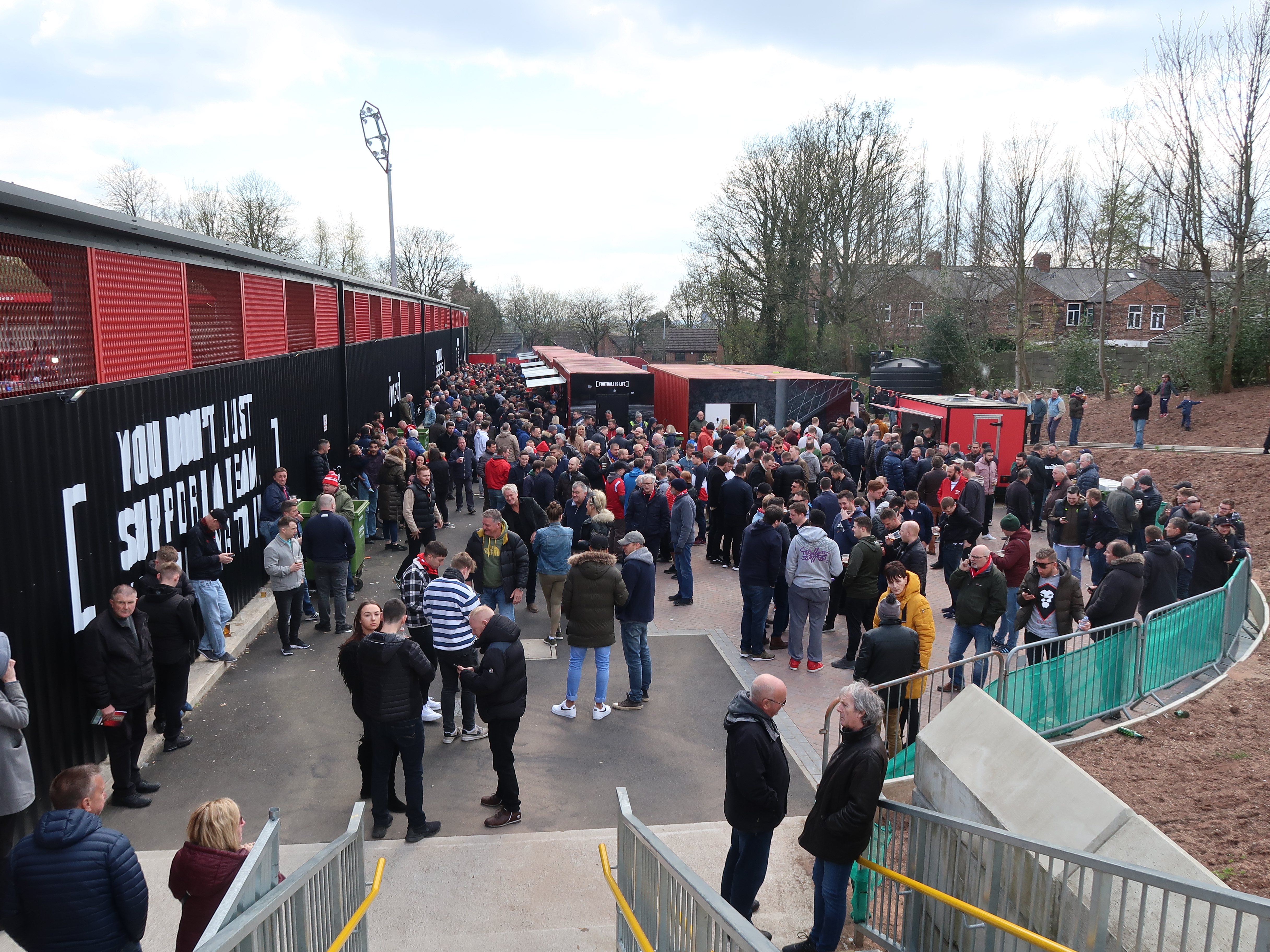

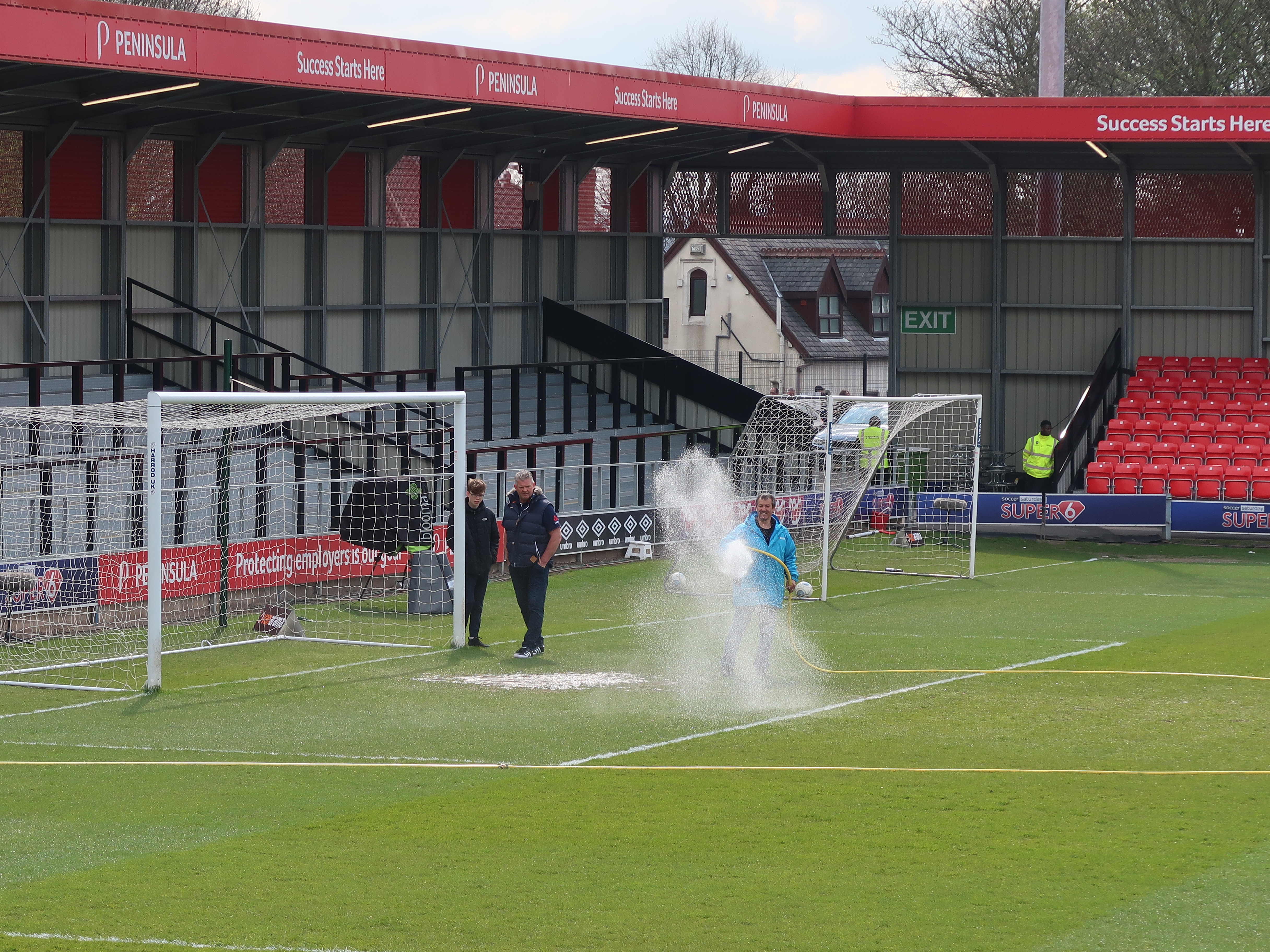

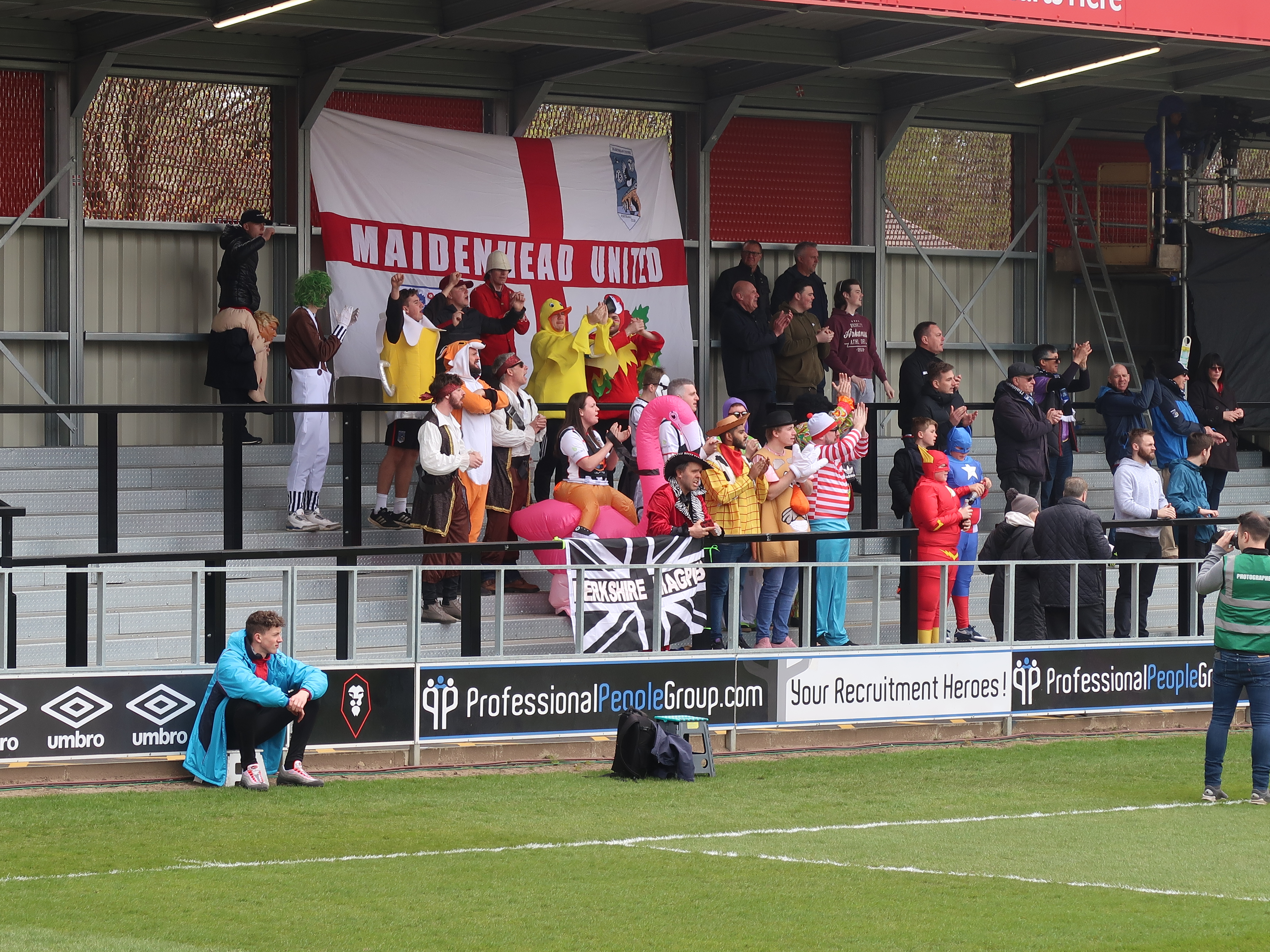


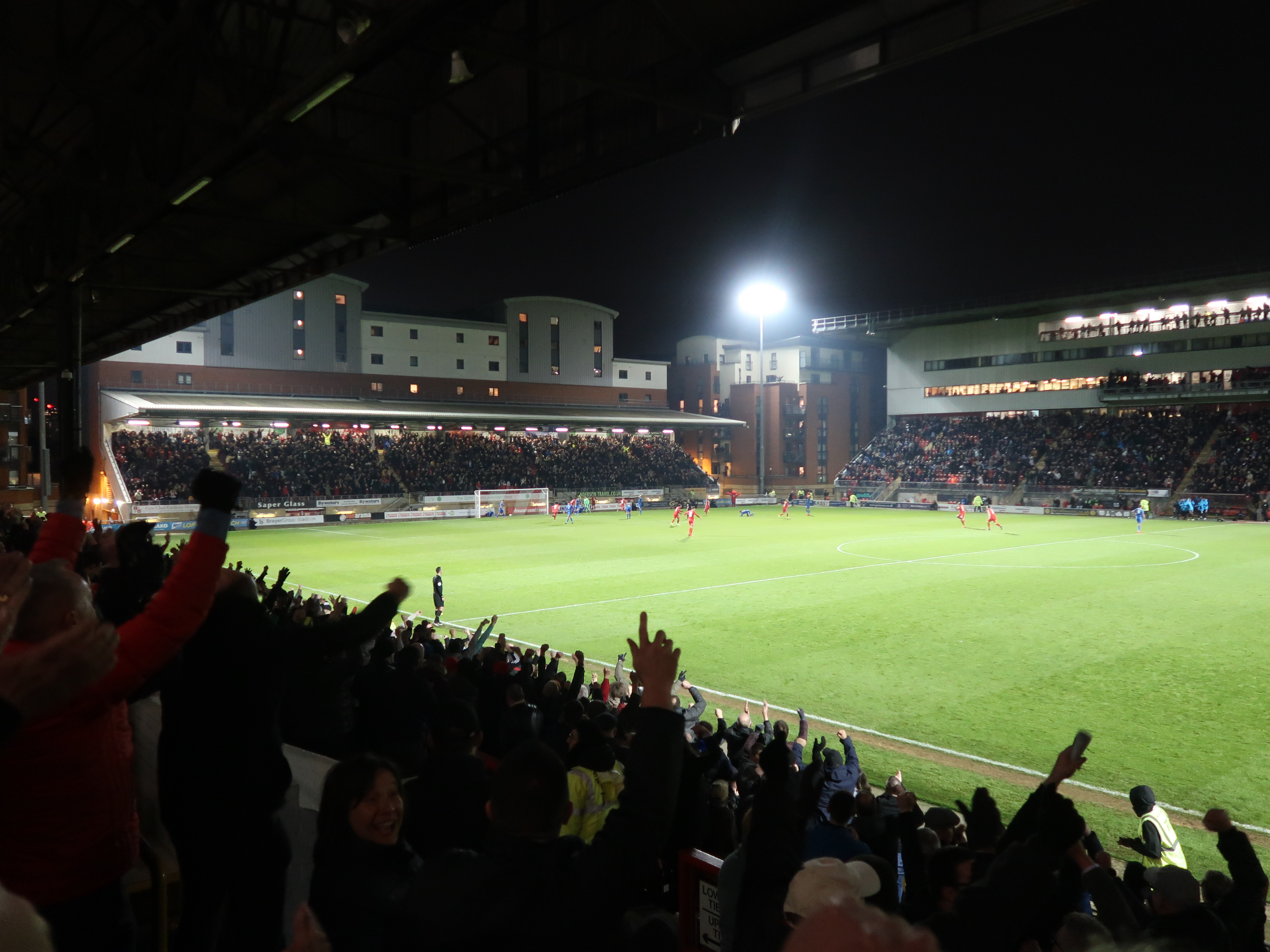
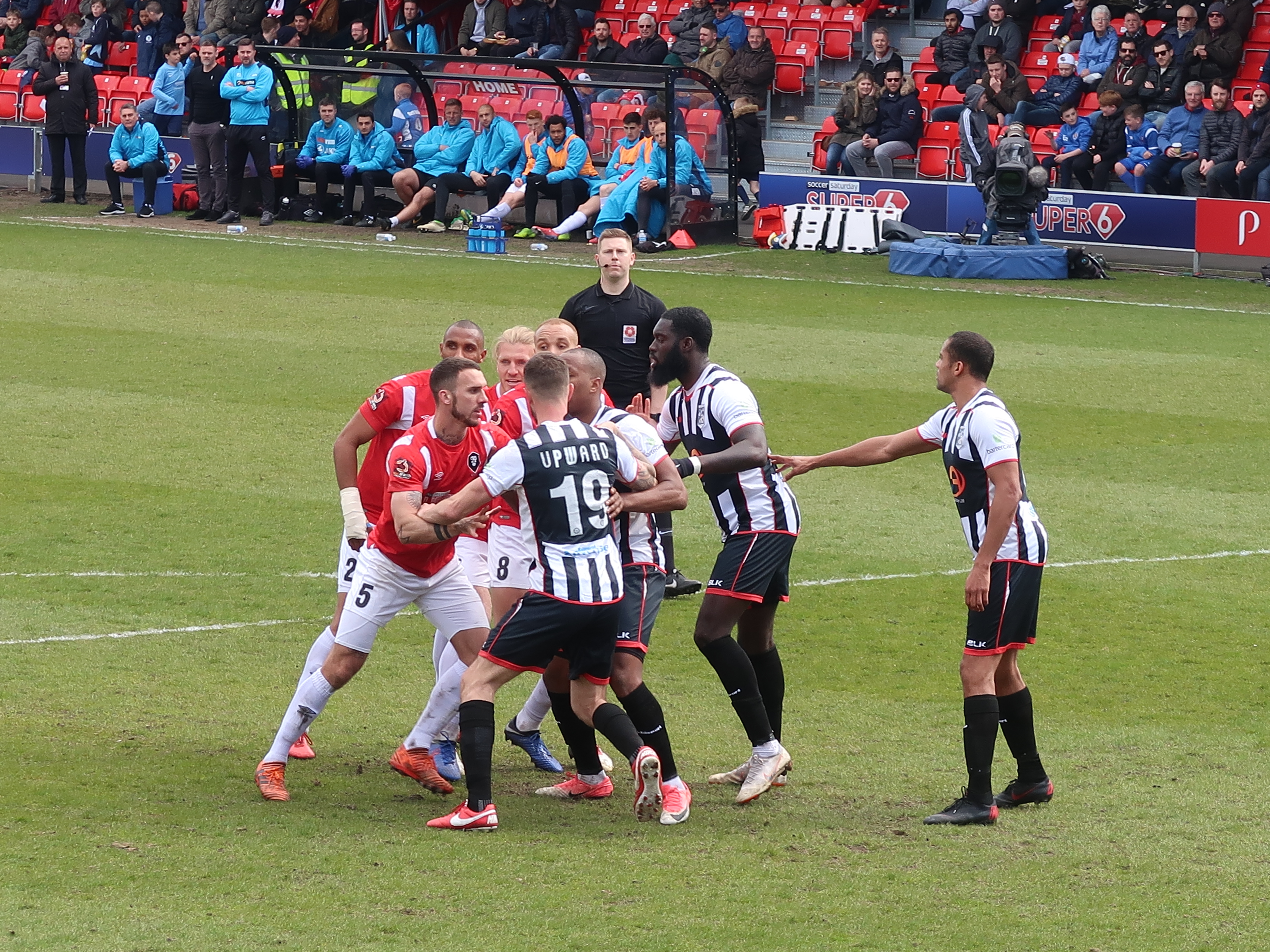 The match at Salford is the opposite. It is quite scrappy, littered with technical mistakes and plenty of long balls just being whacked forward. Maybe the pitch doesn’t help. Salford capitalize on two technical mistakes by Maidenhead to break and score within the first half hour. Still, they don’t play very well. But on the stroke of halftime they go 3-0 up from a penalty after some chaotic defending of a corner. Nothing much happens in the second half. There is nothing for the fans to get excited about, except some pushing and showing at set-pieces.
The match at Salford is the opposite. It is quite scrappy, littered with technical mistakes and plenty of long balls just being whacked forward. Maybe the pitch doesn’t help. Salford capitalize on two technical mistakes by Maidenhead to break and score within the first half hour. Still, they don’t play very well. But on the stroke of halftime they go 3-0 up from a penalty after some chaotic defending of a corner. Nothing much happens in the second half. There is nothing for the fans to get excited about, except some pushing and showing at set-pieces.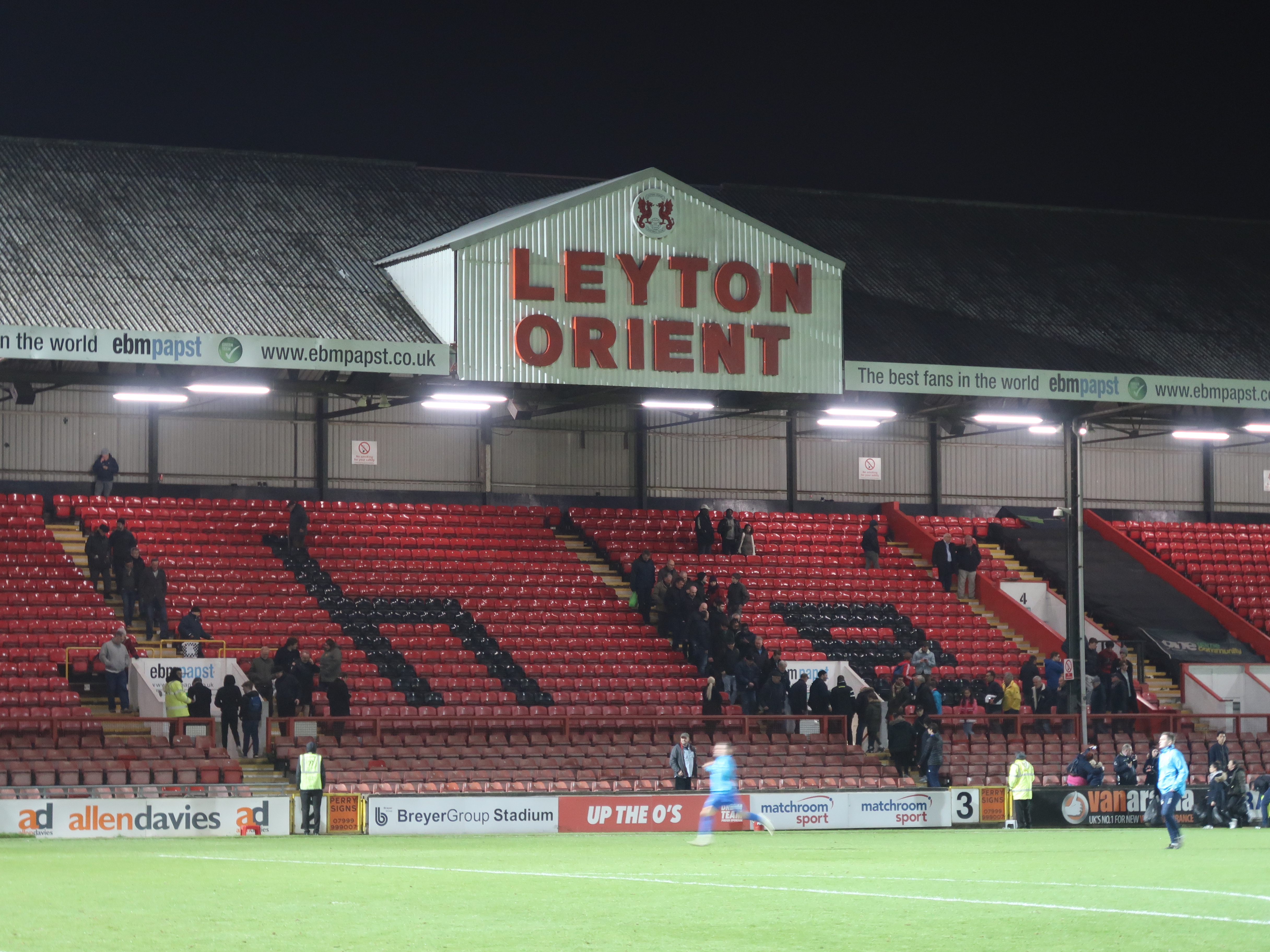


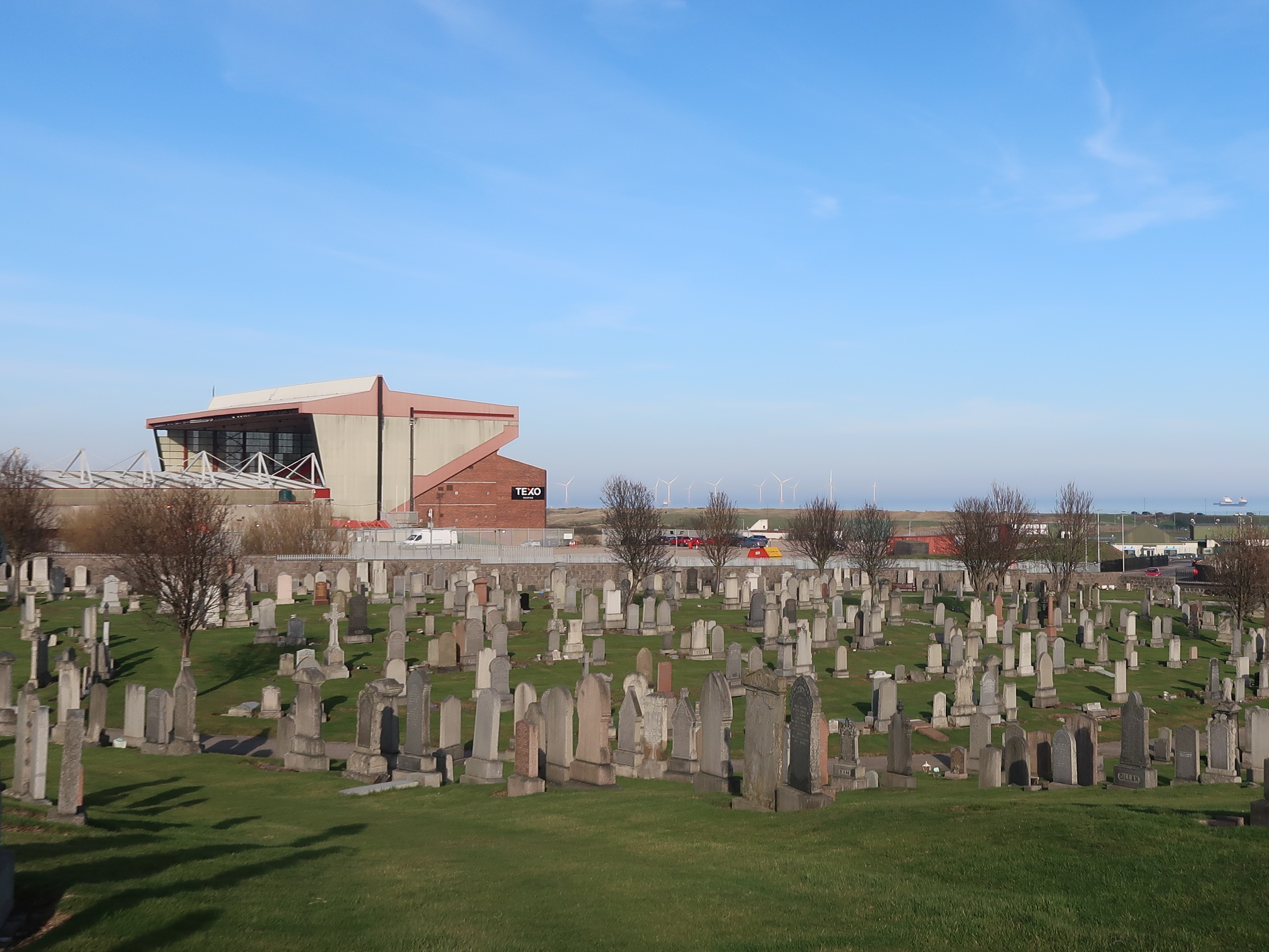


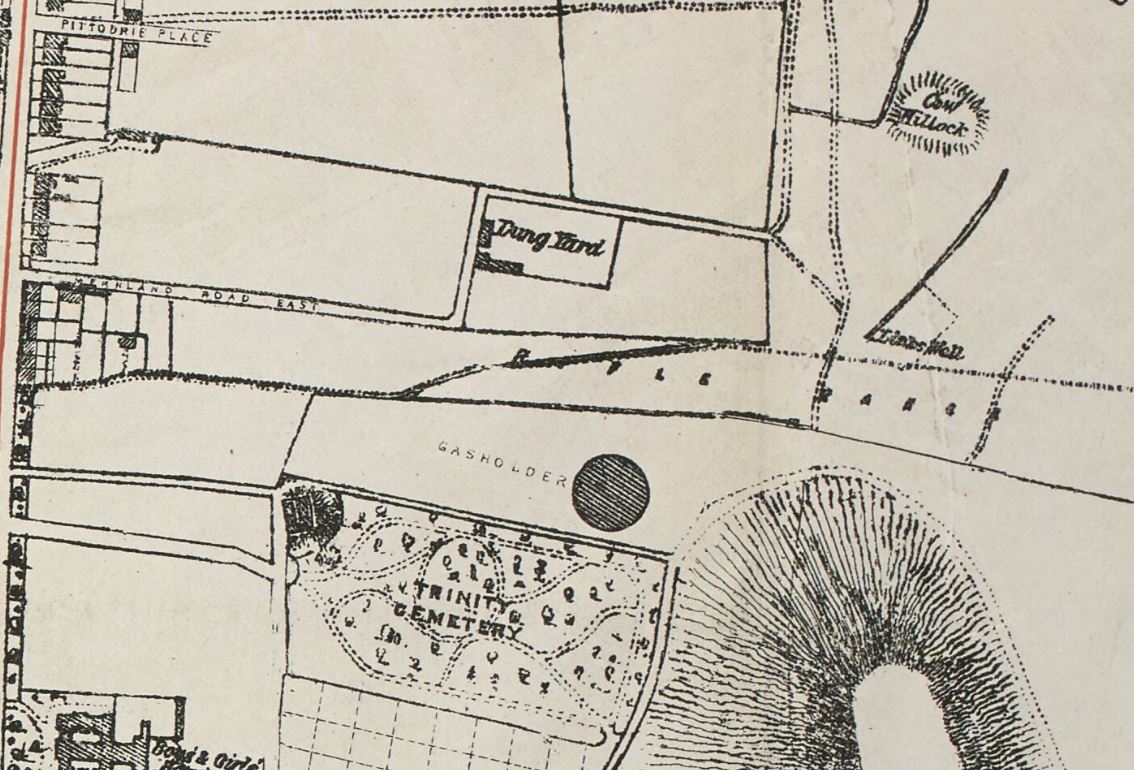
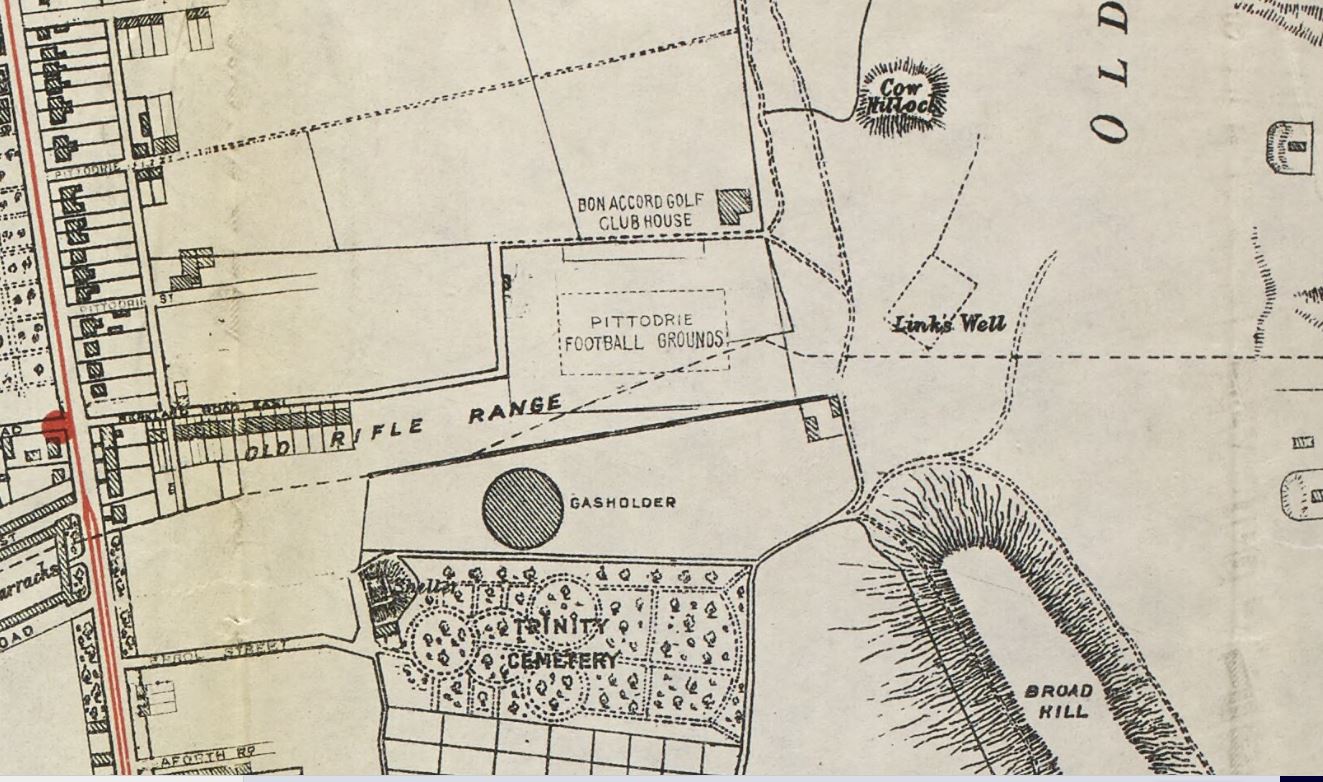
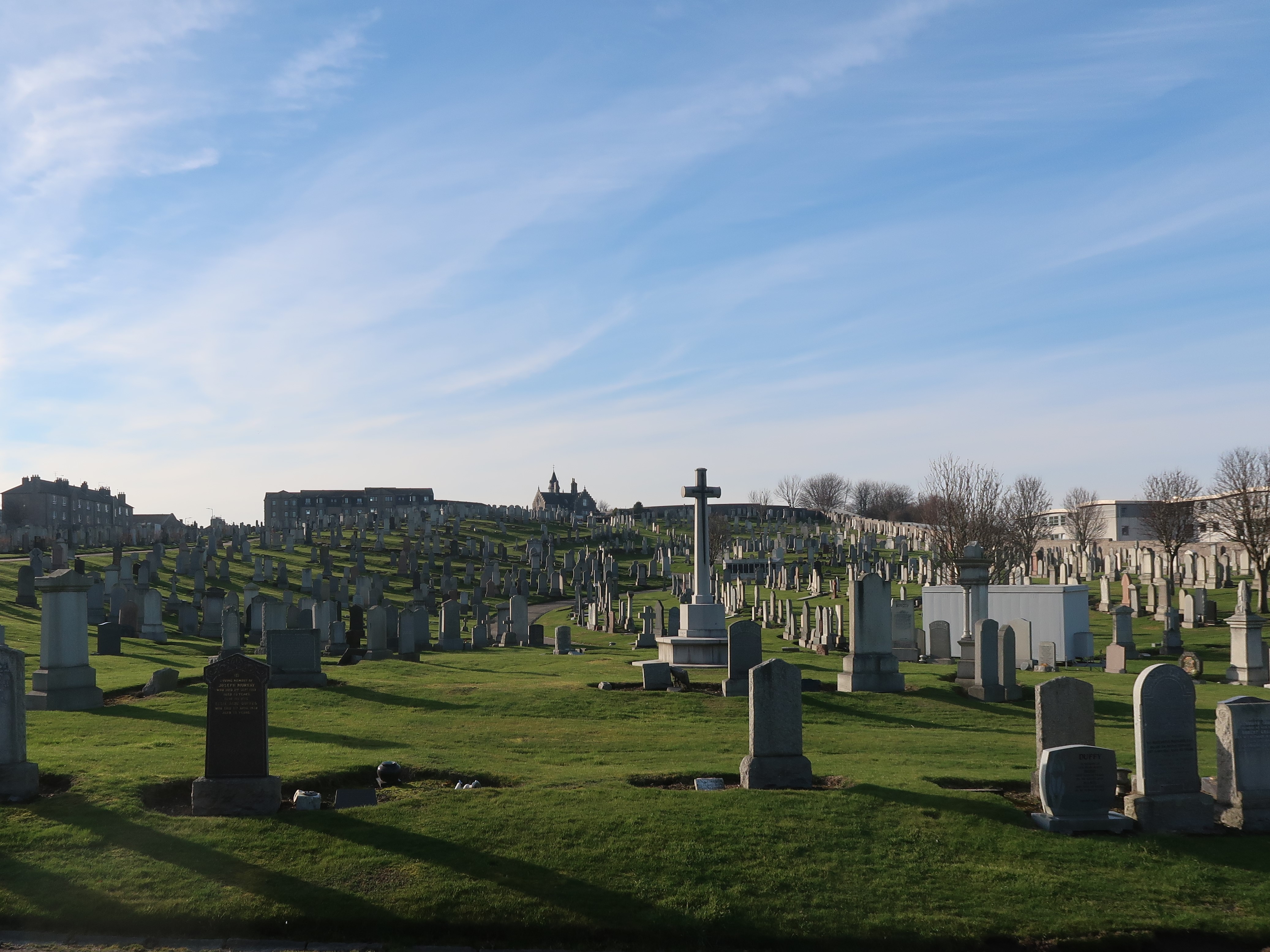
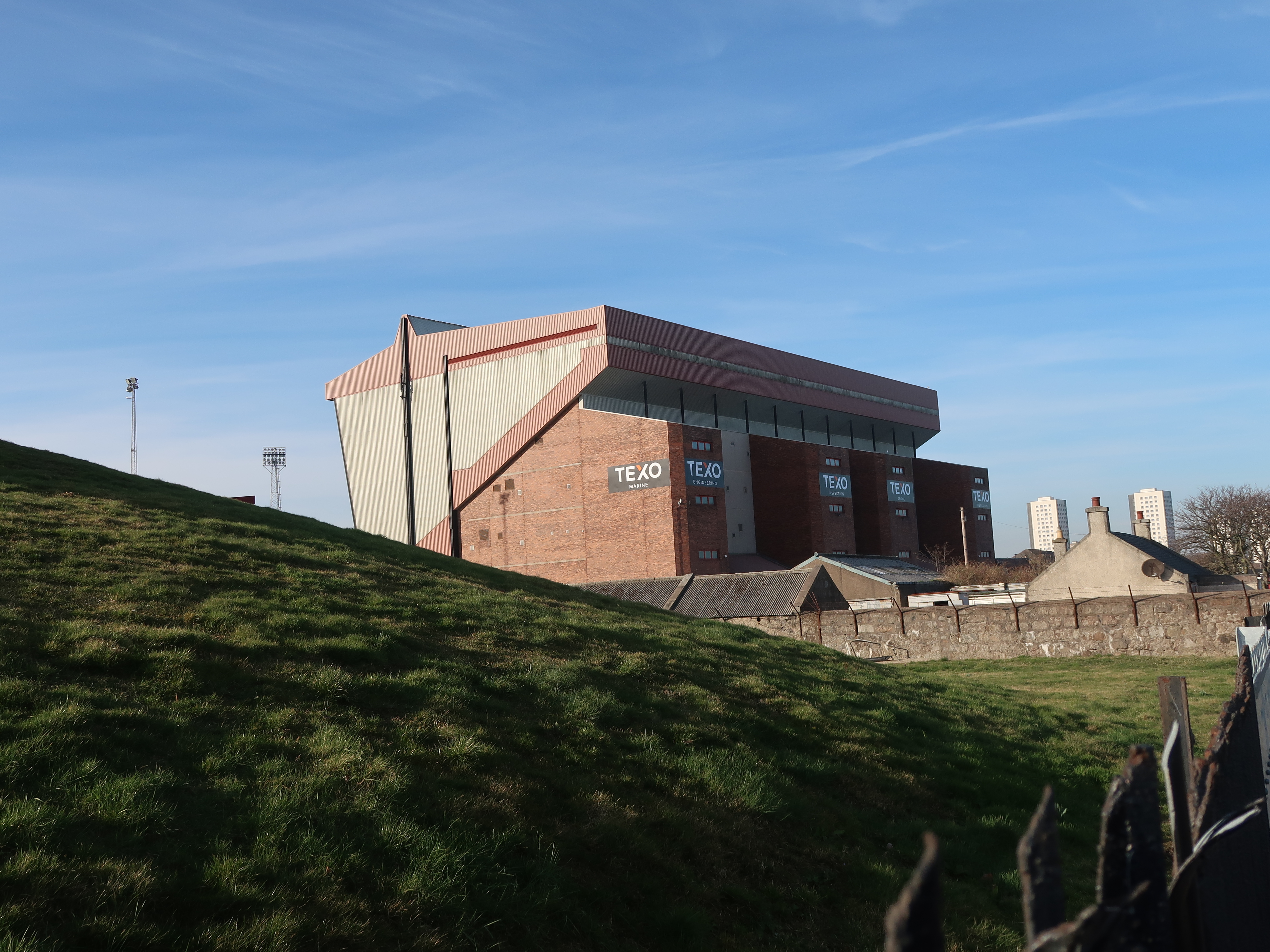
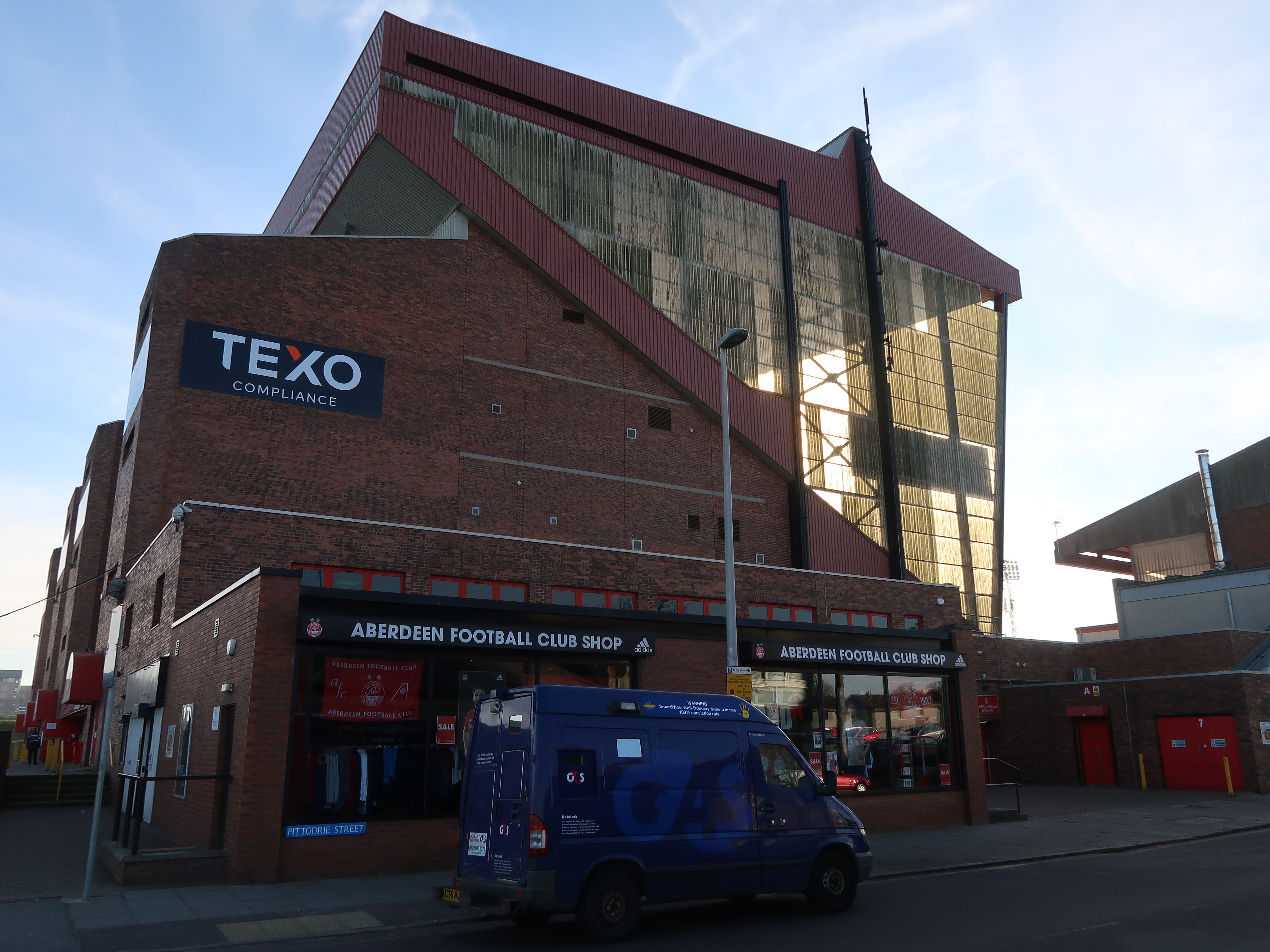
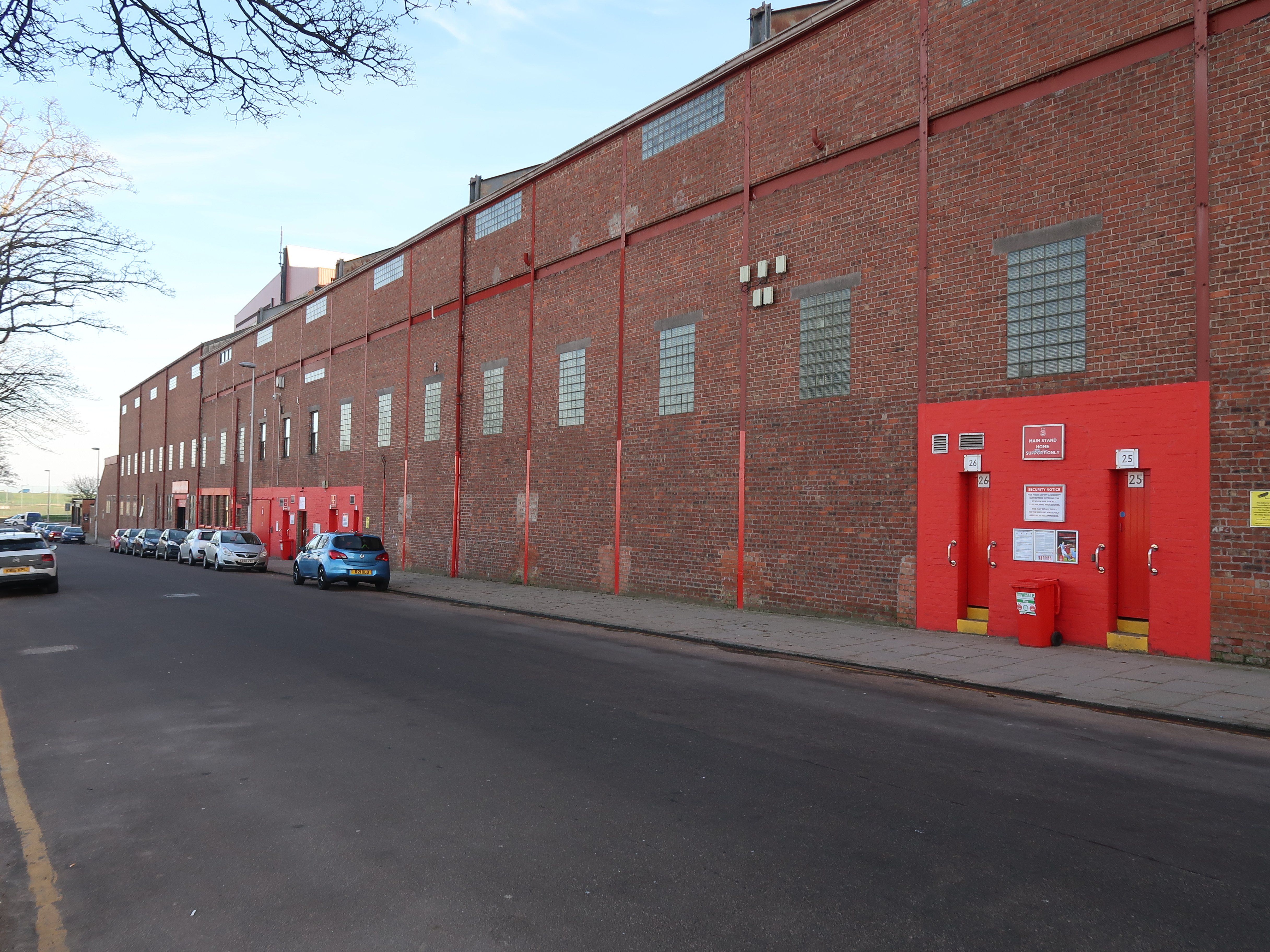
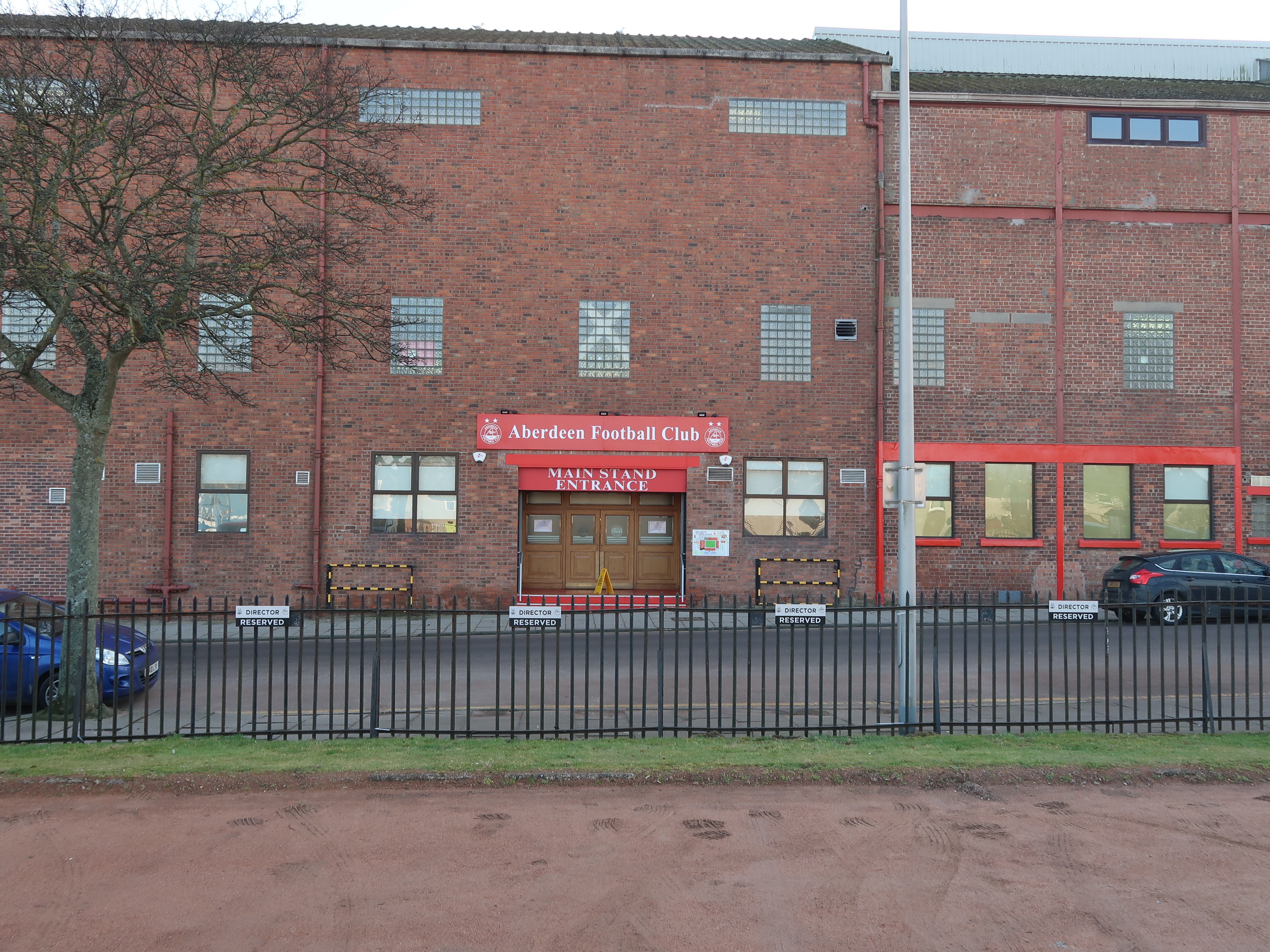

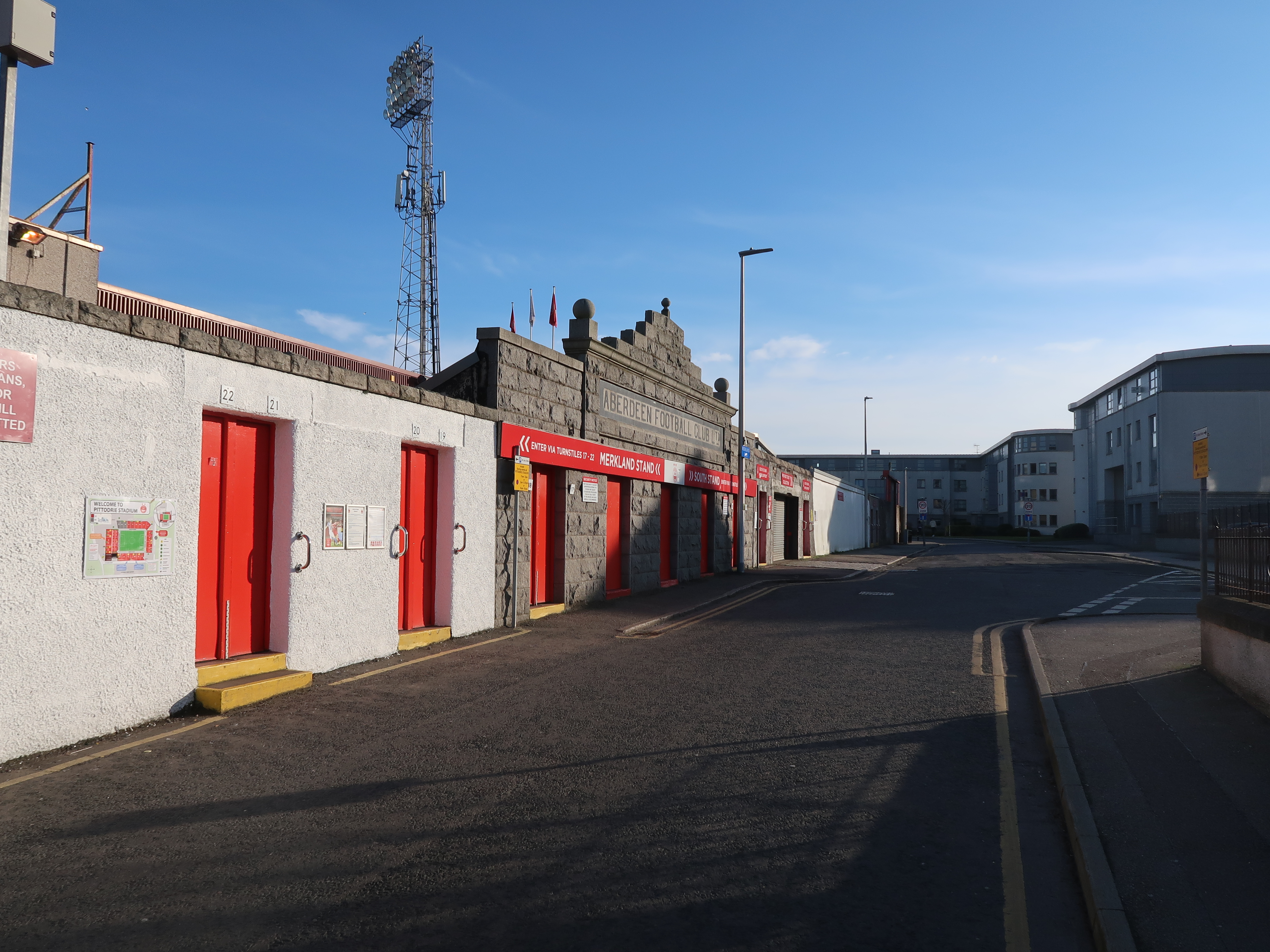
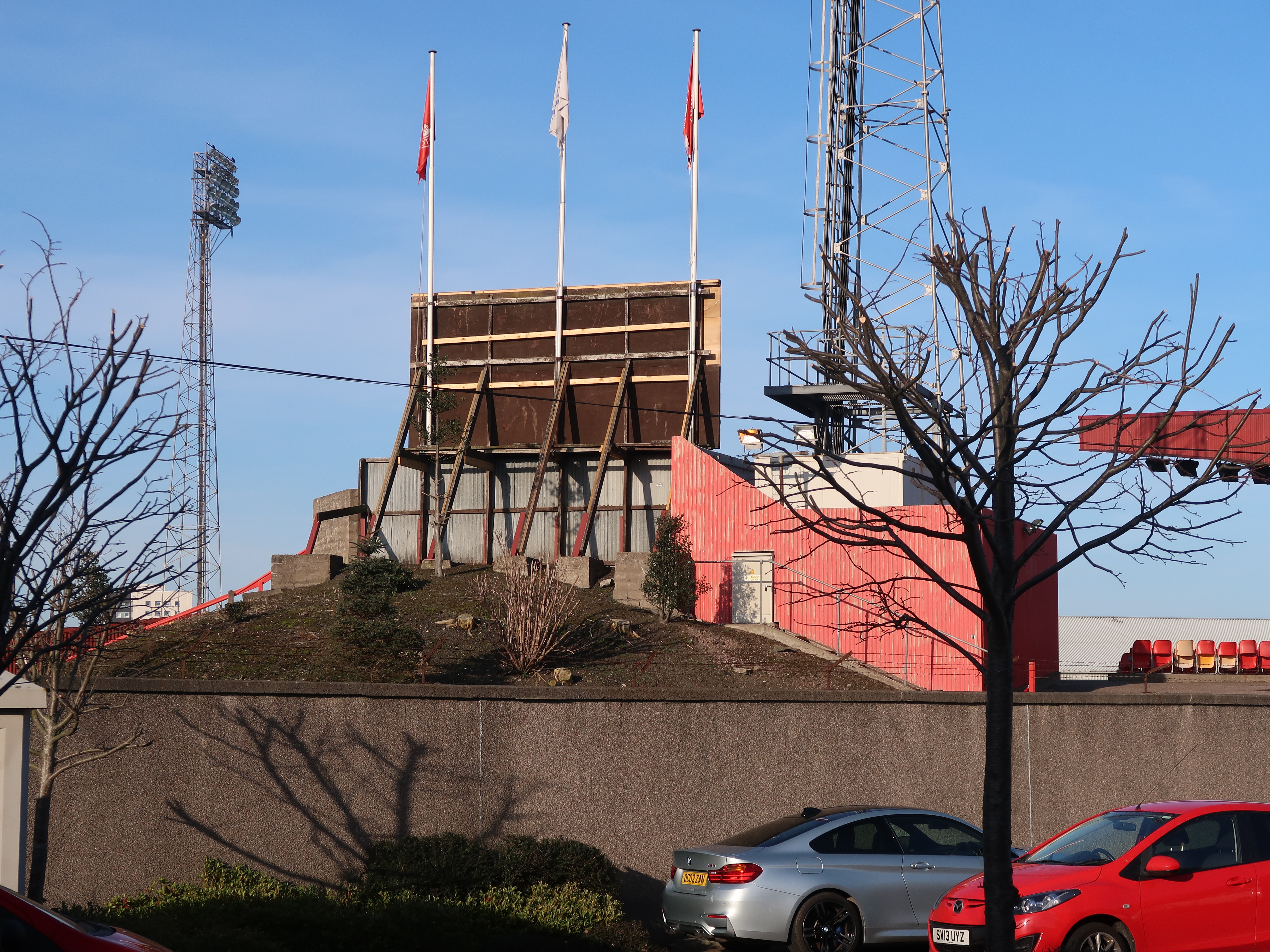
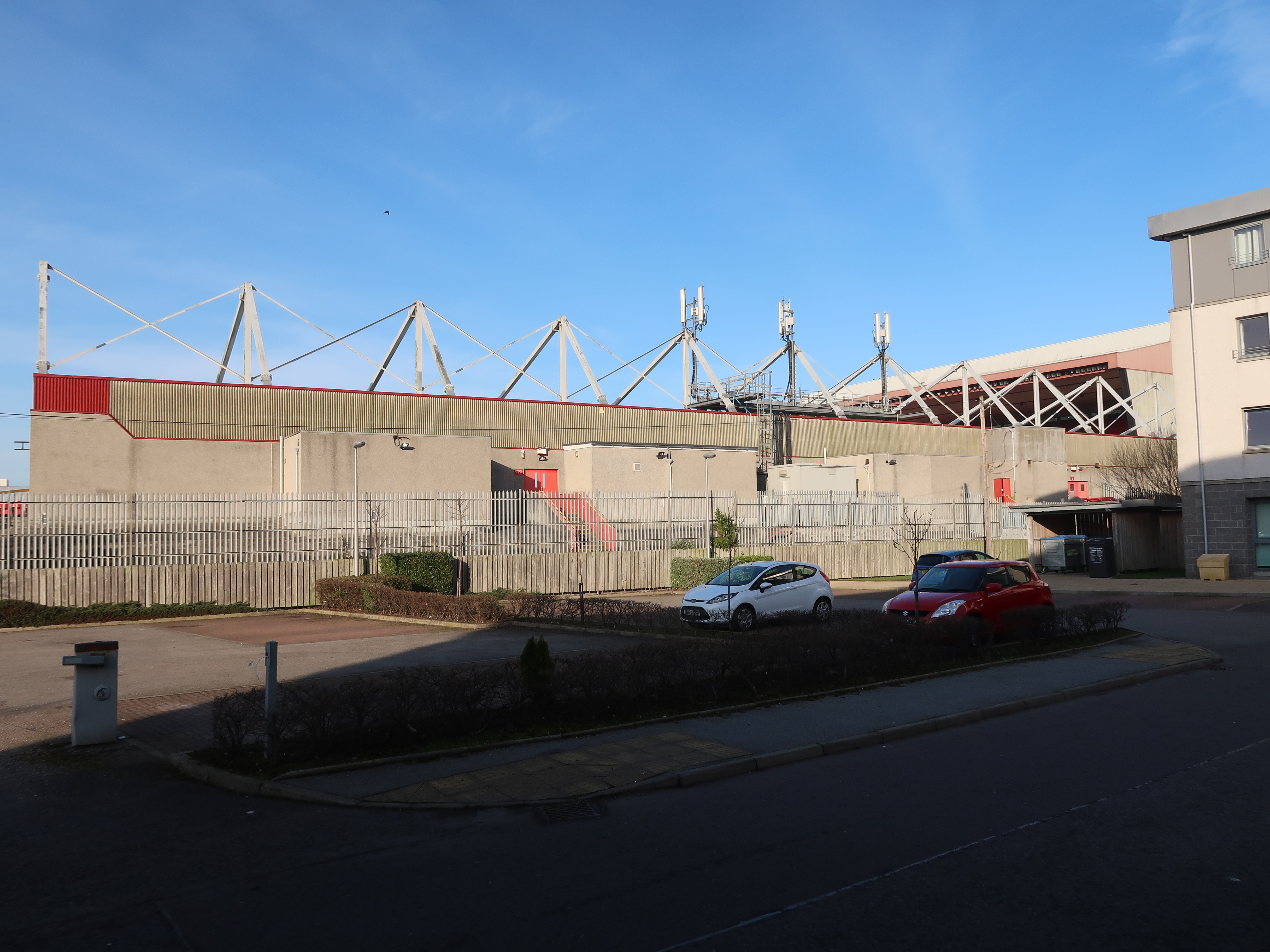
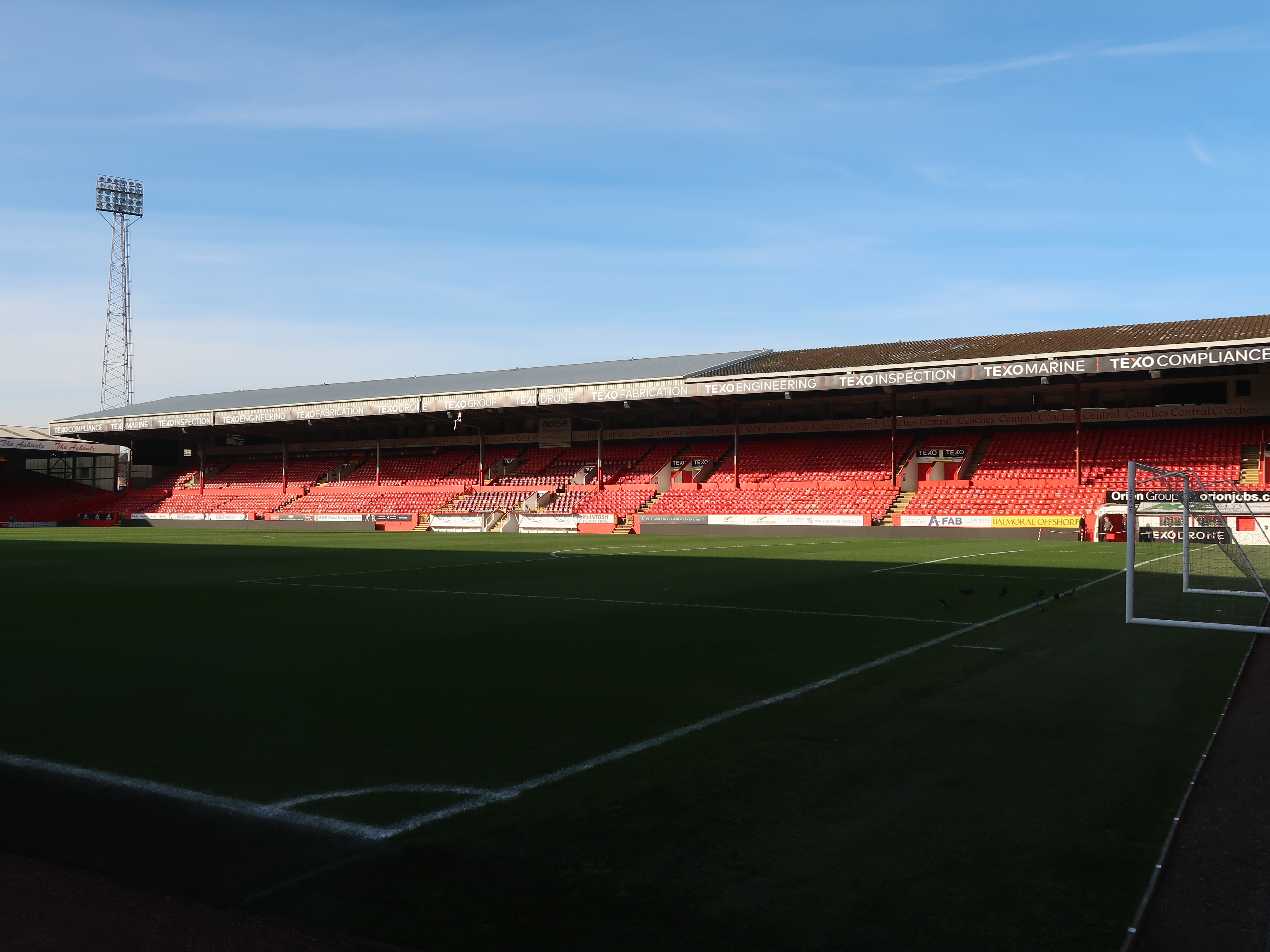
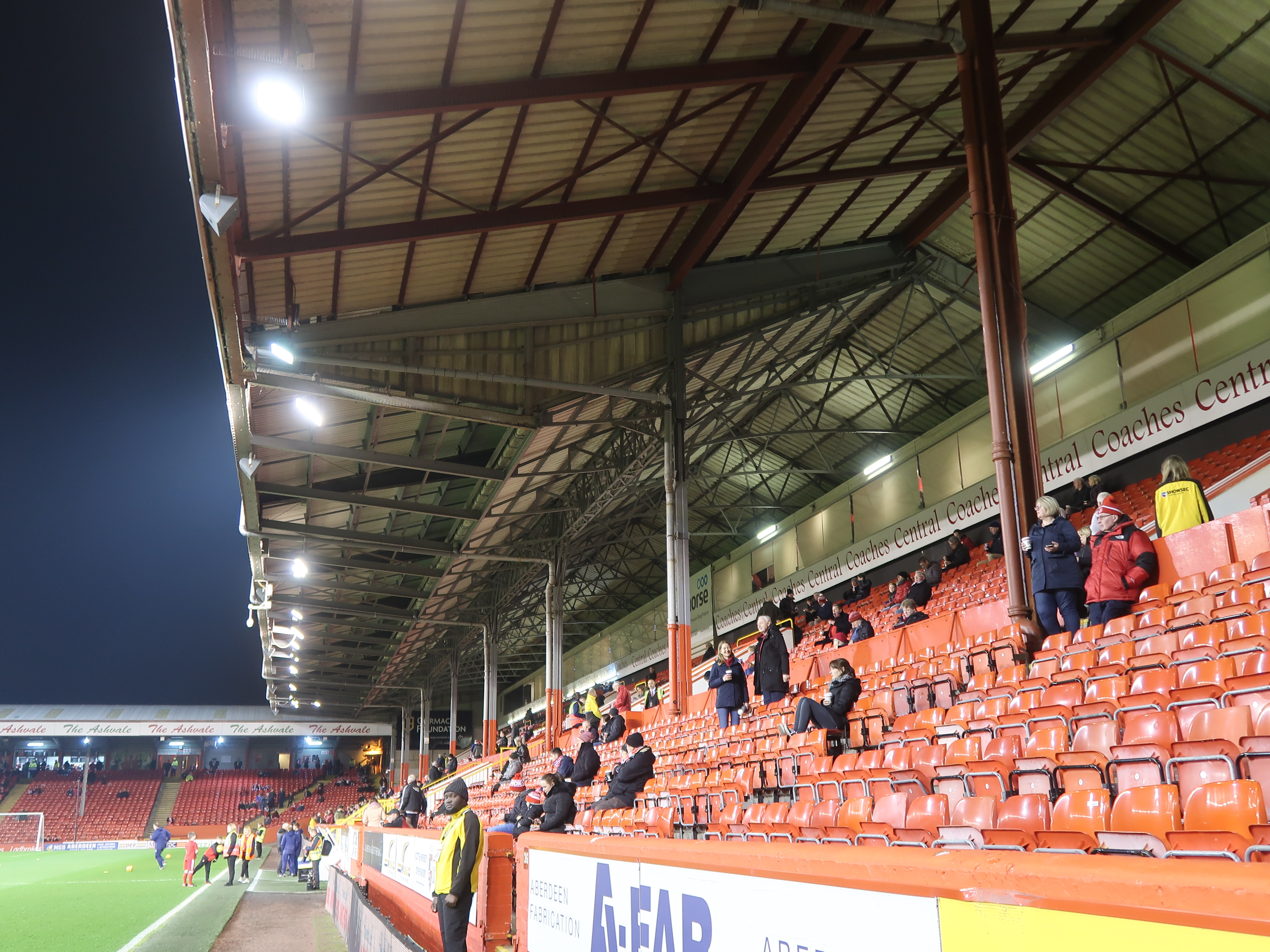
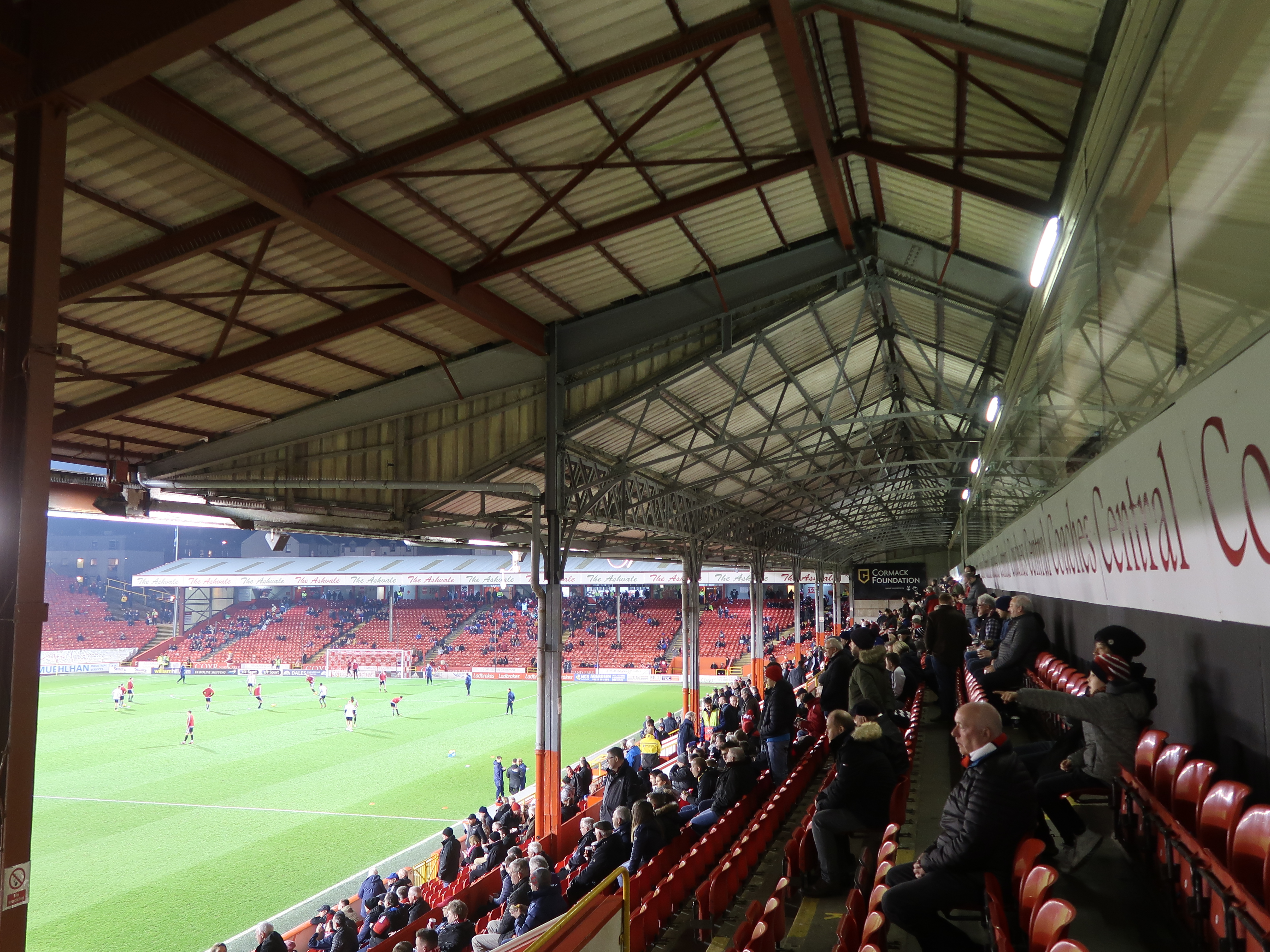
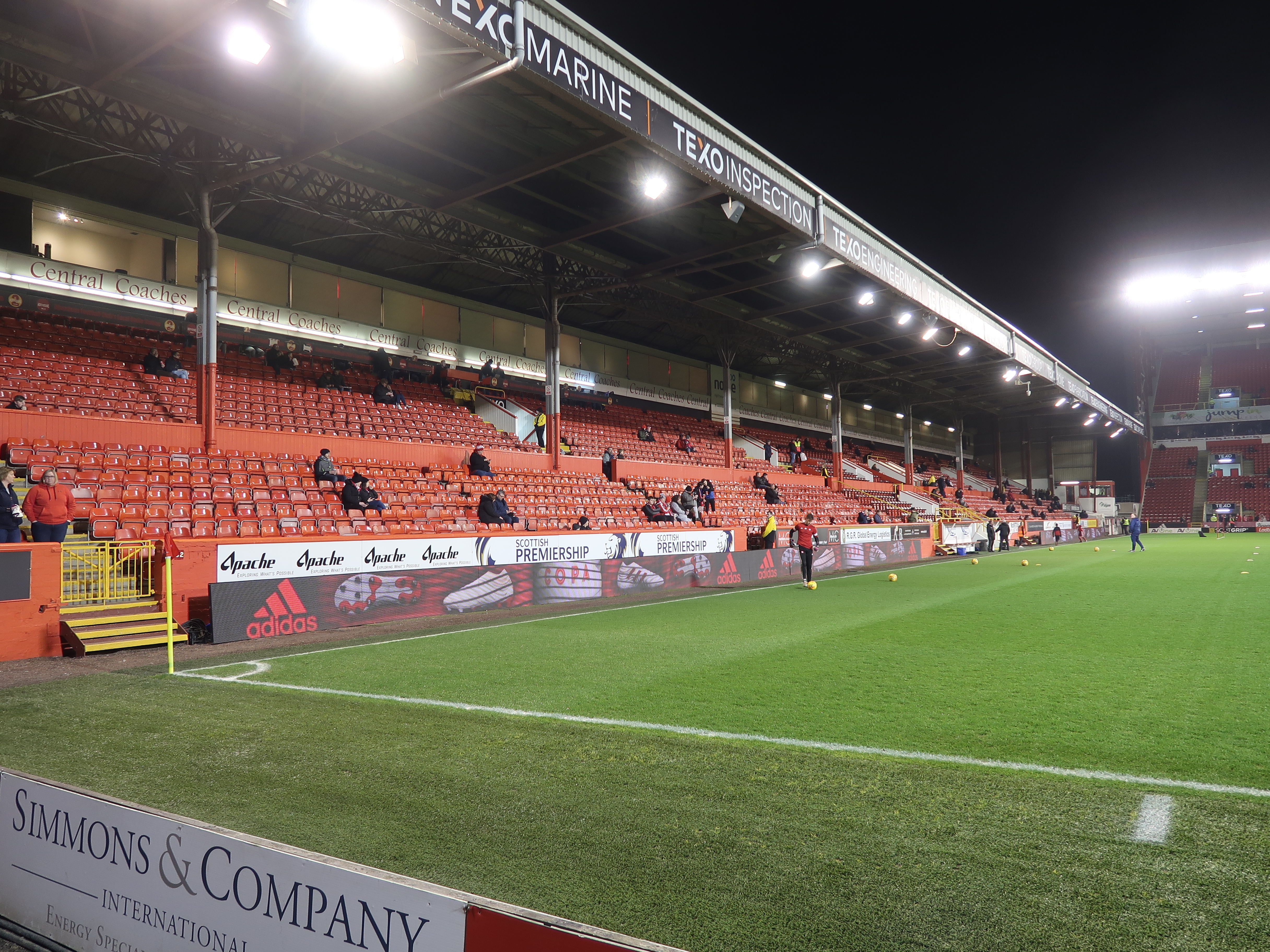
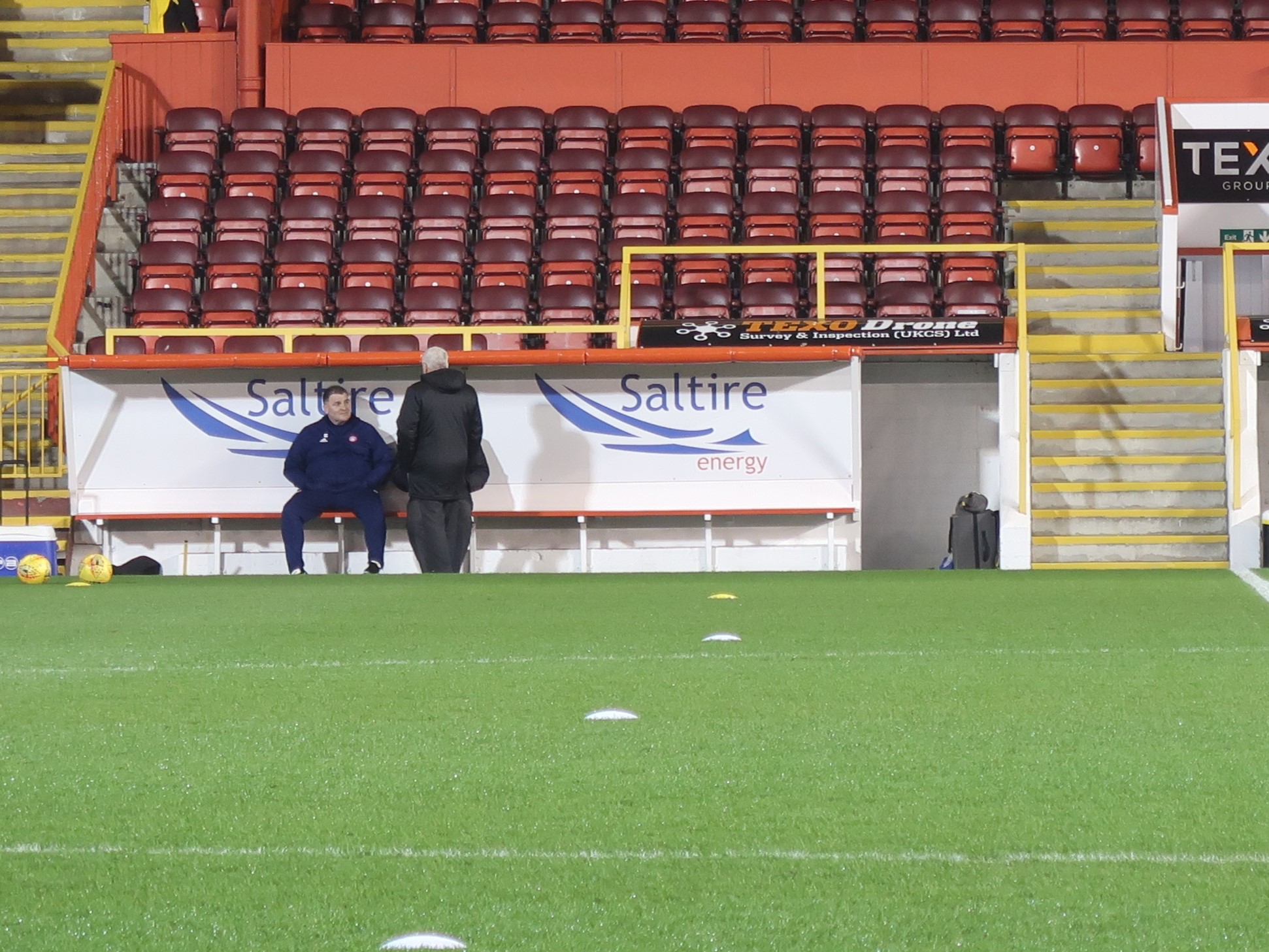
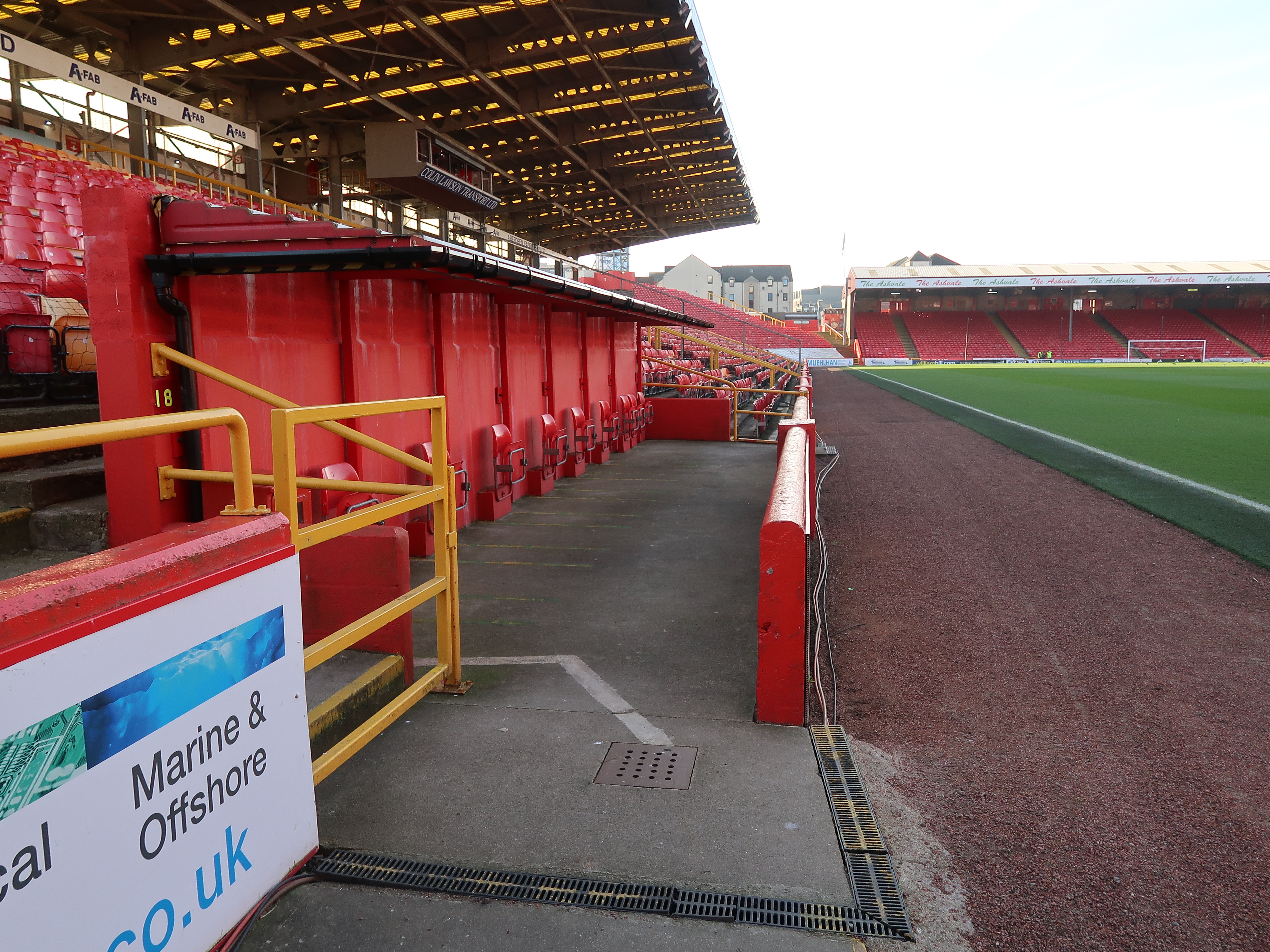
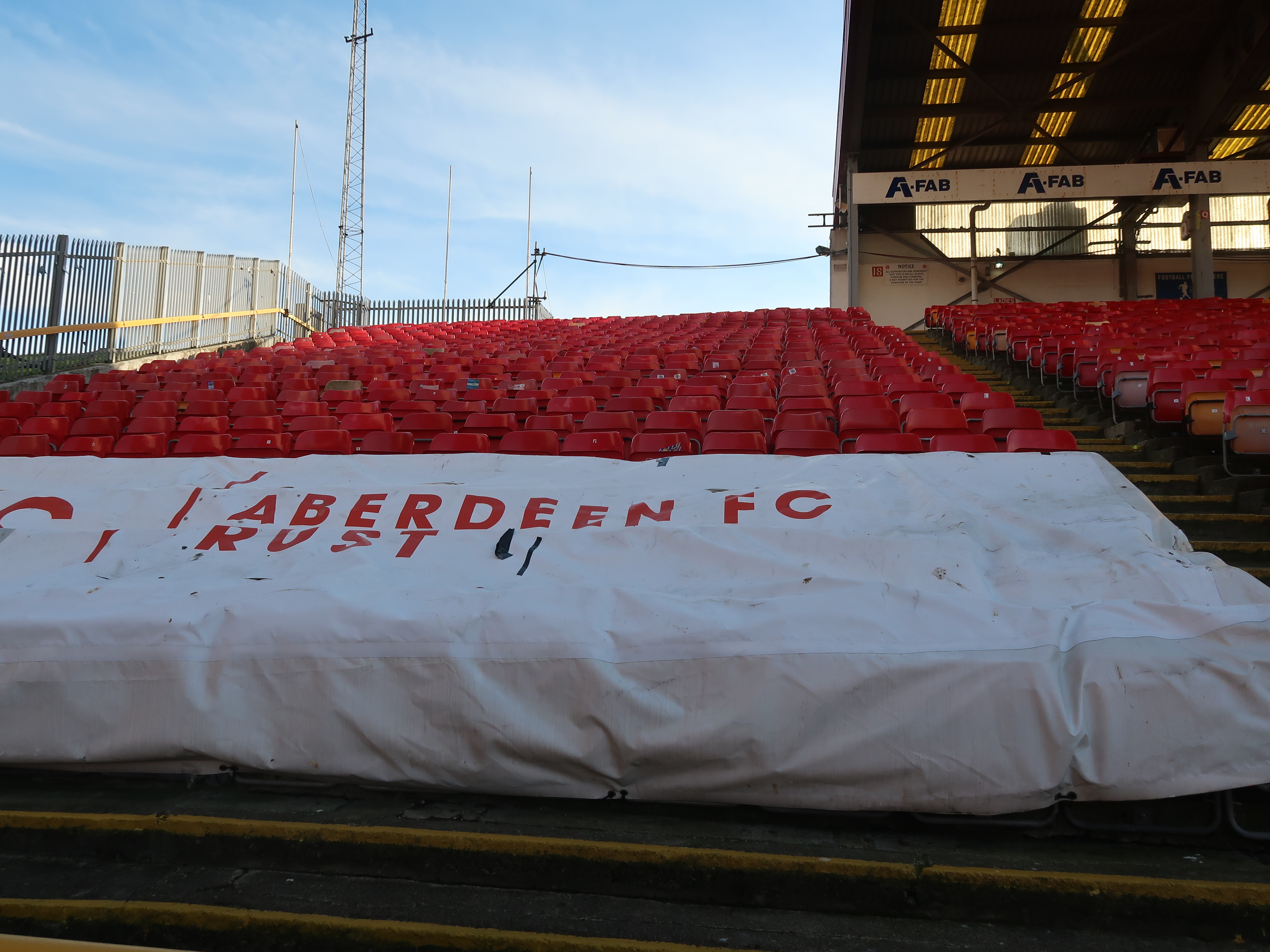
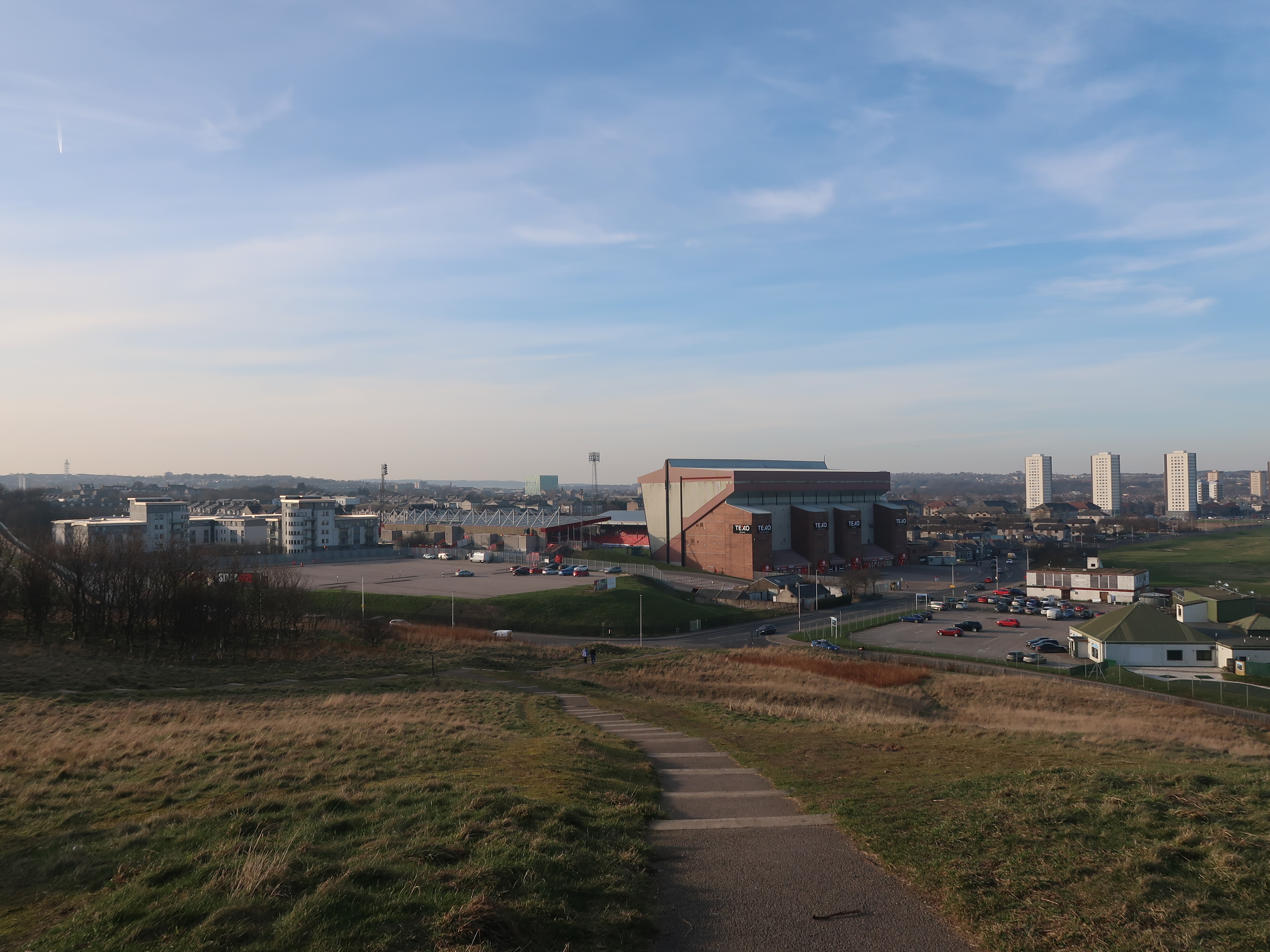


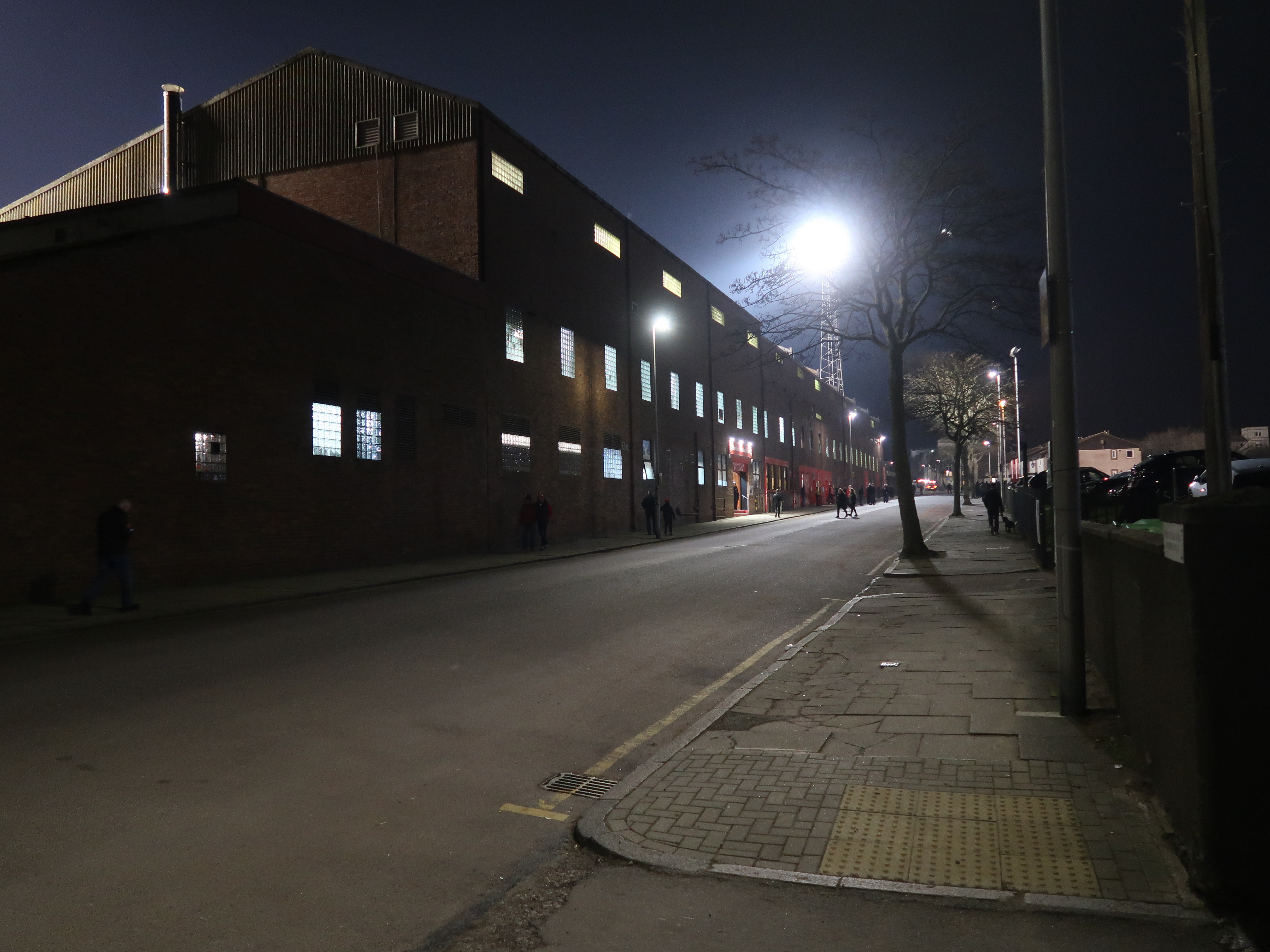
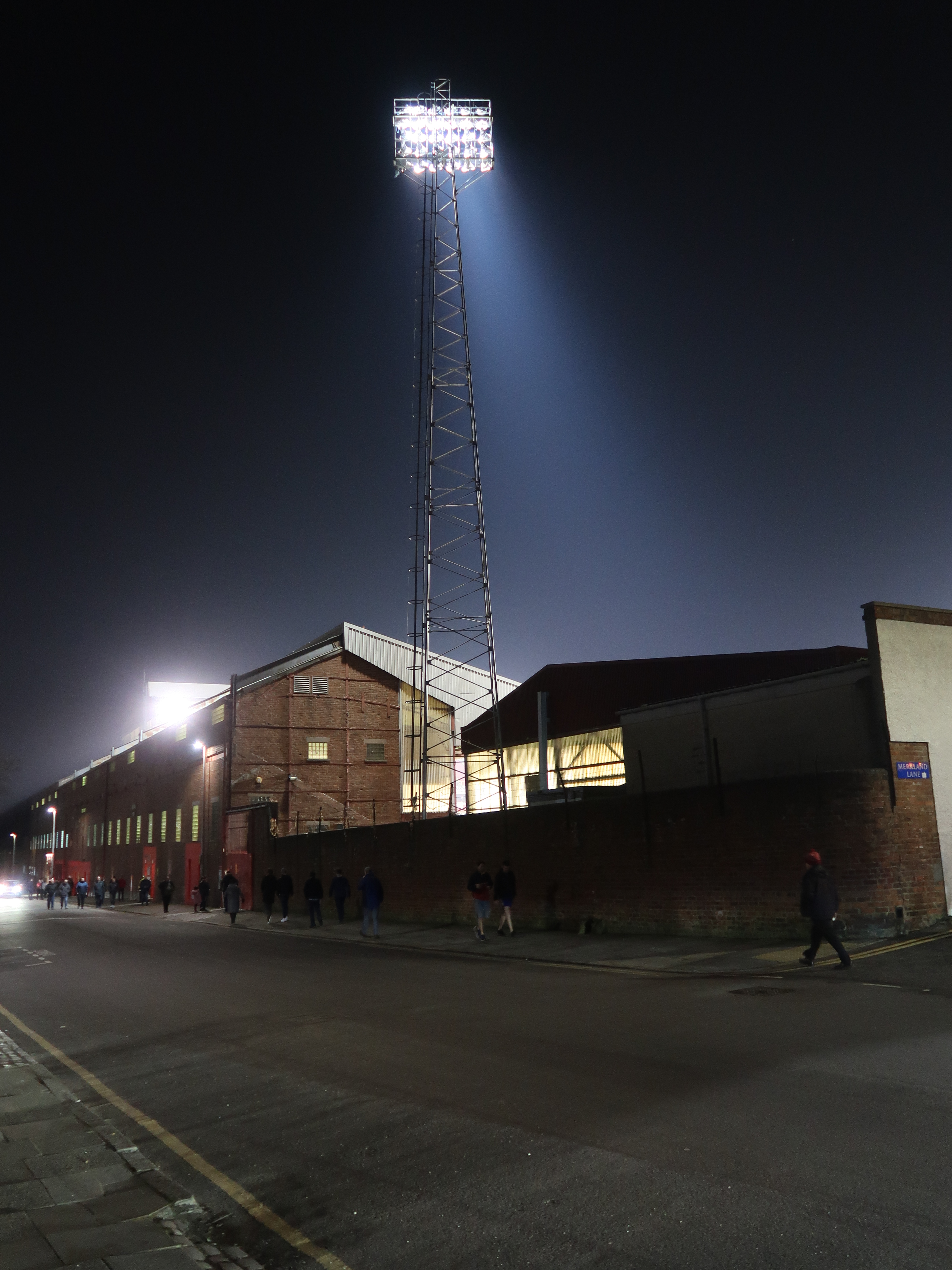
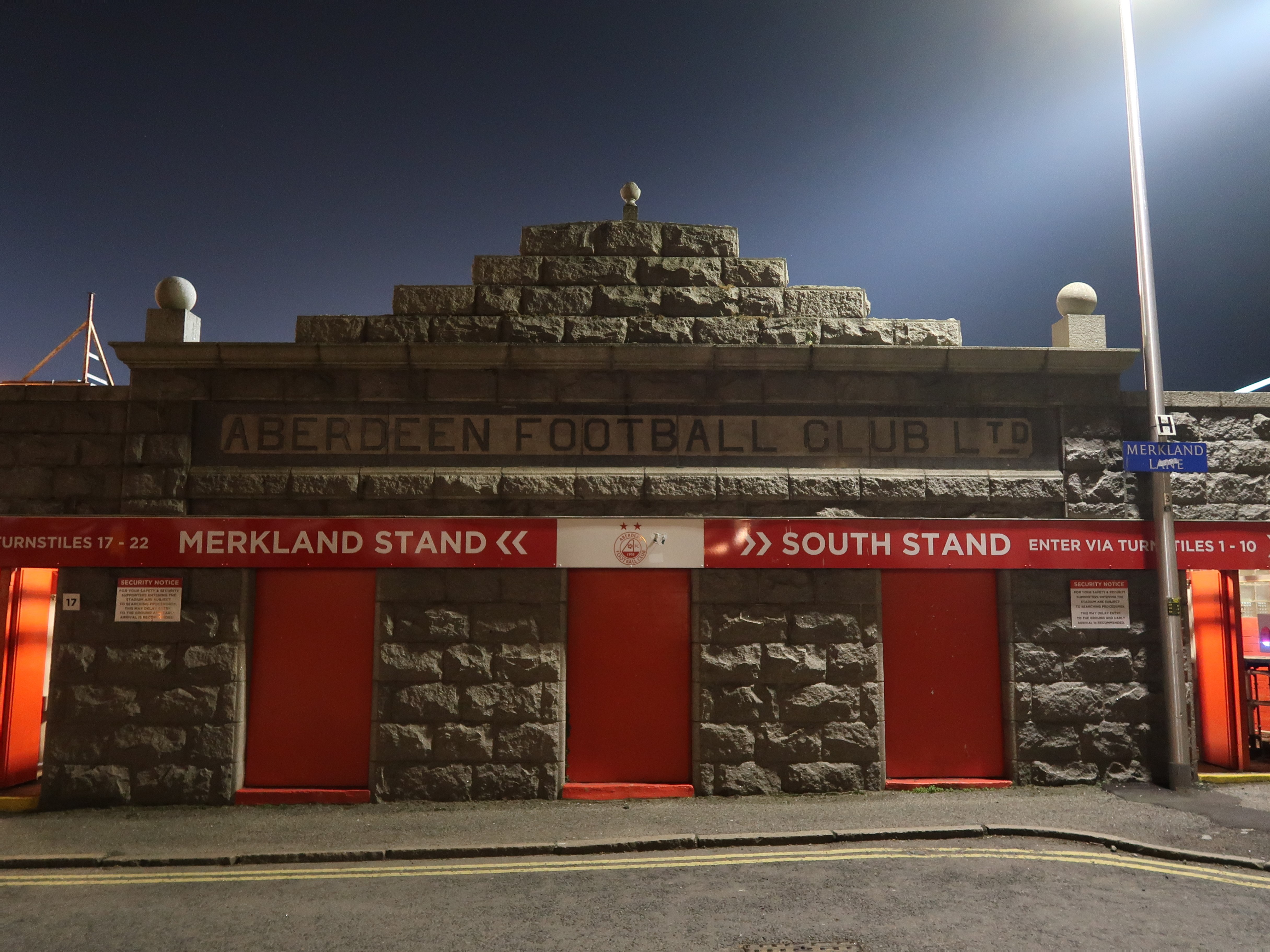
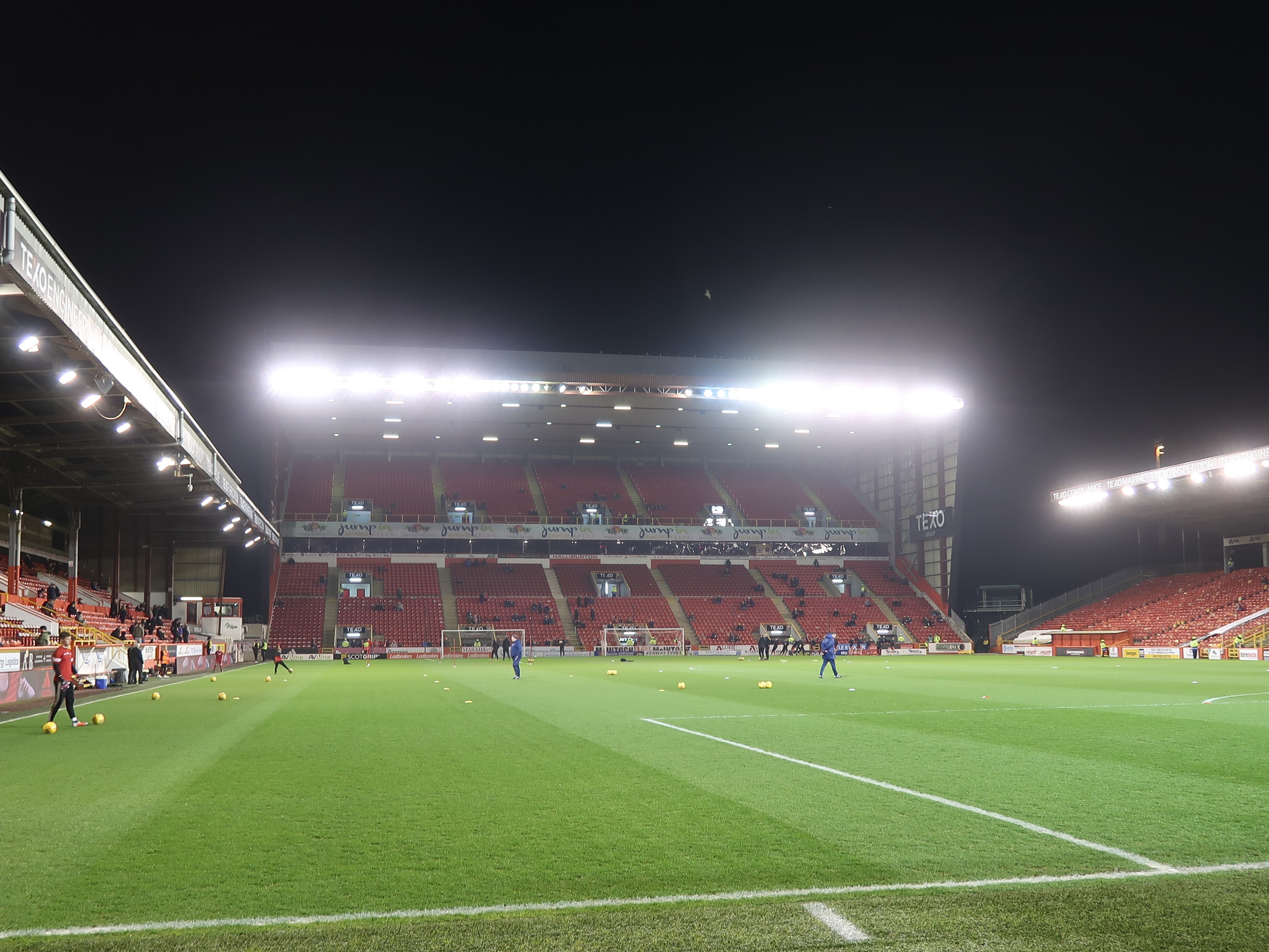
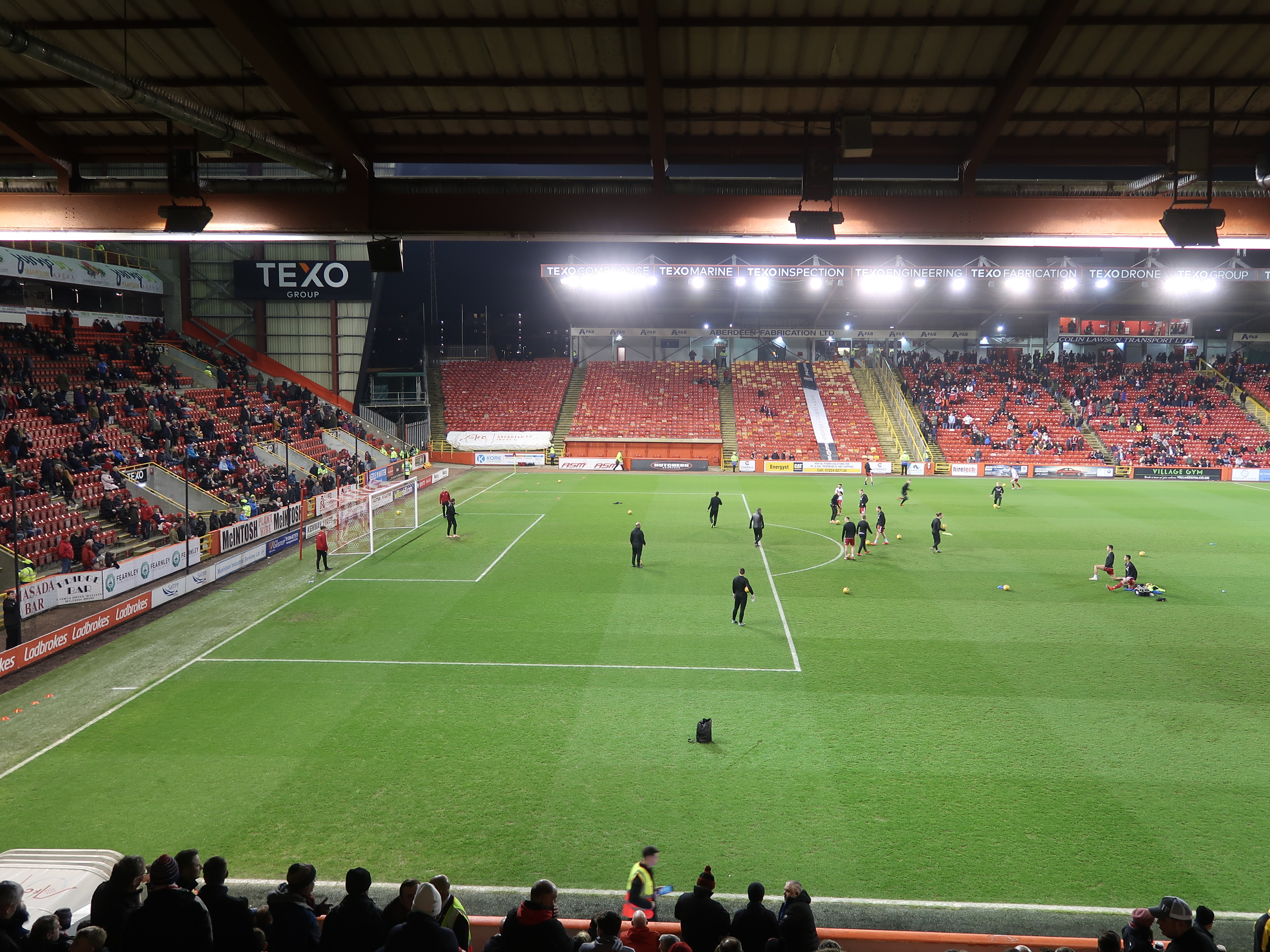
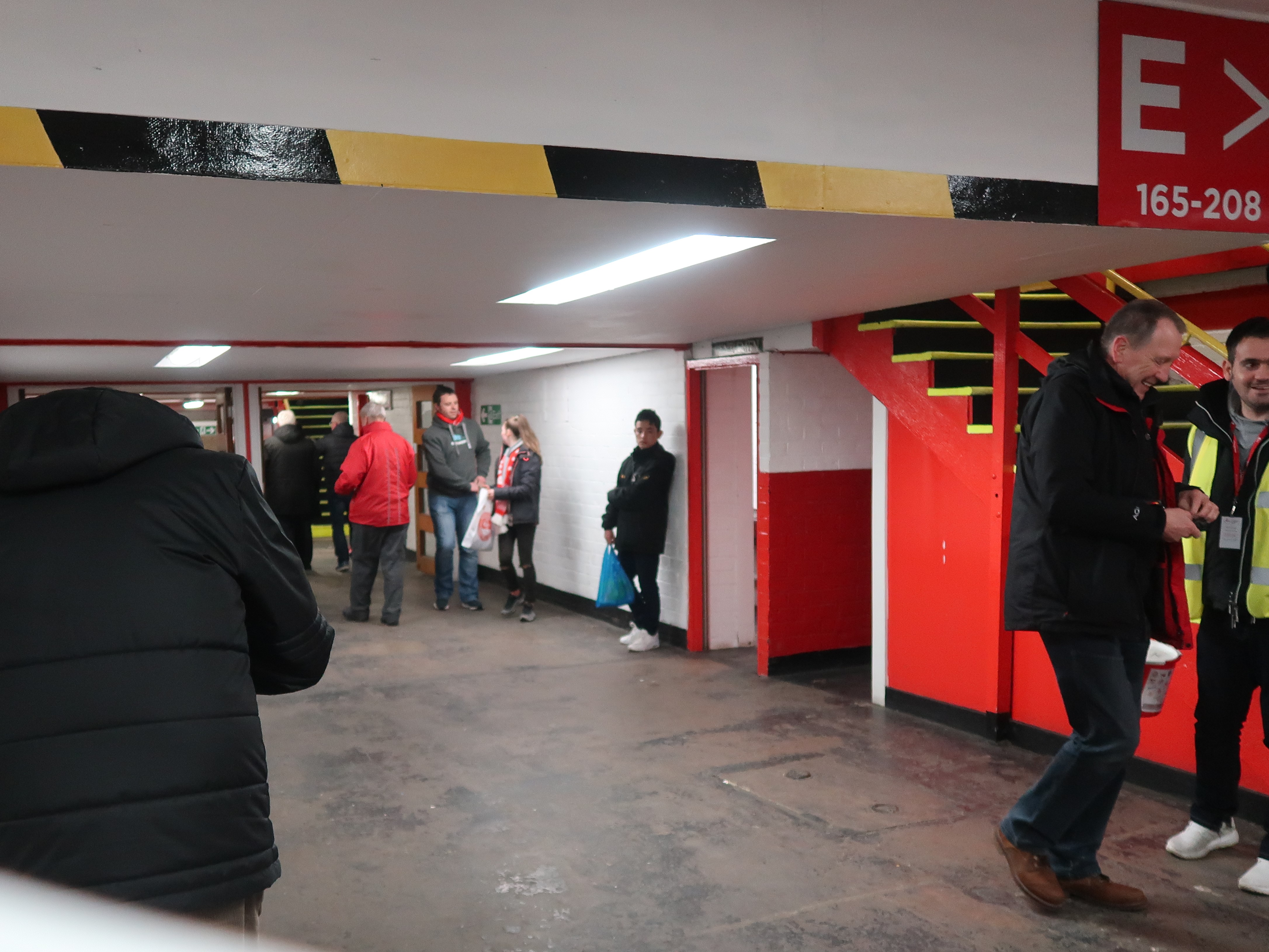
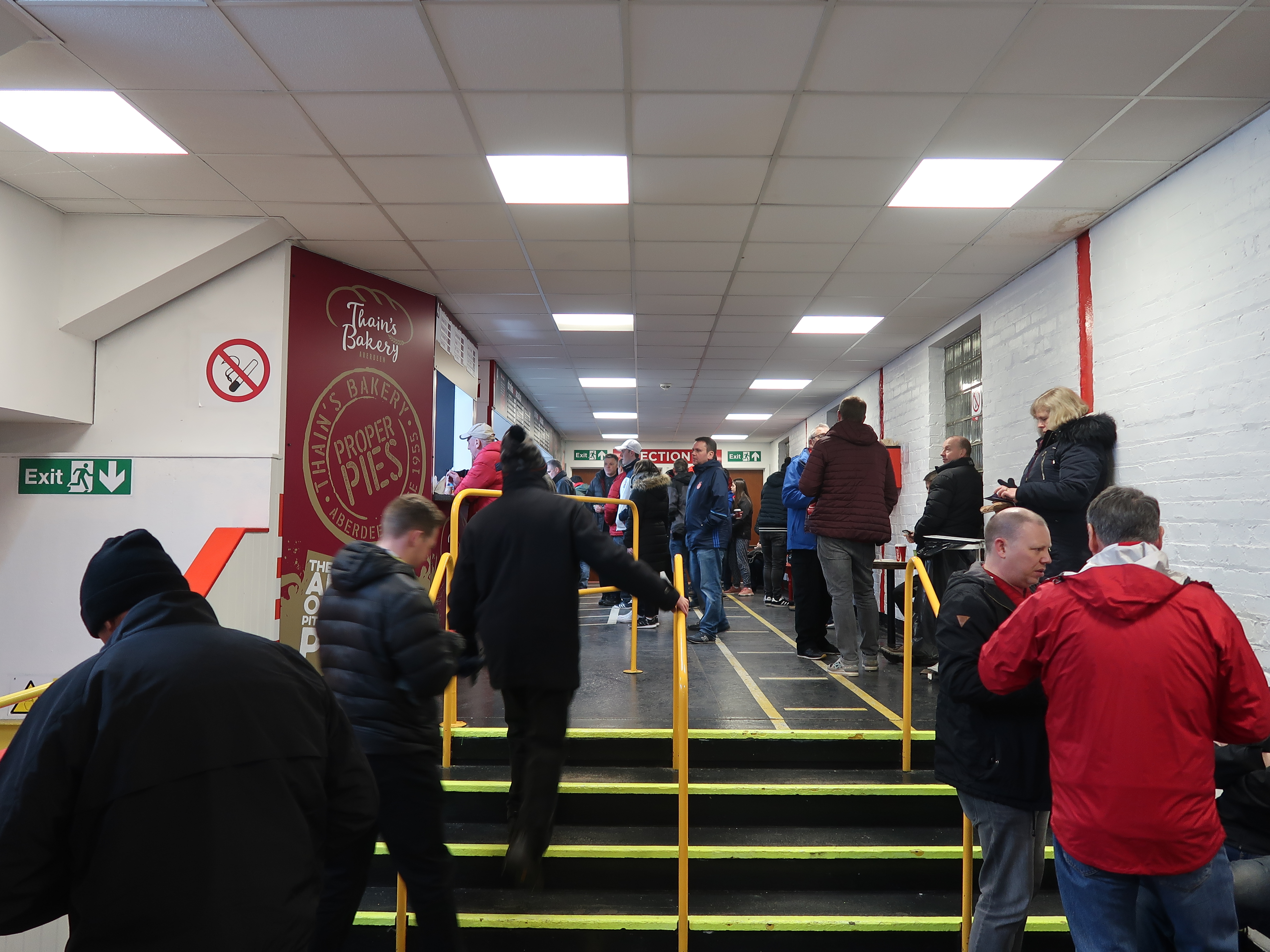
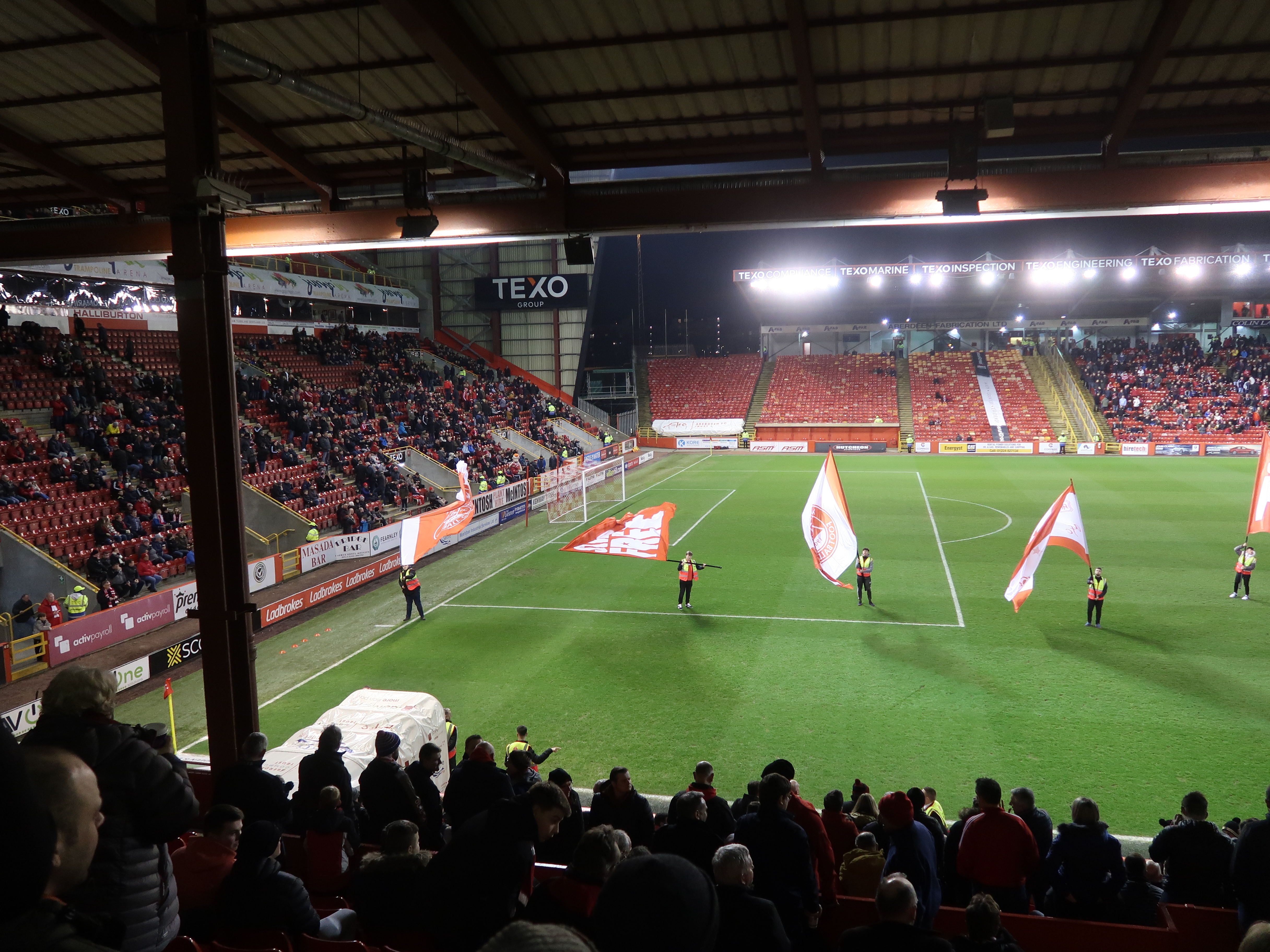
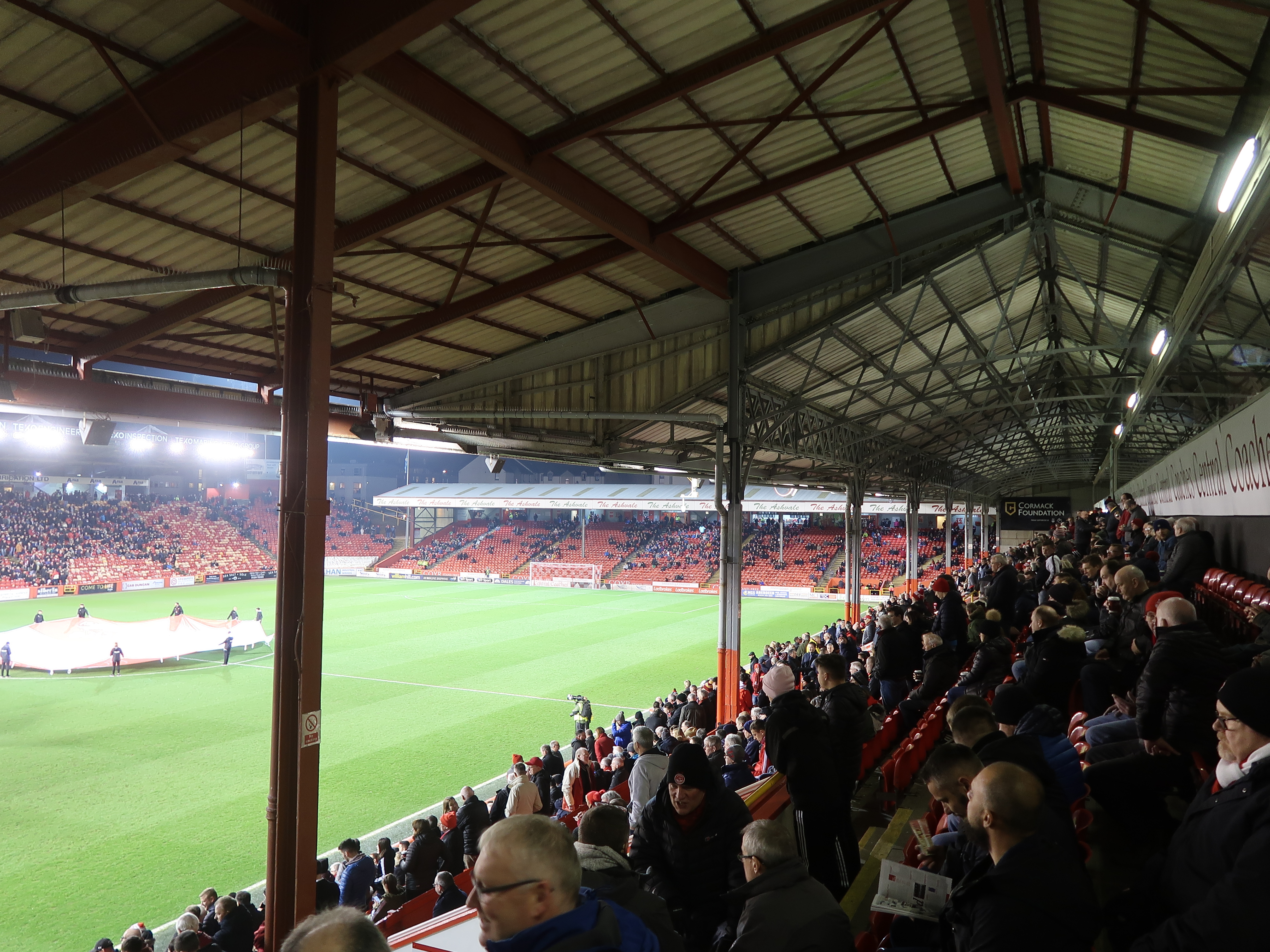

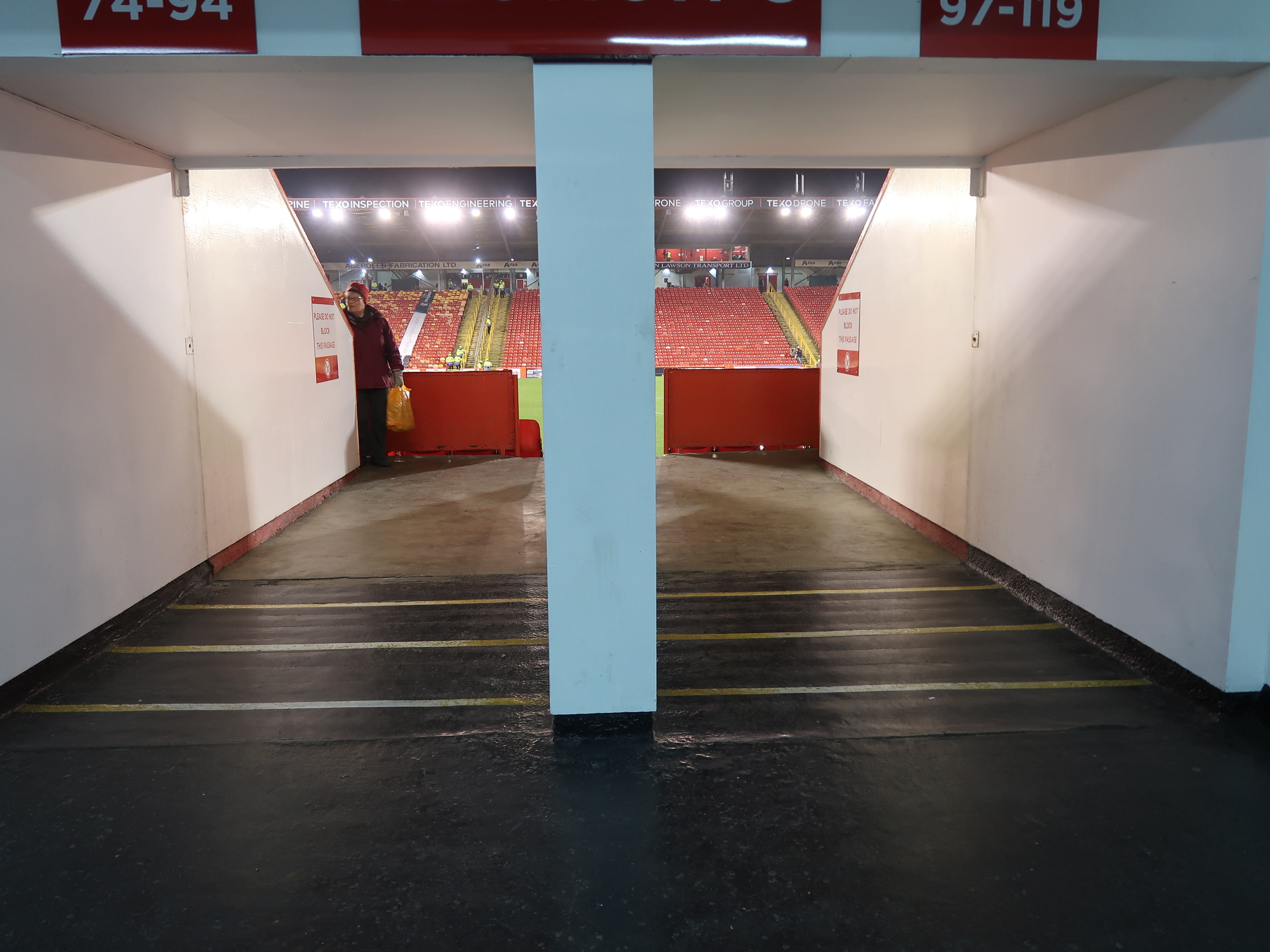
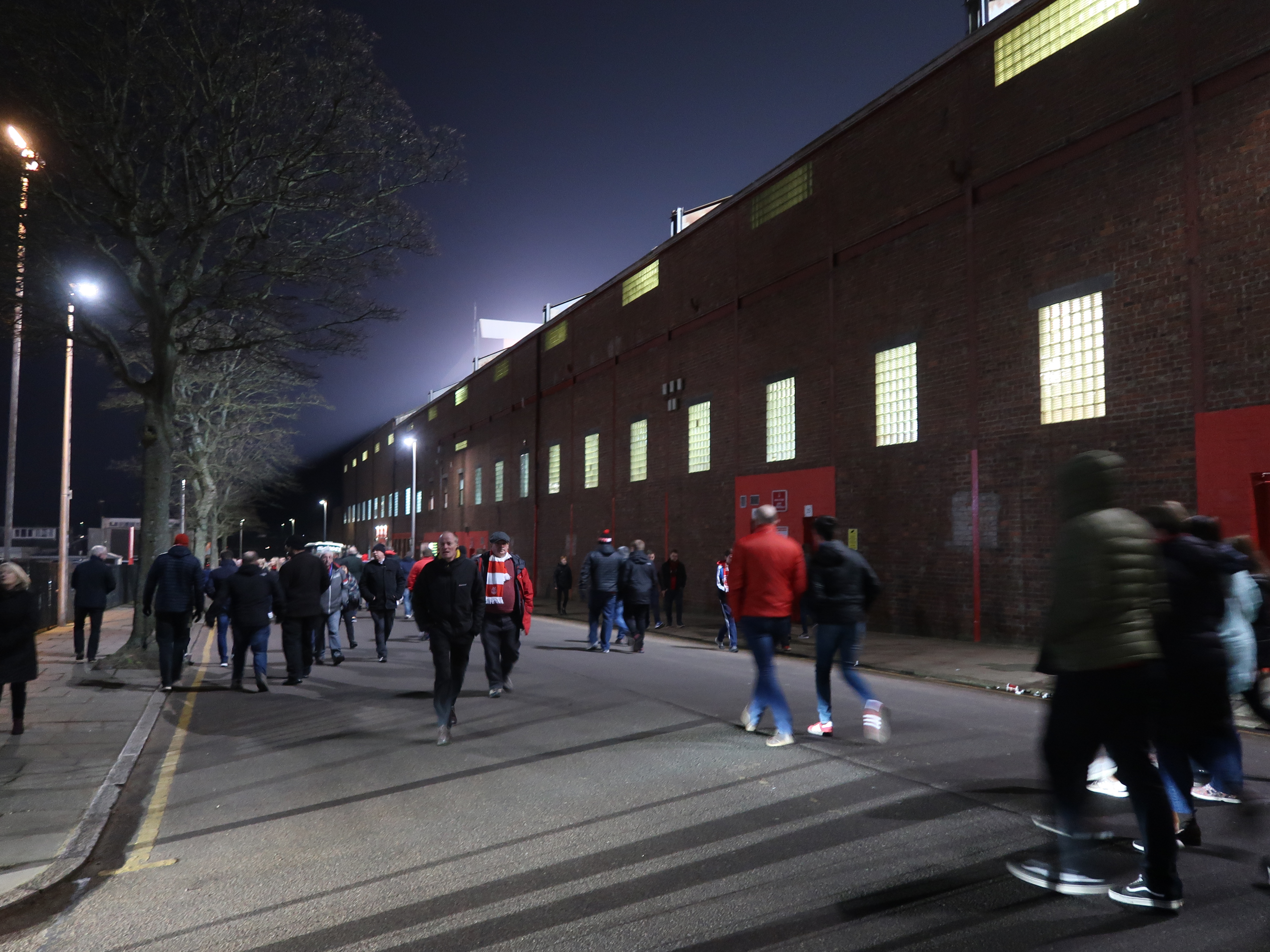
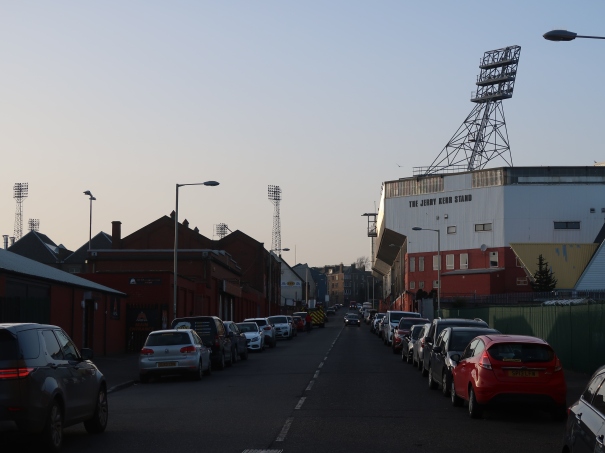
 When I made my list of the top 24 English football grounds back in December, I was asked about the criteria. Well, they are not clear-cut. If I should nail it down to just one word, I would say “character”, something that stands out from the rest. Of course, there are many ways of doing this. Dundee United’s Tannadice Park does so in a number of ways.
When I made my list of the top 24 English football grounds back in December, I was asked about the criteria. Well, they are not clear-cut. If I should nail it down to just one word, I would say “character”, something that stands out from the rest. Of course, there are many ways of doing this. Dundee United’s Tannadice Park does so in a number of ways.